You are using an out of date browser. It may not display this or other websites correctly.
You should upgrade or use an alternative browser.
You should upgrade or use an alternative browser.
Reviews by Moonstar
Filters
Show only:
Loading…
Moonstar
100+ Head-Fier
Pros: Natural, Clean & Dynamic Presentation,
Pairs pretty well with both Sensitive IEM’s & Power Hungry Headphones,
Hardware Features (THX AAA-788+ Amplifier Section, AK4493SEQ, etc.),
Wide variety of Input & Output Options,
Size, Build Quality & RGB Indicator,
Excellent Value for your Money
Pairs pretty well with both Sensitive IEM’s & Power Hungry Headphones,
Hardware Features (THX AAA-788+ Amplifier Section, AK4493SEQ, etc.),
Wide variety of Input & Output Options,
Size, Build Quality & RGB Indicator,
Excellent Value for your Money
Cons: No MQA Decoding,
Wireless Connectivity options (Wi-Fi and/or Bluetooth) would be welcome
Wireless Connectivity options (Wi-Fi and/or Bluetooth) would be welcome
FiiO K7 DAC & Headphone Amplifier Review
Introduction:
The K7 is FiiO’s latest true balanced desktop DAC & Headphone Amplifier that comes with some interesting specs such like a Dual AK4493SEQ DAC Chip setup, 2x THX AAA 788+ amplifiers, XMOS USB receiver and NJU72315+OP Volume chips. Moreover, the device features USB, Optical, Coaxial, RCA inputs and both 6.35mm Single-Ended + 4.4mm Balanced analog output interfaces.
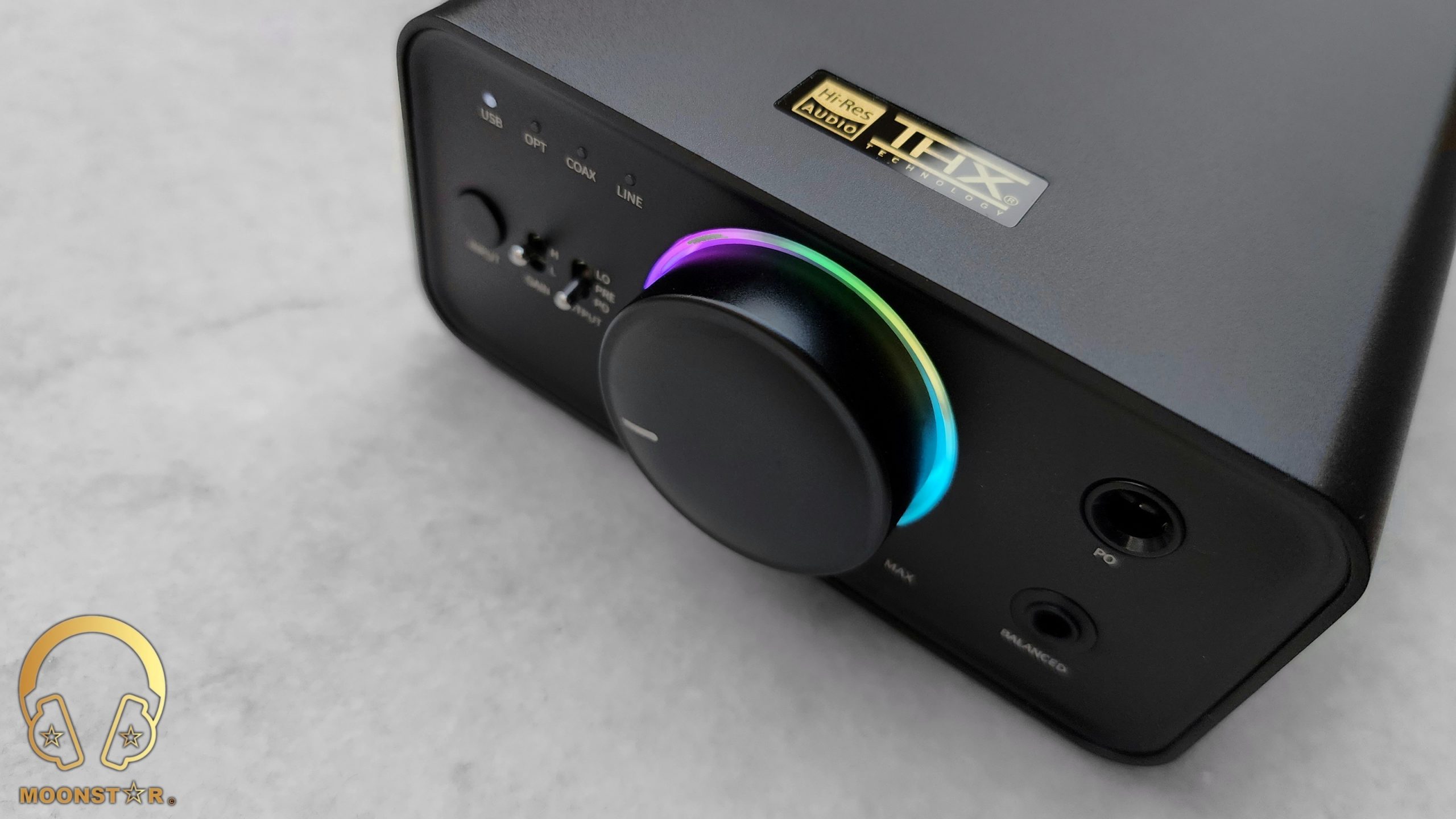
Disclaimer:
I would like to thank FiiO for providing me the K7 DAC & Headphone Amplifier as review sample. I am not affiliated with FiiO beyond this review and these words reflect my true and unaltered, opinions about the product.
Price & Availability:
The FiiO K7 is a quite reasonable priced Headphone DAC/Amplifier that is actually available for 199.99 US$. More information’s can be found under the link below;
Package & Accessories:
The FiiO K7 came inside a square shaped black box that was wrapped with a cardboard sleeve that has a fancy design that sport the illustration and some product related brandings with an iridescent finish on its surface.

The box of the K7 contains the following items:
- 1 x FiiO K7 Desktop Headphone DAC/Amplifier
- 1 x USB-A to USB-B cable
- 1 x Power Cable
- 1 x Power Adapter
- 1 x User Manual & Warranty card
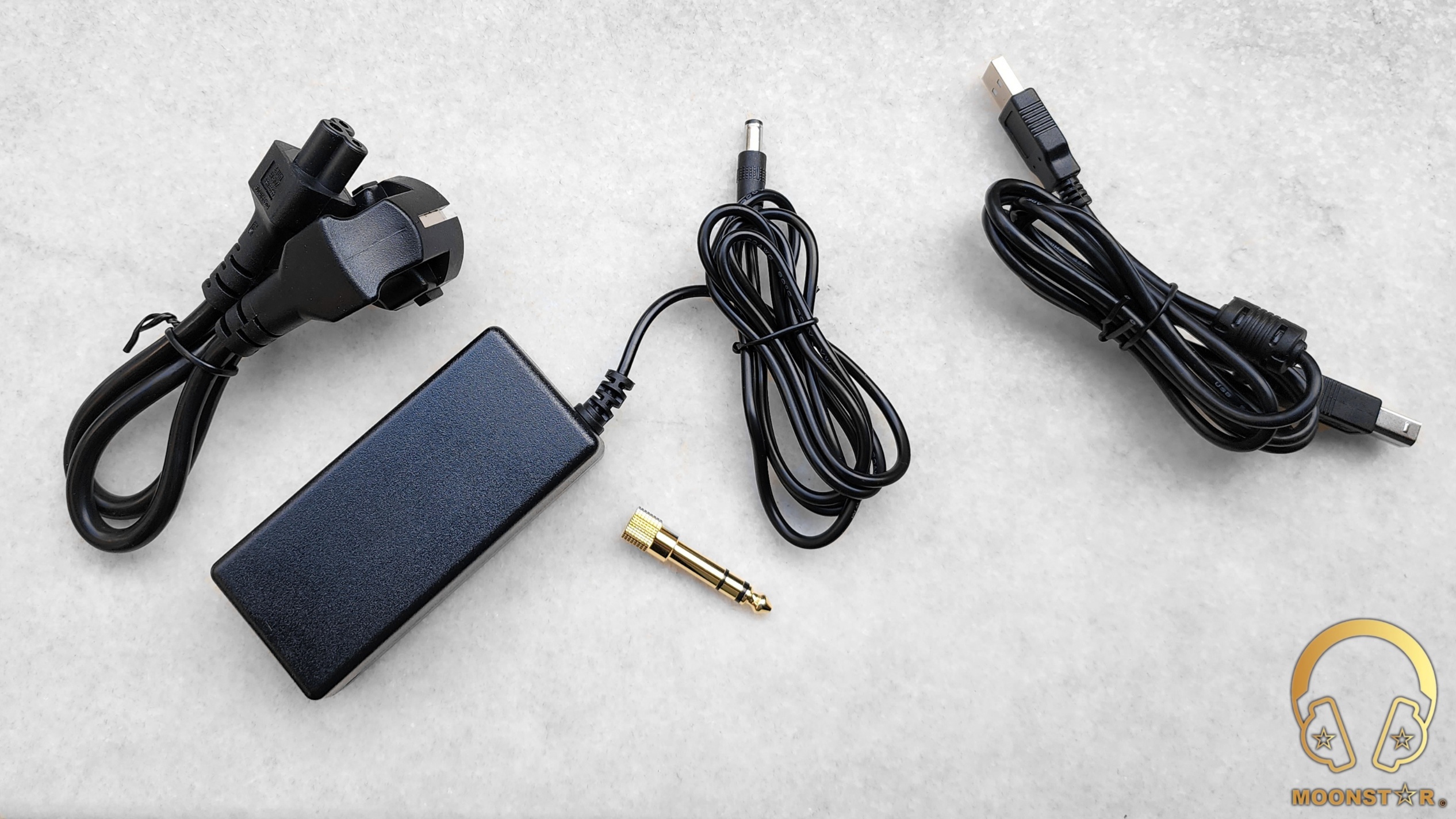
Design & Build Quality:
The FiiO K7 is the company’s latest true balanced desktop type DAC & Headphone Amplifier that features a pretty robust CNC machined Aluminum body with a black finish. The K7 is equipped with multiple input, output and control interfaces that are located on the front and rear side of the device. The device has dimensions of about 120 x 168 x 55mm and weights approx 610grams.
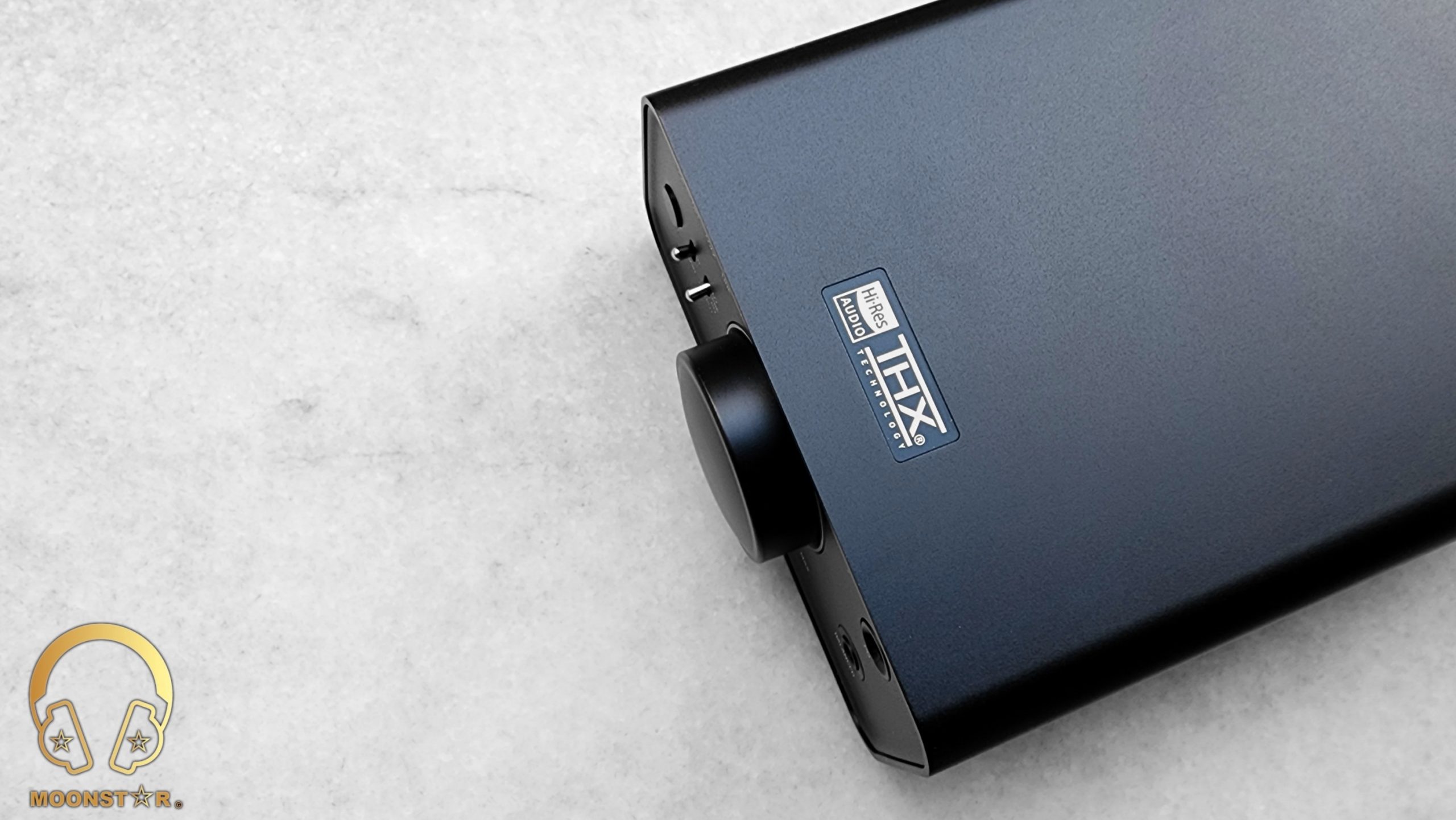
On the top of the device are the FiiO brand logo and a label with the Hi-Res Audio & THX Technology branding.
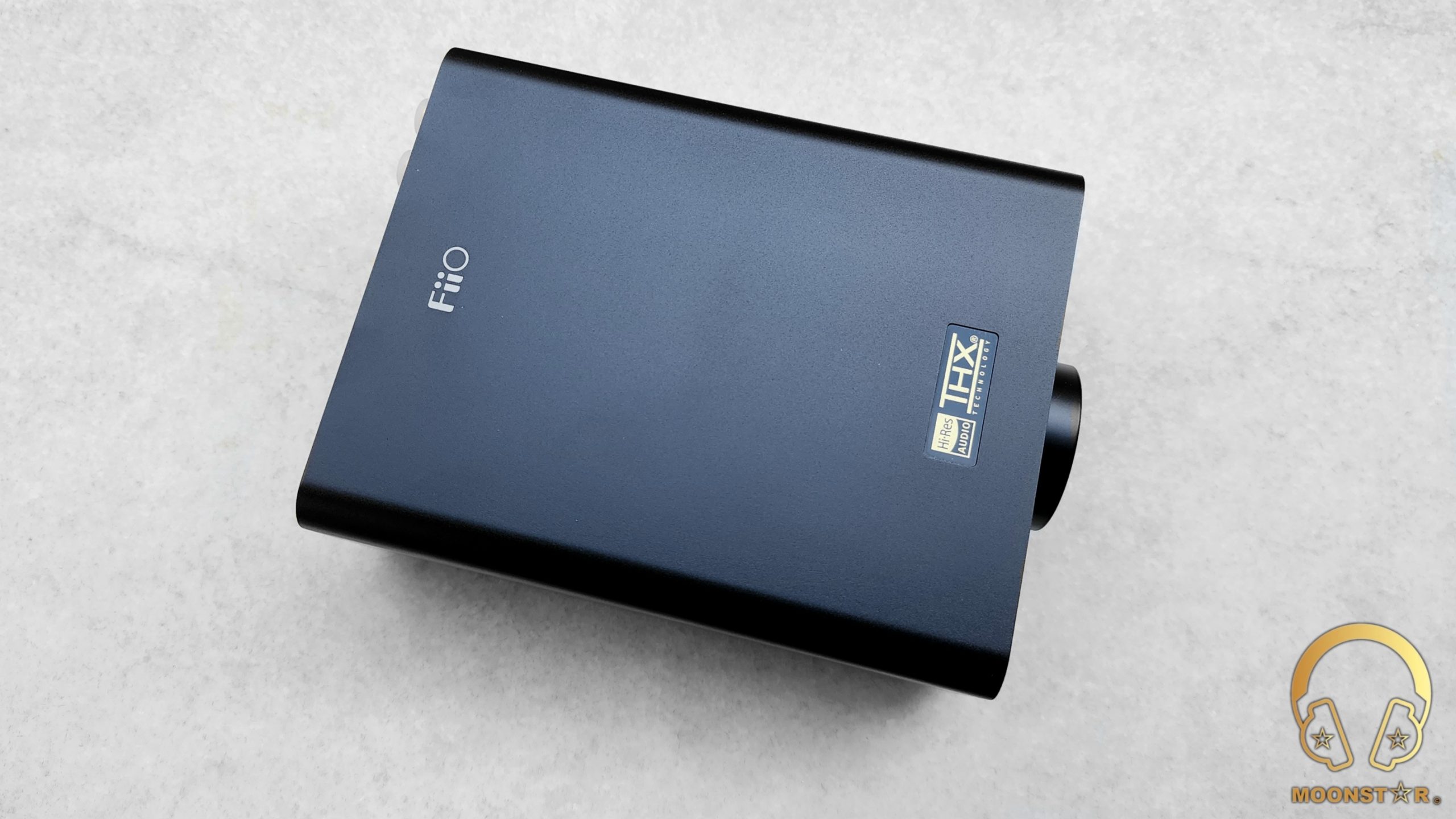
The front panel of the K7 is equipped with the analog outputs and multiple control tools such like buttons, potentiometers and switches.
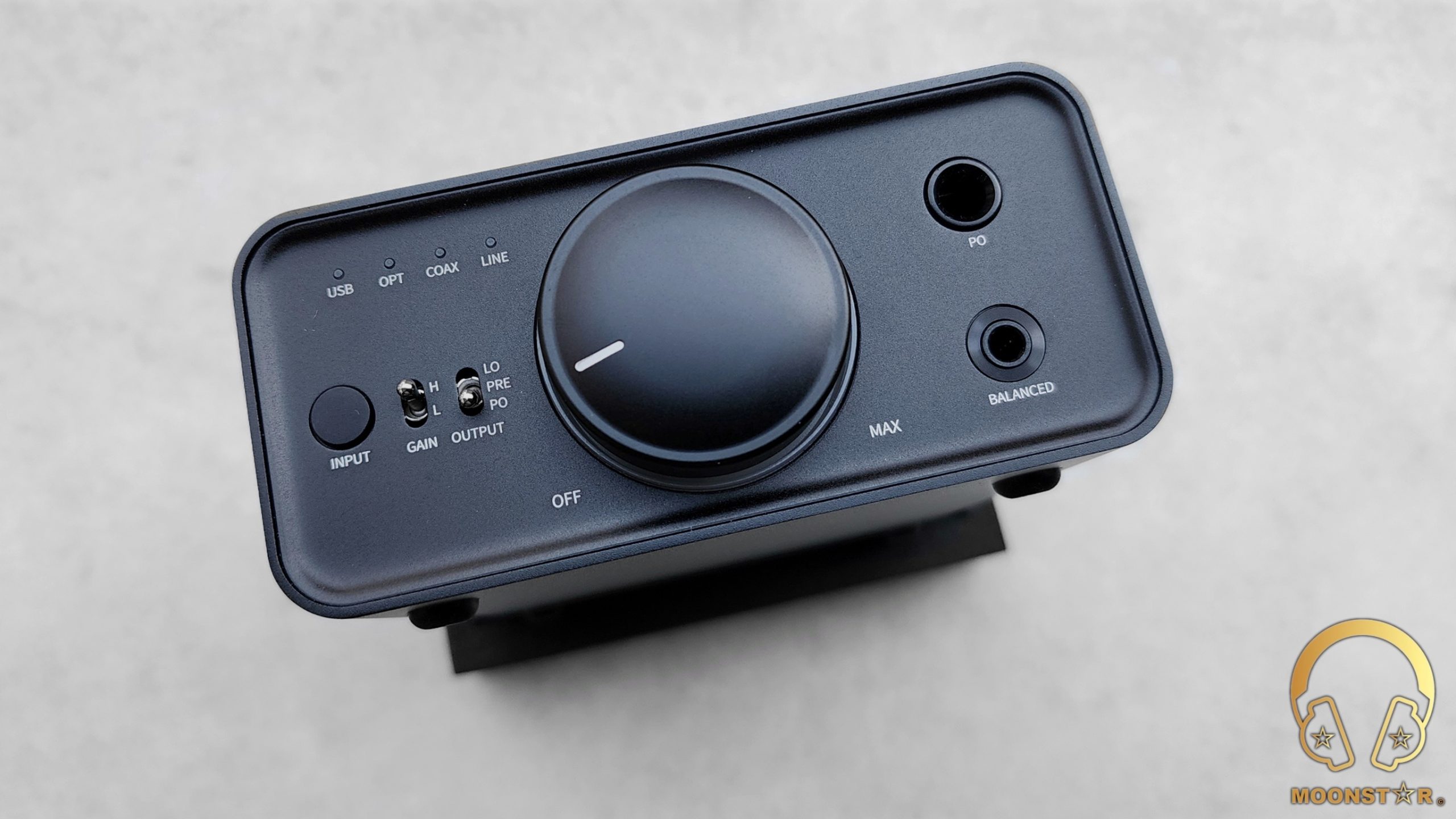
The right side of the front panel features the 6.35mm Single Ended and 4.4mm Balanced headphone outputs.
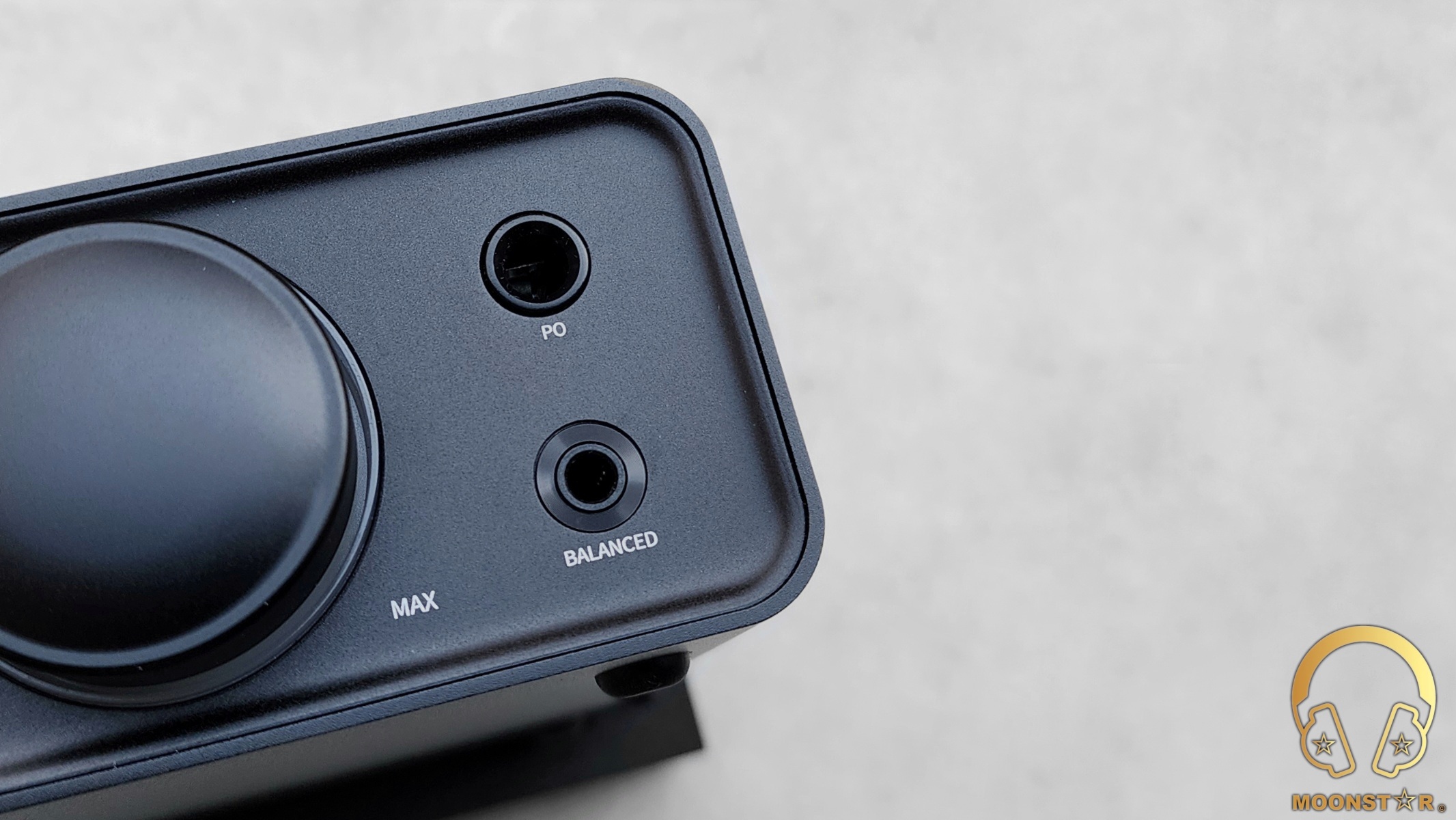
The center of the front panel is equipped with a volume wheel/potentiometer that sports a fancy looking RGB status indicator in form a ring that glows up in various colors depending of the codec and operating status of the device.
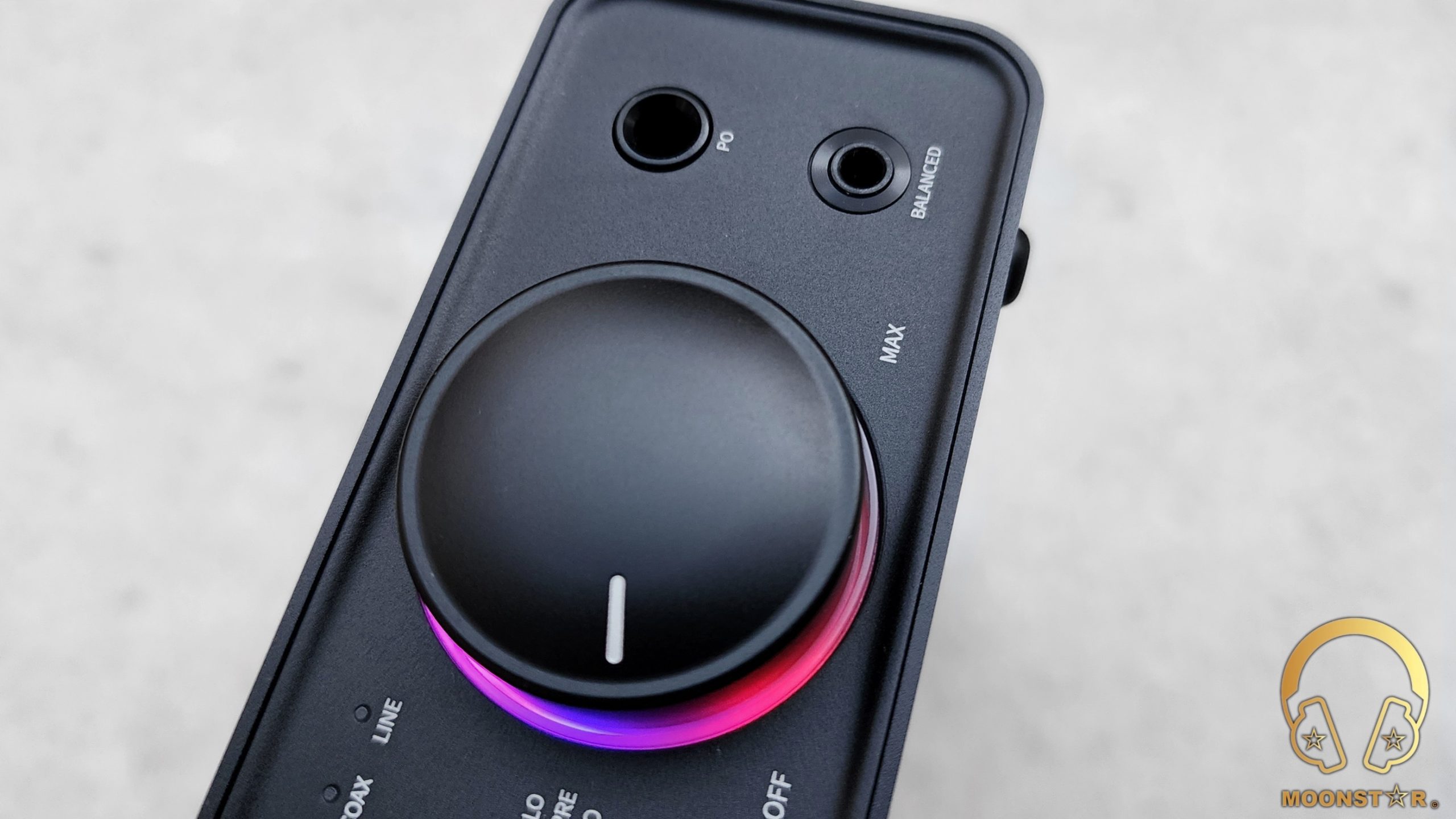
The left side of the front panel sports an input button and 4 LED indicators that give you information about the actual selected source. Moreover, here are two witches one for High/Low gain and one to select the output.
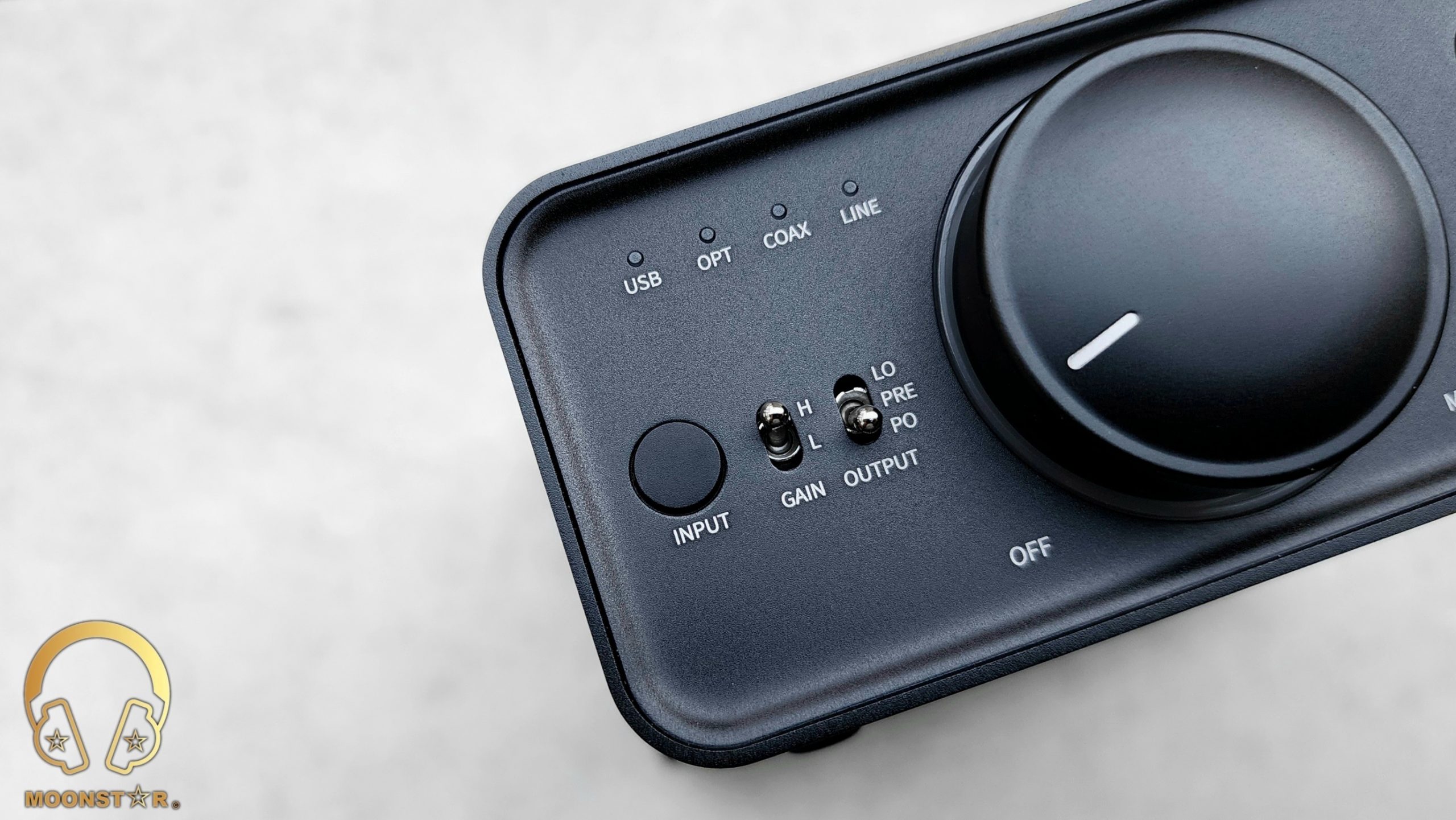
The rear panel of the K7 features a Single Ended Line-In, USB Type-B, Optical (Toslink), Coaxial Inputs and Single-Ended output interface. Here is also the power input of the device.
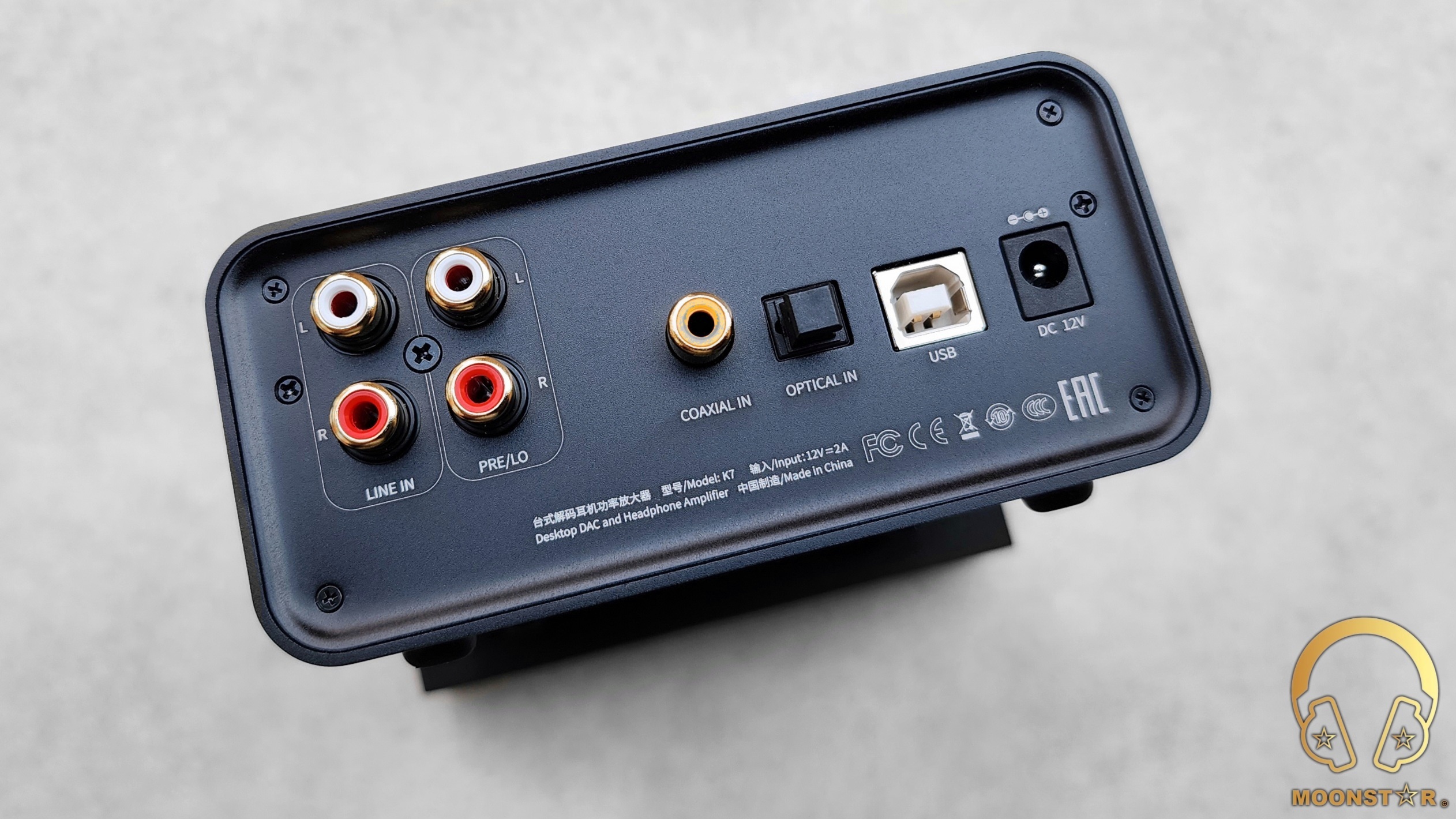
The overall build quality of the K7 meets my expectations from a devices at this price level same like other FiiO products.
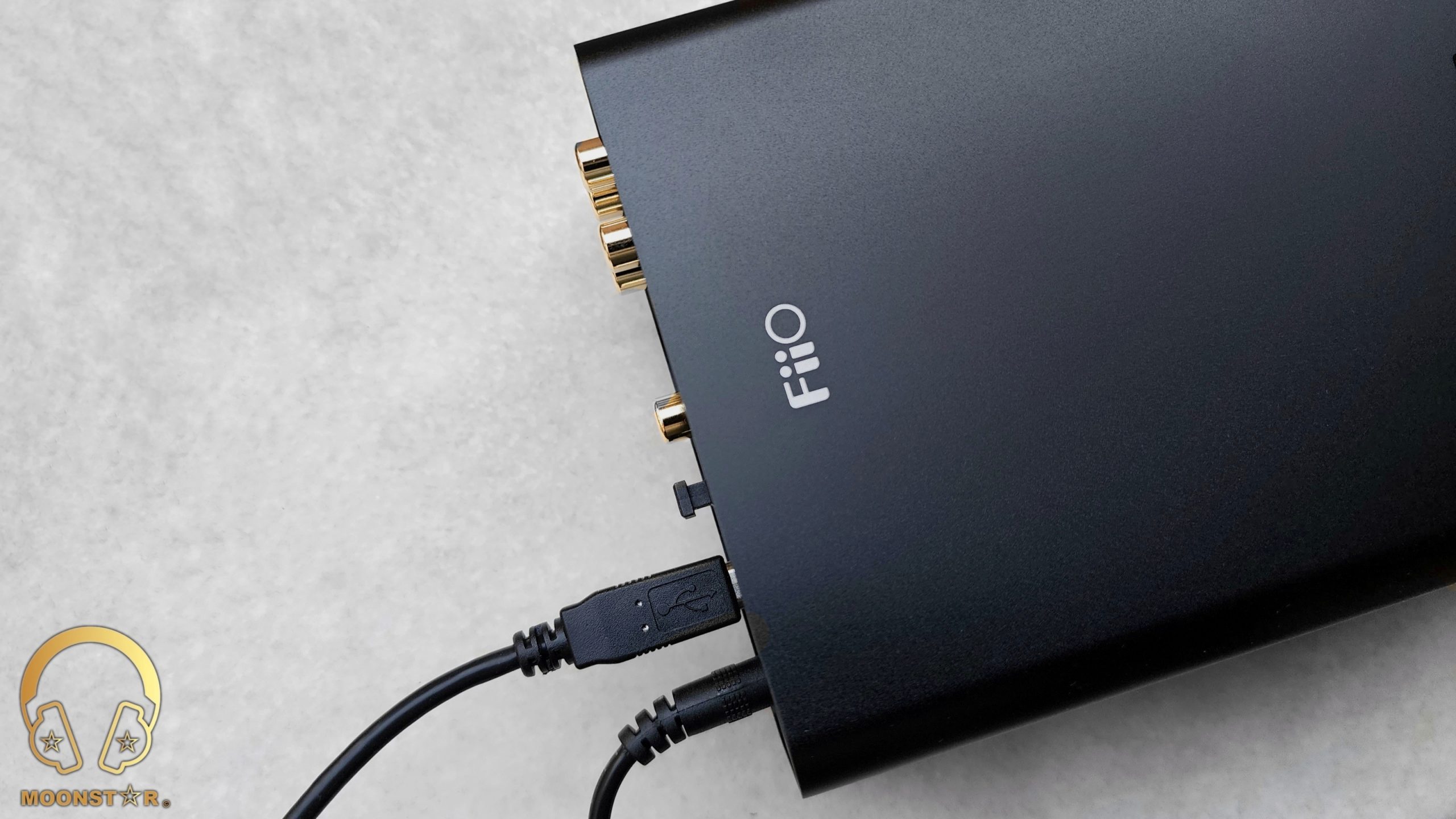
Specifications:
- Model : K7
- DAC : AK4493SEQ x2
- Decoder : XMOS XUF 208
- Amplifier : Dual THX AAA 788+
- Volume Chips : NJU72315+OP
- Outputs : 6.35mm Single-Ended + 4.4mm Balanced
- Inputs : USB, Optical, Coaxial, RCA
- 6.35mm SE Output : up to 1220mW @ 32Ω / 140mW @ 300Ω
- 4.4mm BAL Output : up to 2000mW @ 32Ω / 560mW @ 300Ω
- SNR : >120dB (A-weighted, UAC)
- Noise floor : PO<4.1uV
- THD+N : <0.0003% (1 kHz/32Ω/dbA)
- Output impedance : <1Ω
- Dimensions : 120 x 168 x 55mm
- Weight : 610g
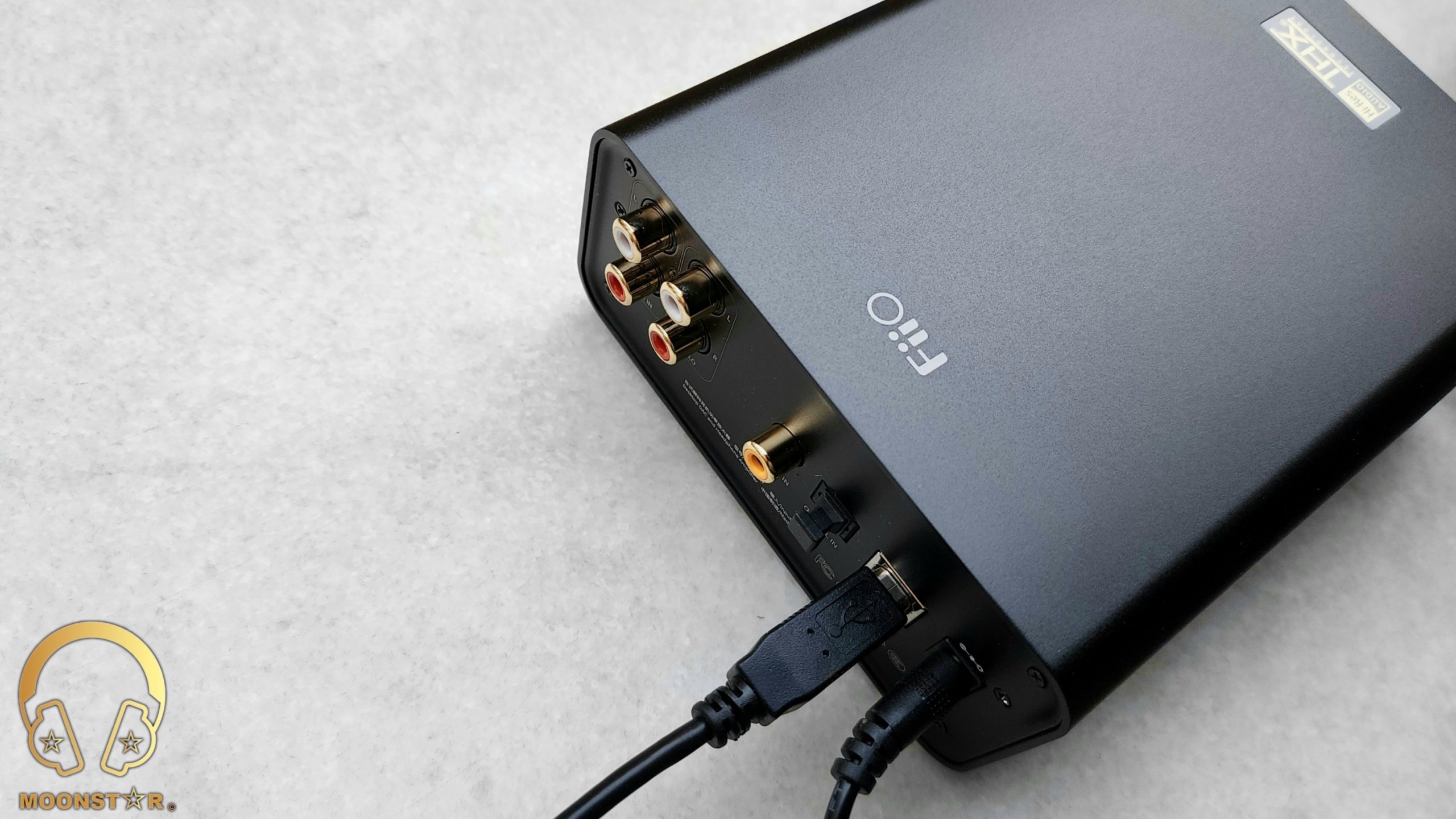
Hardware Features:
The FiiO K7 is a desktop DAC & Headphone Amplifier that features some interesting hardware specs such like a Dual AK4493SEQ DAC Chip setup, 2x THX AAA 788+ amplifiers, XMOS USB receiver and NJU72315+OP Volume chips.
AK4493SEQ DAC Chip:
The FiiO K7 is equipped with 2x AK4493SEQ DAC Chips of the company Ashai Kasei for its true balanced architecture. The AK4493SEQ is a high-performance 32-Bit Digital to Analog converter designed for audiophile-grade applications such as Digital Music players, Portable and Desktop type DAC’s and DAC/Amplifiers.
The AK4493SEQ inside the K7 offers a SNR (Signal to Noise Ratio) value of 120dB (A-weighted, UAC) and THD+N <0.0003% (1 kHz/32Ω/dbA).
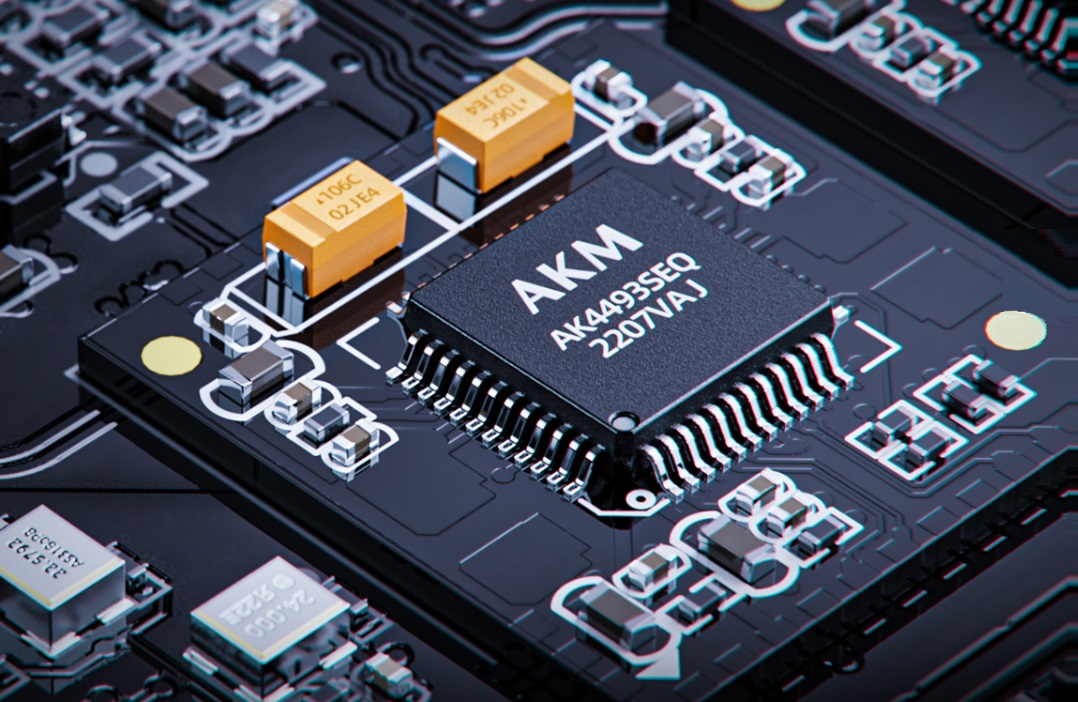
Analog Outputs & Amplification (2x THX AAA 788+):
The FiiO K7 is a quite powerful amplifier with a true balanced architecture, which means that each channel is driven independently. The K7 is equipped with both a 6.35mm Single-Ended and 4.4mm Balanced 3.5mm Single Ended (TRS) and 4.4mm Balanced (TRRRS) balanced outputs.
Another remarkable feature of the K7 is its THX AAA™ “Achromatic Audio Amplifier” design that was used to create a clean and powerful analog output. The K7 is able to create up to 1220mW per channel @ 32ohm over the 6.35mm Single-Ended output, while the 4.4mm Balanced out is even more powerful with up to 2000mW @ 32Ω and 560mW @ 300Ω, all with just 1% distortion, which is quite impressive.
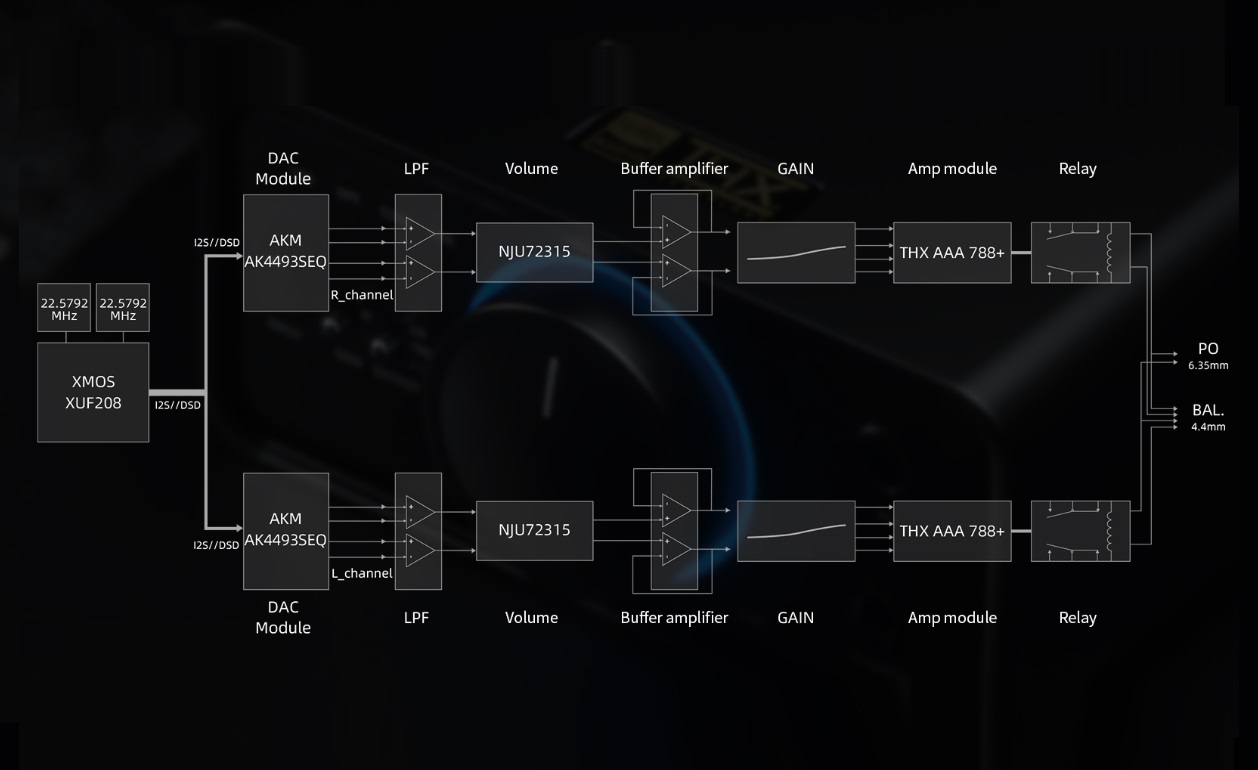
Here are some detailed Audio Parameters:
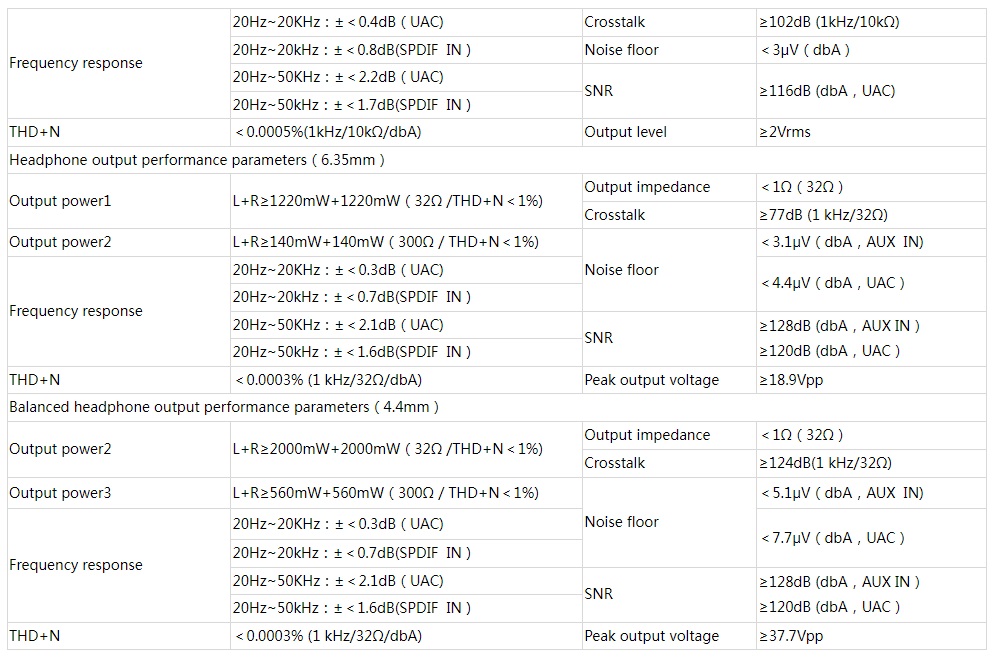
XMOS XU208 for Native DSD:
The FiiO New K7 is equipped with the XMOS XUF208 decoder chip that uses dual clock management in order to handle various music formats. XUF208 USB chip handles up to 384kHz-32bit PCM and Native DSD decoding up to DSD256 in USB DAC Mode.
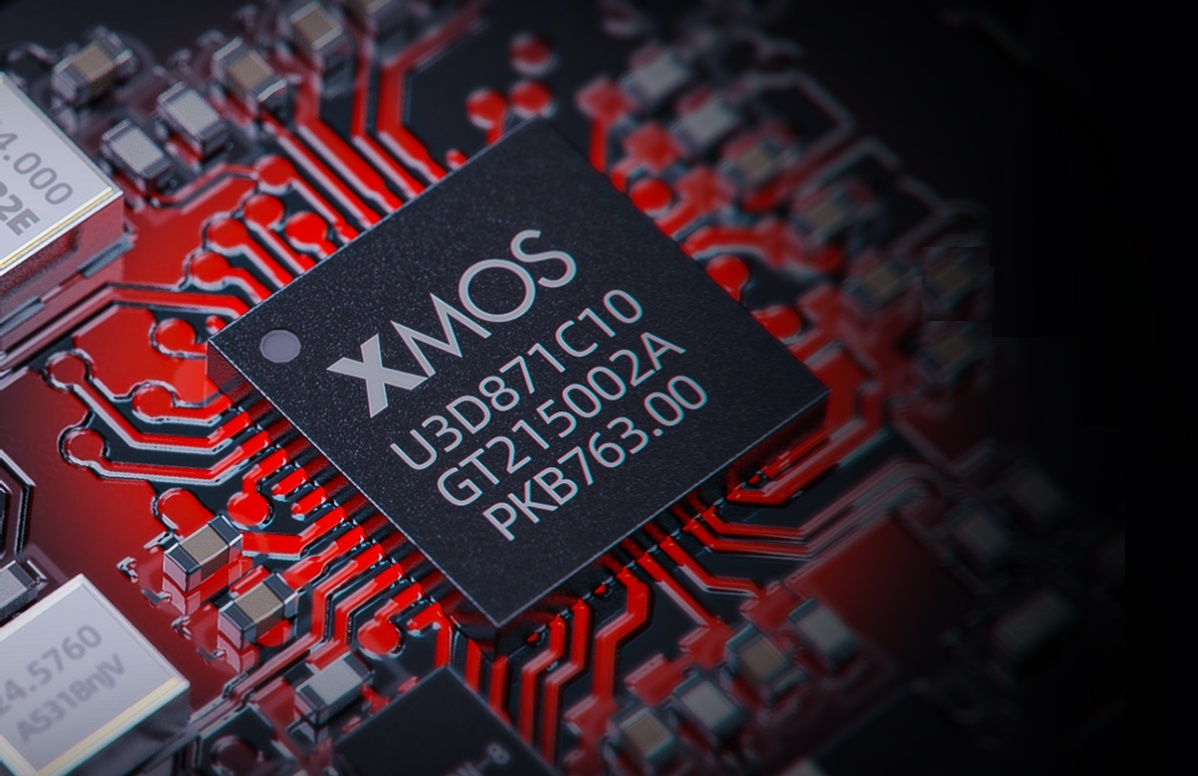
The RGB LED Indicator that surrounds the Potentiometer shows up the following sampling rates:
- Blue : 44.1KHz/48KHz
- Yellow :88.2/96/176.4/192/352.8/384KHz
- Green :DSD64/128/256

Low-Noise Power Supply:
The K7 features a power design consisting of multiple independent stages, with a voltage of each stage being regulated by low-noise LDO’s. Feeding this power design is an external 12V switching power supply.
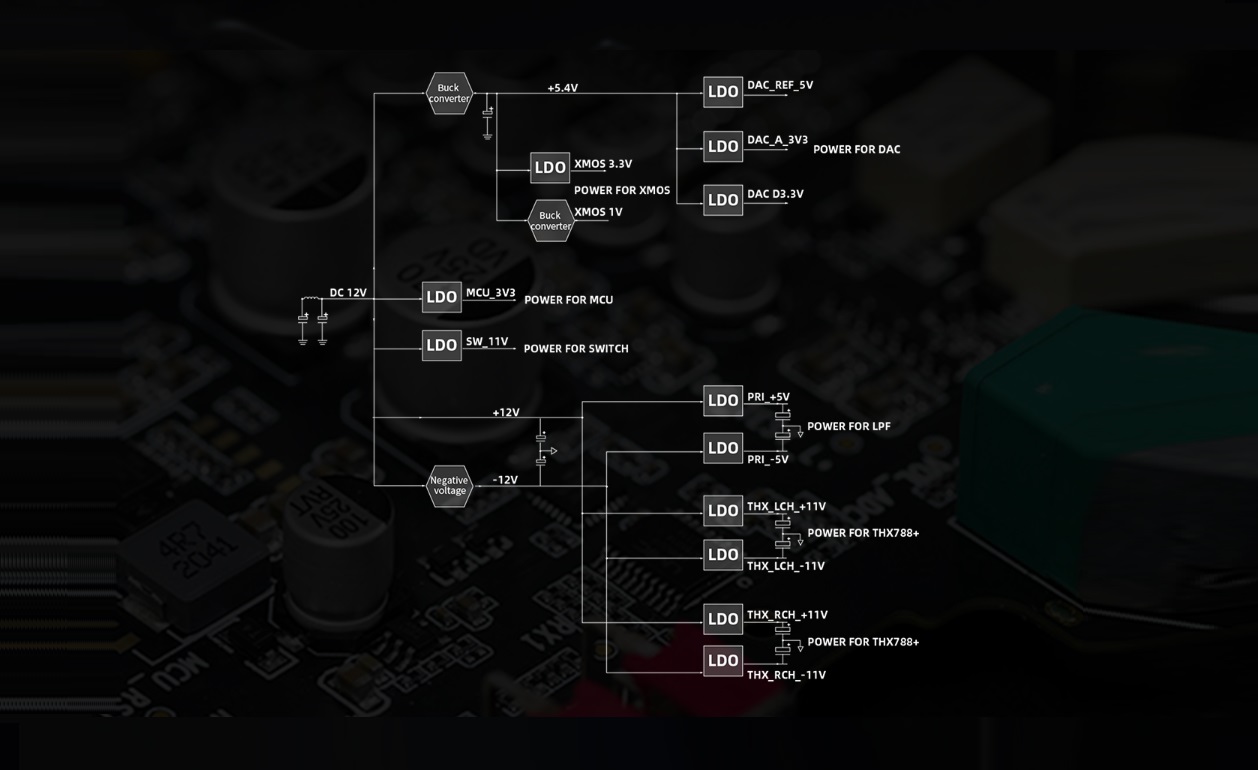
Equipment’s used for this review:
- DAC/Amplifier’s : FiiO K7
- Sources : ASUS TUF FX504GD
- IEM’s : FiiO FH9, FiiO FH7S, Meze Audio RAI Penta
- Headphones : HiFiMAN Sundara Closed-Back, HiFiMAN Edition XS
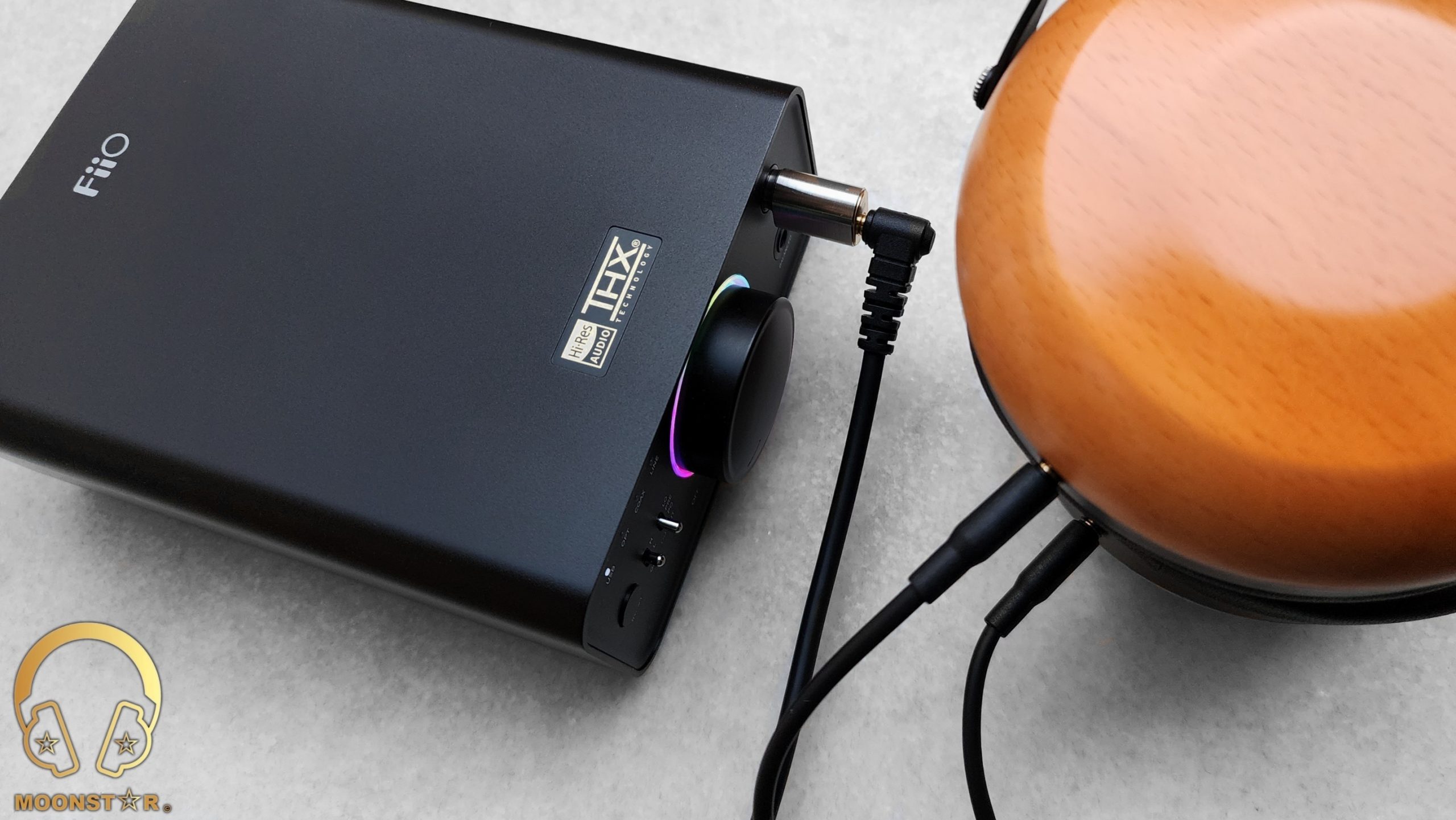
Albums & tracks used for this review:
- Adele – My Little Love (Dezzer HiFi)
- Randy Crawford – On Day I Will Fly Away (Flac 16bit/44.1kHz)
- Hayley Westenra – Odyssey Album (Dezzer HiFi)
- Dionne Warwick – Walk On By (Flac 16bit/44.1kHz)
- Sarah McLachlan – Angel (Flac 24bit/48kHz)
- Sertap Erener – Aşk (Flac 16bit/44.1kHz)
- Edith Piaf – Non Je Ne Regrette Rien (Flac 16bit/44.1kHz)
- Diana Krall – So Wonderful (DSF)
- Aretha Franklin – I Say A Little Payer (Flac 24bit/96kHz)
- Sonya Yoncheva – (Giuseppe Verdi) II Trovatore, ActI (Flac 24bit/96kHz)
- George Michael – Don’t Let the Sun Go Down on Me (Flac 24bit/192kHz)
- David Bowie – Heroes (Flac 24bit/192kHz)
- Elton John – Rocket Man ((Flac 24bit/96kHz)
- Barry White – Just The Way You Are (Flac 24bit/48kHz)
- Isaac Hayes – Walk On By (Flac 16bit/44.1kHz)
- Sting – Englishman in New York – (Flac 24bit/48kHz)
- Eric Clapton – Wonderful Tonight (Flac 24bit/96kHz)
- B. King – Riding With The King (Tidal Hi-Fi)
- Dave Gahan – Kingdom (Tidal Hi-Fi)
- U2 – Sunday Bloody Sunday (Flac 16bit/44.1kHz)
- Bro Safari, UFO! – Drama (Deezer HiFi)
- Armin Van Buuren – Vini Vici (Flac 16bit/44.1kHz)
- Daft Punk – Doin’ it Right (Flac 24bit/96kHz)
- Jo Blankenburg – Meraki (Spotify)
- Lorde – Royals (Flac 24bit/48kHz)
- Massive Attack – Angel (Flac 24bit/48kHz)
- Toutant – Rebirth (Deezer HiFi)
- Gogo Penguin – Raven (Flac 24bit/192kHz)
- Gogo Penguin – Murmuration (Flac 24bit/192kHz)
- Portishead – It Could Be Sweet (Spotify)
- Max Richter – On the Nature of Daylight (Flac 24bit/96kHz)
- Charly Antolini – Duwadjuwandadu (Flac 24bit/192kHz)
- Ferit Odman – Look, Stop & Listen (Flac 24bit/192kHz)
- Chopin – Nocturn No. 20 In C-Sharp Minor (Flac 16bit/44.1kHz)
- Fazıl Say – Nazım Oratoryosu (Live) (Flac 16bit/44.1kHz)
- Vivaldi – Le QuarttroStagioni “The Four Season” (Deezer HiFi)
- Otto Liebert & Luna Negra – The River (Flac 24bit/192kHz)
- Lunatic Soul – The Passage (Flac 16bit/44.1kHz)
- Deftones – My Own Summer (Shove it) (Flac 16bit/44.1kHz)
- Metallica – Sad but True (Flac 24bit/96kHz)
- Metallica – Master of Puppets (Flac 24bit/96kHz)
- Opeth – Windowpane (Flac 16bit/44.1kHz)
- Megadeth – Sweating Bullets (Tidal Hi-Fi)
- Rush’s – Leave That Thing Alone (Flac 16bit/44.1kHz)
- Slayer – Angel of Death (Spotify)
- Liquid Tension Experiment 2 – Acid Rain (Spotify)
- Yosi Horikawa – Bubbles (Spotify)
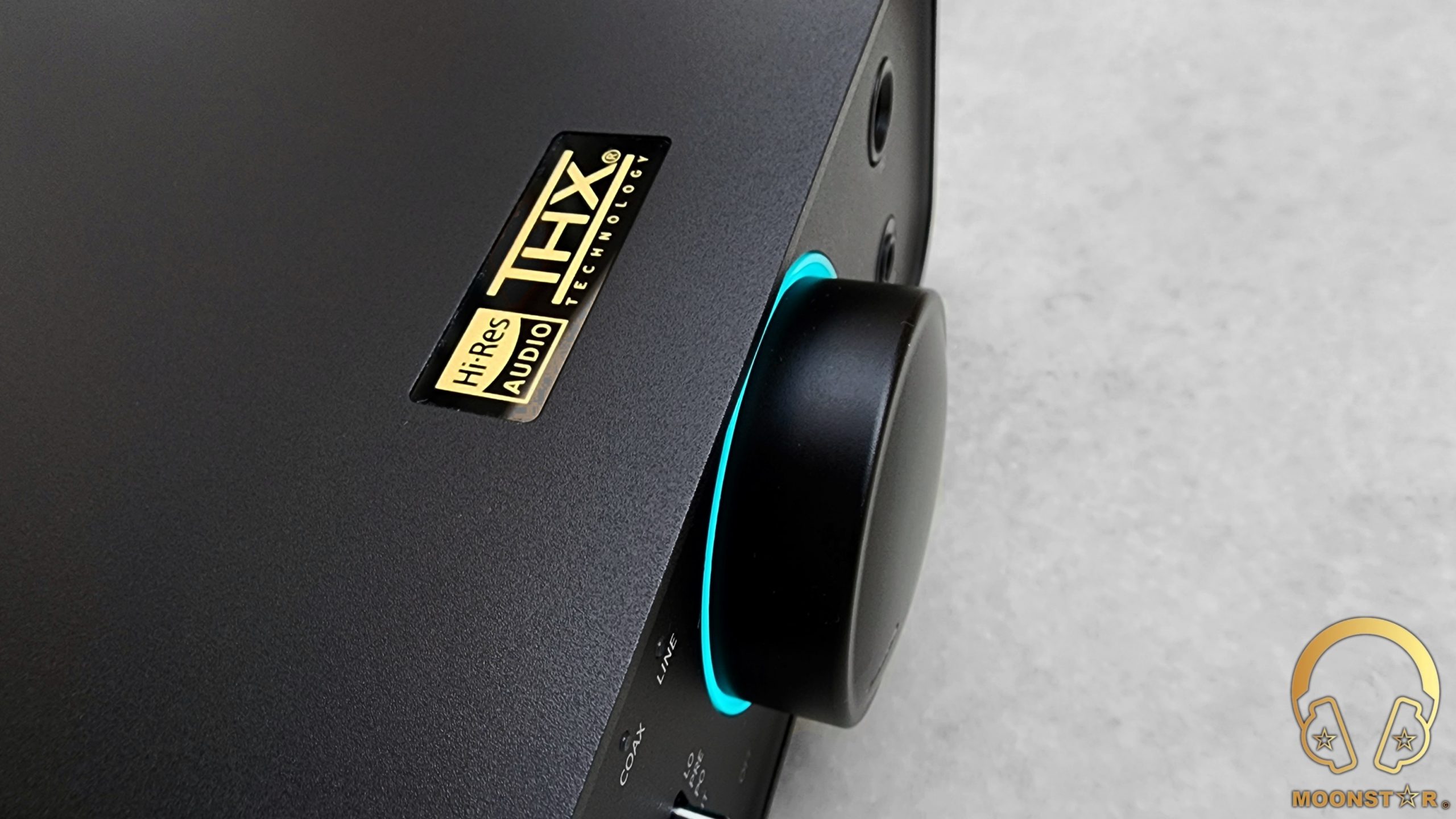
The Sound:
The FiiO K7 is a highly versatile and powerful DAC & Amplifier solution that impressed me with its very clean and natural presentation, that shows just the right amount of coloration in order to create a pretty musical and to avoid a to sterile overall sound presentation. The K7 is a pretty detailed and natural sounding source with decent sense of technicality and dynamics for its price that works great with both power hungry full sized Headphones and pretty sensitive In-Ear Monitors.
This review has been written after a burn-in period of around 100 – 110 hours. My sound experience below are mainly based on my impressions over the 4.4mm Balanced output paired with In-Ear Monitors such like the FiiO FH9, FH7S and Headphones like the HiFiMAN Sundara and SIVGA Oriole.
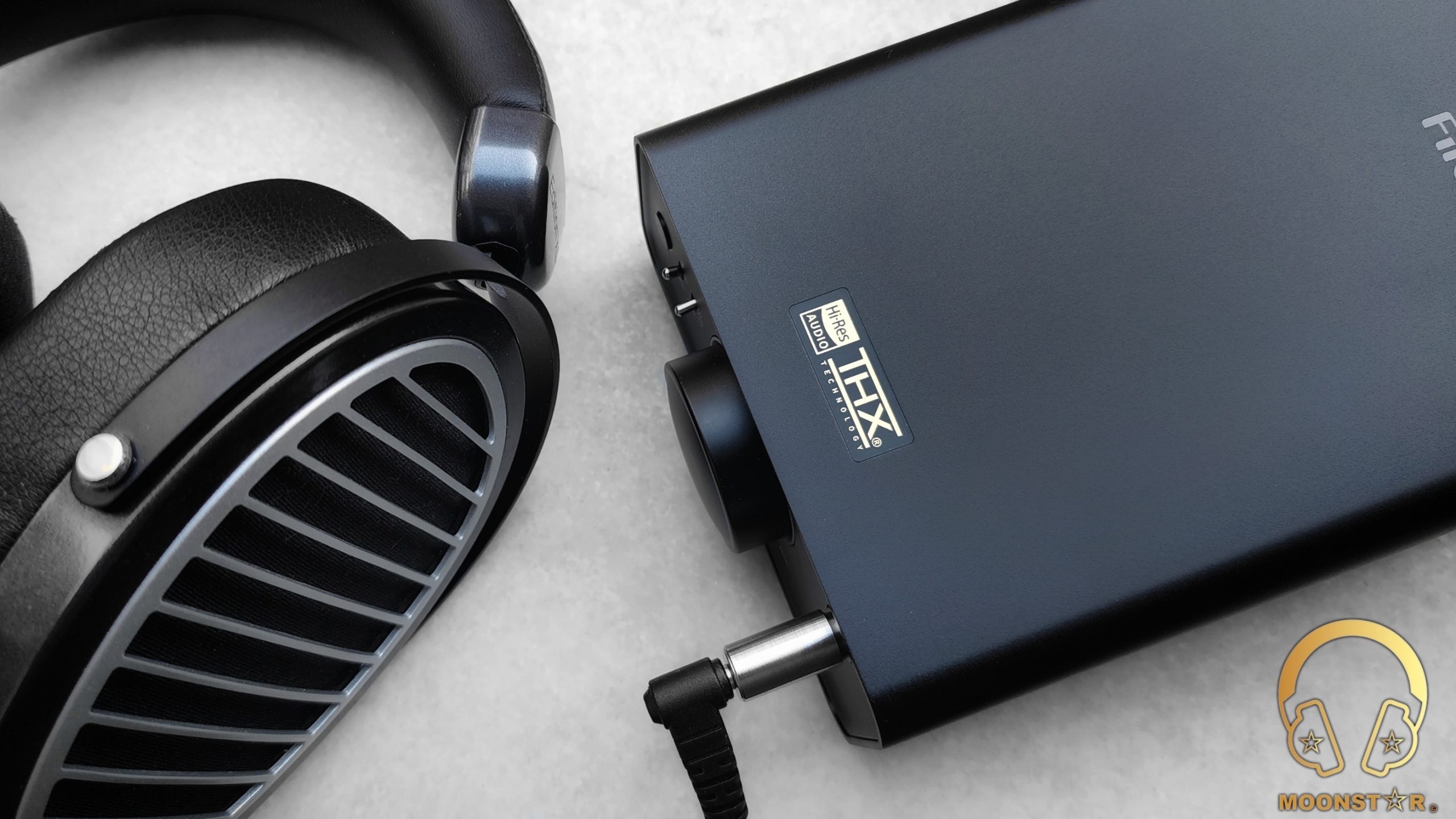
Bass:
The FiiO K7 offers a pretty natural, clean and nicely detailed overall bass response from the subbass up to the midbass region. It was also able to handle all headphones (HiFiMAN Sundara CB, HiFiMAN Edition XS) and IEM’s (FiiO FH9, FiiO FH7S, Meze Audio RAI Penta) in this area with decent sense of authority.
The subbass region of the K7 shows a decent grade of depth and authority with almost all IEM’s and Headphone I have listen to it. Some of my reference songs such like Lorde’s “Royals”, Massive Attack’s “Angle” or to Daft Punk “Doin’ it Right” have been produced with good level of rumble and extension.
The midbass region on the other hand is reproduced in a pretty natural and controlled manner along with a good sense of impact and intensity when I have listened to complex bass passages in songs like Gogo Penguin’s “Raven” or Charly Antolini’s “Duwadjuwandadu”. This is quite impressive for a device with such a reasonable pricing.
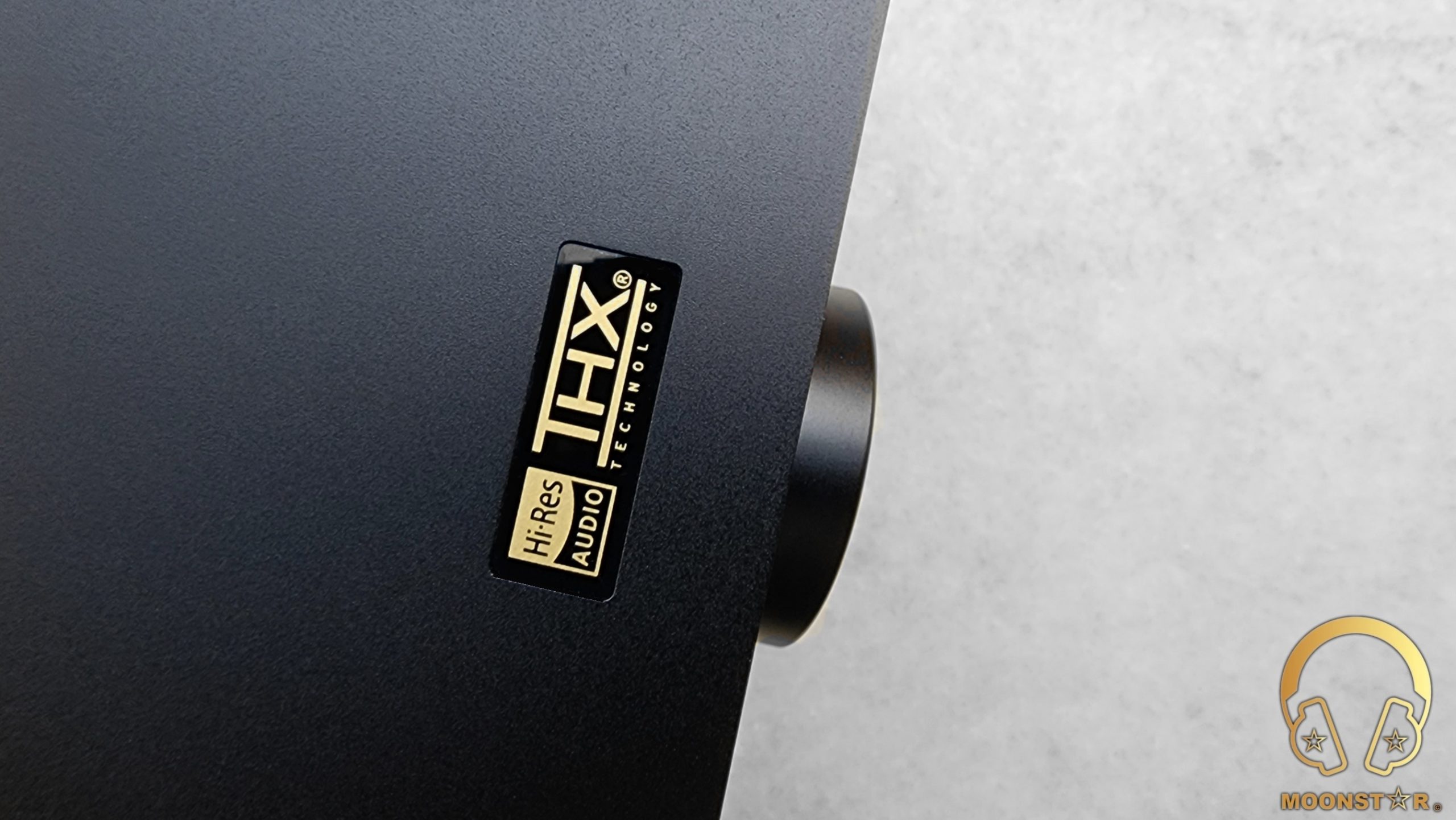
Midrange:
The midrange of the FiiO K7 stands out with it highly transparent and airy atmosphere when I listen to both vocals or to a wide variety of instruments, which shows again how capable this device is as a headphone/earphone DAC & Amplifier.
The sense of resolution from the lower up to the upper midrange area is excellent, especially with respect to the price of this device, which is also shown with an additional dynamism that comes with support from its pretty powerful THX AAA 788+ amplifier circuit.
I have listen to the K7 to a wide variety of instruments including violins, side flutes, cellos or pianos that have been reproduced with a decent level of resolution and naturalness, especially when paired with good In-Ear Monitors or headphones such like the FiiO FD7, Meze RAI Penta and HiFiMAN Edition XS, thanks to its quite airy and transparent midrange atmosphere.
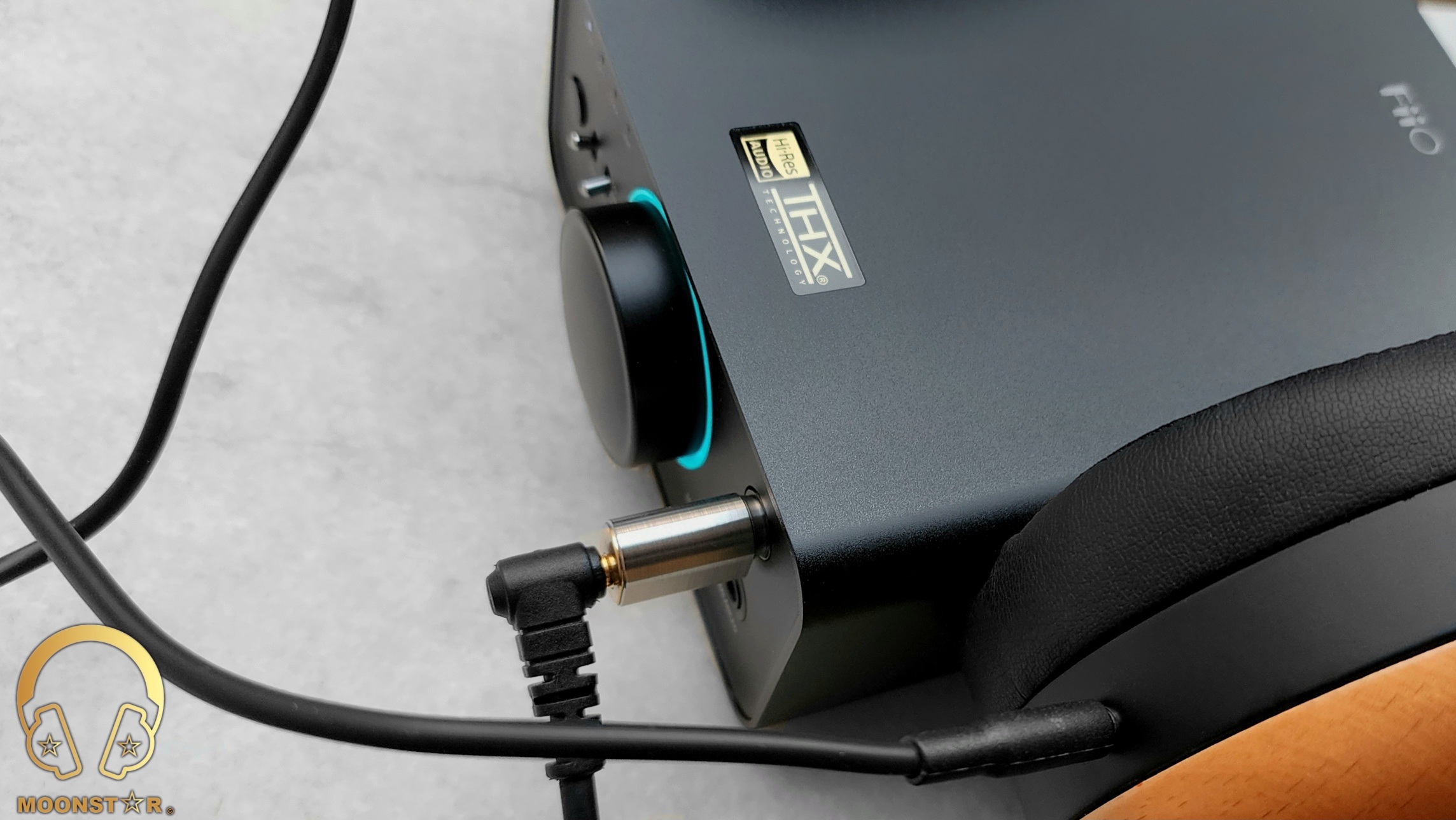
Treble:
What I really like about the treble presentation of the FiiO K7 is its pretty uncolored nature, which is also able to create a decent sense of clarity and sparkle with all IEM’s and Headphones I have paired the device. The grade of resolution and extension fulfills my expectation from a desktop DAC/Amplifier at this price level especially when I do listen to woodwinds, percussions and to soprano vocals.
Both the lower and the upper treble range are shown with a good level of balance. The lower treble area is shown with a decent grade of clarity and definition, while each individual instrument has been stand out pretty clearly. Instruments from hi-hats in metal music up to violins in classical music are reproduced with good level of presence and extension.
The upper treble area of the FiiO K7 creates a fairly open and airy atmosphere with good sense of brightness that is needed for vocals and for instruments such like cymbals, violins or clarinets without to show any remarkable hissing. The general extension and resolution of this area is again, excellent for a DAC/Amplifier at this level.

Soundstage & Imaging:
The FiiO K7 has a general soundstage presentation that is spacious and airy, which creates decent conditions for a pretty precise separation and placement of instruments and vocals. The soundstage is both fairly wide and deep, while the height of the stage is on a sufficient level.
Conclusion:
The K7 is another solid product from FiiO that impressed me with its versatility in terms of hardware features, compatibility and overall sound performance that pairs pretty well with both sensitive In-Ear Monitors and power hungry Planar Headphones. Moreover, it offers a clean, powerful and quite detailed listening experience that surprised me very well with respect to its reasonable price. The result is a DAC & Amplifier with a pretty small form factor that I can Highly Recommend!
Thank you for the Read!
Moonstar
100+ Head-Fier
Pros: Genre friendly tuning & detailed sound,
Solid build quality,
Lot’s of accessories,
Nice Stock Cable
Solid build quality,
Lot’s of accessories,
Nice Stock Cable
Cons: Needs lot of burn-in,
The upper midrange needs more presence
The upper midrange needs more presence
The DUNU Falcon-C and the new Carbon Nano-Tube Driver

Disclaimer:
First of all, a big thanks to Vivian from DUNU for providing me a free sample of the Falcon-C for this review. I am not affiliated with DUNU beyond this review and these words reflect my true, unaltered opinions about the product.
About DUNU:
DUNU was originally an OEM/ODM manufacturer established in 1994 and focuses on development, manufacture and marketing of professional earphone and ear bud products. DUNU’s manufacturing plant is located in Dong Guan City, Guangdong, China.
Official Website of DUNU (click here)
The Price:
The MSRP price for the DUNU Falcon-C can is around 219,00 USD.
Purchase Link
Package and Accessories:
The DUNU Falcon-C comes in a nice packed black paper box with a silver colored protective cover that shows the illustration of the IEM itself. This box contains the IEM itself and the following accessories;



The DUNU branded black carrying box is made of metal (I think aluminum) and has a nice looking elegant design. Inside the box is a velvet coating that is a nice detail, because this coating will avoid any possible scratched to your IEM.

Cable:
The 4 braided and handcrafted stock cable of the DUNU Falcon-C is made of high purity Silver Plated Copper (SPC) and has MMCX connectors. The cable itself is very well made and the plastic coating is avoiding any microphonic effects.

The male and female MMCX connectors of the Falcon-C are the best MMCX connectors I've seen so far. It sits perfect like a 2pin connector and is not loose like on other IEM’s I have tested before. The right connector has a red marking while the left connector is completely black.


The cable has a gold plated, right angled 3.5mm TRS headphone plug that looks and feels very resistant. The memory wire is made of a shrink tube coating that is comfy.

There is also a Y-Splitter (made of metal) and Chin Slider (made of plastic), that are both in black color. The Y-splitter has the classic DUNU brand logo printed on them.

Design and Build Quality:
The Falcon-C is relative small and has a very ergonomic design. The housing is according to DUNU made of liquid metal. This liquid metal material and its non-grain boundary would 3 times stronger than stainless steel, which should give an excellent acoustic character that would retrains harmonic resonance to archive a firm and more coherent sound.
Indeed, the Falcon-C looks and feels rock solid and the black colored shell has a nice appearance.
There is a grill at the inner surface that has no effect to the sound and according to my experience it looks like only an aesthetic choice. There is also small bass vent near the nozzle of the monitor.

Fit, Comfort and Isolation:
The DUNU Falcon-C has an ergonomic design and is comfortable to wear. The fit and seal is relative good but not the best when I compare it to IEM’s with a semicustom design language like the HiFi Boy OS V3 or Ibasso IT03. The isolation of the Falcon-C is above average.

Technical Specifications:
Driver Type: 9mm Carbon Nano-tube Driver
Frequency Response: 10 – 40 KHz
Sound Pressure Level: 108+/-3dB
Impedance: 16 Ohm
Connector Type: MMCX Connectors
Cable Material: 6N Silver Plated Cooper Wire
Plug Size: 3.5mm Gold Plated
Chord Length: 1.2m
Weight: 28g
Drivability (Impedance):
The DUNU Falcon-C has an impedance of 16 ohm and is easy to drive. This makes it ideal for all type of portable Digital Audio Players (DAP’s). Even my Samsung Galaxy S8 could push the Falcon-C to very loud volume levels.

Sources:
Albums & tracks used for this review:
Alboran Trio’s – Cinque Lunghissimi Minuti (Tidal Hi-Fi)
Otto Liebert & Luna Negra – Up Close “Album” (DSF) – Binaural Recording
LP (Laura Pergolizzi) – Lost On You (Tidal HiFi)
Emmanuel Pahud (Claude Debussy) – Syrinx (Apple Music)
Melody Gardot – Who Will Comfort Me (Flac 16bit/44kHz)
Aretha Franklin – I Say a Little Prayer (Apple Music)
Bryan Adams – MTV Unplugged Version Album (Tidal Hi-Fi)
Queen – Greatest Hits Vol. II (Apple Music)
GoGo Penguin’s – Muration (Flac 16bit/44kHz)
Lazarus A.D. – The Onslaught (ALAC)
Opeth – Damnation (Tidal Hi-Fi)
Daft Punk – Get Lucky (Flac 24bit/192kHz)
Bro Safari, UFO! – Animal (Tidal Hi-Fi)
Lorde – Royals (Flac 24bit/48kHz)
Michael Jackson - Billie Jean (DSF)
Yosi Horikawa – Bubbles (Flac 16bit/44kHz)
In Ear Monitor : DUNU Falcon-C, HiFi BOY OS V3, Whizzer A15
DAP/DAC : Cayin N5II, Aune M2 Pro, Chord Mojo, Zishan Z2, Samsung Galaxy S8 Plus


Sound Analysis and Comparisons:
This DUNU Falcon-C review is written by me after an intensive burn-in process of 180 hours. The sound characteristic of the Falcon-C changes drastically with every tips selection that I will mention in this review. I have used the Spinfit silicone tips due this review that is a nice Bonus from DUNU to its consumers.
Sound Signature and Tonality:
DUNU Falcon-C is an IEM with a V-shaped sound signature. The tonality of the Falcon-C is on the warmer side due a slightly bass presence.

The frequencies:
One of the first things I have noticed about the frequency region of the DUNU Falcon-C, was the very well controlled bass that hits quite hard when called upon.
I hate IEM’s with to much boomy bass and a muffled presentation, luckily the Falcon-C is not one of this IEM’s. DUNU did a good job by tuning the lows of the Falcon-C relative balanced and not too dominant.
The sub-bass region around 20-50 kHz goes deep and rumbles with a nice and natural decay. The EDM song “Animal” of the group “Bro Safari, UFO! shows me, how deep the sub bass of an IEM can reach in to my ears and the Falcon-C does this job very well. Maybe bass heads won’t be satisfied with the bass amount, but this is a matter of personal preference.
The bass, especially around 60 – 220 kHz is capable of being very articulate and full sounding at the same time and it has also great texture without overpowering the whole sound spectrum.
The legendary performance of Bryan Adams – MTV Unplugged Album Version is a good reference Album for testing the bass guitar presentation of any IEM. The DUNU Falcon-C excels very well in this area with its overall smooth presentation.
Due the V-shaped sound signature, the Falcon-C has a little bit recessed midrange presentation. Don’t get me wrong, the vocal and instrument presentation of this IEM is quite detailed. Vocals, especially female vocals like Laura Pergolizzi (LP), Melody Gardot, Diana Krall etc. have a nice sense of emotion. I must admit, that the detail retrieval is really good for an IEM with a single dynamic driver.
Laura Pergolizzi’s life performance in the song “Lost On You” is a good example to shows us, that the DUNU Falcon-C performs very well with some Female Vocals and even with a soprano level voice.
Maybe some people will prefer an even more emotional vocal presentation, but this is also a matter of personal preference.
The upper midrange area of the Falcon-C had some sibilance and harshness problems at the very beginning (the first 20-30 hours), which almost completely disappeared after a burn-in period of 100-120 hours.
The Dunu Falcon-C has a relative bright sounding top end with some nice crispy treble and a quite good extension. My ears are quite sensitive to overpowered treble levels. The Falcon-C is bright but has not the sort of upper treble response that could fatigue your ears after some long listening periods.
For example: Emmanuel Pahud’s (Claude Debussy) – Syrinx side flute (transverse flute) performance has some nice sparkle and sounds quite realistic. Don’t get me wrong, I don’t want to say that the Falcon-C has the detail level of a Oriolus Forsteni (that nearly costs twice the price), but it performs very well, even better than some higher priced IEM's I have listened before.
Regarding to speed, the Falcon-C is not the fastest IEM with its 9mm single dynamic driver, but has enough speed to excel in some complex tracks like GoGo Penguin’s – Muration (an epic contrabass performance) or even Lazarus A.D.’s epic song “The Onslaught”.

Soundstage and Imaging:
The soundstage of the Falcon-C is relative wide and airy and the depth is above average. There is a nice sense of space in some instrument intensive tracks like GoGo Pengin’s – Fanfares or Lazarus A.D’s – The Onslaught that gives you a nice imaging of the performance itself.
Choosing the right tips:
The bass character of the Falcon-C is tips dependent. When I use the transparent gray tips the sub bass, especially the mid bass amount is more noticeable than these of blue tube tips. That means that the gray tip is adding an additional mid-bass hump.
But when I select the Spinfit tips, the bass rumble is strong like on the gray tips, but it adds additional clarity to the midrange that I have lost with the gray tips.
When I chose the blue tube tips, the sub- and mid-bass amount goes down, but the upper midrange and the top end is more present than before.

Some Comparisons:
Vs. Whizzer A15 Pro (125 USD):
As I mentioned in some of my previous reviews, the Whizzer A15 Pro is a fantastic IEM regarding to its price to performance in the categories build quality, accessory package and sound quality.
Design, Fit & Build Quality:
Both IEM’s have a great build quality and share a black metal housing. The main difference is the material they use; the A15 Pro has an aluminum housing while the Falcon-C is made of liquid metal that is according to DUNU 3 times stronger than steel.
The Falcon-C has the upper hand when it comes to fit and ergonomics. The shell of the A15Pro is small but not as comfy as the DUNU, that makes the Falcon-C to the better choice if you listen to music for long hours.
The sound:
When we compare both for the sound I can say that Falcon-C has a relative warmer tuning compared to the A15 Pro. The DUNU Falcon-C has also the better bass response; speed and decay than the relative neutral or better say, bass-shy A15 Pro.
The A15 Pro sounds more clinical at the midrange but is missing the emotion that the Falcon-C is presenting with male and especially female vocals. The Instrument separation is on par, or even slightly better on the A15 Pro. The Falcon-C and the A15 Pro have bright sounding top end and both are well controlled in this area. The DUNU Falcon-C has more upper treble sparkle.
The detail level of both IEM’s is good, but I like the DUNU’s presentation more because it sounds not as cold as the A15 Pro, that is otherwise a great performer.
The A15 Pro has a wider soundstage while the difference is not too much. But there is no doubt that the DUNU has the better depth and imaging.
Vs. HiFi BOY OS V3 (199 USD)
HiFi BOY is a relative new company in the Hi-Fi arena that has released its first IEM at the market these days, the OS V3.
Design, Fit & Build Quality:
The HiFi BOY OS V3 and the DUNU Falcon-C sharing different design languages. The OS V3 has a semicustom housing made of medical grade resin, while the Falcon-C has metal shell with a more industrial look.
Both are comfortable to wear but the overall isolation of the OS V3 is a step above of the Falcon-C. Both are well made, but the DUNU Falcon-C look more solid to my eyes due the metal construction. The DUNU has also the upper hand in accessory quality and quantity.
The sound:
The first noticeable difference about the Falcon-C is that it has more sub-bass quantity and extension than the OS V3. The sub bass goes lower and the bass of the Flacon-C hits harder when it called for. The bass the OS V3 is smoother and more linear than those of the Falcon-C.
The OS V3 and the Falcon-C have a V shaped sound signature, but the OS V3 has more forward vocals than the Falcon-C. The main difference between this two IEM’s is the midrange clarity. The Falcon-C sounds cleaner because of the upper midrange presence. The OS V3 sound a bit grainy, and not as live like as the Falcon-C.
When it comes to vocal presentation, I think that male vocals sounding more realistic with the OS V3, while female vocals soundings delicious with the Falcon-C. The detail level of both IEM’s is nearly identical and above there price league.
The DUNU Falcon-C has more treble presence and upper treble sparkle, which gives as result a brighter sound presentation then those of the OS V3. I think that the HiFi BOY OS V3 sounds more engaging on this frequency range, while the Falcon-C is more energetic and has additional micro detail.
The soundstage of both IEM’s is not monstrous, but they are performing very well for there price category. The HiFi BOY OS V3 has a slightly wider presentation, while the Falcon-C wins in depth and imaging. Both IEM’s have an airy and engaging presentation.
Conclusion:
The DUNU Falcon-C is a well build IEM with lots of accessories, which has a nice sound tuning that is suitable for many genres, from Pop to Jazz or even Metal music. But you should note that the single dynamic (Carbon Nano-Tube) driver needs time to show its true potential, so a burn-in of at least 150 Hours is a must have.
All-in all great job done DUNU!

Pros and Cons:
+ Genre friendly tuning & detailed sound
+ Solid build quality
+ Lot’s of accessories
+ Nice Stock Cable
- Needs lot of burn-in
- The upper midrange needs more presence
This review was originally posted on "Moonstar Reviews" :
https://moonstarreviews.net

Disclaimer:
First of all, a big thanks to Vivian from DUNU for providing me a free sample of the Falcon-C for this review. I am not affiliated with DUNU beyond this review and these words reflect my true, unaltered opinions about the product.
About DUNU:
DUNU was originally an OEM/ODM manufacturer established in 1994 and focuses on development, manufacture and marketing of professional earphone and ear bud products. DUNU’s manufacturing plant is located in Dong Guan City, Guangdong, China.
Official Website of DUNU (click here)
The Price:
The MSRP price for the DUNU Falcon-C can is around 219,00 USD.
Purchase Link
Package and Accessories:
The DUNU Falcon-C comes in a nice packed black paper box with a silver colored protective cover that shows the illustration of the IEM itself. This box contains the IEM itself and the following accessories;
- DUNU Falcon-C IEM
- 10 sets of Eartips
- 3.5mm Female to 6.5mm Male Adapter
- 3.5mm Female to 2-pin Flight Adapter
- Carry Box
- Shirt Clip
- Warrant Card & Manual



The DUNU branded black carrying box is made of metal (I think aluminum) and has a nice looking elegant design. Inside the box is a velvet coating that is a nice detail, because this coating will avoid any possible scratched to your IEM.

Cable:
The 4 braided and handcrafted stock cable of the DUNU Falcon-C is made of high purity Silver Plated Copper (SPC) and has MMCX connectors. The cable itself is very well made and the plastic coating is avoiding any microphonic effects.

The male and female MMCX connectors of the Falcon-C are the best MMCX connectors I've seen so far. It sits perfect like a 2pin connector and is not loose like on other IEM’s I have tested before. The right connector has a red marking while the left connector is completely black.


The cable has a gold plated, right angled 3.5mm TRS headphone plug that looks and feels very resistant. The memory wire is made of a shrink tube coating that is comfy.

There is also a Y-Splitter (made of metal) and Chin Slider (made of plastic), that are both in black color. The Y-splitter has the classic DUNU brand logo printed on them.

Design and Build Quality:
The Falcon-C is relative small and has a very ergonomic design. The housing is according to DUNU made of liquid metal. This liquid metal material and its non-grain boundary would 3 times stronger than stainless steel, which should give an excellent acoustic character that would retrains harmonic resonance to archive a firm and more coherent sound.
Indeed, the Falcon-C looks and feels rock solid and the black colored shell has a nice appearance.
There is a grill at the inner surface that has no effect to the sound and according to my experience it looks like only an aesthetic choice. There is also small bass vent near the nozzle of the monitor.

Fit, Comfort and Isolation:
The DUNU Falcon-C has an ergonomic design and is comfortable to wear. The fit and seal is relative good but not the best when I compare it to IEM’s with a semicustom design language like the HiFi Boy OS V3 or Ibasso IT03. The isolation of the Falcon-C is above average.

Technical Specifications:
Driver Type: 9mm Carbon Nano-tube Driver
Frequency Response: 10 – 40 KHz
Sound Pressure Level: 108+/-3dB
Impedance: 16 Ohm
Connector Type: MMCX Connectors
Cable Material: 6N Silver Plated Cooper Wire
Plug Size: 3.5mm Gold Plated
Chord Length: 1.2m
Weight: 28g
Drivability (Impedance):
The DUNU Falcon-C has an impedance of 16 ohm and is easy to drive. This makes it ideal for all type of portable Digital Audio Players (DAP’s). Even my Samsung Galaxy S8 could push the Falcon-C to very loud volume levels.

Sources:
Albums & tracks used for this review:
Alboran Trio’s – Cinque Lunghissimi Minuti (Tidal Hi-Fi)
Otto Liebert & Luna Negra – Up Close “Album” (DSF) – Binaural Recording
LP (Laura Pergolizzi) – Lost On You (Tidal HiFi)
Emmanuel Pahud (Claude Debussy) – Syrinx (Apple Music)
Melody Gardot – Who Will Comfort Me (Flac 16bit/44kHz)
Aretha Franklin – I Say a Little Prayer (Apple Music)
Bryan Adams – MTV Unplugged Version Album (Tidal Hi-Fi)
Queen – Greatest Hits Vol. II (Apple Music)
GoGo Penguin’s – Muration (Flac 16bit/44kHz)
Lazarus A.D. – The Onslaught (ALAC)
Opeth – Damnation (Tidal Hi-Fi)
Daft Punk – Get Lucky (Flac 24bit/192kHz)
Bro Safari, UFO! – Animal (Tidal Hi-Fi)
Lorde – Royals (Flac 24bit/48kHz)
Michael Jackson - Billie Jean (DSF)
Yosi Horikawa – Bubbles (Flac 16bit/44kHz)
In Ear Monitor : DUNU Falcon-C, HiFi BOY OS V3, Whizzer A15
DAP/DAC : Cayin N5II, Aune M2 Pro, Chord Mojo, Zishan Z2, Samsung Galaxy S8 Plus


Sound Analysis and Comparisons:
This DUNU Falcon-C review is written by me after an intensive burn-in process of 180 hours. The sound characteristic of the Falcon-C changes drastically with every tips selection that I will mention in this review. I have used the Spinfit silicone tips due this review that is a nice Bonus from DUNU to its consumers.
Sound Signature and Tonality:
DUNU Falcon-C is an IEM with a V-shaped sound signature. The tonality of the Falcon-C is on the warmer side due a slightly bass presence.

The frequencies:
One of the first things I have noticed about the frequency region of the DUNU Falcon-C, was the very well controlled bass that hits quite hard when called upon.
I hate IEM’s with to much boomy bass and a muffled presentation, luckily the Falcon-C is not one of this IEM’s. DUNU did a good job by tuning the lows of the Falcon-C relative balanced and not too dominant.
The sub-bass region around 20-50 kHz goes deep and rumbles with a nice and natural decay. The EDM song “Animal” of the group “Bro Safari, UFO! shows me, how deep the sub bass of an IEM can reach in to my ears and the Falcon-C does this job very well. Maybe bass heads won’t be satisfied with the bass amount, but this is a matter of personal preference.
The bass, especially around 60 – 220 kHz is capable of being very articulate and full sounding at the same time and it has also great texture without overpowering the whole sound spectrum.
The legendary performance of Bryan Adams – MTV Unplugged Album Version is a good reference Album for testing the bass guitar presentation of any IEM. The DUNU Falcon-C excels very well in this area with its overall smooth presentation.
Due the V-shaped sound signature, the Falcon-C has a little bit recessed midrange presentation. Don’t get me wrong, the vocal and instrument presentation of this IEM is quite detailed. Vocals, especially female vocals like Laura Pergolizzi (LP), Melody Gardot, Diana Krall etc. have a nice sense of emotion. I must admit, that the detail retrieval is really good for an IEM with a single dynamic driver.
Laura Pergolizzi’s life performance in the song “Lost On You” is a good example to shows us, that the DUNU Falcon-C performs very well with some Female Vocals and even with a soprano level voice.
Maybe some people will prefer an even more emotional vocal presentation, but this is also a matter of personal preference.
The upper midrange area of the Falcon-C had some sibilance and harshness problems at the very beginning (the first 20-30 hours), which almost completely disappeared after a burn-in period of 100-120 hours.
The Dunu Falcon-C has a relative bright sounding top end with some nice crispy treble and a quite good extension. My ears are quite sensitive to overpowered treble levels. The Falcon-C is bright but has not the sort of upper treble response that could fatigue your ears after some long listening periods.
For example: Emmanuel Pahud’s (Claude Debussy) – Syrinx side flute (transverse flute) performance has some nice sparkle and sounds quite realistic. Don’t get me wrong, I don’t want to say that the Falcon-C has the detail level of a Oriolus Forsteni (that nearly costs twice the price), but it performs very well, even better than some higher priced IEM's I have listened before.
Regarding to speed, the Falcon-C is not the fastest IEM with its 9mm single dynamic driver, but has enough speed to excel in some complex tracks like GoGo Penguin’s – Muration (an epic contrabass performance) or even Lazarus A.D.’s epic song “The Onslaught”.

Soundstage and Imaging:
The soundstage of the Falcon-C is relative wide and airy and the depth is above average. There is a nice sense of space in some instrument intensive tracks like GoGo Pengin’s – Fanfares or Lazarus A.D’s – The Onslaught that gives you a nice imaging of the performance itself.
Choosing the right tips:
The bass character of the Falcon-C is tips dependent. When I use the transparent gray tips the sub bass, especially the mid bass amount is more noticeable than these of blue tube tips. That means that the gray tip is adding an additional mid-bass hump.
But when I select the Spinfit tips, the bass rumble is strong like on the gray tips, but it adds additional clarity to the midrange that I have lost with the gray tips.
When I chose the blue tube tips, the sub- and mid-bass amount goes down, but the upper midrange and the top end is more present than before.

Some Comparisons:
Vs. Whizzer A15 Pro (125 USD):
As I mentioned in some of my previous reviews, the Whizzer A15 Pro is a fantastic IEM regarding to its price to performance in the categories build quality, accessory package and sound quality.
Design, Fit & Build Quality:
Both IEM’s have a great build quality and share a black metal housing. The main difference is the material they use; the A15 Pro has an aluminum housing while the Falcon-C is made of liquid metal that is according to DUNU 3 times stronger than steel.
The Falcon-C has the upper hand when it comes to fit and ergonomics. The shell of the A15Pro is small but not as comfy as the DUNU, that makes the Falcon-C to the better choice if you listen to music for long hours.
The sound:
When we compare both for the sound I can say that Falcon-C has a relative warmer tuning compared to the A15 Pro. The DUNU Falcon-C has also the better bass response; speed and decay than the relative neutral or better say, bass-shy A15 Pro.
The A15 Pro sounds more clinical at the midrange but is missing the emotion that the Falcon-C is presenting with male and especially female vocals. The Instrument separation is on par, or even slightly better on the A15 Pro. The Falcon-C and the A15 Pro have bright sounding top end and both are well controlled in this area. The DUNU Falcon-C has more upper treble sparkle.
The detail level of both IEM’s is good, but I like the DUNU’s presentation more because it sounds not as cold as the A15 Pro, that is otherwise a great performer.
The A15 Pro has a wider soundstage while the difference is not too much. But there is no doubt that the DUNU has the better depth and imaging.
Vs. HiFi BOY OS V3 (199 USD)
HiFi BOY is a relative new company in the Hi-Fi arena that has released its first IEM at the market these days, the OS V3.
Design, Fit & Build Quality:
The HiFi BOY OS V3 and the DUNU Falcon-C sharing different design languages. The OS V3 has a semicustom housing made of medical grade resin, while the Falcon-C has metal shell with a more industrial look.
Both are comfortable to wear but the overall isolation of the OS V3 is a step above of the Falcon-C. Both are well made, but the DUNU Falcon-C look more solid to my eyes due the metal construction. The DUNU has also the upper hand in accessory quality and quantity.
The sound:
The first noticeable difference about the Falcon-C is that it has more sub-bass quantity and extension than the OS V3. The sub bass goes lower and the bass of the Flacon-C hits harder when it called for. The bass the OS V3 is smoother and more linear than those of the Falcon-C.
The OS V3 and the Falcon-C have a V shaped sound signature, but the OS V3 has more forward vocals than the Falcon-C. The main difference between this two IEM’s is the midrange clarity. The Falcon-C sounds cleaner because of the upper midrange presence. The OS V3 sound a bit grainy, and not as live like as the Falcon-C.
When it comes to vocal presentation, I think that male vocals sounding more realistic with the OS V3, while female vocals soundings delicious with the Falcon-C. The detail level of both IEM’s is nearly identical and above there price league.
The DUNU Falcon-C has more treble presence and upper treble sparkle, which gives as result a brighter sound presentation then those of the OS V3. I think that the HiFi BOY OS V3 sounds more engaging on this frequency range, while the Falcon-C is more energetic and has additional micro detail.
The soundstage of both IEM’s is not monstrous, but they are performing very well for there price category. The HiFi BOY OS V3 has a slightly wider presentation, while the Falcon-C wins in depth and imaging. Both IEM’s have an airy and engaging presentation.
Conclusion:
The DUNU Falcon-C is a well build IEM with lots of accessories, which has a nice sound tuning that is suitable for many genres, from Pop to Jazz or even Metal music. But you should note that the single dynamic (Carbon Nano-Tube) driver needs time to show its true potential, so a burn-in of at least 150 Hours is a must have.
All-in all great job done DUNU!

Pros and Cons:
+ Genre friendly tuning & detailed sound
+ Solid build quality
+ Lot’s of accessories
+ Nice Stock Cable
- Needs lot of burn-in
- The upper midrange needs more presence
This review was originally posted on "Moonstar Reviews" :
https://moonstarreviews.net
View previous replies…
Moonstar
100+ Head-Fier
Pros: Small form factor,
Nice Accessory Package,
Great sound Quality,
Good Battery Life,
Low to none hissing
Nice Accessory Package,
Great sound Quality,
Good Battery Life,
Low to none hissing
Cons: none for this price
Nexum AQUA+ The 32 bit Wireless Headphone DAC & Amplifier

1. Disclaimer:
First of all, a big thanks to NEXUM for providing me a free sample of the AQUA+for review purposes. I am not affiliated with NEXUM beyond this review and these words reflect my true, unaltered opinions about the product.
2. About NEXUM:
NEXUM comes from Taiwan and is established in 2013 with focusing on wireless audio technology design. Over the years, NEXUM launched several products into the market like the MEMO, AQUA, TuneBox2 and LINKA. They are care about design to bring more value to our lives.
NEXUM Official Web Page: https://www.nexum-design.com/
Price: $139.00
3. What is the AQUA+:
The AQUA+ is Wireless operating DAC with a built in amplifier that supports Hi-Res music files with sampling rates up to 32bit 384K and is compatible with multiple operating systems like Windows, Mac, Android or IOS etc.

4. Package and Accessories:
The device comes in small card-box and contains the following items;



5. Design and Build Quality:
The NEXUM AQUA + is a small (4.5*4.5*1.2cm), lightweight (25g) and well made device that has a square shape with rounded corners. The AQUA+ has a frame that is made of aluminum, while the top and back covers/caps are made of plastic for a better wireless transmission.
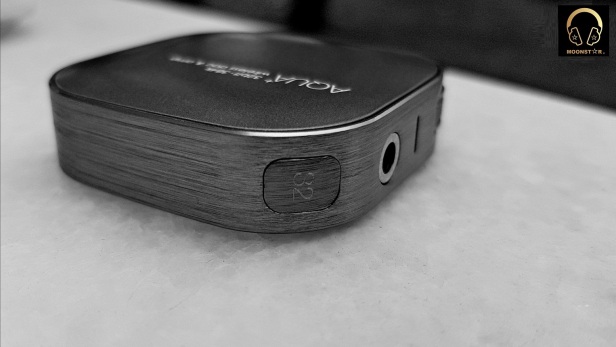
On the sides you can find the power button with a 32 bit marking, the volume wheel that has multiple functions, a led light and the 3.5mm headphone jack.
The NEXUM AQUA+ has three different options for the cover caps; these are midnight black, Sublime Gold and Radiant white. My device is Sublime Gold model.
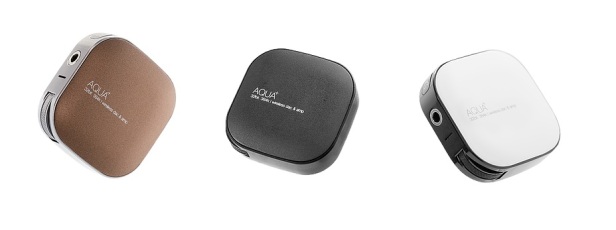
6. Technical Specifications:

7. Hardware and Operation:
The NEXUM AQUA + has some nice hardware specs like a high quality DAC, Wireless charging etc. that I will now explain for you.
a) DAC Section:
The DAC (Digital to Analog Converter) used in the NEXUM AQUA+ is the CS43130 of the Company Cirrus Logic Inc. that supports sampling rates up to 32bit – 384kHz. According to Cirrus Logic, the CS43130 features a high impedance of 600 Ω and inter channel isolation of >110 dB to minimize pre-echos and ringing artifacts.
The CS43130 is designed with proprietary digital-interpolation filters that support five selectable digital filter responses. Filtering options include low group delay with pseudo-linear phase and a fast or slow roll-off. Volume matching of the analog output levels and channel mixing enable a seamless transition between the DSD and PCM playback paths.
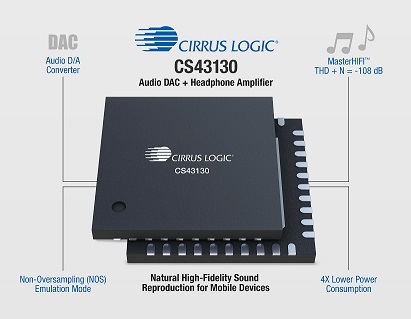
The onboard low noise, ground-centered headphone amplifier provides proprietary AC impedance detection to support headphone fingerprinting to provide a consistent and transparent audio experience for the end user regardless of transducer impedances or frequency responses.

b) AMP Section and Drivability:
The NEXUM AQUA + has an onboard amplifier that is integrated in to the CS43130 SOC (System on a Chip). The amplifier supports earphones & headphones with impedance between 8ohm-300ohm and has an output power rating of 7.5mW@300ohm per channel (1.5Vrms output).
The AQUA+ was able to drive my Audio-Technica ATH M50 to pretty loud volume levels.
According to Cirrus Logic, the onboard headphone amplifier provides proprietary AC impedance detection to support headphone fingerprinting to provide a consistent and transparent audio experience for the end user regardless of transducer impedances or frequency responses.

c) Bluetooth and supported Audio Codecs:
The AQUA+ supports the Bluetooth 4.2 protocol and different types of codecs. This means whenever you pair the AQUA+ with a Bluetooth device it selects the best possible codec that your audio source (DAP, Tablet, Smartphone) supports.
Supported codecs are aptX / aptXLL / AAC and SBC. That means that you no longer hear an FLAC, WAV, MP3, DSD, etc. music file. All audio formats will be decoded by the output device to PCM and then transcoded to aptX, AAC or SBC via Bluetooth audio (in 16bit) to AQUA+. Then AQUA+ leverages its 2 embedded chipsets, high-quality SRC & Hi-Res DAC, to convert it to 32bit.

What do these codes actually mean?
aptX:
In digital audio data reduction technology, aptX (formerly apt-X) is a family of proprietary audio codec compression algorithms currently owned by Qualcomm.
The aptX audio codec is used for wireless audio applications, notably the real-time streaming of lossy stereo audio over the Bluetooth A2DP connection/pairing between a “source” device such as a Smartphone, Tablet Laptop or a DAP. Products bearing the CSR aptX logo are certified for interoperability with each other. (Ref: Wikipedia)
aptX LL:
aptX LL = Low Latency is intended for video and gaming applications requiring comfortable audio-video synchronization whenever the stereo audio is transmitted over short-range radio to the listener(s) using the Bluetooth A2DP audio profile standard. The technology offers an end-to-end latency of 32 ms over Bluetooth. By comparison, the latency of standard Bluetooth stereo varies greatly depending on the system implementation and buffering. Solutions are available that use standard SBC encoding/decoding that achieve end-to-end latency of less than 40 ms. (Ref: Wikipedia)
AAC:
Advanced Audio Coding (AAC) is a proprietary audio coding standard for lossy digital audio compression. (Ref: Wikipedia)
SBC:
SBC, or low-complexity sub-band codec, is an audio sub-band codec specified by the Bluetooth Special Interest Group (SIG) for the Advanced Audio Distribution Profile (A2DP). SBC is a digital audio encoder and decoder used to transfer data to Bluetooth audio output devices like headphones or loudspeakers. It can also be used on the Internet.
It was designed to obtain a reasonably good audio quality at medium bit rates while keeping low computational complexity, having Bluetooth bandwidth limitations and processing power in mind. (Ref: Wikipedia)
How the Bluetooth pairing works:
The Bluetooth pairing of NEXUM AQUA + is quite simple and has an operating range of about 10 meters. You need to press to the 32 bit key until the led flashes in red and blue colors. This operation is needed only for the first time. For the next time you need only to power on the device and enable Bluetooth connection of your source (Smartphone, Tablet, etc.) and a female voice of the NEXUM AQUA + will say “device is connected”.
Please note, that the AQUA+ is designed for headphones with 3.5mm jacks and is unable to support wireless headphones.
d) Wireless Charging:
The Nexum AQUA+ supports the Qi Wireless charging that is an open interface standard that defines wireless power transfer using an inductive charging over distances of up to 4 cm (1.6 inches). Thanks to this feature, the only thing you should do is to but the AQUA+ on the charging pad that is included in the package AQUA+. The charging time takes about 2 hours and has even charge my Samsung Galaxy S8+ that also supports this feature.


e) Battery life:
According to NEXUM, the AQUA+ should be able to play for 8 hours @ 16bits and 5.5 hours @ 32bits on a full charge.
My test have show that the AQUA+ is able top ley for 7.5 – 8 Hours in 16 Bit mode and approx. 5 hours in 32 Bit mode. These values are pretty good for such a small and constantly wireless working device.
f) Background Noise / Hissing:
The NEXUM AQUA + is a very silent working device. There was small to non hissing with some of my sensitive IEM’s like the HiFi BOY OS V3 and Dunu Falcon-C. This is a great capability for a wireless working device.
g) Operation:
The Nexum AQUA+ is easy to handle and has two physical keys/buttons. The first key is the digital volume control wheel of the AQUA+ that supports 64 different volume points and that has also some multiple functions. These functions are Play/Pause (Short Press) /Next Song (Double Short) /Prev. Song (Triple Short).
The second is the 32 Bit key. The 32 Bit key operates as power on/off button and it also activates or deactivates the 32bit/384kHz up-sampling function of the device. The led light changes to a turquoise color when you activate this feature.
h) Microphone:
The headphone mic and wire control will not work while connected, but AQUA+ has a built-in mic and can perform wire control functions with the keys on the device.
8) Equipments used for this review:

9) Albums & tracks used for this review:
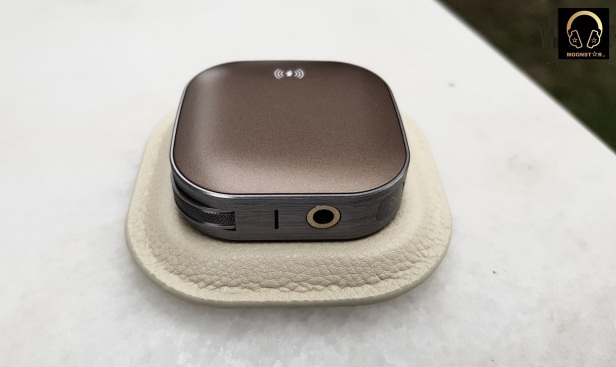
10. Sound:
I believe in burn-in and have done that for approx. 100 hours before I wrote this review.
Please note that this is a low budget Bluetooth DAC and all my comments about the sound quality are in consideration of this price range.
Tonality / Bass / Mid / Treble / Soundstage & Imagine:
The AQUA+ is a balanced sounding source with a relative flat frequency response and quite neutral tonality.
The AQUA+ is an energetic sounding device with a well extended and tight bass response. The bass is textured and it sounds pretty transparent. The most impressive part about the bass is the speed; it is pretty fast and accurate for a DAC (especially a Bluetooth one) in this price range.
As mentioned before the AQUA+ is a relative neutral sounding device around the whole sound spectrum. The midrange of this device sounds clear and transparent and has also a good amount of detail retrieval.
After some intensive vocal comparisons I have come to the conclusion that Female vocals like Lorde, Diana Krall or Melody Gardot sounded more natural and emotional then most of the male vocals I have listened during this review.
The instrument presentation sounded pretty natural with some of my IEMs like the HiFi BOY OS V3 and the TFZ TEQUILA1, but the especially the synergy with the AUDEZE iSine20 was very satisfying. The separation and definition of instruments is also pretty good.
The upper midrange of the AQUA+ sounds soft and quite controlled. There is no over sharpness that would be uncomfortable after long listening periods.
The treble range of the NEXUM AQUA + sounds fast, clear and vivid. It is not too bright or too smooth. The detail level is above average and presents a nice amount of shimmer/glimmer.
The soundstage of the AQUA+ is well extended and has a nice sense of space. The soundstage depth is above average but it is pretty wide in staging.
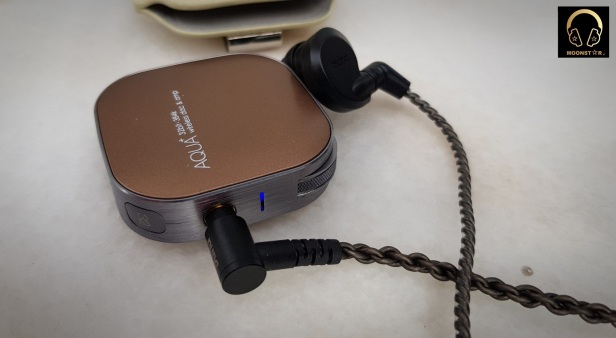
11. Comparison:
Nexum AQUA+ vs Astell&Kern XB10:
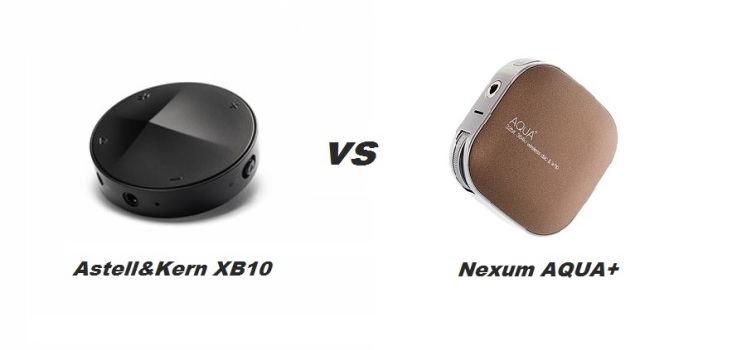
The Astell&Kern AK XB10 and the Nexum AQUA+ are one of the best choices if you are looking for a wireless DAC/AMP solution. They are sharing also the same retrial price.
a) Design & Build Quality:
Both devices are well made and very lightweight. The AK XB10 weights only 23g and the AQUA+ 25g.
The Astell&Kern XB10 has an all plastic shell while the AQUA+ has an aluminum frame with plastic caps. Both devices are very small and share the same form factor. The size of the XB10 is 5*5*12.3cm vs 4.5*4.5*1.2cm for the AQUA+.
b) Technical Specifications:
The AK XB10 has to headphone outputs, one for 2.5mm balanced wit a power output of 1.8Vrms and one 3.5mm single ended headphone out with a output power of 0.9Vrms. The AQUA+ has only one 3.5mm single ended output but with a higher output power of 1.5Vrms.
The AQUA+ supports the aptX/aptX LL/AAC/SBC Bluetooth Audio Codec’s, while the SBC, AAC, aptX and aptX HD. The main difference is that the AQUA+ supports aptX LL vs aptX HD for the XB10.
Both devices have a built in microphone that is needed for phone calls.
The AK XB10 has a battery life is around 5 hours while the AQUA+ is able to play up to 7.5 Hours. The AQUA+ has also the Qi Wireless charging option that is a nice extra.
Hi-Fi DAC of both devices is capable of reproducing high-quality sound. The AK XB10 supports sampling rates up to 24-bit/192 kHz, while the AQUA+ is capable to support sampling rates up to 32bit – 384kHz.
c) Sound Comparison:
The AQUA+ has a quite neutral tonality and a relative flat frequency response, while the Astell&Kern XB10 sounds warmer and has a V shaped frequency allocation.
The bass of the AQUA+ sounds faster, tighter and is more natural in presentation, while the AK XB10 has more quantity and depth.
The bass of the AQUA+ sounds cleaner, clearer and has more detail rendering compared to the XB10. The bass of the XB10 is not as tight as the AQUA+ and sounds a little bit loose.
The midrange presentation of the Astell&Kern XB10’s sounds a bit muffled compared the clearer midrange of the AQUA+. The Astell&Kern XB10 sounds better with Male vocals, while the AQUA+ performs better with female vocals.
I think that the AQUA+ has the upper hand in terms of instrument clarity, separation and naturalness.
The upper midrange of XB10 sounds a bit too stiff compared to the softer and more controlled sounding AQUA+.
The treble range of the Astell&Kern XB10 sounds pretty good, but it can not commentate with the performance of the Aqua+, which has the sharper, more extended and faster treble response. Because of these characteristics, the AQUA+ sounds like the better choice if you listen to tracks that need additional speed and control.
Both devices have a good soundstage performance, but the Astell&Kern XB10 has the better depth while the AQUA+ has the better send for soundstage wideness.

12. Conclusion:
The NEXUM AQUA+ is a good performer with its great features, nice build quality and quite detailed sound performance. People who are looking for a wireless DAC/Amp solution should definitely give the AQUA + a try.
13) Pros and Cons:
+ Small form factor
+ Nice Accessory Package
+ Great sound Quality
+ Good Battery Life
+ Low to none hissing
– None for this price
[last edit 08.03.2018]

This review was originally posted on my Review Blog "Moonstar Reviews" :
https://moonstarreviews.net

1. Disclaimer:
First of all, a big thanks to NEXUM for providing me a free sample of the AQUA+for review purposes. I am not affiliated with NEXUM beyond this review and these words reflect my true, unaltered opinions about the product.
2. About NEXUM:
NEXUM comes from Taiwan and is established in 2013 with focusing on wireless audio technology design. Over the years, NEXUM launched several products into the market like the MEMO, AQUA, TuneBox2 and LINKA. They are care about design to bring more value to our lives.
NEXUM Official Web Page: https://www.nexum-design.com/
Price: $139.00
3. What is the AQUA+:
The AQUA+ is Wireless operating DAC with a built in amplifier that supports Hi-Res music files with sampling rates up to 32bit 384K and is compatible with multiple operating systems like Windows, Mac, Android or IOS etc.

4. Package and Accessories:
The device comes in small card-box and contains the following items;
- 1 x AQUA+
- 1 x Charging Pad
- 1 x Leather Clip
- 1 x microUSB cable
- 1 x User Manual



5. Design and Build Quality:
The NEXUM AQUA + is a small (4.5*4.5*1.2cm), lightweight (25g) and well made device that has a square shape with rounded corners. The AQUA+ has a frame that is made of aluminum, while the top and back covers/caps are made of plastic for a better wireless transmission.

On the sides you can find the power button with a 32 bit marking, the volume wheel that has multiple functions, a led light and the 3.5mm headphone jack.
The NEXUM AQUA+ has three different options for the cover caps; these are midnight black, Sublime Gold and Radiant white. My device is Sublime Gold model.

6. Technical Specifications:
- Audio Codec : aptX/aptX LL/AAC/SBC
- Support Impedance : 8ohm-300ohm
- Output Power : 7.5mW@300ohm per channel (1.5Vrms output)
- Bluetooth Range : 10M
- Noise Level : -93dB
- Dynamic Range : 92.7dB
- THD+N @1KHz : 0.0067%
- Stereo Crosstalk : -92.5dB
- Microphone : MEMS type with high sensitivity
- Charging time : 2hours
- Certifications : BQB/FCC/CE/NCC
- Size : 4.5*4.5*1.2cm
- Weight : 25g

7. Hardware and Operation:
The NEXUM AQUA + has some nice hardware specs like a high quality DAC, Wireless charging etc. that I will now explain for you.
a) DAC Section:
The DAC (Digital to Analog Converter) used in the NEXUM AQUA+ is the CS43130 of the Company Cirrus Logic Inc. that supports sampling rates up to 32bit – 384kHz. According to Cirrus Logic, the CS43130 features a high impedance of 600 Ω and inter channel isolation of >110 dB to minimize pre-echos and ringing artifacts.
The CS43130 is designed with proprietary digital-interpolation filters that support five selectable digital filter responses. Filtering options include low group delay with pseudo-linear phase and a fast or slow roll-off. Volume matching of the analog output levels and channel mixing enable a seamless transition between the DSD and PCM playback paths.

The onboard low noise, ground-centered headphone amplifier provides proprietary AC impedance detection to support headphone fingerprinting to provide a consistent and transparent audio experience for the end user regardless of transducer impedances or frequency responses.

b) AMP Section and Drivability:
The NEXUM AQUA + has an onboard amplifier that is integrated in to the CS43130 SOC (System on a Chip). The amplifier supports earphones & headphones with impedance between 8ohm-300ohm and has an output power rating of 7.5mW@300ohm per channel (1.5Vrms output).
The AQUA+ was able to drive my Audio-Technica ATH M50 to pretty loud volume levels.
According to Cirrus Logic, the onboard headphone amplifier provides proprietary AC impedance detection to support headphone fingerprinting to provide a consistent and transparent audio experience for the end user regardless of transducer impedances or frequency responses.

c) Bluetooth and supported Audio Codecs:
The AQUA+ supports the Bluetooth 4.2 protocol and different types of codecs. This means whenever you pair the AQUA+ with a Bluetooth device it selects the best possible codec that your audio source (DAP, Tablet, Smartphone) supports.
Supported codecs are aptX / aptXLL / AAC and SBC. That means that you no longer hear an FLAC, WAV, MP3, DSD, etc. music file. All audio formats will be decoded by the output device to PCM and then transcoded to aptX, AAC or SBC via Bluetooth audio (in 16bit) to AQUA+. Then AQUA+ leverages its 2 embedded chipsets, high-quality SRC & Hi-Res DAC, to convert it to 32bit.

What do these codes actually mean?
aptX:
In digital audio data reduction technology, aptX (formerly apt-X) is a family of proprietary audio codec compression algorithms currently owned by Qualcomm.
The aptX audio codec is used for wireless audio applications, notably the real-time streaming of lossy stereo audio over the Bluetooth A2DP connection/pairing between a “source” device such as a Smartphone, Tablet Laptop or a DAP. Products bearing the CSR aptX logo are certified for interoperability with each other. (Ref: Wikipedia)
aptX LL:
aptX LL = Low Latency is intended for video and gaming applications requiring comfortable audio-video synchronization whenever the stereo audio is transmitted over short-range radio to the listener(s) using the Bluetooth A2DP audio profile standard. The technology offers an end-to-end latency of 32 ms over Bluetooth. By comparison, the latency of standard Bluetooth stereo varies greatly depending on the system implementation and buffering. Solutions are available that use standard SBC encoding/decoding that achieve end-to-end latency of less than 40 ms. (Ref: Wikipedia)
AAC:
Advanced Audio Coding (AAC) is a proprietary audio coding standard for lossy digital audio compression. (Ref: Wikipedia)
SBC:
SBC, or low-complexity sub-band codec, is an audio sub-band codec specified by the Bluetooth Special Interest Group (SIG) for the Advanced Audio Distribution Profile (A2DP). SBC is a digital audio encoder and decoder used to transfer data to Bluetooth audio output devices like headphones or loudspeakers. It can also be used on the Internet.
It was designed to obtain a reasonably good audio quality at medium bit rates while keeping low computational complexity, having Bluetooth bandwidth limitations and processing power in mind. (Ref: Wikipedia)
How the Bluetooth pairing works:
The Bluetooth pairing of NEXUM AQUA + is quite simple and has an operating range of about 10 meters. You need to press to the 32 bit key until the led flashes in red and blue colors. This operation is needed only for the first time. For the next time you need only to power on the device and enable Bluetooth connection of your source (Smartphone, Tablet, etc.) and a female voice of the NEXUM AQUA + will say “device is connected”.
Please note, that the AQUA+ is designed for headphones with 3.5mm jacks and is unable to support wireless headphones.
d) Wireless Charging:
The Nexum AQUA+ supports the Qi Wireless charging that is an open interface standard that defines wireless power transfer using an inductive charging over distances of up to 4 cm (1.6 inches). Thanks to this feature, the only thing you should do is to but the AQUA+ on the charging pad that is included in the package AQUA+. The charging time takes about 2 hours and has even charge my Samsung Galaxy S8+ that also supports this feature.


e) Battery life:
According to NEXUM, the AQUA+ should be able to play for 8 hours @ 16bits and 5.5 hours @ 32bits on a full charge.
My test have show that the AQUA+ is able top ley for 7.5 – 8 Hours in 16 Bit mode and approx. 5 hours in 32 Bit mode. These values are pretty good for such a small and constantly wireless working device.
f) Background Noise / Hissing:
The NEXUM AQUA + is a very silent working device. There was small to non hissing with some of my sensitive IEM’s like the HiFi BOY OS V3 and Dunu Falcon-C. This is a great capability for a wireless working device.
g) Operation:
The Nexum AQUA+ is easy to handle and has two physical keys/buttons. The first key is the digital volume control wheel of the AQUA+ that supports 64 different volume points and that has also some multiple functions. These functions are Play/Pause (Short Press) /Next Song (Double Short) /Prev. Song (Triple Short).
The second is the 32 Bit key. The 32 Bit key operates as power on/off button and it also activates or deactivates the 32bit/384kHz up-sampling function of the device. The led light changes to a turquoise color when you activate this feature.
h) Microphone:
The headphone mic and wire control will not work while connected, but AQUA+ has a built-in mic and can perform wire control functions with the keys on the device.
8) Equipments used for this review:
- DAC’s : Nexum AQUA +, Astell&Kern XB10
- Digital Sources : Ipad Air 2, Samsung Galaxy S8+
IEM’s : Audeze iSine20, Dunu Flacon-C, TFZ TEQUILA1,
Earbuds : Penon BS1 Official Version, NiceHCK EBX, HiFi BOY Dream - Headphones : Audio-Technica ATH50M

9) Albums & tracks used for this review:
- Sebastian Ingrosso, Thommy Trash &John M. – Reload (Apple Music)
- Michael Jackson – Billie Jean (DSD)
- Casey Abrams – Robot Lovers (Tidal Hi-Fi)
- Emmanuel Pahud (Claude Debussy) – Syrinx (Flac 16bit/44kHz)
- Melody Gardot – Who Will Comfort Me (Flac 16bit/44kHz)
- Aretha Franklin – I Say a Little Prayer (DSF)
- Diana Krall – So Wonderful (DSF)
- Otto Liebert & Luna Negra – Up Close “Album” (DSD) – Binaural Recording
- Alboran Trio’s – Cinque Lunghissimi Minuti (Flac 16bit/44kHz)
- Megadeth – Sweating Bullets (Flac 16bit/44kHz)
- Opeth – Damnation (Tidal Hi-Fi)
- Metallica – The Black Album (Flac 24bit/96Hz)
- Lorde – Royals (Flac 24bit/48kHz)

10. Sound:
I believe in burn-in and have done that for approx. 100 hours before I wrote this review.
Please note that this is a low budget Bluetooth DAC and all my comments about the sound quality are in consideration of this price range.
Tonality / Bass / Mid / Treble / Soundstage & Imagine:
The AQUA+ is a balanced sounding source with a relative flat frequency response and quite neutral tonality.
The AQUA+ is an energetic sounding device with a well extended and tight bass response. The bass is textured and it sounds pretty transparent. The most impressive part about the bass is the speed; it is pretty fast and accurate for a DAC (especially a Bluetooth one) in this price range.
As mentioned before the AQUA+ is a relative neutral sounding device around the whole sound spectrum. The midrange of this device sounds clear and transparent and has also a good amount of detail retrieval.
After some intensive vocal comparisons I have come to the conclusion that Female vocals like Lorde, Diana Krall or Melody Gardot sounded more natural and emotional then most of the male vocals I have listened during this review.
The instrument presentation sounded pretty natural with some of my IEMs like the HiFi BOY OS V3 and the TFZ TEQUILA1, but the especially the synergy with the AUDEZE iSine20 was very satisfying. The separation and definition of instruments is also pretty good.
The upper midrange of the AQUA+ sounds soft and quite controlled. There is no over sharpness that would be uncomfortable after long listening periods.
The treble range of the NEXUM AQUA + sounds fast, clear and vivid. It is not too bright or too smooth. The detail level is above average and presents a nice amount of shimmer/glimmer.
The soundstage of the AQUA+ is well extended and has a nice sense of space. The soundstage depth is above average but it is pretty wide in staging.

11. Comparison:
Nexum AQUA+ vs Astell&Kern XB10:

The Astell&Kern AK XB10 and the Nexum AQUA+ are one of the best choices if you are looking for a wireless DAC/AMP solution. They are sharing also the same retrial price.
a) Design & Build Quality:
Both devices are well made and very lightweight. The AK XB10 weights only 23g and the AQUA+ 25g.
The Astell&Kern XB10 has an all plastic shell while the AQUA+ has an aluminum frame with plastic caps. Both devices are very small and share the same form factor. The size of the XB10 is 5*5*12.3cm vs 4.5*4.5*1.2cm for the AQUA+.
b) Technical Specifications:
The AK XB10 has to headphone outputs, one for 2.5mm balanced wit a power output of 1.8Vrms and one 3.5mm single ended headphone out with a output power of 0.9Vrms. The AQUA+ has only one 3.5mm single ended output but with a higher output power of 1.5Vrms.
The AQUA+ supports the aptX/aptX LL/AAC/SBC Bluetooth Audio Codec’s, while the SBC, AAC, aptX and aptX HD. The main difference is that the AQUA+ supports aptX LL vs aptX HD for the XB10.
Both devices have a built in microphone that is needed for phone calls.
The AK XB10 has a battery life is around 5 hours while the AQUA+ is able to play up to 7.5 Hours. The AQUA+ has also the Qi Wireless charging option that is a nice extra.
Hi-Fi DAC of both devices is capable of reproducing high-quality sound. The AK XB10 supports sampling rates up to 24-bit/192 kHz, while the AQUA+ is capable to support sampling rates up to 32bit – 384kHz.
c) Sound Comparison:
The AQUA+ has a quite neutral tonality and a relative flat frequency response, while the Astell&Kern XB10 sounds warmer and has a V shaped frequency allocation.
The bass of the AQUA+ sounds faster, tighter and is more natural in presentation, while the AK XB10 has more quantity and depth.
The bass of the AQUA+ sounds cleaner, clearer and has more detail rendering compared to the XB10. The bass of the XB10 is not as tight as the AQUA+ and sounds a little bit loose.
The midrange presentation of the Astell&Kern XB10’s sounds a bit muffled compared the clearer midrange of the AQUA+. The Astell&Kern XB10 sounds better with Male vocals, while the AQUA+ performs better with female vocals.
I think that the AQUA+ has the upper hand in terms of instrument clarity, separation and naturalness.
The upper midrange of XB10 sounds a bit too stiff compared to the softer and more controlled sounding AQUA+.
The treble range of the Astell&Kern XB10 sounds pretty good, but it can not commentate with the performance of the Aqua+, which has the sharper, more extended and faster treble response. Because of these characteristics, the AQUA+ sounds like the better choice if you listen to tracks that need additional speed and control.
Both devices have a good soundstage performance, but the Astell&Kern XB10 has the better depth while the AQUA+ has the better send for soundstage wideness.

12. Conclusion:
The NEXUM AQUA+ is a good performer with its great features, nice build quality and quite detailed sound performance. People who are looking for a wireless DAC/Amp solution should definitely give the AQUA + a try.
13) Pros and Cons:
+ Small form factor
+ Nice Accessory Package
+ Great sound Quality
+ Good Battery Life
+ Low to none hissing
– None for this price
[last edit 08.03.2018]

This review was originally posted on my Review Blog "Moonstar Reviews" :
https://moonstarreviews.net
SexAndManCity
I can get behind this. I picked one up from their Kickstarter campaign and have been very impressed with its capabilities. It powered my Mitchell & Johnson GL2SE really well, providing a powerful, clear and detailed sound but I mainly use it connected to my amp at home for convenience. The 32 bit upsampling really makes up for the inadequacies of streaming services like Spotify and Amazon Music.
Peddler
Outstanding review - you're really setting the standard here Moonstar. I also have one of these and I think they're surprisingly excellent.
Moonstar
Thank you very much for your nice words  Yes I was also very surprised for the first time. Nexum did a really good job with the Aqua+ !
Yes I was also very surprised for the first time. Nexum did a really good job with the Aqua+ !
 Yes I was also very surprised for the first time. Nexum did a really good job with the Aqua+ !
Yes I was also very surprised for the first time. Nexum did a really good job with the Aqua+ !Moonstar
100+ Head-Fier
Pros: Top of The Line Sound,
Android OS = Online Streaming,
Powerful Output,
Already a balanced out on stock AMP1 Card,
Upcoming AMP Cards,
Android OS = Online Streaming,
Powerful Output,
Already a balanced out on stock AMP1 Card,
Upcoming AMP Cards,
Cons: Software releated issues,
Screen should be more responsive,
Battery Life,
Screen should be more responsive,
Battery Life,
First of all,
I hope that this will be a useful guide for people who are curious or interested in buying this device.
This is a non sponsored review!!
About me: www.moonstarreviews.net
Equipments used in this review:
Albums and track used in this review:
3. Box Contents:
The device comes with a stylish box and a nice presentation.
Some images of the box

The box contains the following contents;
· Ibasso DX200
· USB Type-C to USB
· Coax cable
· Burn-in Cable
· Leather case
· Warranty and product identification card
Accessories

The USB cable is covered with a fabric material and has a good quality. This cable uses a new generation USB Type-C connector. Coax and burn-in cables are also familiar to us from other Ibasso models.
The leather case feels good and is fully compatible with the device.
Leather Case

By the way, there was no screen protector in the box, but later I noticed that Ibasso already put it on the screen. I'm glad I will not struggle with sticking
4. Material Quality and Workmanship:
The DX200 is made of CNC engraved aircraft type Aluminyum.
I didn’t found any quality issues or defects on the device.
The only criticism will come to the physical keys, because they look a little small. For example, the Sony ZX2 has larger keys in a similar position, making it easier to use it in your pocket.
The volume pot on the DX200 is sensitive and feels more robust and precise than all Astell&Kern devices I've used before. However, the bad thing about the volume wheel is that it is too sensitive. To turn it to loud volumes takes to much time and too much turns
Personally, I think that the Lotoo Paw Gold is the most successful device in this regard.
Buttons of the DX200

5. Hardware:
a) Display:
The device has 4.2” IPS display with a resolution of 768 * 1280 pixels. It is a bright and good looking screen with vibrant color reproduction.
The Screen of the DX200

b) Processor, Ram, Xmos:
Inside the DX200 is an 8-core Rockchip RK3368 processor. It would be nice to see a Snapdragon inside, but the RK3368 has enough processing power for a DAP in this segment.
The DX200 features the XMOS XU208 Chip, with a 2GB LPDDR3 type of Ram (unluckily an old type of ram). The internal storage type is eMMC with 64GB capacity and it uses a Thesycon USB Audio Driver for the USB DAC function.
The DX200 has only one Micro SD Card slot. That means you have a max storage capacity of 64 + 256 = 320 GB. Competitors like the Sony WM1A or even the cheaper Fiio X5 3GEN have two slots or have more build in memory like the Sony NWZ ZX2.
c) Wireless Connectivity:
The device has a build in Wi-fi antenna that supports speeds up to 5GHz and has also Bluetooth 4.0 connection. I found out that old routers with only 2.5GHz speed capability can cause to noise/interferences while listening or downloading tracks form online services like Tidal, Spotify etc. and I think that’s a little bit annoying.
d) Amplifier Card:
The standard AMP1 amplifier card, which comes pre-assembled with two screws, has 3 analogue audio outputs. These are Line Out, 3.5mm Phone out and a 2.5mm TRRS Balanced out.
Outputs of the AMP1

AMP (Amplifier) cards with different features, power and sound characteristics will released in the near future.
The AMP amplifier card

There is also the new released AMP2 amplifier Card, which has a four channel architecture. I didn't had the chance to test it out, so for more information please visit this link.
The AMP2 Amplifier Card

E) Digital Outputs:
At the top of the unit, apart from the analog audio outputs on the AMP1 card, we have a digital audio output, called SPDIF. This Audio output slot supports Coax and Mini Optical interfaces at the same time.
Digital Outputs

F) Heart of the DX200, the DAC:
I would like to give some more details about the DAC, which we can call the heart of the device. Ibasso used two ESS Saber branded 32bit ES9028PRO’s as DAC.
ES9028Pro & small brother ES9026Pro

DX200 has 16 DAC cores in total, with 8 channels per DAC (2 DAC’s x 8 DAC cores).
This DAC is donated with a technology that is called HyperStreamDAC. With this feature, the device has a Dynamic Range (DNR) of 135dB.
Sabre ES9028Pro Block Diagram

The DX200 has also an external USB DAC feature that uses the Thesycon USB Audio Driver technology that is promoted to be the best external DAC feature released on a DAP ever.
Unfortunately, I can not comment on the USB DAC feature for now because my PC at home is death at the moment
6. Software and Interface:
The DX200 comes with Android Marshmallow 6.0.1 pre installed. The user has the option to switch between Android and Mango OS which is pure music software. The Mango OS Grafical User Interface = GUI, looks familiar to the Linux-based operating systems on the DX50, DX80 and DX90.
a) Mango OS:
The pure music player interface we call Mango OS is very simple and has a useful structure. It looks very similar to these I saw on the DX80. The only difference is that the DX200 has a digital filters option in its menu. Some users have said that the sound is more refined when using Mango OS. Yes, there are some small differences, but don’t expect a night and day difference.
A short GUI Demo:
My biggest complain comes to the software of the DX200. I think that Ibasso has shipped this device to the market with a beta stage software that has/had a lot of "Bugs"
The first things I noticed where some software related freezing and disconnection issues.
But don’t worry, because Ibasso is a company that is constantly releasing new software updates that fixes such problems.
The device is now much faster and stable than before after I did some software updates in the past months. With new upcoming updates I guess that all problems will completely disappear.
b) Android
Of course, one of the greatest benefits of the Android operating system is that we can use "Online Streaming" applications like Tidal, Spotify, Apple Music, just like in popular devices for example Fiio X7 and X5 3Gen, Onkyo DP-X1 etc.
BTW, it will be possible to download Google Playstore to the DX200.
What did I said possible!!! Yes, because the device does not come with Google Playstore pre-installed. Of course, not having Playstore doesn’t mean you can’t install apps!
Yes, because the device does not come with Google Playstore pre-installed. Of course, not having Playstore doesn’t mean you can’t install apps!
All you need to do is to download the application's .apk file (it's like an .exe file in Windows) over internet and install it via a file browser to the device.
BTW, the DX200 has a web browser, calendar and even a calculator
I mostly use Tidal and Apple Music. It’s a great thing to have the possibility to stream or download your favorite music tracks, playlists or albums to your device over online service.
USB Audio Pro can be installed for those who want to use a Parametric EQ.
Updates can be made either by downloading the .zip file from Ibasso's own site or directly to your device or via an OTA update (Over the Air) just like on a Smartphone. It's good to have OTA support like Astell&Kern devices, but I am warning you, Chinese servers are very slow J
7. Mango Player:
The Mango Player is Ibasso's own Player application, which is found in the Android interface and has the same look and feel like the Pure Mango OS. I am very surprised that this application is very fast, even faster than the Mango OS interface. Oh, and it's also very handy!
8. Battery Life:
The DX200 has a lithium polymer battery with a capacity of 4400mAh / 3.8V. The device is charging fast in approx. 2 - 2.5 hours.
Battery life is about 6 hours when online services like Tidal, Soptify etc. are used. But if you listen to regular flac or mp3 files the battery life will increase up to 7 - 8 hours.
In short, nobody should expect the legendary Sony battery life from such a powerful device!
Times New Roman";mso-ansi-language:EN-US"> Battery life is based on High Gain and and sound level is 110.
9. Spesifications:
2.5mm Balanced Output: Output voltage 6Vrms
Frequency Response: 20Hz-20KHz -0.16dB
Signal to Noise Ratio: 125dB
Crosstalk: -122dB THD+N: < 0.0002%, -114dB (64Ω@3Vrms)
3.5mm HP Output: Output voltage 3Vrms
Frequency Response: 20Hz-20KHz -0.16dB
Signal to Noise Ratio: 122dB
Crosstalk: -118dB THD+N: < 0.00032%,-110dB (32Ω@1.8Vrms)
Lineout: Output voltage 3Vrms
Frequency Response: 20Hz-20KHz -0.16dB
Signal to Noise Ratio: 122dB THD+N: < 0.00025%,-112dB
Screen Size: 4.2inch 768*1280
Battery Capacity: 4400mAh
Dimension: 5.1L x 2.7W x 0.77H (inch) 128.5L x 69W x 19.5H (mm)
Weight: 240gr or 8.5oz
The DX200 supports a wide range of music formats. It supports almost all of the current and traditional high-resolution files.
All of the formats listed below are also supported when the device is used as an external USB DAC.
APE, FLAC,WAV, WMA, AAC, ALAC, AIFF, OGG, MP3, 32bit/384 kHz Bit for Bit.
Native DSD Support up to 512x (DFF, DSF, DXD)
M3U Playlist and CUE sheets supported
The Sound:
Now,
I have burn-in the device for approx. 230 -240 hours before I wrote this review!
All comments related to the sound are my personal and subjective opinions made after intensive listening with the stock AMP1 amplifier card and the firmware version V2.2.110.
a) The Timbre:
The DX200 uses a Saber DAC just like its predecessor the DX100. Because of this fact the device faced a number of prejudices before it was released and I think it's not hard to understand why so many critics made for this device. Saber DAC’s have generally a bright and clear tonality.
Luckily Ibasso misled me and gave the Sabre DAC inside the DX200 a warmer and more natural sounding tuning that is ideal for long listening periods.
I think Ibasso is the second company after Hifiman that has made a good job by adding warmth to a Saber DAC, congratulation Hifiman and Ibasso!
b) The Bass:
The Bass response of the DX200 is close to natural not as tight as the Paw Gold or the Hifiman HM901s but well controlled and well textured, exactly what a TOTL DAP should be.
The bass region gives the sound a slightly warmth that is welcome for me, but what we don’t except form a player with a Sabre DAC under the hood
The bass is fast and gives the overall sound spectrum enough body, so that you can listen to a wide variety of genres.
Overall, I think that the DX200 is not a bass shy nor a bass heavy DAP that has enough power and juice to stratify its owner.
I am using the Noble K10UA and the ATH M50 to test out the mid- and sub-bass capability of the device:
I loved the pairing with both earphones. The sub-bass goes really low and the mid-bass hit’s hard enough to vibrate my ears
Nice to see that the bass is not attaching the rest of the frequencies, that would otherwise ruin the clearness of the sound and the wonderful vocal and instrument presentation of this device.
c) The Mids:
WOW, the Dx200 is ear-catching with its natural, transparent and organic sounding mids. It has a Top of the Line sound that is welcome when we think again that this device is two or three times cheaper than its competitors.
My reference album for vocal and instrument separation is the “Sessions from the 17Th Ward by Amber Rubarth”. She has a wonderful voice! This album is also well recorded and includes lots of instruments and is a perfect album to make my critical listening.
Now, the DX200 is a dry sounding DAP, it is not warm or bold sounding like the Hm901s or thin and bright like the old DX100. The resolution of the mids is perfect for its price tag, the instrument separation is great, the vocal are neither forward nor recessed, its somewhere in the middle.
I have noticed some stress in the upper mid region at the first listening periods, but after an intensive burn in the device sounded more controlled. Finally, after the 200 hour barrier the device sounds more mature and the stress is now only barely noticeable.
d) The Highs:
Sabre , what did they done to you…
First thing I notice is that the highs are smooth clear and engaging. It is detailed, nonaggressive and well controlled. I think that the Ibasso team did a great job by teaming the highs of a Sabre chip.
BTW, the DX200 is something between the Lotoo PG and the HM901s. It is not a detail monster like the Lotoo PG that is sometimes to aggressive for my taste and is not too soft like the warmer sounding Hifiman HM901s.
After intensive compression with the HM901s I found out that the DX200 is only a little bit more transparent and clean sounding than the slightly warmer tuned HM901S.
The DX200 did a great job by handling Celine Dion’s powerful voice. I didn’t notice noticeable or at least a annoying sibilance while listening it with the Rhapsodio Solar over the 2.5mm balanced headphone jack and Noble Wizard K10 with the regular 3.5 phone out.
Only in bad recorded albums like "Metallica’s - The Black" album is some sibilance noticeable.
Rhapsodio Solar & DX200

e) The Soundstage:
This device has a massive soundstage; it is wider than the Lotoo PG and Hifiman HM901s.
When it comes to deepness, the Lotoo PG is the clear winner, followed by the DX200 and the HM901s.
The instrument separation and positioning is very good due the silent background. It has the ability to give you a good 3D like soundstage with the right gear.
The soundstage benefits from the 2.5mm balanced out. It has an even wider and deeper presentation, but don’t get me wrong, it’s not a night and day difference, but noticeable.
The Ibasso DX200 & Hifiman HM901s side by side

f) Background Noise:
Over the 3.5mm unbalanced out, the device sounds clean, noiseless and has a dark background. However, with the Noble K10 and Rhapsodio Solar, I have noticed only a small amount of noise in loud volume listening.
The 2.5mm Balanced out is “Dead Silent”. It’s very impressive for the standard AMP1 amplifier card.
When I started using the device for the first time, there was a slight intermittent noise with sensitive IEM’s while using the Wifi connection to stream or download music over online services. But this issue was gone after the latest software update.
Overall Score:
Accessorys: 8
Build Quality: 8
Software: 6
Hardware: 7
Sound Quality: 9
Battery life: 6
* 1 is bad & 10 is perfect
Final Words:
When compared next to devices in the same price range like the AK300, AK100II, Sony WM1A etc. its very hard to find a negative point for this device.
The DX200 is clearly in the Champions League of portable Digital Audio Players. At this price point you can’t go wrong. The only negative results seems to be software related and can be fixed with future FW updates, that will released official and/or from developers just like lurker0.
I hope you enjoyed my review.
Best Regards,
Gokhan
I hope that this will be a useful guide for people who are curious or interested in buying this device.
This is a non sponsored review!!
About me: www.moonstarreviews.net
Equipments used in this review:
- Ibasso DX200 (DAP)
- Noble Audio Wizard K10UA (IEM)
- Rhapsodio Solar (IEM)
- Audio-Technica ATH M50 (Openback Headphone)
- 2.5mm TRRS Balanced Cable of Rhapsodio Solar
- Burn-in cable
Albums and track used in this review:
- Michael Jackson - Bad Album (Flac 24bit/96Hz)
- Amber Rubarth - Sessions from the 17Th Ward Album (Tidal HIFI)
- Amber Rubarth - Scribbled Folk Synphonies Album (Tidal HIFI)
- Dr. Chesky’s Binaural Album (Flac 24bit/192Hz)
- Metallica - The Black Album (Flac 24bit/96Hz)
- Céline Dion - The Very Best of Céline Dion Album (Tidal HIFI)
- Daft Punk - Random Access Memories Album (Tidal HIFI)
- Kraddy - Be A Light Album (Tidal HIFI)
- Nina Simone - I Put A Spell On You Album (Tidal HIFI)
- Thomas Zwijsen - Nylon Maiden Album (Tidal HIFI)
- Opeth - Pale Communion Album (Apple Music)
- London Grammar - If you Wait Album (Flac 24bit/44.1Hz)
- Twenty One Pilots - Fairly Local (Tidal HIFI)
- Two Steps From Hell - Battlecry Album (Flac 16bit/44.1Hz)
3. Box Contents:
The device comes with a stylish box and a nice presentation.
Some images of the box

The box contains the following contents;
· Ibasso DX200
· USB Type-C to USB
· Coax cable
· Burn-in Cable
· Leather case
· Warranty and product identification card
Accessories

The USB cable is covered with a fabric material and has a good quality. This cable uses a new generation USB Type-C connector. Coax and burn-in cables are also familiar to us from other Ibasso models.
The leather case feels good and is fully compatible with the device.
Leather Case

By the way, there was no screen protector in the box, but later I noticed that Ibasso already put it on the screen. I'm glad I will not struggle with sticking

4. Material Quality and Workmanship:
The DX200 is made of CNC engraved aircraft type Aluminyum.
I didn’t found any quality issues or defects on the device.
The only criticism will come to the physical keys, because they look a little small. For example, the Sony ZX2 has larger keys in a similar position, making it easier to use it in your pocket.
The volume pot on the DX200 is sensitive and feels more robust and precise than all Astell&Kern devices I've used before. However, the bad thing about the volume wheel is that it is too sensitive. To turn it to loud volumes takes to much time and too much turns

Personally, I think that the Lotoo Paw Gold is the most successful device in this regard.
Buttons of the DX200

5. Hardware:
a) Display:
The device has 4.2” IPS display with a resolution of 768 * 1280 pixels. It is a bright and good looking screen with vibrant color reproduction.
The Screen of the DX200

b) Processor, Ram, Xmos:
Inside the DX200 is an 8-core Rockchip RK3368 processor. It would be nice to see a Snapdragon inside, but the RK3368 has enough processing power for a DAP in this segment.
The DX200 features the XMOS XU208 Chip, with a 2GB LPDDR3 type of Ram (unluckily an old type of ram). The internal storage type is eMMC with 64GB capacity and it uses a Thesycon USB Audio Driver for the USB DAC function.
The DX200 has only one Micro SD Card slot. That means you have a max storage capacity of 64 + 256 = 320 GB. Competitors like the Sony WM1A or even the cheaper Fiio X5 3GEN have two slots or have more build in memory like the Sony NWZ ZX2.
c) Wireless Connectivity:
The device has a build in Wi-fi antenna that supports speeds up to 5GHz and has also Bluetooth 4.0 connection. I found out that old routers with only 2.5GHz speed capability can cause to noise/interferences while listening or downloading tracks form online services like Tidal, Spotify etc. and I think that’s a little bit annoying.
d) Amplifier Card:
The standard AMP1 amplifier card, which comes pre-assembled with two screws, has 3 analogue audio outputs. These are Line Out, 3.5mm Phone out and a 2.5mm TRRS Balanced out.
Outputs of the AMP1

AMP (Amplifier) cards with different features, power and sound characteristics will released in the near future.
The AMP amplifier card

There is also the new released AMP2 amplifier Card, which has a four channel architecture. I didn't had the chance to test it out, so for more information please visit this link.
The AMP2 Amplifier Card

E) Digital Outputs:
At the top of the unit, apart from the analog audio outputs on the AMP1 card, we have a digital audio output, called SPDIF. This Audio output slot supports Coax and Mini Optical interfaces at the same time.
Digital Outputs

F) Heart of the DX200, the DAC:
I would like to give some more details about the DAC, which we can call the heart of the device. Ibasso used two ESS Saber branded 32bit ES9028PRO’s as DAC.
ES9028Pro & small brother ES9026Pro

DX200 has 16 DAC cores in total, with 8 channels per DAC (2 DAC’s x 8 DAC cores).
This DAC is donated with a technology that is called HyperStreamDAC. With this feature, the device has a Dynamic Range (DNR) of 135dB.
Sabre ES9028Pro Block Diagram

The DX200 has also an external USB DAC feature that uses the Thesycon USB Audio Driver technology that is promoted to be the best external DAC feature released on a DAP ever.
Unfortunately, I can not comment on the USB DAC feature for now because my PC at home is death at the moment

6. Software and Interface:
The DX200 comes with Android Marshmallow 6.0.1 pre installed. The user has the option to switch between Android and Mango OS which is pure music software. The Mango OS Grafical User Interface = GUI, looks familiar to the Linux-based operating systems on the DX50, DX80 and DX90.
a) Mango OS:
The pure music player interface we call Mango OS is very simple and has a useful structure. It looks very similar to these I saw on the DX80. The only difference is that the DX200 has a digital filters option in its menu. Some users have said that the sound is more refined when using Mango OS. Yes, there are some small differences, but don’t expect a night and day difference.
A short GUI Demo:
My biggest complain comes to the software of the DX200. I think that Ibasso has shipped this device to the market with a beta stage software that has/had a lot of "Bugs"
The first things I noticed where some software related freezing and disconnection issues.
But don’t worry, because Ibasso is a company that is constantly releasing new software updates that fixes such problems.
The device is now much faster and stable than before after I did some software updates in the past months. With new upcoming updates I guess that all problems will completely disappear.
b) Android
Of course, one of the greatest benefits of the Android operating system is that we can use "Online Streaming" applications like Tidal, Spotify, Apple Music, just like in popular devices for example Fiio X7 and X5 3Gen, Onkyo DP-X1 etc.
BTW, it will be possible to download Google Playstore to the DX200.
What did I said possible!!!
 Yes, because the device does not come with Google Playstore pre-installed. Of course, not having Playstore doesn’t mean you can’t install apps!
Yes, because the device does not come with Google Playstore pre-installed. Of course, not having Playstore doesn’t mean you can’t install apps!All you need to do is to download the application's .apk file (it's like an .exe file in Windows) over internet and install it via a file browser to the device.
BTW, the DX200 has a web browser, calendar and even a calculator
I mostly use Tidal and Apple Music. It’s a great thing to have the possibility to stream or download your favorite music tracks, playlists or albums to your device over online service.
USB Audio Pro can be installed for those who want to use a Parametric EQ.
Updates can be made either by downloading the .zip file from Ibasso's own site or directly to your device or via an OTA update (Over the Air) just like on a Smartphone. It's good to have OTA support like Astell&Kern devices, but I am warning you, Chinese servers are very slow J
7. Mango Player:
The Mango Player is Ibasso's own Player application, which is found in the Android interface and has the same look and feel like the Pure Mango OS. I am very surprised that this application is very fast, even faster than the Mango OS interface. Oh, and it's also very handy!
8. Battery Life:
The DX200 has a lithium polymer battery with a capacity of 4400mAh / 3.8V. The device is charging fast in approx. 2 - 2.5 hours.
Battery life is about 6 hours when online services like Tidal, Soptify etc. are used. But if you listen to regular flac or mp3 files the battery life will increase up to 7 - 8 hours.
In short, nobody should expect the legendary Sony battery life from such a powerful device!
Times New Roman";mso-ansi-language:EN-US"> Battery life is based on High Gain and and sound level is 110.
9. Spesifications:
2.5mm Balanced Output: Output voltage 6Vrms
Frequency Response: 20Hz-20KHz -0.16dB
Signal to Noise Ratio: 125dB
Crosstalk: -122dB THD+N: < 0.0002%, -114dB (64Ω@3Vrms)
3.5mm HP Output: Output voltage 3Vrms
Frequency Response: 20Hz-20KHz -0.16dB
Signal to Noise Ratio: 122dB
Crosstalk: -118dB THD+N: < 0.00032%,-110dB (32Ω@1.8Vrms)
Lineout: Output voltage 3Vrms
Frequency Response: 20Hz-20KHz -0.16dB
Signal to Noise Ratio: 122dB THD+N: < 0.00025%,-112dB
Screen Size: 4.2inch 768*1280
Battery Capacity: 4400mAh
Dimension: 5.1L x 2.7W x 0.77H (inch) 128.5L x 69W x 19.5H (mm)
Weight: 240gr or 8.5oz
The DX200 supports a wide range of music formats. It supports almost all of the current and traditional high-resolution files.
All of the formats listed below are also supported when the device is used as an external USB DAC.
APE, FLAC,WAV, WMA, AAC, ALAC, AIFF, OGG, MP3, 32bit/384 kHz Bit for Bit.
Native DSD Support up to 512x (DFF, DSF, DXD)
M3U Playlist and CUE sheets supported
The Sound:
Now,
I have burn-in the device for approx. 230 -240 hours before I wrote this review!
All comments related to the sound are my personal and subjective opinions made after intensive listening with the stock AMP1 amplifier card and the firmware version V2.2.110.
a) The Timbre:
The DX200 uses a Saber DAC just like its predecessor the DX100. Because of this fact the device faced a number of prejudices before it was released and I think it's not hard to understand why so many critics made for this device. Saber DAC’s have generally a bright and clear tonality.
Luckily Ibasso misled me and gave the Sabre DAC inside the DX200 a warmer and more natural sounding tuning that is ideal for long listening periods.
I think Ibasso is the second company after Hifiman that has made a good job by adding warmth to a Saber DAC, congratulation Hifiman and Ibasso!
b) The Bass:
The Bass response of the DX200 is close to natural not as tight as the Paw Gold or the Hifiman HM901s but well controlled and well textured, exactly what a TOTL DAP should be.
The bass region gives the sound a slightly warmth that is welcome for me, but what we don’t except form a player with a Sabre DAC under the hood
The bass is fast and gives the overall sound spectrum enough body, so that you can listen to a wide variety of genres.
Overall, I think that the DX200 is not a bass shy nor a bass heavy DAP that has enough power and juice to stratify its owner.
I am using the Noble K10UA and the ATH M50 to test out the mid- and sub-bass capability of the device:
I loved the pairing with both earphones. The sub-bass goes really low and the mid-bass hit’s hard enough to vibrate my ears
Nice to see that the bass is not attaching the rest of the frequencies, that would otherwise ruin the clearness of the sound and the wonderful vocal and instrument presentation of this device.
c) The Mids:
WOW, the Dx200 is ear-catching with its natural, transparent and organic sounding mids. It has a Top of the Line sound that is welcome when we think again that this device is two or three times cheaper than its competitors.
My reference album for vocal and instrument separation is the “Sessions from the 17Th Ward by Amber Rubarth”. She has a wonderful voice! This album is also well recorded and includes lots of instruments and is a perfect album to make my critical listening.
Now, the DX200 is a dry sounding DAP, it is not warm or bold sounding like the Hm901s or thin and bright like the old DX100. The resolution of the mids is perfect for its price tag, the instrument separation is great, the vocal are neither forward nor recessed, its somewhere in the middle.
I have noticed some stress in the upper mid region at the first listening periods, but after an intensive burn in the device sounded more controlled. Finally, after the 200 hour barrier the device sounds more mature and the stress is now only barely noticeable.
d) The Highs:
Sabre , what did they done to you…

First thing I notice is that the highs are smooth clear and engaging. It is detailed, nonaggressive and well controlled. I think that the Ibasso team did a great job by teaming the highs of a Sabre chip.
BTW, the DX200 is something between the Lotoo PG and the HM901s. It is not a detail monster like the Lotoo PG that is sometimes to aggressive for my taste and is not too soft like the warmer sounding Hifiman HM901s.
After intensive compression with the HM901s I found out that the DX200 is only a little bit more transparent and clean sounding than the slightly warmer tuned HM901S.
The DX200 did a great job by handling Celine Dion’s powerful voice. I didn’t notice noticeable or at least a annoying sibilance while listening it with the Rhapsodio Solar over the 2.5mm balanced headphone jack and Noble Wizard K10 with the regular 3.5 phone out.
Only in bad recorded albums like "Metallica’s - The Black" album is some sibilance noticeable.
Rhapsodio Solar & DX200

e) The Soundstage:
This device has a massive soundstage; it is wider than the Lotoo PG and Hifiman HM901s.
When it comes to deepness, the Lotoo PG is the clear winner, followed by the DX200 and the HM901s.
The instrument separation and positioning is very good due the silent background. It has the ability to give you a good 3D like soundstage with the right gear.
The soundstage benefits from the 2.5mm balanced out. It has an even wider and deeper presentation, but don’t get me wrong, it’s not a night and day difference, but noticeable.
The Ibasso DX200 & Hifiman HM901s side by side

f) Background Noise:
Over the 3.5mm unbalanced out, the device sounds clean, noiseless and has a dark background. However, with the Noble K10 and Rhapsodio Solar, I have noticed only a small amount of noise in loud volume listening.
The 2.5mm Balanced out is “Dead Silent”. It’s very impressive for the standard AMP1 amplifier card.
When I started using the device for the first time, there was a slight intermittent noise with sensitive IEM’s while using the Wifi connection to stream or download music over online services. But this issue was gone after the latest software update.
Overall Score:
Accessorys: 8
Build Quality: 8
Software: 6
Hardware: 7
Sound Quality: 9
Battery life: 6
* 1 is bad & 10 is perfect
Final Words:
When compared next to devices in the same price range like the AK300, AK100II, Sony WM1A etc. its very hard to find a negative point for this device.
The DX200 is clearly in the Champions League of portable Digital Audio Players. At this price point you can’t go wrong. The only negative results seems to be software related and can be fixed with future FW updates, that will released official and/or from developers just like lurker0.
I hope you enjoyed my review.
Best Regards,
Gokhan
Paul - iBasso
Please update to the latest firmware. Paul
Moonstar
100+ Head-Fier
Pros: Great built quality (all-metal shell) and presentation,
Good detail level for the price,
Warm and emotional sound tuning,
Build in Microphone,
Good detail level for the price,
Warm and emotional sound tuning,
Build in Microphone,
Cons: No detectable cable,
Carry case is missing
Carry case is missing
The Tin Audio T1; good price for a nice package...
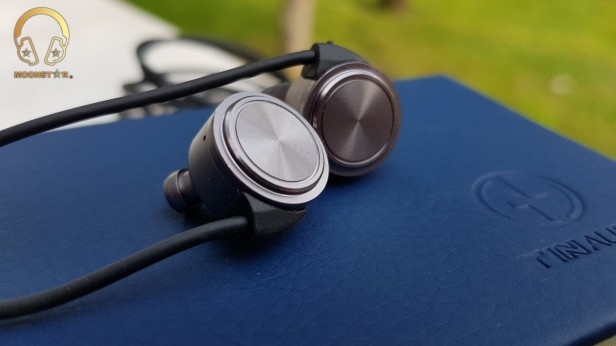
1. Disclaimer:
The Tin Audio T1 IEM was provided to me by the Tin Audio via Penon Audio for free of charge as a review sample. I am not affiliated with Tin Audio or Penon Audio beyond this review and these words reflect my true, unaltered, opinions about the product.
2. Introduction:
Tin Audio is China based Audio Brand that is know is known for its IEM’s like Tin Audio T2 and T515 that are sold for a reasonable price.
3. Price:
The MSRP price for the Tin Audio T1 is 36.,90 USD.
Purchase Link: https://penonaudio.com/tin-audio-t1.html
4. Package and Accessories:
The Tin Audio T1 comes in a small white card box with a Tin Audio Branding.


Inside it is another box that looks like a jewelry case with a blue pleather (faux leather) surface that looks and feels very nice.


This box includes the following contents;

5. Specifications:
6. Drivability:
The Tin Audio T1 has an impedance of 16 Ohms and is a very easy to drive IEM. Even Smartphones and Tablets should be able to give this IEM enough juice.
7. Design, Fit and Build Quality:
The T1 has a modern, round shaped design. The all-metal aluminum CNC processed monitor housing is very nicely crafted and doesn’t look cheap. There is a bass vent on the sides and a small grill right under the left / right markings on the inner surface of the T1.
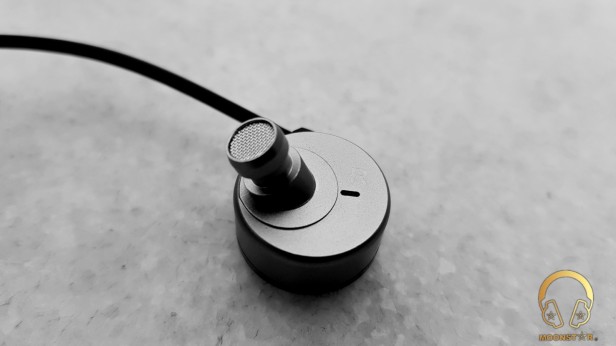
The monitor is neither small nor big and sits quite comfortable in my ears. The noise isolation of the T1 is above average.
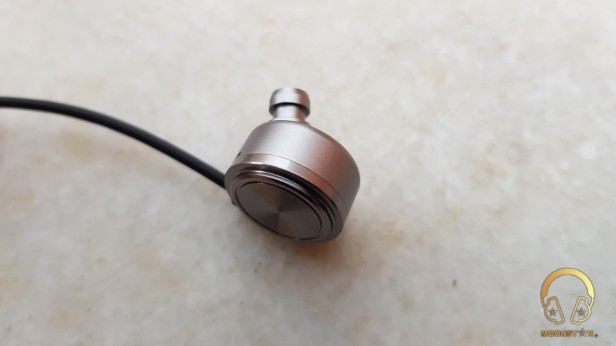
There is no cable upgrade option like on the more expensive T2 model, but the TPU coated copper cable is stiff but well made.
The cable has a nice looking built in microphone that has a good voice transmission.

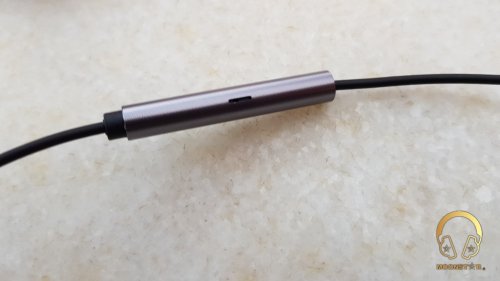
The Y Splitter of the T1 cable has the same design philosophy like the monitor and has also a round shape.
8.Albums & tracks used for this review:
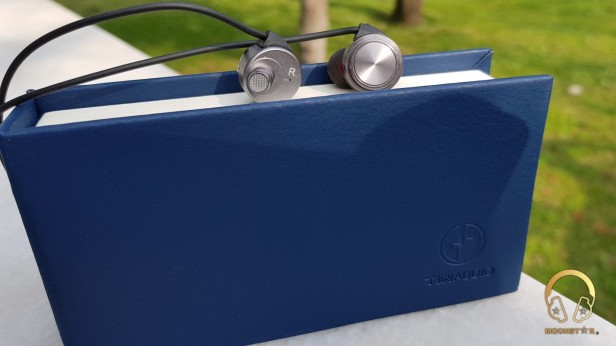
9. Sources used for this review:

10. The Sound:
This review is written after a burn-in process of apprx. 100 hours. I have used the stock silicone ear tips.
Tonality:
The Tin Audio T1 has an engaging ound signature with a warm sound tonality.
Frequencies:
The Tin Audio T1 has a warm and strong bass response that reaches quite low. The bass reproduction and quantity is quite balanced. The bass amount is not on a basshead level, but, it should be quite enough for most listeners.
There is only a small lack of sub-bass quantity that has otherwise a good depth, softness and emphasis.
The T1’s bass performance in some Megadeth or Opeth drums performances is pretty good. The speed, accent and tightness are quite impressive for this price point.
The bass quantity for genres like EDM, Pop and Trance music is quite good. There is only missing a small amount of depth.
The good thing about the bass of the T1 is, that there is no midbass hump that would otherwise make the midrange sound muffled.
The Tin Audio T1 has a nice warm sounding midrange, which gives male vocals strong presentation. Female vocals sounding warmer than normal but there is a nice sense of emotion. That means that the T1 performs better with male vocals than female. There is a small lack of clearness & transparency for female voices that is tolerable for this price range.
The instrument performance of the Tin Audio T1 is pretty good on non instrument intensive genres like rock, metal, pop and acoustic songs. The instrument separation is quite good, especially in acoustic recording.
People who prefer a warm and full sounding midrange will like the Tin Audio T1 very much.
The Tin Audio T1 has a well controlled upper mid- / treble range, which has good extension. It is not too bright and doesn’t sound ear piercing and this makes it ideal for long listening periods.
The treble speed, extensions and emphasis of instruments like crash cymbals or hi-hat etc. is quite successful.
Brass & wind instruments or violins are also very satisfying. Even high-pitched string notes don’t sounding too harsh or bright.
Soundstage:
The soundstage presentation is above average that is quite normal for this price range. There is a nice sense of space and enough air between instruments.
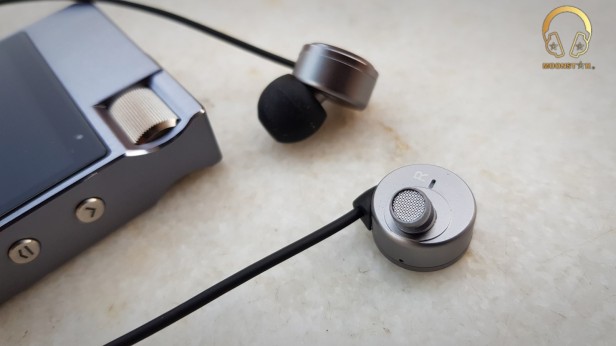
11. Comparison:
Vs. Dunu DN12:
The Dunu DN12 has more bass presence and depth compared to the T1. But the bass of the Tin Audio T1 sounds tighter and has also more speed, balance and control compared to the Dunu DN12.
The Midrange of the Dunu DN12 has a more forward presentation than the Tin Audio T1. Both IEM’s have a relative warm sounding midrange that sounds great with female vocals, but both IEM’s is missing some additional clarity and transparency, that I think is quite normal for this price range.
The midrange of the Dunu DN12 is loosing the control faster and starts to shine in higher volumes, while the Tin Audio T1 has the better overall control.
The treble range of the Tin Audio T1 sounds more forward and has also the better extension with more definition than those of the Dunu DN12. The Dunu DN12 has not enough treble speed for some complex passages.
Vs. KZ ZS6:
The KZ ZS6 is a V shaped IEM that has a relative bright tonality that is quite the opposite of the Tin Audio T1.
The T1 has more bass quantity, while the KZ ZS6 has a more sub-bass oriented presentation. The Bass speed of both IEM’s is quite good for this price range, but the T1 has the better overall control.
The midrange of the Tin Audio T1 sounds fuller without to be muffled. Male vocals sounding better with the T1, while the ZS6 has more sparkle that is needed for female vocals. But there is a problem with the KZ6, the upper treble range is too present, that makes it to a very bright sounding IEM. This makes the vocal presentation of the KZ ZS6 a bit unnatural, while the T1 sounds more natural and emotional.
The treble range of the ZS6 sounds a bit too boosted, compared to the more balanced sounding Tin Audio T1. This makes the ZS6 sometimes uncomfortable and not to a ideal source for long listening periods. The Tin Audio T1 has the better control and tonality.
The KZ ZS6 sounds airier due its sound tuning. The ZS6 has more soundstage width while the Tin Audio T1 has more soundstage depth. The instrument separation and placement is almost the same.
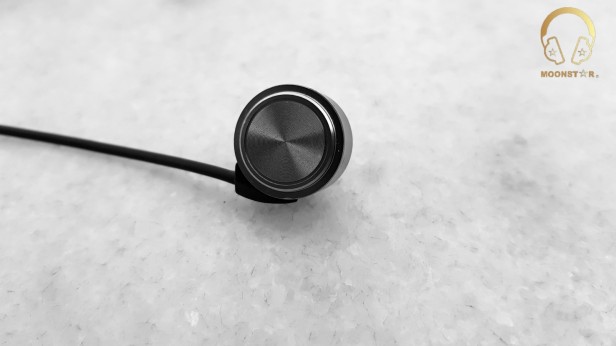
12. Conclusion:
The Tin Audio T1 is a well made IEM with a warm and full sounding tuning that is ideal for male vocals and acoustic song, that makes it to one of the best IEM’s in this price rabge.
13. Summary (plus and minus):
+ Great built quality (all-metal shell) and presentation
+ Good detail level for the price
+ Warm and emotional sound tuning
+ Build in Microphone
– No detectable cable
– Carry case is missing
This review was originally posted on my Review Blog "Moonstar Reviews" :
https://moonstarreviews.wordpress.com

1. Disclaimer:
The Tin Audio T1 IEM was provided to me by the Tin Audio via Penon Audio for free of charge as a review sample. I am not affiliated with Tin Audio or Penon Audio beyond this review and these words reflect my true, unaltered, opinions about the product.
2. Introduction:
Tin Audio is China based Audio Brand that is know is known for its IEM’s like Tin Audio T2 and T515 that are sold for a reasonable price.
3. Price:
The MSRP price for the Tin Audio T1 is 36.,90 USD.
Purchase Link: https://penonaudio.com/tin-audio-t1.html
4. Package and Accessories:
The Tin Audio T1 comes in a small white card box with a Tin Audio Branding.


Inside it is another box that looks like a jewelry case with a blue pleather (faux leather) surface that looks and feels very nice.


This box includes the following contents;
- 1 pcs. of Tin Audio T1
- 6 pairs of silicone eartips

5. Specifications:
- Driver : 12.5mm
- Impedance : 16Ω
- Frequency Response : 18-25000Hz
- Sensitivity : 102Db
- Plug : 3.5mm
- Cable : 130cm TPU Coated Copper Cable
6. Drivability:
The Tin Audio T1 has an impedance of 16 Ohms and is a very easy to drive IEM. Even Smartphones and Tablets should be able to give this IEM enough juice.
7. Design, Fit and Build Quality:
The T1 has a modern, round shaped design. The all-metal aluminum CNC processed monitor housing is very nicely crafted and doesn’t look cheap. There is a bass vent on the sides and a small grill right under the left / right markings on the inner surface of the T1.

The monitor is neither small nor big and sits quite comfortable in my ears. The noise isolation of the T1 is above average.

There is no cable upgrade option like on the more expensive T2 model, but the TPU coated copper cable is stiff but well made.
The cable has a nice looking built in microphone that has a good voice transmission.


The Y Splitter of the T1 cable has the same design philosophy like the monitor and has also a round shape.
8.Albums & tracks used for this review:
- Saskia Bruin – The Look of Love (DSF)
- George Michael – Older Album (Apple Music)
- LP (Laura Pergolizzi) – Lost On You “Live at Harvard and Stone” (Tidal Hi-Fi)
- Dire Straits – Money For Nothing (DSF)
- Mile Davis – Kind of Blue Album (Tidal Hi-fi)
- Emmanuel Pahud (Claude Debussy) – Syrinx (Apple Music)
- Aretha Franklin – I Say a Little Prayer (Apple Music)
- Diana Krall – So Wonderful (DSF)
- Otto Liebert & Luna Negra – Up Close “Album” (DSF) – Binaural Recording
- Alboran Trio’s – Cinque Lunghissimi Minuti (Tidal Hi-Fi)
- Opeth – Damnation (Tidal Hi-Fi)
- Megadeth – Sweating Bullets (Flac 16bit/44kHz)
- Daft Punk – Get Lucky (Flac 24bit/192kHz)
- Michael Jackson – Billie Jean (DSF)

9. Sources used for this review:
- IEM : Tin Audio T1, Dunu DN12, KZ ZS6
- DAP/DAC : Cayin N5II, Aune M2Pro, Chord Mojo, iPad Air 2

10. The Sound:
This review is written after a burn-in process of apprx. 100 hours. I have used the stock silicone ear tips.
Tonality:
The Tin Audio T1 has an engaging ound signature with a warm sound tonality.
Frequencies:
The Tin Audio T1 has a warm and strong bass response that reaches quite low. The bass reproduction and quantity is quite balanced. The bass amount is not on a basshead level, but, it should be quite enough for most listeners.
There is only a small lack of sub-bass quantity that has otherwise a good depth, softness and emphasis.
The T1’s bass performance in some Megadeth or Opeth drums performances is pretty good. The speed, accent and tightness are quite impressive for this price point.
The bass quantity for genres like EDM, Pop and Trance music is quite good. There is only missing a small amount of depth.
The good thing about the bass of the T1 is, that there is no midbass hump that would otherwise make the midrange sound muffled.
The Tin Audio T1 has a nice warm sounding midrange, which gives male vocals strong presentation. Female vocals sounding warmer than normal but there is a nice sense of emotion. That means that the T1 performs better with male vocals than female. There is a small lack of clearness & transparency for female voices that is tolerable for this price range.
The instrument performance of the Tin Audio T1 is pretty good on non instrument intensive genres like rock, metal, pop and acoustic songs. The instrument separation is quite good, especially in acoustic recording.
People who prefer a warm and full sounding midrange will like the Tin Audio T1 very much.
The Tin Audio T1 has a well controlled upper mid- / treble range, which has good extension. It is not too bright and doesn’t sound ear piercing and this makes it ideal for long listening periods.
The treble speed, extensions and emphasis of instruments like crash cymbals or hi-hat etc. is quite successful.
Brass & wind instruments or violins are also very satisfying. Even high-pitched string notes don’t sounding too harsh or bright.
Soundstage:
The soundstage presentation is above average that is quite normal for this price range. There is a nice sense of space and enough air between instruments.

11. Comparison:
Vs. Dunu DN12:
The Dunu DN12 has more bass presence and depth compared to the T1. But the bass of the Tin Audio T1 sounds tighter and has also more speed, balance and control compared to the Dunu DN12.
The Midrange of the Dunu DN12 has a more forward presentation than the Tin Audio T1. Both IEM’s have a relative warm sounding midrange that sounds great with female vocals, but both IEM’s is missing some additional clarity and transparency, that I think is quite normal for this price range.
The midrange of the Dunu DN12 is loosing the control faster and starts to shine in higher volumes, while the Tin Audio T1 has the better overall control.
The treble range of the Tin Audio T1 sounds more forward and has also the better extension with more definition than those of the Dunu DN12. The Dunu DN12 has not enough treble speed for some complex passages.
Vs. KZ ZS6:
The KZ ZS6 is a V shaped IEM that has a relative bright tonality that is quite the opposite of the Tin Audio T1.
The T1 has more bass quantity, while the KZ ZS6 has a more sub-bass oriented presentation. The Bass speed of both IEM’s is quite good for this price range, but the T1 has the better overall control.
The midrange of the Tin Audio T1 sounds fuller without to be muffled. Male vocals sounding better with the T1, while the ZS6 has more sparkle that is needed for female vocals. But there is a problem with the KZ6, the upper treble range is too present, that makes it to a very bright sounding IEM. This makes the vocal presentation of the KZ ZS6 a bit unnatural, while the T1 sounds more natural and emotional.
The treble range of the ZS6 sounds a bit too boosted, compared to the more balanced sounding Tin Audio T1. This makes the ZS6 sometimes uncomfortable and not to a ideal source for long listening periods. The Tin Audio T1 has the better control and tonality.
The KZ ZS6 sounds airier due its sound tuning. The ZS6 has more soundstage width while the Tin Audio T1 has more soundstage depth. The instrument separation and placement is almost the same.

12. Conclusion:
The Tin Audio T1 is a well made IEM with a warm and full sounding tuning that is ideal for male vocals and acoustic song, that makes it to one of the best IEM’s in this price rabge.
13. Summary (plus and minus):
+ Great built quality (all-metal shell) and presentation
+ Good detail level for the price
+ Warm and emotional sound tuning
+ Build in Microphone
– No detectable cable
– Carry case is missing
This review was originally posted on my Review Blog "Moonstar Reviews" :
https://moonstarreviews.wordpress.com
Moonstar
100+ Head-Fier
Pros: Nice balanced sound signature,
Good amount of detail ,
Great build quality and ergonomics,
Lots of accessories (2 x cable, 2x case, etc.)
Good amount of detail ,
Great build quality and ergonomics,
Lots of accessories (2 x cable, 2x case, etc.)
Cons: The treble sounds a bit hot
Fiio F9 Pro;
A Rich Sound in an Organic Design…
Introduction:
Many of us are familiar with Fiio Products; especially the Portable Audio Players of the X line up like X3, X5, X7 etc. Fiio joined later in to the earphone business with there first IEM that was called Fiio EX1. After the success of Fiio F9, they announced in November 2017 a new upgrade model called F9 Pro, which is the company's second hybrid in-ear monitor (IEM) model, which i will now review for you.

About Fiio:
FiiO is a Chinese HiFi brand that was established in 2007 and has experience in researching and developing countless portable music products of different types, and sell FiiO-branded products through sales agents worldwide. The brand name FiiO is composed of Fi (fidelity from HiFi) and iO (number 1&0), representing the real feeling and convenient life that digital brings to life. Meanwhile, the Chinese “飞傲” is the transliteration of FiiO, indicating the positive and innovative spirit as thriving as spring.
Disclaimer:
I would like to thank Fiio for providing me the Fiio F9 Pro as free review sample. I am not affiliated with Fiio beyond this review and these words reflect my true and unaltered, opinions about the product.
Price:
The MSRP price for the Fiio F9 Pro is 139,99 USD.
Package and Accessories:
The Fiio F9 Pro comes in a small rectangle cardboard box, which is wrapped with a glossy paper sleeve which has some illustrations and specification on about the F9 Pro on it.

This box contains the following contents;
The F9 PRO comes with three different types of silicone ear tips ((9 in totals) and one type of foam ear tips in small, medium, and large size, which are very comfortable.


The box contains one waterproof hard case/carry case, as well as a water-resistant neoprene carrying pouch. The hard case is made of a black glossy plastic material that has a very stylish design and a good form factor.

The neoprene zipper pouch is in gray and is quite useful with its small design.

Cables:
Fiio F9 Pro comes with two types of MMCX (micro-miniature coaxial) connector cables;
The first cable is has an 3.5mm SE (Single Ended) headphone jack with a L-shaped plug that is made of a tin plated cooper material with TPU coating. This cable has a microphone with line-in control.


The second cable has a 2.5mm balanced headphone jack, which comes also with an L-shaped plug. The 4 core cable is made of 5N purity OFC (Oxygen Free Cooper) wire which is has also a black TPU coating.


Cables have nice stylish left and right markings. The left channel is adorned with a splash of blue, while the end of the right channel is trimmed with a red marking for an easy identification of the audio channels. These channel ends also have a spiral texture engraved into them.

Design, Build Quality and Fit:
The shell of the Fiio F9 Pro is made of aluminum and has a very ergonomic design. The outer surface sports a water wave like design which Fiio describes as “Organic Design”. The inside layer of the F9 PRO’s shell is according to Fiio lined with plastic to both better secure the drivers and eliminate internal resonances.

You can find on the inner face of each monitor two bass vents, the L (Left) & R (Right) markings and the model description PRO. The angled nozzle of the Fiio F9 Pro is lipped and sports a fine metal filter on the top. The MMCX connectors have a solid appearance and should last for years.

The noise isolation of the Fiio F9 Pro is above average due the bass vents on the monitor, which are causing to a small amount of noise leakage.

The Fiio F9 Pro is quite comfortable due the relative small size and design shape. I was able to wear it for more than (approx) 2.5 - 3 hours without any discomfort.
Specifications:

More about the Hybrid Driver Configuration:
The Fiio F9 Pro has 2 Knowles balanced armature of the model TWFK-30017-000 + 1 PEK polymer nanocomposite dynamic driver with 9.2mm diameter under the hood.
The Knowles dual balanced armature TWFK-30017-000:
The Knowles dual balanced armature TWFK-30017-000 gives the F9 Pro immense capabilities in resolving every last detail, all in a truly powerful and overwhelming presentation of your music – the way it was meant to be heard.
The PEK Polymer Nanocomposite Dynamic Driver:
The F9 PRO utilizes a dynamic driver made of PEK (Polyether Ketone) polymer nanocomposite, known for not only being tough but also being light. This allows the F9 PRO’s dynamic driver to be lightly capable of producing quick, detailed and extended bass.

Drivability (Impedance):
The Fiio F9 Pro has an impedance of 28 ohm and is easy to drive. This makes it ideal for all type of portable Digital Audio Players (DAP’s). Even my Samsung Galaxy S8 could push the Fiio F9 Pro to very loud volume levels.
Albums & Tracks used for this review:
Sources used for this review:


The Sound:
Please Note: This review is written after a bun-in process of 120 hours. I have used the stock black silicone ear tips during this review that are included to the package.
a. Tonality and Presentation:
The Fiio F9 Pro has well balanced sound signature with a mildly recessed midrange, which sounds warmer then neutral. It is a quite dynamic sounding IEM with one of best resolution levels in this price range.
b. Frequencies:
The bass of the Fiio F9 Pro sounds quite natural in its presentation with a good amount of impact and rumble when it called for.
The sub-bass area between 20 – 50 Hz is well presented and has good body and weight, but doesn’t reach to the lowest register. The overall bass speed is pretty good and the sub-bass presentation in Martin Garrix – Animal sounds pretty fast and controlled, which makes it suitable for genres like electronic, rap etc. but not on a bass-head level.
Bass notes have more presence than sub-bass notes and this tuning gives the Fiio F9 Pro some nice dynamics without to make the sound too boomy in this frequency region. The transition between bass and midrange is also pretty well done, which is avoiding any muffled and veiled presentation of instrument and vocals.
The Fiio F9 Pro has a quite balanced (maybe mildly v shaped) sound signature as I mentioned before, where the midrange is slightly recessed. There is a good amount of air, where instruments have a nice sense of space without to sound too distance. This tuning allows Instruments to sound quite natural and gives it a clean and detailed presentation. The midrange of the Fiio F9 Pro has also some good texture and definition with some nice a level op transparency.
Both male and female vocals sounding quite natural and have a nice emotional presentation. But female vocals like Saskia Bruin, Jehan Barbur. etc. sounded in general a tad more delicious.
The upper midrange of the Fiio F9 is nicely presented, which sounded quite controlled in almost any track I have listened. I have heard only some stress, which was only noticeable in some instrument intensive passages with instruments like violin, cymbals, etc.
The treble range of the Fiio F9 Pro sounds a bit hot, but has a good level of clarity and detail retrieval. Also the treble speed and extension of the Fiio F9 Pro does a good job in some complex tracks like GoGo Penguin’s – Muration. The treble range of the Fiio F9 Pro is providing the overall sound a spacious presentation, which is a big welcome in this price range.
The treble range of the Fiio F9 Pro sounds quite detailed and has a nice level of resolution. The upper treble range doesn’t sound too bright and there is also no unnecessary boast that could cause otherwise to harshness and sibilance.
c. Soundstage and Imaging:
The Fiio F9 Pro is an airy sounding IEM with a relative wide soundstage. The stage has a good wideness but is missing of some depth. The overall performance for imaging and instrument placement is pretty good and is represented in a quite natural way.

Comparison:
Vs. Dunu Falcon-C:
The Dunu Flacon-C sounds more aggressively V shaped compared to Fiio F9 Pro, which has a more balanced tuning.
The Dunu Falcon-C has more mid-bass impact than Fiio F9 Pro, which sounds more balanced at the bass department. The overall speed and extension of the bass is nearly identical, but the Dunu Falcon-C’s bass performance is very fit depending and can vary from people to people. With a deeper insertion and the right ear tips, you can archive some nice rumble. The bass of the Fiio F9 Pro is tighter and has additional control.
The midrange of the Dunu Falcon-C sounds a bit thinner and more distant, but has good transparency and definition. The Fiio F9 Pro sounds slightly warmer and fuller at the midrange, which makes its vocal presentation more intimate. Dunu Falcon-C sounds a bit more airy than Fiio F9 Pro.
The Fiio F9 Pro has additional transparency and clarity in its midrange, but the overall resolution of the Flacon-C is nearly the same. The Dunu Falcon-C is missing some micro detail, due the more distant instrument presentation.
The upper midrange of Fiio F9 Pro sounds slightly more detailed and more controlled then those of the Dunu Falcon-C, which has otherwise a great performance.
The vocal performance of the Dunu Falcon-C is pretty good with male vocals, but some female voices like Laura Pergolizzi sounding a bit thin too for my taste where the Fiio F9 Pro performs more organic with its presentation. The Fiio F9 Pro has also a fuller and more emotional vocal presentation.
The treble range of the Dunu Falcon-C sounds detailed and airy same as the Fiio F9 Pro. The Dunu Flacon-C has the upper hand for treble extension, while the F9 Pro sounds smoother and has better control, especially in the upper treble range where the Falcon-C has some problems with instrument like cymbals and violins. The Fiio F9 Pro sounds also a bit hot compared to the Dunu Falcon-C.
The Dunu Falcon-C has a very expansive soundstage which is wider and deeper than those of the Fiio F9 Pro. But the problem is that this presentation sounds a bit unnatural especially with live recordings like acoustic, jazz, blues etc. genres, where the F9 Pro has a more organic and natural presentation.

Vs. iBasso IT01:
The Fiio F9 Pro and the iBasso IT01 are pretty good in the bass department. But there is some difference; the Fiio F9 Pro sounds more energetic, while the iBasso IT01 has a more dynamic bass presentation. The iBasso IT01 is a bit faster and has, while the F9 Pro has the upper hand for control. The bass texture on both devices is good but the IT01 has slightly more bass body. Both IEM’s sharing nearly the same level of bass resolution and there is no clear winner.
The Fiio F9 Pro sounds bit warmer than iBasso IT01, with the same V shaped tuning, which results to a distant midrange presentation. The midrange characteristic of the F9 Pro gives it additional air, while the IT01 sounds more intimate. The iBasso IT01 sounds also more transparent in the midrange department with good dynamics, while the F9 Pro has a more energetic presentation.
The vocal presentation of the IT01 tastes better with male vocals, while the Fiio F9 Pro sounded great with female vocals. The upper midrange of the IT01 has slightly more presence and sounds crisp, while the F9 Pro sounds more balanced and controlled.
Both have a well defined treble range with a nice amount of sparkle. The treble range of the Fiio F9 Pro sounds a bit hot, compared to the IT01 which feels more vivid and energetic. The iBasso IT01 has a good amount of detail retrieval, which can be compared with those of the F9 Pro.
When it comes to the soundstage both are performing well. But there is a difference in orientation; the IT01 has the wider soundstage, while the Fiio F9 Pro has more depth in presentation.
Vs. TFZ TEQUILA1:
Both the TFZ Tequila1 and the Fiio F9 Pro have a V-shaped sound signature, while the F9 Pro has more balanced tuning.
The TFZ Tequila1 has more sub-bass impact which reaches also to a lower register, while the F9 pro sound more controlled in this department. The Fiio F9 Pro has the upper hand for bass quality and speed, which sounds more mature and with additional extension, compared to the energetic presentation of the Tequila1. The Fiio F9 Pro has also the smoother bass texture then Tequila1.
The midrange of the TFZ Tequila1 sounds crisp and nice textured, while the Fiio F9 Pro sounds more natural and engaging. The detail level is of the Fiio F9 Pro is slightly higher, which has also additional transparency. The vocal presentation of the TFZ Tequila1 is a bit more forward especially with female vocals, while the Fiio F9 Pro sounds more distant and natural.
The upper midrange of the TFZ Tequila1 is more prominent then those of the F9 Pro which gives the sound a vivid presentation. But the Tequila1 has some control issues with instruments like violins, pianos etc. where the Fiio F9 Pro does a better job.
The treble range of the TFZ Tequila1 is brighter, than those of the F9 Pro. The Fiio F9 sound more balanced and has the more controlled presentation. After all, the TFZ Tequila1 performs very well for a dynamic driver IEM and the treble speed of both IEM’s is nearly identical and there is no clearly winner. Both the TFZ Tequila1 and the Fiio F9 Pro have a nicely textured top end, with good clarity.
The upper treble range of the TFZ Tequila1 sounds a bit aggressive compared to the softer presentation of the F9 Pro, but there is no unnecessary harshness. The upper treble extension of the TFZ Tequial1 is better, while the F9 Pro has the better resolution.
The difference for soundstage performance is very low, but the Fiio F9 Pro has the overall wider and deeper soundstage presentation. The placement and imaging of instruments and vocals is slightly better with the Fiio F9 Pro.
Conclusion:
Fiio did a great job by making such a good product for an affordable price. The Fiio F9 Pro sounds great out of the box with its quite detailed and balanced sound signature, has great ergonomic and a stylish appearance packed in a box with lots of accessories. Well done!
Summary (plus and minus):

This review was originally posted on "Moonstar Reviews" :
https://moonstarreviews.net
A Rich Sound in an Organic Design…
Introduction:
Many of us are familiar with Fiio Products; especially the Portable Audio Players of the X line up like X3, X5, X7 etc. Fiio joined later in to the earphone business with there first IEM that was called Fiio EX1. After the success of Fiio F9, they announced in November 2017 a new upgrade model called F9 Pro, which is the company's second hybrid in-ear monitor (IEM) model, which i will now review for you.

About Fiio:
FiiO is a Chinese HiFi brand that was established in 2007 and has experience in researching and developing countless portable music products of different types, and sell FiiO-branded products through sales agents worldwide. The brand name FiiO is composed of Fi (fidelity from HiFi) and iO (number 1&0), representing the real feeling and convenient life that digital brings to life. Meanwhile, the Chinese “飞傲” is the transliteration of FiiO, indicating the positive and innovative spirit as thriving as spring.
Disclaimer:
I would like to thank Fiio for providing me the Fiio F9 Pro as free review sample. I am not affiliated with Fiio beyond this review and these words reflect my true and unaltered, opinions about the product.
Price:
The MSRP price for the Fiio F9 Pro is 139,99 USD.
Package and Accessories:
The Fiio F9 Pro comes in a small rectangle cardboard box, which is wrapped with a glossy paper sleeve which has some illustrations and specification on about the F9 Pro on it.

This box contains the following contents;
- 1 pair x F9 Pro In-Ear Monitor
- 1 x carrying case
- 12 pairs x Ear tips (3 pairs of foam + 9 pairs of silicone)
- 1 x 3.5mm single-ended cable with in-line controls
- 1 x 2.5mm balanced cable
- 1 x Water-resistant neoprene carrying pouch
The F9 PRO comes with three different types of silicone ear tips ((9 in totals) and one type of foam ear tips in small, medium, and large size, which are very comfortable.


The box contains one waterproof hard case/carry case, as well as a water-resistant neoprene carrying pouch. The hard case is made of a black glossy plastic material that has a very stylish design and a good form factor.

The neoprene zipper pouch is in gray and is quite useful with its small design.

Cables:
Fiio F9 Pro comes with two types of MMCX (micro-miniature coaxial) connector cables;
The first cable is has an 3.5mm SE (Single Ended) headphone jack with a L-shaped plug that is made of a tin plated cooper material with TPU coating. This cable has a microphone with line-in control.


The second cable has a 2.5mm balanced headphone jack, which comes also with an L-shaped plug. The 4 core cable is made of 5N purity OFC (Oxygen Free Cooper) wire which is has also a black TPU coating.


Cables have nice stylish left and right markings. The left channel is adorned with a splash of blue, while the end of the right channel is trimmed with a red marking for an easy identification of the audio channels. These channel ends also have a spiral texture engraved into them.

Design, Build Quality and Fit:
The shell of the Fiio F9 Pro is made of aluminum and has a very ergonomic design. The outer surface sports a water wave like design which Fiio describes as “Organic Design”. The inside layer of the F9 PRO’s shell is according to Fiio lined with plastic to both better secure the drivers and eliminate internal resonances.

You can find on the inner face of each monitor two bass vents, the L (Left) & R (Right) markings and the model description PRO. The angled nozzle of the Fiio F9 Pro is lipped and sports a fine metal filter on the top. The MMCX connectors have a solid appearance and should last for years.

The noise isolation of the Fiio F9 Pro is above average due the bass vents on the monitor, which are causing to a small amount of noise leakage.

The Fiio F9 Pro is quite comfortable due the relative small size and design shape. I was able to wear it for more than (approx) 2.5 - 3 hours without any discomfort.
Specifications:
- Driver Type : Hybrid (1 x 9.2mm DD + 2 BA Drivers (Knowles TWFK-30017-000)
- Frequency response : 15Hz ~ 40kHz
- Sensitivity : 106 dB/mW
- Impedance : 28 Ω
- Cord length : 1.2 m
- Weight : About 3.76 g/per unit
- Color : Titanium (with "PRO" mark on the Y-splitter and the earbuds)
- Detachable Cables : 1 x 2.5mm Balanced and 1x 3.5mm SE Cable with MMCX connectors

More about the Hybrid Driver Configuration:
The Fiio F9 Pro has 2 Knowles balanced armature of the model TWFK-30017-000 + 1 PEK polymer nanocomposite dynamic driver with 9.2mm diameter under the hood.
The Knowles dual balanced armature TWFK-30017-000:
The Knowles dual balanced armature TWFK-30017-000 gives the F9 Pro immense capabilities in resolving every last detail, all in a truly powerful and overwhelming presentation of your music – the way it was meant to be heard.
The PEK Polymer Nanocomposite Dynamic Driver:
The F9 PRO utilizes a dynamic driver made of PEK (Polyether Ketone) polymer nanocomposite, known for not only being tough but also being light. This allows the F9 PRO’s dynamic driver to be lightly capable of producing quick, detailed and extended bass.

Drivability (Impedance):
The Fiio F9 Pro has an impedance of 28 ohm and is easy to drive. This makes it ideal for all type of portable Digital Audio Players (DAP’s). Even my Samsung Galaxy S8 could push the Fiio F9 Pro to very loud volume levels.
Albums & Tracks used for this review:
- Martin Garix – Animal (Tidal Hi-Fi)
- Daft Punk – Get Lucky (Flac 24bit/192kHz)
- Lorde – Team (Flac 24bit/48kHz)
- Michael Jackson - Billie Jean (DSF)
- Future Heroes – Another World (Tidal Hi-fi)
- Saskia Bruin – The Look of Love (DSF)
- Diana Krall - So Wonderful (DSF)
- Jeah Barbur – Seni Seviyorum (Spotify)
- LP (Laura Pergolizzi) – Lost On You “Live at Harvard and Stone” (Tidal Hi-Fi)
- George Micahel – Older (Tidal Hi-Fi)
- Mile Davis – Kind of Blue Album (Tidal Hi-fi)
- Dire Straits – Money For Nothing (DSF)
- Emmanuel Pahud (Claude Debussy) – Syrinx (Apple Music)
- Otto Liebert & Luna Negra – Up Close “Album” (DSF) – Binaural Recording
- Alboran Trio – Autumn Mist (Tidal Hi-Fi)
- GoGo Penguin – Fanfares (Tidal Hi-Fi)
- Opeth – Damnation (Tidal Hi-Fi)
- Megadeth – Sweating Bullets (Flac 16bit/44kHz)
Sources used for this review:
- IEM : Fiio F9 Pro, iBasso IT01, TFZ TEQUILA1, Dunu Falcon-C
- DAP/DAC : Cayin N5II, Chord Mojo, Hifiman HM603s, Nexum Aqua+


The Sound:
Please Note: This review is written after a bun-in process of 120 hours. I have used the stock black silicone ear tips during this review that are included to the package.
a. Tonality and Presentation:
The Fiio F9 Pro has well balanced sound signature with a mildly recessed midrange, which sounds warmer then neutral. It is a quite dynamic sounding IEM with one of best resolution levels in this price range.
b. Frequencies:
The bass of the Fiio F9 Pro sounds quite natural in its presentation with a good amount of impact and rumble when it called for.
The sub-bass area between 20 – 50 Hz is well presented and has good body and weight, but doesn’t reach to the lowest register. The overall bass speed is pretty good and the sub-bass presentation in Martin Garrix – Animal sounds pretty fast and controlled, which makes it suitable for genres like electronic, rap etc. but not on a bass-head level.
Bass notes have more presence than sub-bass notes and this tuning gives the Fiio F9 Pro some nice dynamics without to make the sound too boomy in this frequency region. The transition between bass and midrange is also pretty well done, which is avoiding any muffled and veiled presentation of instrument and vocals.
The Fiio F9 Pro has a quite balanced (maybe mildly v shaped) sound signature as I mentioned before, where the midrange is slightly recessed. There is a good amount of air, where instruments have a nice sense of space without to sound too distance. This tuning allows Instruments to sound quite natural and gives it a clean and detailed presentation. The midrange of the Fiio F9 Pro has also some good texture and definition with some nice a level op transparency.
Both male and female vocals sounding quite natural and have a nice emotional presentation. But female vocals like Saskia Bruin, Jehan Barbur. etc. sounded in general a tad more delicious.
The upper midrange of the Fiio F9 is nicely presented, which sounded quite controlled in almost any track I have listened. I have heard only some stress, which was only noticeable in some instrument intensive passages with instruments like violin, cymbals, etc.
The treble range of the Fiio F9 Pro sounds a bit hot, but has a good level of clarity and detail retrieval. Also the treble speed and extension of the Fiio F9 Pro does a good job in some complex tracks like GoGo Penguin’s – Muration. The treble range of the Fiio F9 Pro is providing the overall sound a spacious presentation, which is a big welcome in this price range.
The treble range of the Fiio F9 Pro sounds quite detailed and has a nice level of resolution. The upper treble range doesn’t sound too bright and there is also no unnecessary boast that could cause otherwise to harshness and sibilance.
c. Soundstage and Imaging:
The Fiio F9 Pro is an airy sounding IEM with a relative wide soundstage. The stage has a good wideness but is missing of some depth. The overall performance for imaging and instrument placement is pretty good and is represented in a quite natural way.

Comparison:
Vs. Dunu Falcon-C:
The Dunu Flacon-C sounds more aggressively V shaped compared to Fiio F9 Pro, which has a more balanced tuning.
The Dunu Falcon-C has more mid-bass impact than Fiio F9 Pro, which sounds more balanced at the bass department. The overall speed and extension of the bass is nearly identical, but the Dunu Falcon-C’s bass performance is very fit depending and can vary from people to people. With a deeper insertion and the right ear tips, you can archive some nice rumble. The bass of the Fiio F9 Pro is tighter and has additional control.
The midrange of the Dunu Falcon-C sounds a bit thinner and more distant, but has good transparency and definition. The Fiio F9 Pro sounds slightly warmer and fuller at the midrange, which makes its vocal presentation more intimate. Dunu Falcon-C sounds a bit more airy than Fiio F9 Pro.
The Fiio F9 Pro has additional transparency and clarity in its midrange, but the overall resolution of the Flacon-C is nearly the same. The Dunu Falcon-C is missing some micro detail, due the more distant instrument presentation.
The upper midrange of Fiio F9 Pro sounds slightly more detailed and more controlled then those of the Dunu Falcon-C, which has otherwise a great performance.
The vocal performance of the Dunu Falcon-C is pretty good with male vocals, but some female voices like Laura Pergolizzi sounding a bit thin too for my taste where the Fiio F9 Pro performs more organic with its presentation. The Fiio F9 Pro has also a fuller and more emotional vocal presentation.
The treble range of the Dunu Falcon-C sounds detailed and airy same as the Fiio F9 Pro. The Dunu Flacon-C has the upper hand for treble extension, while the F9 Pro sounds smoother and has better control, especially in the upper treble range where the Falcon-C has some problems with instrument like cymbals and violins. The Fiio F9 Pro sounds also a bit hot compared to the Dunu Falcon-C.
The Dunu Falcon-C has a very expansive soundstage which is wider and deeper than those of the Fiio F9 Pro. But the problem is that this presentation sounds a bit unnatural especially with live recordings like acoustic, jazz, blues etc. genres, where the F9 Pro has a more organic and natural presentation.

Vs. iBasso IT01:
The Fiio F9 Pro and the iBasso IT01 are pretty good in the bass department. But there is some difference; the Fiio F9 Pro sounds more energetic, while the iBasso IT01 has a more dynamic bass presentation. The iBasso IT01 is a bit faster and has, while the F9 Pro has the upper hand for control. The bass texture on both devices is good but the IT01 has slightly more bass body. Both IEM’s sharing nearly the same level of bass resolution and there is no clear winner.
The Fiio F9 Pro sounds bit warmer than iBasso IT01, with the same V shaped tuning, which results to a distant midrange presentation. The midrange characteristic of the F9 Pro gives it additional air, while the IT01 sounds more intimate. The iBasso IT01 sounds also more transparent in the midrange department with good dynamics, while the F9 Pro has a more energetic presentation.
The vocal presentation of the IT01 tastes better with male vocals, while the Fiio F9 Pro sounded great with female vocals. The upper midrange of the IT01 has slightly more presence and sounds crisp, while the F9 Pro sounds more balanced and controlled.
Both have a well defined treble range with a nice amount of sparkle. The treble range of the Fiio F9 Pro sounds a bit hot, compared to the IT01 which feels more vivid and energetic. The iBasso IT01 has a good amount of detail retrieval, which can be compared with those of the F9 Pro.
When it comes to the soundstage both are performing well. But there is a difference in orientation; the IT01 has the wider soundstage, while the Fiio F9 Pro has more depth in presentation.
Vs. TFZ TEQUILA1:
Both the TFZ Tequila1 and the Fiio F9 Pro have a V-shaped sound signature, while the F9 Pro has more balanced tuning.
The TFZ Tequila1 has more sub-bass impact which reaches also to a lower register, while the F9 pro sound more controlled in this department. The Fiio F9 Pro has the upper hand for bass quality and speed, which sounds more mature and with additional extension, compared to the energetic presentation of the Tequila1. The Fiio F9 Pro has also the smoother bass texture then Tequila1.
The midrange of the TFZ Tequila1 sounds crisp and nice textured, while the Fiio F9 Pro sounds more natural and engaging. The detail level is of the Fiio F9 Pro is slightly higher, which has also additional transparency. The vocal presentation of the TFZ Tequila1 is a bit more forward especially with female vocals, while the Fiio F9 Pro sounds more distant and natural.
The upper midrange of the TFZ Tequila1 is more prominent then those of the F9 Pro which gives the sound a vivid presentation. But the Tequila1 has some control issues with instruments like violins, pianos etc. where the Fiio F9 Pro does a better job.
The treble range of the TFZ Tequila1 is brighter, than those of the F9 Pro. The Fiio F9 sound more balanced and has the more controlled presentation. After all, the TFZ Tequila1 performs very well for a dynamic driver IEM and the treble speed of both IEM’s is nearly identical and there is no clearly winner. Both the TFZ Tequila1 and the Fiio F9 Pro have a nicely textured top end, with good clarity.
The upper treble range of the TFZ Tequila1 sounds a bit aggressive compared to the softer presentation of the F9 Pro, but there is no unnecessary harshness. The upper treble extension of the TFZ Tequial1 is better, while the F9 Pro has the better resolution.
The difference for soundstage performance is very low, but the Fiio F9 Pro has the overall wider and deeper soundstage presentation. The placement and imaging of instruments and vocals is slightly better with the Fiio F9 Pro.
Conclusion:
Fiio did a great job by making such a good product for an affordable price. The Fiio F9 Pro sounds great out of the box with its quite detailed and balanced sound signature, has great ergonomic and a stylish appearance packed in a box with lots of accessories. Well done!
Summary (plus and minus):
- + Nice balanced sound signature
- + Good amount of detail
- + Great build quality and ergonomics
- + Lots of accessories (2 x cable, 2x case, etc.)
- - The treble sounds a bit hot

This review was originally posted on "Moonstar Reviews" :
https://moonstarreviews.net
Moonstar
100+ Head-Fier
Pros: High price to performance ratio,
Good detail and clarity,
Nice and solid metal housing,
Many cables (great to see a free Bluetooth cable)
Good detail and clarity,
Nice and solid metal housing,
Many cables (great to see a free Bluetooth cable)
Cons: No backup for the small sound filters,
Missing of some dynamism of the sound,
Only two pairs of silicone eartips, but lots of foam tips
Missing of some dynamism of the sound,
Only two pairs of silicone eartips, but lots of foam tips
Magaosi K3Pro 2.0
The bang for The buck!
Introduction:
Magaosi is a brand of HiLisening Co. that is located in Guangdong - China. The Magaosi product line is covering products series marked with M, BK, K, DT and B. The M series have mainly a metallic housing with Balance Armature and /or Hybrid Drivers. The BK series have wood housing with Balance Armature and/or Dynamic Hybrid drivers.
The K3Pro 2.0 is the updated version of the original K3Pro with additional upgrade cable, which belongs to the top of the line product category with 2 (BA) +1 (DD) Hybrid driver configuration.

Disclaimer:
Magaosi K3Pro 2.0 was provided to me by Magaosi via Penon Audio for free of charge as a review sample. I am not affiliated with Magaosi or Penon Audio beyond this review and these words reflect my true, unaltered, opinions about the product.
The Price:
The Magaosi K3Pro 2.0 is available on Penon Audio for 109,90 USD.
Purchase link: https://penonaudio.com/magaosi-k3-pro.html
Package and Accessories:
The Magaosi K3.Pro 2.0 comes in a black cardboard box with the Magaosi Logo, which is printed in gold color. This box has a transparent plastic (pvc) window, where you can see the Magaosi K3Pro 2.0
This box containing the following items/accessories;


The carry bag that comes with the Magaosi K3Pro 2.0 is made of a faux leather coating, which is well made and quite useful with its dimensions.
The foam and semi transparent (white) silicone ear tips are quite comfortable.
There are also 2 different types of sound tuning filters. The black one came preinstalled, which boost the treble range by a small but noticeable margin. The silver sounds more balanced and is my favorite filter, which I will also use during this review.

I would advice you to be carefully while replacing the filters, because these filters are very small and there is no backup included to the package.

Cables:
The Magaosi K3Pro 2.0 comes with 3 different cables that are included to the package.
The first cable comes with a microphone that was compatible with my Samsung Galaxy S8+ with Android OS.

The cable is in black and has a straight plug that is made of metal.

The MMCX connectors are also made of metal and have Left and Right markings. The ear guides are a bit stiff but without any discomfort.

The second cable is the upgrade cable, which has a stylish appearance with a transparent coating and thick, braided cable wire that sports also a Y splitter, which is made of metal and a plastic chin slider.

The MMCX connectors and the headphone plug have a housing that is made of metal. These MMCX connectors are marked in red for right and blue the left channel.

The 3.5mm headphone jack (TRRS) has an angled connector housing that looks quite stylish with its design.

The third and cable, which comes with the Magaosi K3Pro 2.0 is a Bluetooth cable with build in DAC and amplifier with build a build in battery, which is in my opinion a very nice addition.

This Bluetooth cable is lightweight and made of plastic material. There are 3 buttons and one mic for phone conversations. The sound is not bad at all for a free accessory, while the battery life is approx. 2.5 hours.
Design and Build Quality:
The Magaosi K3Pro 2.0 is an In-Ear Monitor with a pretty small size and ergonomic design, which is made of a all metal aluminum alloy that looks and feels quite solid in its appearance.

The Magaosi K3Pro 2.0 is available in 3 different colors; those are gray, silver and blue. My review unit came gray color that looks pretty nice.

I have read that some units at the first batch of the original K3Pro have had connector issues, which has been solved according to Magaosi. The MMCX (Micro Miniature Coaxial) connectors of my Magaosi K3Pro 2.0 review units have had no interruption issues during this review.
The nozzle is slightly angled (around 45 degrees) and has a detachable sound filter for fine-tuning of the sound.

Fit, Comfort and Isolation:
The Magaosi K3Pro 2.0 is an In-Ear Monitor (IEM) with a small and ergonomic design. I didn’t have had any discomfort issues due this review and could wear it for many ours without any noticeable fatigue my ears. The noise isolation of the K3Pro 2.0 is above average and good enough to use it in quite noise public environments, but not ideal for the stage.

Some Technical Specifications:
Drivability (Impedance):
The Magaosi K3Pro 2.0 is a sensitive IEM, which is easy to drive from almost any source. The nominal impedance that is 16 Ohm makes it suitable for the use with portable devices like Smartphones, Tablet’s or DAP’s without the need of any amplifier.
Sources:
a) In Ear Monitor : Magaosi K3Pro, MEE audio Pinnacle P1,
b) DAP/DAC : Hidizs HD1000, Cayin N5II, Chord Mojo, Ipad Air2

c) Albums & tracks used for this review:
Sound Analysis and Comparisons:
Please note that this review is written after a burn-in process of more than 120 hours. I have use the semi transparent silicone eartips, the silver filter and the upgrade cable that are included to the package.
Please note that this is an entry level mid-fi IEM and all my comments about the sound quality are in consideration of this price range.
Sound Signature and Tonality:
The Magaosi K3Pro 2.0 has a slightly V shaped sound signature with a warmer than neutral tonality that is adding some musicality to the overall presentation.
Bass:
The Magasoi K3Pro is a solid performer in the bass department, which is focused on the mid-bass area.
The sub-bass is there but not in the foreground or better say the highlight of this IEM. It is reachs to a pretty low register, but is missing a bit of rumble and weight, which offers otherwise great control and texture.
The bass, especially the mid-bass area sounds quite controlled and has good speed characteristics. The K3Pro have had a very good performance with Morbid Angel’s – Drum Check, which is my new reference song regarding to speed and control, which has show me how good a Chi-fi IEM in this price category can perform.
The mid-bass are a real highlight of this IEM. It extends well, has good texture and nice slam when it called for. There is a nice transition between bass and the midrange, where I didn’t hear any remarkable bleed of the mid-bass to the midrange.
Some instruments like drums, bass guitars etc. sounding quite natural and are exiting.
Midrange:
The midrange sounds clean and transparent, with velvet like presentation. It doesn’t sounds thin or very full and has a nice balanced presentation. There is a nice amount of warmth that comes fro the lower midrange, which is avoiding a dry and too analytical presentation and is adding musicality to the overall presentation.
Vocals are one step behind of instruments and sounding in a quite natural way. Here is also a nice sense of space and where you can find enough air between instruments. Both, male and female vocals are represented in quite realistic way and have enough emotion to bring you in to the middle of the stage. The midrange shares also some nice definition, with pretty good detail retrieval at this price range, where string instruments like violin, guitar etc. have a nice presentation.
The upper midrange of the Magaosi K3Pro 2.0 sounds dynamic and fairly controlled, without to be overly harsh or ear piercing. People who are sensitive in this regarding will like the tuning of the K3Pro 2.0.
Treble:
The Magaosi K3Pro 2.0 has a quite balanced treble presentation that doesn’t sounds too bright or harsh and the overall control in this area is pretty good for an IEM in the mid-fi category.
The clarity level and definition is pretty good and the general treble presentation is at the natural and relaxing side of IEM’s with a V Shaped sound signature.
There is also a nice rendering of air that opens space for instruments, which is especially good for songs with many instruments like Charly Antolini's - Duwadjuwandadu. The treble extension has an above average performance, with no significant sibilance thanks to the fairly balanced tuning in the higher frequency region of the Magaosi K3Pro 2.0.
The upper treble region has a fairly good level of resolution, together with a crisp and airy presentation, which is a great ability especially in this price category.
Soundstage:
The soundstage of the Magaosi K3Pro 2.0 is quite expansive with its wideness, while the depth is in a moderate level. Instruments are placed in a horizontal direction where the vocal is in the middle of the stage.

Some Comparisons:
Vs. iBasso IT01
The iBasso IT01 is a very capable IEM with a very energetic and crisp presentation.
When I compare the iBasso IT01 with the Magaosi K3Pro 2.0, one of the first noticeable differences is in the treble response. The treble range of the IT01 is more energetic and crisp than those of the K3Pro 2.0, which has less presence, especially in the upper treble range. The Magaosi IEM maybe doesn’t sounds as energetic as the IT01 in this department, but offers better balance and has also slightly more control.
Instruments and vocals are slightly more upfront with the iBasso IT01, while the Magaosi K3Pro 2.0 has a touch warmer and darker presentation. The difference is very low, but the K3Pro 2.0 offers additional detail level and slightly better separation of instruments. The upper midrange of the iBasso IT01 sounds a bit more lifelike.
The iBasso IT01 has more bass impact and rumble, which makes the overall presentation more dynamic. The Magaosi K3Pro 2.0 on the other hand has slightly better extension. The bass speed of booth IEM is nearly identical maybe a touch faster with the IT01, while the K3Pro 2.0 sounds a bit more controlled.
The soundstage of the Magaosi K3Pro 2.0 is slightly deeper then those of the iBasso IT01 while both are nearly identical for wideness.
Vs. MEE audio Pinnacle P2
The MEE audio Pinnacle P2 and Magaosi K3Pro 2.0 have similarities for tonality; both are on the warmer side of neutral, while the Pinnacle P2 has slightly more bass emphasis a bit more roll-off of at the treble range.
The Magaosi K3Pro 2.0 sound a bit brighter and has a smooth and fairly controlled treble tuning. The Pinnacle P2 on the other hand sounds darker and has a noticeable roll-off in treble range. The Magaosi K3Pro 2.0 is the more capable IEM, due the better extension and more authority in the treble range. The Magaosi K3Pro 2.0 is also slightly faster, especially with music genres like metal music, for which are both not very suitable.
The midrange of the Pinncale P2 sounds a bit veiled and grainy compared to the more transparent tuning of the K3Pro 2.0. The Pinnacle P2 sounds engaging but a bit too thin and dry, especially while listening to male vocals. The Magaosi IEM sounds also a bit more detail and has the better instrument separation. I can also confirm that the upper midrange of the Pinnacle P2 is slightly more forward and has a bit more definition, while K3Pro 2.0 offers better control.
The iBasso IT01 has more bass impact and rumble, which makes the overall presentation more dynamic. The Magaosi K3Pro 2.0 on the other hand has the slightly better extension, while the speed of both IEM's is nearly identical maybe a touch faster with the IT01.
The soundstage of the Magaosi K3Pro 2.0 is slightly deeper then those of the iBasso IT01 while both are nearly identical for wideness.
Conclusion:
I can easily say that the Magaosi K3Pro 2.0 is a real bang for the buck. It has a good sound, a solid metal housing (no plastic used) and lots of accessories, which makes it to one of the best options in this price category.
Pros and Cons:

.
.
.
This review was originally posted on "Moonstar Reviews" :
https://moonstarreviews.net
.
.
.
.
The bang for The buck!
Introduction:
Magaosi is a brand of HiLisening Co. that is located in Guangdong - China. The Magaosi product line is covering products series marked with M, BK, K, DT and B. The M series have mainly a metallic housing with Balance Armature and /or Hybrid Drivers. The BK series have wood housing with Balance Armature and/or Dynamic Hybrid drivers.
The K3Pro 2.0 is the updated version of the original K3Pro with additional upgrade cable, which belongs to the top of the line product category with 2 (BA) +1 (DD) Hybrid driver configuration.

Disclaimer:
Magaosi K3Pro 2.0 was provided to me by Magaosi via Penon Audio for free of charge as a review sample. I am not affiliated with Magaosi or Penon Audio beyond this review and these words reflect my true, unaltered, opinions about the product.
The Price:
The Magaosi K3Pro 2.0 is available on Penon Audio for 109,90 USD.
Purchase link: https://penonaudio.com/magaosi-k3-pro.html
Package and Accessories:
The Magaosi K3.Pro 2.0 comes in a black cardboard box with the Magaosi Logo, which is printed in gold color. This box has a transparent plastic (pvc) window, where you can see the Magaosi K3Pro 2.0
This box containing the following items/accessories;
- 1 pair x K3Pro 2.0
- 1 x MMCX cable with L-shaped plug
- 1 x MMCX cable with Mic and straight plug
- 1 x MMCX Bluetooth cable
- 1 pair x Silver & Gray tuning filters
- 1 pair x L and S sized silicone eartips
- 1 pair x L/M/S sized foam eartips
- 1 x USB cable for charging of the Bluetooth cable
- 1 x Cary Case


The carry bag that comes with the Magaosi K3Pro 2.0 is made of a faux leather coating, which is well made and quite useful with its dimensions.
The foam and semi transparent (white) silicone ear tips are quite comfortable.
There are also 2 different types of sound tuning filters. The black one came preinstalled, which boost the treble range by a small but noticeable margin. The silver sounds more balanced and is my favorite filter, which I will also use during this review.

I would advice you to be carefully while replacing the filters, because these filters are very small and there is no backup included to the package.

Cables:
The Magaosi K3Pro 2.0 comes with 3 different cables that are included to the package.
The first cable comes with a microphone that was compatible with my Samsung Galaxy S8+ with Android OS.

The cable is in black and has a straight plug that is made of metal.

The MMCX connectors are also made of metal and have Left and Right markings. The ear guides are a bit stiff but without any discomfort.

The second cable is the upgrade cable, which has a stylish appearance with a transparent coating and thick, braided cable wire that sports also a Y splitter, which is made of metal and a plastic chin slider.

The MMCX connectors and the headphone plug have a housing that is made of metal. These MMCX connectors are marked in red for right and blue the left channel.

The 3.5mm headphone jack (TRRS) has an angled connector housing that looks quite stylish with its design.

The third and cable, which comes with the Magaosi K3Pro 2.0 is a Bluetooth cable with build in DAC and amplifier with build a build in battery, which is in my opinion a very nice addition.

This Bluetooth cable is lightweight and made of plastic material. There are 3 buttons and one mic for phone conversations. The sound is not bad at all for a free accessory, while the battery life is approx. 2.5 hours.
Design and Build Quality:
The Magaosi K3Pro 2.0 is an In-Ear Monitor with a pretty small size and ergonomic design, which is made of a all metal aluminum alloy that looks and feels quite solid in its appearance.

The Magaosi K3Pro 2.0 is available in 3 different colors; those are gray, silver and blue. My review unit came gray color that looks pretty nice.

I have read that some units at the first batch of the original K3Pro have had connector issues, which has been solved according to Magaosi. The MMCX (Micro Miniature Coaxial) connectors of my Magaosi K3Pro 2.0 review units have had no interruption issues during this review.
The nozzle is slightly angled (around 45 degrees) and has a detachable sound filter for fine-tuning of the sound.

Fit, Comfort and Isolation:
The Magaosi K3Pro 2.0 is an In-Ear Monitor (IEM) with a small and ergonomic design. I didn’t have had any discomfort issues due this review and could wear it for many ours without any noticeable fatigue my ears. The noise isolation of the K3Pro 2.0 is above average and good enough to use it in quite noise public environments, but not ideal for the stage.

Some Technical Specifications:
- Driver Configuration : 2x Balanced Armature + 1x Dynamic Driver (Hybrid Configuration)
- Impedance : 16 Ω
- Frequency Response : 20Hz - 30 KHz
- Sensitivity : 120db
- Connector Type : MMCX
- Interface : 3.5mm (single ended)
- Cable length : 1.2m±5cm
- Weight : 30g
Drivability (Impedance):
The Magaosi K3Pro 2.0 is a sensitive IEM, which is easy to drive from almost any source. The nominal impedance that is 16 Ohm makes it suitable for the use with portable devices like Smartphones, Tablet’s or DAP’s without the need of any amplifier.
Sources:
a) In Ear Monitor : Magaosi K3Pro, MEE audio Pinnacle P1,
b) DAP/DAC : Hidizs HD1000, Cayin N5II, Chord Mojo, Ipad Air2

c) Albums & tracks used for this review:
- Sertab Erener – Aşk (Spotify)
- Jehan Barbur – Yollar (Spotify)
- Minor Empire – Bulbulum Altin Kafeste (Spotify)
- London Grammar – Interlud (Live) (Flac 24bit/44kHz)
- Morbid Angel – Drum Check (Spotify)
- Liquid Tension Experiment 2 – Acid Rain (Spotify)
- Metallica – Sad But True (Flac 24bit/96kHz)
- Opeth – Damnation (Tidal Hi-Fi)
- Megadeth – Sweating Bullets (Flac 16bit/44kHz)
- The Glitch Mob – Mind of A Beast (Flac 24bit/96kHz)
- Lorde – Team (Flac 24bit/48kHz)
- Tom Player – Resonace Theory “Album” (Tidal Hi-Fi)
- Deeperise feat. Jabbar – Move On (Spotify)
- Dire Straits – Money for Nothing (DSD 64)
- Steve Srauss – Mr. Bones (Flac 16bit/44kHz)
- Gothart – Jovano, Jovanke (Spotify)
- Casey Abrams – Robot Lover (Tidal Hi-Fi)
- Otto Liebert & Luna Negra – The River (DSF) – Binaural Recording
- GoGo Penguin – Fanfares (Tidal Hi-Fi)
- Charly Antolini’s – Duwadjuwandadu (Tidal Hi-Fi)
Sound Analysis and Comparisons:
Please note that this review is written after a burn-in process of more than 120 hours. I have use the semi transparent silicone eartips, the silver filter and the upgrade cable that are included to the package.
Please note that this is an entry level mid-fi IEM and all my comments about the sound quality are in consideration of this price range.
Sound Signature and Tonality:
The Magaosi K3Pro 2.0 has a slightly V shaped sound signature with a warmer than neutral tonality that is adding some musicality to the overall presentation.
Bass:
The Magasoi K3Pro is a solid performer in the bass department, which is focused on the mid-bass area.
The sub-bass is there but not in the foreground or better say the highlight of this IEM. It is reachs to a pretty low register, but is missing a bit of rumble and weight, which offers otherwise great control and texture.
The bass, especially the mid-bass area sounds quite controlled and has good speed characteristics. The K3Pro have had a very good performance with Morbid Angel’s – Drum Check, which is my new reference song regarding to speed and control, which has show me how good a Chi-fi IEM in this price category can perform.
The mid-bass are a real highlight of this IEM. It extends well, has good texture and nice slam when it called for. There is a nice transition between bass and the midrange, where I didn’t hear any remarkable bleed of the mid-bass to the midrange.
Some instruments like drums, bass guitars etc. sounding quite natural and are exiting.
Midrange:
The midrange sounds clean and transparent, with velvet like presentation. It doesn’t sounds thin or very full and has a nice balanced presentation. There is a nice amount of warmth that comes fro the lower midrange, which is avoiding a dry and too analytical presentation and is adding musicality to the overall presentation.
Vocals are one step behind of instruments and sounding in a quite natural way. Here is also a nice sense of space and where you can find enough air between instruments. Both, male and female vocals are represented in quite realistic way and have enough emotion to bring you in to the middle of the stage. The midrange shares also some nice definition, with pretty good detail retrieval at this price range, where string instruments like violin, guitar etc. have a nice presentation.
The upper midrange of the Magaosi K3Pro 2.0 sounds dynamic and fairly controlled, without to be overly harsh or ear piercing. People who are sensitive in this regarding will like the tuning of the K3Pro 2.0.
Treble:
The Magaosi K3Pro 2.0 has a quite balanced treble presentation that doesn’t sounds too bright or harsh and the overall control in this area is pretty good for an IEM in the mid-fi category.
The clarity level and definition is pretty good and the general treble presentation is at the natural and relaxing side of IEM’s with a V Shaped sound signature.
There is also a nice rendering of air that opens space for instruments, which is especially good for songs with many instruments like Charly Antolini's - Duwadjuwandadu. The treble extension has an above average performance, with no significant sibilance thanks to the fairly balanced tuning in the higher frequency region of the Magaosi K3Pro 2.0.
The upper treble region has a fairly good level of resolution, together with a crisp and airy presentation, which is a great ability especially in this price category.
Soundstage:
The soundstage of the Magaosi K3Pro 2.0 is quite expansive with its wideness, while the depth is in a moderate level. Instruments are placed in a horizontal direction where the vocal is in the middle of the stage.

Some Comparisons:
Vs. iBasso IT01
The iBasso IT01 is a very capable IEM with a very energetic and crisp presentation.
When I compare the iBasso IT01 with the Magaosi K3Pro 2.0, one of the first noticeable differences is in the treble response. The treble range of the IT01 is more energetic and crisp than those of the K3Pro 2.0, which has less presence, especially in the upper treble range. The Magaosi IEM maybe doesn’t sounds as energetic as the IT01 in this department, but offers better balance and has also slightly more control.
Instruments and vocals are slightly more upfront with the iBasso IT01, while the Magaosi K3Pro 2.0 has a touch warmer and darker presentation. The difference is very low, but the K3Pro 2.0 offers additional detail level and slightly better separation of instruments. The upper midrange of the iBasso IT01 sounds a bit more lifelike.
The iBasso IT01 has more bass impact and rumble, which makes the overall presentation more dynamic. The Magaosi K3Pro 2.0 on the other hand has slightly better extension. The bass speed of booth IEM is nearly identical maybe a touch faster with the IT01, while the K3Pro 2.0 sounds a bit more controlled.
The soundstage of the Magaosi K3Pro 2.0 is slightly deeper then those of the iBasso IT01 while both are nearly identical for wideness.
Vs. MEE audio Pinnacle P2
The MEE audio Pinnacle P2 and Magaosi K3Pro 2.0 have similarities for tonality; both are on the warmer side of neutral, while the Pinnacle P2 has slightly more bass emphasis a bit more roll-off of at the treble range.
The Magaosi K3Pro 2.0 sound a bit brighter and has a smooth and fairly controlled treble tuning. The Pinnacle P2 on the other hand sounds darker and has a noticeable roll-off in treble range. The Magaosi K3Pro 2.0 is the more capable IEM, due the better extension and more authority in the treble range. The Magaosi K3Pro 2.0 is also slightly faster, especially with music genres like metal music, for which are both not very suitable.
The midrange of the Pinncale P2 sounds a bit veiled and grainy compared to the more transparent tuning of the K3Pro 2.0. The Pinnacle P2 sounds engaging but a bit too thin and dry, especially while listening to male vocals. The Magaosi IEM sounds also a bit more detail and has the better instrument separation. I can also confirm that the upper midrange of the Pinnacle P2 is slightly more forward and has a bit more definition, while K3Pro 2.0 offers better control.
The iBasso IT01 has more bass impact and rumble, which makes the overall presentation more dynamic. The Magaosi K3Pro 2.0 on the other hand has the slightly better extension, while the speed of both IEM's is nearly identical maybe a touch faster with the IT01.
The soundstage of the Magaosi K3Pro 2.0 is slightly deeper then those of the iBasso IT01 while both are nearly identical for wideness.
Conclusion:
I can easily say that the Magaosi K3Pro 2.0 is a real bang for the buck. It has a good sound, a solid metal housing (no plastic used) and lots of accessories, which makes it to one of the best options in this price category.
Pros and Cons:
- + High price to performance ratio
- + Good detail and clarity
- + Nice and solid metal housing
- + Many cables (great to see a free Bluetooth cable)
- - No backup for the small sound filters
- - Missing of some dynamism of the sound
- - Only two pairs of silicone eartips, but lots of foam tips

.
.
.
This review was originally posted on "Moonstar Reviews" :
https://moonstarreviews.net
.
.
.
.
Attachments
Moonstar
100+ Head-Fier
Pros: Wonderful vocal, instrument and midrange presentation, Sound like a full sized open-back Headphone, Ideal for long listenings, Sexy Look
Cons: Some comfort issues
The ROSE Masya;
A earbud with an excellent and out of the head sound!
First of all, I would like to thank PenonAudio for giving me a discount in return for this review.
Here is the purchase link for the Rose Masya on PenonAudio;
http://penonaudio.com/Rose-Masya
Not: This is my first review in another language, so sorry for my bad English.

Introduction:
The company Rose Technology is founded by University students in China and is specialized in IEM and Earbuds.
The name Rose:
The company name Rose has actually nothing to do with the rose flower, the name spells in Chinese - '弱水‘, which actually means a mythical river (thanks to @ClieOS for this information).
Tracks and sources that I have use for this review:
a) Tracks:
b) Sources:
Digital Sources: Chord Hugo, Shanling M2S, Walnut V2s, Ipad Air 2,
Earbuds: Rose Masya, Auglamour RX1
Specifications:
Package and Accessories:
The Masya comes in a relative small and compact card box with a magnetic cover. The box contains a small carrying bag with the ROSE logo, a 2pin – 3,5mm TRS cable, a small plastic box with 3 pairs of soft foam cushions and a gold plated 3.5mm Female to 6.5mm Male adaptor.

BTW, on the front of the box is the motto of the company “Create difference” written.

Design and Build Quality:
As mentioned in previous reviews, the Masya’s outer shell is made of plastic using a complex 3D Printing Technology.
The Masya has a Retro look and is on the bigger side of earbuds. The quality of the shell is good and it looks really sexy.
BTW, it’s not a big deal but you can see some small imperfections on the sides and corners of the outer shell. It’s easily to understand that this earphone is not an industrial mass production unit and is more like a handmade boutique earbud with a special design.

The Masya has an 1.2cm long interchangeable, oxygen-free copper cable with 0,75mm diameter 2-pin connection that is thick, soft and without microphonic effects.
The bad thing about this cable is that the 0,75mm diameter is not a common like the 0,78mm 2-pin connection variant.
Compared to my other favorite erabud, the Auglamour RX1;
The RX1 has a more robust metal finish with a more modern looking design. It’s up to your personal taste but I love both. The RX1 is well made and looks more solid compared to the Masya, but I don’t think that the Masya is made of cheap plastic and it would surely survive a long period of usage.
The Masya has two dynamic drivers, same as the more expensive Mojito. The difference is that the Rose masya has 16mm & 10mm dynamic drivers and the Rose Mojito has 15.4mm & 10mm dynamic driver.
The Fit:
The RX1 has the upper hand when it comes to seal, comfort and insertion.
The earpiece of the Rose Masya is a bit bigger because the front driver has a diameter of 16mm, while the RX1 has only one driver with 15,4mm diameter.
Compared to the RX1 the insertion depth and holding position on your ears could a bit problematic for smaller sized ears.
But I think with the right foam cushions, especially the donuts, can provide a relative good seal.


The Sound:
I have burn-in the Masya for at least 80 Hours.
First of all, I am the sort of people that prefer in ear monitors (IEM’s), but after I listened to the RX1, I changed my mind. The sound of it was so spacious and detailed that I have started to search for Higher End erabuds.
The Rose Masya has a very expansive en effortless sound. It sound so out of my head that I was shocked at the first listening. So, I think the wow factor of this earbud is very high!
Tonality:
The Masya is a relative neutral earbud with a tad of warmth that comes from the midrange. It reminds me a little bit to the well known and one of my favorite open back headphone, the Sennheiser HD650.
The RX1 by the other side is in direct compassion more on the warm side of the sound spectrum.
The Bass:
The Bass is more on the Sub-bass side and without a good seal the Mid-bass region is a bit rolled off.
a) Sub-bass:
Track: Massive Attack – Angel
One of the strengths of the Masya vs. the RX1 is the sub-bass range, its reaches deeper has more definition and is also smoother when compared to the RX1. This region gives the Masya an immense body that is always welcome for an earbud.
b) Mid-Bass:
Tracks: Bang La Decks – Aide, Lorde – Royal, Dr. Chesky’s - Pamafunck
The mid-bass of the Masya have not the quantity of the RX1, it hits very well for an earbud, but the RX1 has the upper hand when it comes to quantity.
But, the game changes when it comes to quality.
The issue with the mid-bass of the RX1 is that it bleeds in to the midrange and the texture of the RX1 is not at the same level of the Masya. When compared next to the Masya, the RX1 sound hollow and muddy.
The Mid and Vocals:
Tracks: Mabel Matiz – Gel, Amber Rubarth – In the Creases,
This is where the Masya really shines. The midrange of the Masya is maybe the strongest and most impressive region and the rally highlight of this earbud.
The resolution and clarity of the mids is very good. It’s so emotional and musical that both, male and female vocals sounding crystal clear and emotional.
Also the instruments like piano, guitar or flutes don’t sound overly bold or thin. It a little colored in nature but it’s not annoying.
The RX1 on the other hand has the big problem with its mid-bass bleed. Vocals and instruments are sounding to warm, muddy and unnatural. I am not saying that the RX1 has a bad midrange, it sound very good for its price, but it can’t keep up with the glory of the Rose Masya.
Highs:
Tracks: Celine Dion – The Power of Love, Jehan Barbur – Seni Seviyorum
Highs have a nice resolution. There is no sibilance, it’s also non-fatiguing and is ideal for long listening periods.
The highs give the Masya a vivid and smooth presentation. With a good seal you can’t go wrong, because it sounds not harsh or overly aggressive like other earbuds with poor seal.
Soundstage:
Tracks: Track - Yosi Horikawa – Bubbles
The soundstage is very wide and has a holographic presentation that gives you the impression that you listen from a full-sized open back headphone. That’s a great wow factor and among the best of many earbud. When it comes to depth think it is also above average.
Conclusion:
The Masya is a wonderful sounding earbud that have many thing common with its full-sized brothers.
The only drawback of the Masya is the diameter of the earpiece.
Peoples with small ears should use donut foam cushions for a better seal.
By the end, I think that both Rose Masya and the Auglamour RX1 is one of the best sounding earphones in its price range.
Thank you for reading my review.
The END

A earbud with an excellent and out of the head sound!
First of all, I would like to thank PenonAudio for giving me a discount in return for this review.
Here is the purchase link for the Rose Masya on PenonAudio;
http://penonaudio.com/Rose-Masya
Not: This is my first review in another language, so sorry for my bad English.

Introduction:
The company Rose Technology is founded by University students in China and is specialized in IEM and Earbuds.
The name Rose:
The company name Rose has actually nothing to do with the rose flower, the name spells in Chinese - '弱水‘, which actually means a mythical river (thanks to @ClieOS for this information).
Tracks and sources that I have use for this review:
a) Tracks:
- Massive Attack – Angel (Tidal Hifi)
- Celine Dion – The Power of Love (Apple Music)
- Jehan Barbur – Seni Seviyorum (WAV 16bit 44khz)
- Bang La Decks – Aide (Tidal Hifi)
- Dr. Chesky’s – Pamafunck (Flac 24bit 192khz)
- Lorde – Royals (24bit 48khz)
- Mabel Matiz – Gel (320kbps)
- Amber Rubarth – In the Creases (Tidal Hifi)
- Yosi Horikawa – Bubbles
b) Sources:
Digital Sources: Chord Hugo, Shanling M2S, Walnut V2s, Ipad Air 2,
Earbuds: Rose Masya, Auglamour RX1
Specifications:
- Driver Type: 1 x 16mm & 1x 10mm = 2 DD (dual dynamic driver)
- Impedance: 12Ω
- Earphone sensitivity: 98db/mW
- Frequency range: 8-22000Hz
- Cable Connection Type: 2-pin 0,75 mm interface
- Interface: 3.5mm TRS jack
- Cable Length: 1.2m±5cm
- Weight: 18g (with cable)
Package and Accessories:
The Masya comes in a relative small and compact card box with a magnetic cover. The box contains a small carrying bag with the ROSE logo, a 2pin – 3,5mm TRS cable, a small plastic box with 3 pairs of soft foam cushions and a gold plated 3.5mm Female to 6.5mm Male adaptor.

BTW, on the front of the box is the motto of the company “Create difference” written.

Design and Build Quality:
As mentioned in previous reviews, the Masya’s outer shell is made of plastic using a complex 3D Printing Technology.
The Masya has a Retro look and is on the bigger side of earbuds. The quality of the shell is good and it looks really sexy.
BTW, it’s not a big deal but you can see some small imperfections on the sides and corners of the outer shell. It’s easily to understand that this earphone is not an industrial mass production unit and is more like a handmade boutique earbud with a special design.

The Masya has an 1.2cm long interchangeable, oxygen-free copper cable with 0,75mm diameter 2-pin connection that is thick, soft and without microphonic effects.
The bad thing about this cable is that the 0,75mm diameter is not a common like the 0,78mm 2-pin connection variant.
Compared to my other favorite erabud, the Auglamour RX1;
The RX1 has a more robust metal finish with a more modern looking design. It’s up to your personal taste but I love both. The RX1 is well made and looks more solid compared to the Masya, but I don’t think that the Masya is made of cheap plastic and it would surely survive a long period of usage.
The Masya has two dynamic drivers, same as the more expensive Mojito. The difference is that the Rose masya has 16mm & 10mm dynamic drivers and the Rose Mojito has 15.4mm & 10mm dynamic driver.
The Fit:
The RX1 has the upper hand when it comes to seal, comfort and insertion.
The earpiece of the Rose Masya is a bit bigger because the front driver has a diameter of 16mm, while the RX1 has only one driver with 15,4mm diameter.
Compared to the RX1 the insertion depth and holding position on your ears could a bit problematic for smaller sized ears.
But I think with the right foam cushions, especially the donuts, can provide a relative good seal.


The Sound:
I have burn-in the Masya for at least 80 Hours.
First of all, I am the sort of people that prefer in ear monitors (IEM’s), but after I listened to the RX1, I changed my mind. The sound of it was so spacious and detailed that I have started to search for Higher End erabuds.
The Rose Masya has a very expansive en effortless sound. It sound so out of my head that I was shocked at the first listening. So, I think the wow factor of this earbud is very high!
Tonality:
The Masya is a relative neutral earbud with a tad of warmth that comes from the midrange. It reminds me a little bit to the well known and one of my favorite open back headphone, the Sennheiser HD650.
The RX1 by the other side is in direct compassion more on the warm side of the sound spectrum.
The Bass:
The Bass is more on the Sub-bass side and without a good seal the Mid-bass region is a bit rolled off.
a) Sub-bass:
Track: Massive Attack – Angel
One of the strengths of the Masya vs. the RX1 is the sub-bass range, its reaches deeper has more definition and is also smoother when compared to the RX1. This region gives the Masya an immense body that is always welcome for an earbud.
b) Mid-Bass:
Tracks: Bang La Decks – Aide, Lorde – Royal, Dr. Chesky’s - Pamafunck
The mid-bass of the Masya have not the quantity of the RX1, it hits very well for an earbud, but the RX1 has the upper hand when it comes to quantity.
But, the game changes when it comes to quality.
The issue with the mid-bass of the RX1 is that it bleeds in to the midrange and the texture of the RX1 is not at the same level of the Masya. When compared next to the Masya, the RX1 sound hollow and muddy.
The Mid and Vocals:
Tracks: Mabel Matiz – Gel, Amber Rubarth – In the Creases,
This is where the Masya really shines. The midrange of the Masya is maybe the strongest and most impressive region and the rally highlight of this earbud.
The resolution and clarity of the mids is very good. It’s so emotional and musical that both, male and female vocals sounding crystal clear and emotional.
Also the instruments like piano, guitar or flutes don’t sound overly bold or thin. It a little colored in nature but it’s not annoying.
The RX1 on the other hand has the big problem with its mid-bass bleed. Vocals and instruments are sounding to warm, muddy and unnatural. I am not saying that the RX1 has a bad midrange, it sound very good for its price, but it can’t keep up with the glory of the Rose Masya.
Highs:
Tracks: Celine Dion – The Power of Love, Jehan Barbur – Seni Seviyorum
Highs have a nice resolution. There is no sibilance, it’s also non-fatiguing and is ideal for long listening periods.
The highs give the Masya a vivid and smooth presentation. With a good seal you can’t go wrong, because it sounds not harsh or overly aggressive like other earbuds with poor seal.
Soundstage:
Tracks: Track - Yosi Horikawa – Bubbles
The soundstage is very wide and has a holographic presentation that gives you the impression that you listen from a full-sized open back headphone. That’s a great wow factor and among the best of many earbud. When it comes to depth think it is also above average.
Conclusion:
The Masya is a wonderful sounding earbud that have many thing common with its full-sized brothers.
The only drawback of the Masya is the diameter of the earpiece.
Peoples with small ears should use donut foam cushions for a better seal.
By the end, I think that both Rose Masya and the Auglamour RX1 is one of the best sounding earphones in its price range.
Thank you for reading my review.
The END


Moonstar
100+ Head-Fier
Pros: Balanced sound signature with lots of detail,
Easy to drive,
Good build quality and fit
Easy to drive,
Good build quality and fit
Cons: None for this price
The HiFi BOY Dream, a dream for earbud lovers...
Disclaimer:
The HiFi BOY Dream Earbud was provided to me by HiFi BOY via Penon Audio for free of charge as a review sample. I am not affiliated with HiFi BOY or Penon Audio beyond this review and these words reflect my true, unaltered, opinions about the product.

About HiFi BOY:
HiFi boy is a high-end Hi-Fi audio brand launched by China Chengdu Fallante Technology Co., Ltd. The company is an integrated research and development, production and sales technology. The company is mainly engaged in manufacturing, sales and development of hi-fi headphones, multimedia speakers and Bluetooth audio equipments.
Brand CEO, Mr.Chen combined with a number of acoustic engineers a team to make HiFi BOY to a cost-effective HiFi brand.
Link for the official website of HiFi BOY (click)
The Price:
The HiFi BOY Dream can be purchased on Penon Audio for 95,00 USD.
Penon Audio Purchase Link (click)
Introduction:
The Dream is the second Hi-Fi earphone and the first earbud of company HiFi BOY in a market with many competitors.
Package and Accessories:
The HiFi BOY Dream comes in a black chard box that has the silver HiFi BOY logo printed at the top of this box.
The card box includes the following contents;


Design, Fit and Build Quality:
The HiFi BOY Dream’s main body is made of metal while the trim is made of plastic. The housing is available in 4 different color options, these are Gold, Silver, Rose-Gold and Brown. My unit is brown this looks very stylish to my eyes.

The biggest handicap for any earbud is to get a good/comfortable fit. The metal shell of the Dream is light weight and sits surprisingly comfortably in my ears. They are Left and Right markings that are visibly on both sides. They are also three bass vent holes on each monitor.

The Dream has a 5N OFC Copper cable that is 4 cores braided and coated with a brown plastic material that has a nice touch feeling.

There chin slider and y-splitter is made of a transparent plastic material. The 3.5mm gold plated headphone jack has a 45 degree metal housing with a Dream written printing. I did notice only a very low amount of microphonics due this review and think that this will not be a big issue.


Specifications:
The HiFi BOY OS V3 is a single dynamic driver earbud with a relative low impedance of 32 ohm.
Technical Details:
Driver Type : 16mm Single Dynamic Driver
Impedance : 32 ohm
Sensitivity : 100dB / mW
Freq. response : 15-23000Hz
Plug/Plating : 3.5mm / Flat / Aluminum Alloy
Cable length : 1.2m
Wire Material : 5N OFC
Albums & tracks used for this review:
Dire Straits – Money For Nothing (DSF)
Mile Davis – Kind of Blue Album (Tidal Hi-fi)
Michael Jackson - Billie Jean (DSF)
Emmanuel Pahud (Claude Debussy) – Syrinx (Apple Music)
Melody Gardot – Who Will Comfort Me (Flac 16bit/44kHz)
Aretha Franklin – I Say a Little Prayer (Apple Music)
Diana Krall - So Wonderful (DSF)
Queen – Greatest Hits Vol. II (Apple Music)
Otto Liebert & Luna Negra – Up Close “Album” (DSF) – Binaural Recording
Alboran Trio’s – Cinque Lunghissimi Minuti (Tidal Hi-Fi)
Lazarus A.D. – The Onslaught (ALAC)
Opeth – Damnation (Tidal Hi-Fi)
Metallica - The Black Album (Flac 24bit/96Hz)
Daft Punk – Get Lucky (Flac 24bit/192kHz)
Michael Jackson - Billie Jean (DSF)
Yosi Horikawa – Bubbles (Flac 16bit/44kHz)
Sources used for this review:
Erabud : HiFi BOY Dream, K’S 300 Samsara, VE ZEN V2.0
DAP/DAC : Cayin N5II, Chord Mojo, Aune M2, Hidizs AP60II
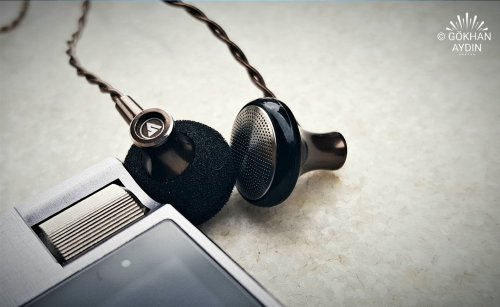
Drivability:
The HiFi BOY Dream is a relatively easy to drive earbud that will work great with most media or audio players. The HiFi BOY Dream is with a impedance of 32 ohm not very sensitive to noise, but using a small headphone amplifier makes indeed a bit difference over the direct out from a DAP or Smartphone.
The Sound:
This review is written by me after an intensive burn-in process of 150 hours. I have use the stock full foams due this review.
Tonality:
The HiFi BOY Dream has an overall well-balanced sound signature with excellent clarity. A hint of bass warmth and a relaxed top end makes the Dream to an ideal erabud for long listening periods.
Frequencies:
One of the first characteristics about the sound of the Dream, which I have noticed at the very beginning, is the smoothness and accuracy of its lows. They sub bass around 20-60Hz is slightly boosted but have clean characteristics. Texture is good with decent definition and body. There is no significant roll-off before the 60Hz barrier.
The bass around the 200 - 250Hz region is adding nice warmth without losing definition or making the sounding too muffled. The Guitar strings in Dire Straits – Money For Nothing sounds a bit bolder then in natural, but this side effect gives an additional emotion to the sound.
The lower midrange around 300 – 500Hz is well presented and is adding additional warmth to the midrange without making the sound too hot.
The midrange around 500 Hz -2kHz sounds dynamic and has a nice fullness that makes both male and female vocals sounding quite emotional and intimate. The transparency and clarity is in a good level for a sub 100 USD earbud. The detail reproduction, especially with string instruments is impressive.
The upper midrange between 2 – 4 kHz has a nice timber, with a slightly forward and well controlled vocal presentation. There is a very low level of sibilance for instance with Diana Krall’s beautiful performed song “So Wonderful”. All these features making the sound of the Hi-Fi BOY Dreams to a very engaging and relaxing experience.

The treble range around 4 kHz – 6 kHz have sufficient sparkle and detail to them without being too harsh. It sounds in general relaxed with a well placed spike that is avoiding a too hot sound presentation.
The upper treble tuning between 6 kHz - 20 kHz makes the HiFi BOY Dream to a quite airy sounding earbud. The upper treble range has just the right amount of brilliance without being sibilant or to have any harshness. For example upper treble extension and the cymbal strike in Lazarus A.D. “The Onslaught” is quite impressive for an earbud in this price category.
The Soundstage and Imagine:
The HiFi BOY Dream has a quite natural soundstage presentation that is good in width and depth. The positioning of instruments is impressive and the imaging is excellent with clear layers and accurate instrument placements.

Comparison with other Earbuds:
I have test out some of my TOTL level Earbuds and here are some comparisons.
HiFi BOY Dream vs. K’s 300 Samsara Version:
The K’S 300 Samsara Version is one of my favorite Earbuds to date. It sound very mature and the sound signature well balanced with a hint of bass warmth.
Build quality and Fit:
The housing of the HiFi BOY Dream is made of a nice looking and well made metal material (I think aluminum), while the Samsara is made of plastic with a glossy surface that feels less solid and attractive, when we compare it to the Dream. Both have nice finished cables and a stylish 3.5mm Single Ended headphone jack.
Both earbuds are comfortable to wear, but the Dream has the upper hand if you want this comfort for longer listening periods. The issue with the Samsara is, that it starts to hurt my ears after 1 hour, while the Dream is comfy after hours and hours.
The Sound:
Both earbuds have a relative balanced sound signature while the Samsara sounds a little bit darker and a touch warmer then the Dream. Both have a nice a nice controlled bass presence. The difference is the quantity and range. The Samsara has more mid bass presence, while the Dream goes lover in the sub bass department. Both have a nice bass response and the detail level is fantastic.
The Dream has a more upfront vocal presentation than Samsara, but the detail and clarity level is on par. The Samsara has warmer vocals and the Dream sound more natural to my ears. Both erbuds have a great performance in the upper midrange, while the Dream has additional clarity.
The treble response of these two earbuds is quite different; yes these are relative balanced sounding earbuds, but the Dream has more upper treble presence that gives additional sparkle and air to the sound, while the Samsara sounds warmer.
Both earbuds share a decent soundstage while the Dream has the upper hand in width.
HiFi BOY Dream vs. VE ZEN 2.0 (Red):
The VE Zen 2.0 is a special earbud with its powerful bass (for an erabud) and the full sounding midrange, which makes a smile on your face. But right after you change to a more neutral source you will notice that this tuning is quite unnatural.
Build quality and Fit:
The housing of the Zen 2.0 is made of a transparent plastic housing that looks relative weak compared to theses of Dream with its solid metal shell. Also of both HiFi BOY Dream and Zen V2.0 looks solid and well made.
The fit of both earbuds is quite comfortable and they are ideal to wear for long listening periods.
The Sound:
The ZEN V2.0 has this powerful and full sounding presentation that gives you a nice first impression. But after an intensive comparison with a relative neutral source like the Dream, you will immediately notice that the quantity of the bass and especially the mid bass is way too unnatural and overdone. The next thing you will notice is that the HiFi BOY Dream’s sub bass goes lover then these of the ZEN V2.0.
The strong bass and mid bass presence of the ZEN V2.0 makes the midrange sounding muffled and hollow in some situations. This makes the Dream to the better choice for critical listening with its quite natural vocal and instrument separation. Maybe some of us will prefer the bold and warm sounding Vocal presentation of the ZEN vs. the more lifelike reproduction of the Dream, but this is a matter of personal preference.
The treble range of the ZEN V2.0 sounds a little bit muddy, but is free of sibilance and harshness. They don't sound as smooth as the HiFi BOY Dream, which has more detail and sparkle at the upper register.
The HiFi BOY Dream sounds more airy and the soundstage width is noticeable larger compared to those of the ZEN V2.0. The depth of both is quite good maybe a touch better on the Dream earbud.
In short, the Dream sounds overall more balanced and well tuned then the ZEN V2.0.
Conclusion:
If you don’t have a powerful source or won’t to carry an amp with you, the HiFi BOY Dream is one of the best choices in the earbud market with its quite detailed sound, well balanced tuning and great build quality.
Summary (plus and minus):
+ Balanced sound signature with lots of detail
+ Easy to drive
+ Good build quality and fit
- None for this price
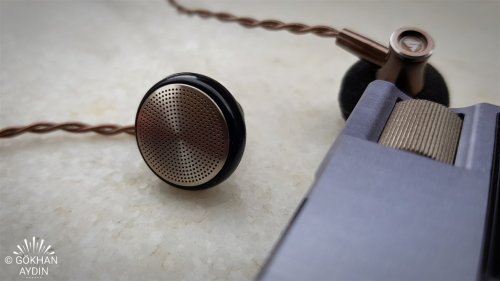
This review was originally posted on "Moonstar Reviews" :
https://moonstarreviews.net
Disclaimer:
The HiFi BOY Dream Earbud was provided to me by HiFi BOY via Penon Audio for free of charge as a review sample. I am not affiliated with HiFi BOY or Penon Audio beyond this review and these words reflect my true, unaltered, opinions about the product.

About HiFi BOY:
HiFi boy is a high-end Hi-Fi audio brand launched by China Chengdu Fallante Technology Co., Ltd. The company is an integrated research and development, production and sales technology. The company is mainly engaged in manufacturing, sales and development of hi-fi headphones, multimedia speakers and Bluetooth audio equipments.
Brand CEO, Mr.Chen combined with a number of acoustic engineers a team to make HiFi BOY to a cost-effective HiFi brand.
Link for the official website of HiFi BOY (click)
The Price:
The HiFi BOY Dream can be purchased on Penon Audio for 95,00 USD.
Penon Audio Purchase Link (click)
Introduction:
The Dream is the second Hi-Fi earphone and the first earbud of company HiFi BOY in a market with many competitors.
Package and Accessories:
The HiFi BOY Dream comes in a black chard box that has the silver HiFi BOY logo printed at the top of this box.
The card box includes the following contents;
- 1 pair of HiFi BOY Dream Earbud
- 4 pairs of foams ear pads
- 1 pcs.3.5mm Female to 6.5mm Male Adapter
- 1 pcs Flight adapter
- 1 pcs HiFi BOY branded carrying case


Design, Fit and Build Quality:
The HiFi BOY Dream’s main body is made of metal while the trim is made of plastic. The housing is available in 4 different color options, these are Gold, Silver, Rose-Gold and Brown. My unit is brown this looks very stylish to my eyes.

The biggest handicap for any earbud is to get a good/comfortable fit. The metal shell of the Dream is light weight and sits surprisingly comfortably in my ears. They are Left and Right markings that are visibly on both sides. They are also three bass vent holes on each monitor.

The Dream has a 5N OFC Copper cable that is 4 cores braided and coated with a brown plastic material that has a nice touch feeling.

There chin slider and y-splitter is made of a transparent plastic material. The 3.5mm gold plated headphone jack has a 45 degree metal housing with a Dream written printing. I did notice only a very low amount of microphonics due this review and think that this will not be a big issue.


Specifications:
The HiFi BOY OS V3 is a single dynamic driver earbud with a relative low impedance of 32 ohm.
Technical Details:
Driver Type : 16mm Single Dynamic Driver
Impedance : 32 ohm
Sensitivity : 100dB / mW
Freq. response : 15-23000Hz
Plug/Plating : 3.5mm / Flat / Aluminum Alloy
Cable length : 1.2m
Wire Material : 5N OFC
Albums & tracks used for this review:
Dire Straits – Money For Nothing (DSF)
Mile Davis – Kind of Blue Album (Tidal Hi-fi)
Michael Jackson - Billie Jean (DSF)
Emmanuel Pahud (Claude Debussy) – Syrinx (Apple Music)
Melody Gardot – Who Will Comfort Me (Flac 16bit/44kHz)
Aretha Franklin – I Say a Little Prayer (Apple Music)
Diana Krall - So Wonderful (DSF)
Queen – Greatest Hits Vol. II (Apple Music)
Otto Liebert & Luna Negra – Up Close “Album” (DSF) – Binaural Recording
Alboran Trio’s – Cinque Lunghissimi Minuti (Tidal Hi-Fi)
Lazarus A.D. – The Onslaught (ALAC)
Opeth – Damnation (Tidal Hi-Fi)
Metallica - The Black Album (Flac 24bit/96Hz)
Daft Punk – Get Lucky (Flac 24bit/192kHz)
Michael Jackson - Billie Jean (DSF)
Yosi Horikawa – Bubbles (Flac 16bit/44kHz)
Sources used for this review:
Erabud : HiFi BOY Dream, K’S 300 Samsara, VE ZEN V2.0
DAP/DAC : Cayin N5II, Chord Mojo, Aune M2, Hidizs AP60II

Drivability:
The HiFi BOY Dream is a relatively easy to drive earbud that will work great with most media or audio players. The HiFi BOY Dream is with a impedance of 32 ohm not very sensitive to noise, but using a small headphone amplifier makes indeed a bit difference over the direct out from a DAP or Smartphone.
The Sound:
This review is written by me after an intensive burn-in process of 150 hours. I have use the stock full foams due this review.
Tonality:
The HiFi BOY Dream has an overall well-balanced sound signature with excellent clarity. A hint of bass warmth and a relaxed top end makes the Dream to an ideal erabud for long listening periods.
Frequencies:
One of the first characteristics about the sound of the Dream, which I have noticed at the very beginning, is the smoothness and accuracy of its lows. They sub bass around 20-60Hz is slightly boosted but have clean characteristics. Texture is good with decent definition and body. There is no significant roll-off before the 60Hz barrier.
The bass around the 200 - 250Hz region is adding nice warmth without losing definition or making the sounding too muffled. The Guitar strings in Dire Straits – Money For Nothing sounds a bit bolder then in natural, but this side effect gives an additional emotion to the sound.
The lower midrange around 300 – 500Hz is well presented and is adding additional warmth to the midrange without making the sound too hot.
The midrange around 500 Hz -2kHz sounds dynamic and has a nice fullness that makes both male and female vocals sounding quite emotional and intimate. The transparency and clarity is in a good level for a sub 100 USD earbud. The detail reproduction, especially with string instruments is impressive.
The upper midrange between 2 – 4 kHz has a nice timber, with a slightly forward and well controlled vocal presentation. There is a very low level of sibilance for instance with Diana Krall’s beautiful performed song “So Wonderful”. All these features making the sound of the Hi-Fi BOY Dreams to a very engaging and relaxing experience.

The treble range around 4 kHz – 6 kHz have sufficient sparkle and detail to them without being too harsh. It sounds in general relaxed with a well placed spike that is avoiding a too hot sound presentation.
The upper treble tuning between 6 kHz - 20 kHz makes the HiFi BOY Dream to a quite airy sounding earbud. The upper treble range has just the right amount of brilliance without being sibilant or to have any harshness. For example upper treble extension and the cymbal strike in Lazarus A.D. “The Onslaught” is quite impressive for an earbud in this price category.
The Soundstage and Imagine:
The HiFi BOY Dream has a quite natural soundstage presentation that is good in width and depth. The positioning of instruments is impressive and the imaging is excellent with clear layers and accurate instrument placements.

Comparison with other Earbuds:
I have test out some of my TOTL level Earbuds and here are some comparisons.
HiFi BOY Dream vs. K’s 300 Samsara Version:
The K’S 300 Samsara Version is one of my favorite Earbuds to date. It sound very mature and the sound signature well balanced with a hint of bass warmth.
Build quality and Fit:
The housing of the HiFi BOY Dream is made of a nice looking and well made metal material (I think aluminum), while the Samsara is made of plastic with a glossy surface that feels less solid and attractive, when we compare it to the Dream. Both have nice finished cables and a stylish 3.5mm Single Ended headphone jack.
Both earbuds are comfortable to wear, but the Dream has the upper hand if you want this comfort for longer listening periods. The issue with the Samsara is, that it starts to hurt my ears after 1 hour, while the Dream is comfy after hours and hours.
The Sound:
Both earbuds have a relative balanced sound signature while the Samsara sounds a little bit darker and a touch warmer then the Dream. Both have a nice a nice controlled bass presence. The difference is the quantity and range. The Samsara has more mid bass presence, while the Dream goes lover in the sub bass department. Both have a nice bass response and the detail level is fantastic.
The Dream has a more upfront vocal presentation than Samsara, but the detail and clarity level is on par. The Samsara has warmer vocals and the Dream sound more natural to my ears. Both erbuds have a great performance in the upper midrange, while the Dream has additional clarity.
The treble response of these two earbuds is quite different; yes these are relative balanced sounding earbuds, but the Dream has more upper treble presence that gives additional sparkle and air to the sound, while the Samsara sounds warmer.
Both earbuds share a decent soundstage while the Dream has the upper hand in width.
HiFi BOY Dream vs. VE ZEN 2.0 (Red):
The VE Zen 2.0 is a special earbud with its powerful bass (for an erabud) and the full sounding midrange, which makes a smile on your face. But right after you change to a more neutral source you will notice that this tuning is quite unnatural.
Build quality and Fit:
The housing of the Zen 2.0 is made of a transparent plastic housing that looks relative weak compared to theses of Dream with its solid metal shell. Also of both HiFi BOY Dream and Zen V2.0 looks solid and well made.
The fit of both earbuds is quite comfortable and they are ideal to wear for long listening periods.
The Sound:
The ZEN V2.0 has this powerful and full sounding presentation that gives you a nice first impression. But after an intensive comparison with a relative neutral source like the Dream, you will immediately notice that the quantity of the bass and especially the mid bass is way too unnatural and overdone. The next thing you will notice is that the HiFi BOY Dream’s sub bass goes lover then these of the ZEN V2.0.
The strong bass and mid bass presence of the ZEN V2.0 makes the midrange sounding muffled and hollow in some situations. This makes the Dream to the better choice for critical listening with its quite natural vocal and instrument separation. Maybe some of us will prefer the bold and warm sounding Vocal presentation of the ZEN vs. the more lifelike reproduction of the Dream, but this is a matter of personal preference.
The treble range of the ZEN V2.0 sounds a little bit muddy, but is free of sibilance and harshness. They don't sound as smooth as the HiFi BOY Dream, which has more detail and sparkle at the upper register.
The HiFi BOY Dream sounds more airy and the soundstage width is noticeable larger compared to those of the ZEN V2.0. The depth of both is quite good maybe a touch better on the Dream earbud.
In short, the Dream sounds overall more balanced and well tuned then the ZEN V2.0.
Conclusion:
If you don’t have a powerful source or won’t to carry an amp with you, the HiFi BOY Dream is one of the best choices in the earbud market with its quite detailed sound, well balanced tuning and great build quality.
Summary (plus and minus):
+ Balanced sound signature with lots of detail
+ Easy to drive
+ Good build quality and fit
- None for this price

This review was originally posted on "Moonstar Reviews" :
https://moonstarreviews.net
Moonstar
100+ Head-Fier
Pros: Nice V shaped sound signature,
Great bass response,
Good detail retrieval for this price range,
Beautiful housing and faceplate,
Very comfortable and lightweight
Great bass response,
Good detail retrieval for this price range,
Beautiful housing and faceplate,
Very comfortable and lightweight
Cons: Peak around 7 kHz,
Small amount of driver flex
Small amount of driver flex
A Beauty from the Heaven
TFZ Secret Garden HD Review About TFZ (The Fragrant Zither):
TFZ (The Fragrant Zither) is a Chinese Company located in Shenzhen - China, which is specialized in the production of portable audio equipments like Earphones & In-Ear Monitors. The company is well known with some popular models like the TFZ Series, King, Exclusive and Tequila. The TFZ Secret Garden HD is the latest member of this family and is the flagship model in the TFZ In-Ear Monitor lineup.
TFZ Official Website: http://www.tfzither.com/
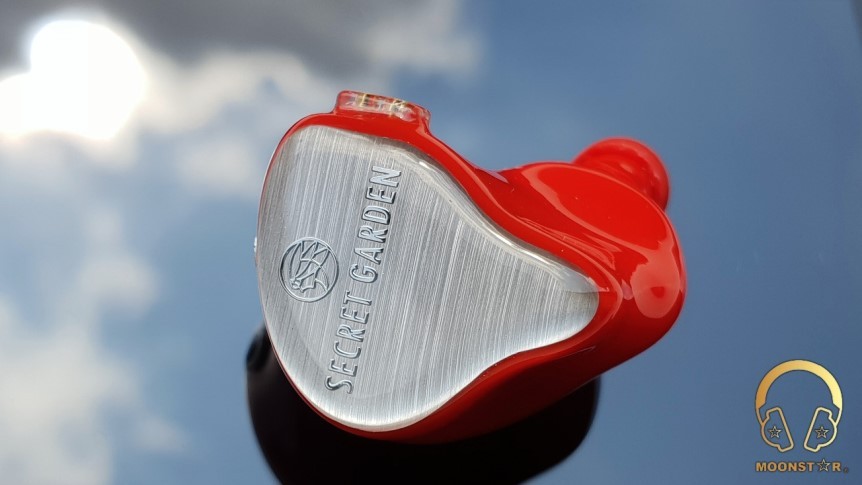
About me: www.moonstarreviews.net
Disclaimer:
The TFZ Secret Garden HD was provided to me by the company TFZ via Penon Audio for review purposes. I am not affiliated with TFZ or Penon Audio beyond this review and these words reflect my true and unaltered opinions about the product.
Price:
The MSRP price for the TFZ Secret Garden HD is around ,00 USD and can be purchased under the following link.
Purchase Link: https://penonaudio.com/tfz-secret-garden.html
Package and Accessories:
The TFZ Secret Garden came in a white box, which is made of a pretty solid cardboard material that contains the following items;

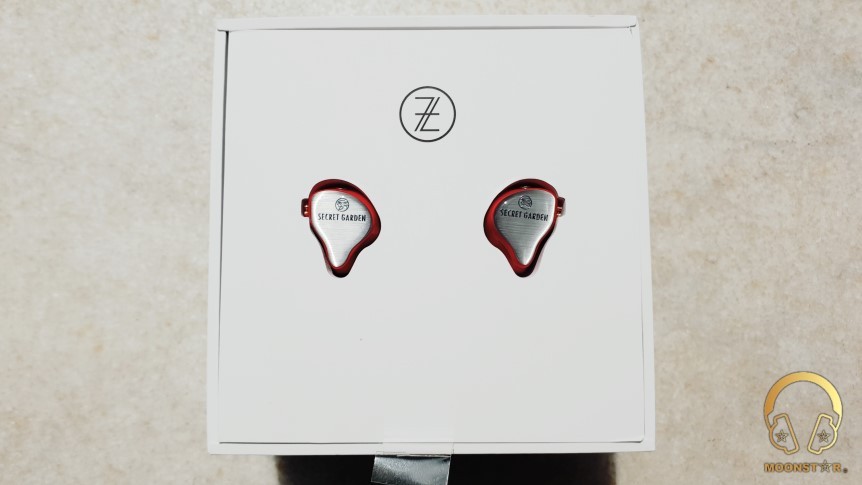

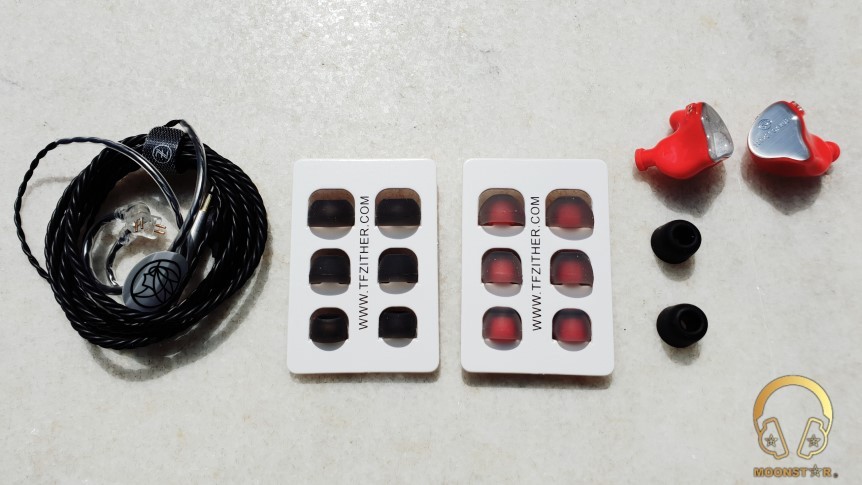


Design & Build Quality:
The TFZ Secret Garden HD is an In-Ear Monitor with a 12mm Double Magnetic Circuit Graphene driver that is packed in a semi-custom acrylic housing, which has a very nice design and good built quality.
The Secret Garden HD is available in four (4) different color options, which are Purple, Blue, Black, and Red. My unit came in red color that looks very eye-catching.
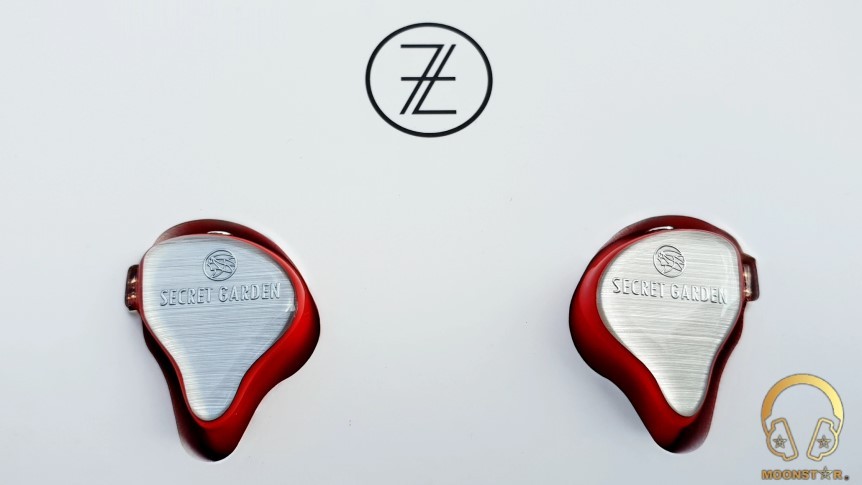
On the front of the monitor housing, which is described as faceplate of the monitor is a small TFZ Logo and the Secret Garden model branding. This faceplate has silver color pattern and shows a glossy surface that looks pretty nice to my eyes.
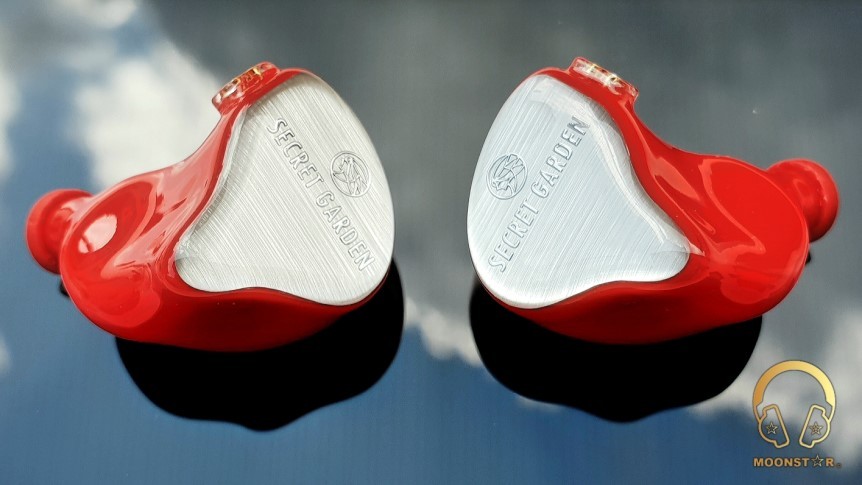
At the back of the each monitor shell is one vent with a metal ring to serves as pressure balancer that is occurring inside the monitor.
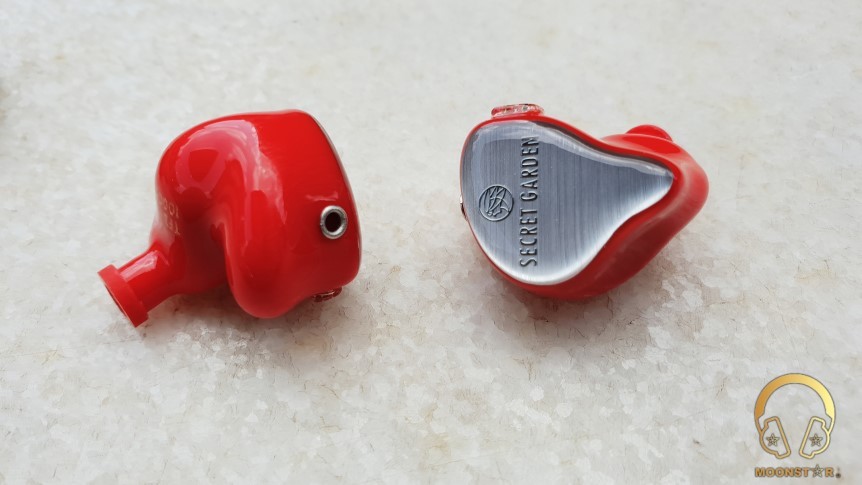
On the inner surface of the monitor shell is a TFZ-IEM description and serial number printed in gold color. The sound nozzle sports a tick lip and a metal grill/mesh to prevent the driver form dust and earwax.

On the Top of this monitor part is the type 0.78mm female 2pin connection.

The Cable:
The cable that comes with the TFZ Secret Garden HD has a nicely twisted 4 core, 5N purity OFC (Oxygen Free Cooper) wire cable, which has a soft rubber like black coating. This coating is very efficient to avoid any possible microphonic effect.

The 2pin male connectors have a transparent hard plastic housing, where you can find the left and right markings that are very hard to read and which is male only complain about this otherwise beautifully made cable.
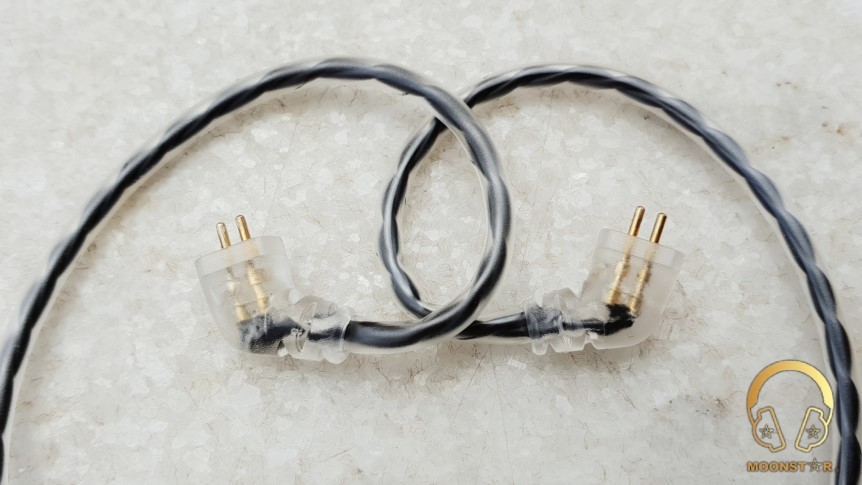
The cable has built-in ear guides near the connector for a better behind the ear comfort experience.

This cable has a Y splitter, which is made of a soft black colored plastic material that sports on both sides the new TFZ logos.
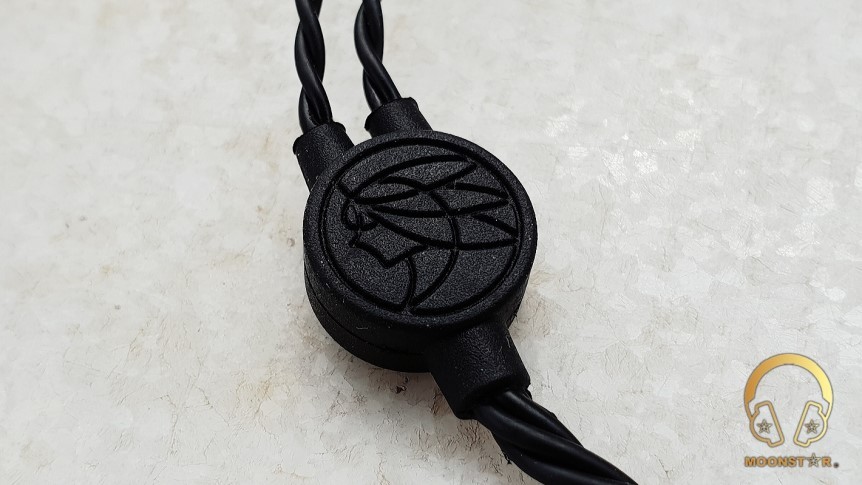
The 3.5mm unbalanced (TRS) headphone jack has a straight profiled metal housing that sports also the TFZ logo.

Fit and Isolation:
The TFZ Secret Garden HD is a very comfortable to wear In-Ear Monitor thanks to the semi-custom shell which is also not too big. This shape makes it very ideal for long listening periods. The isolation is average and pretty ideal for the use in the public.
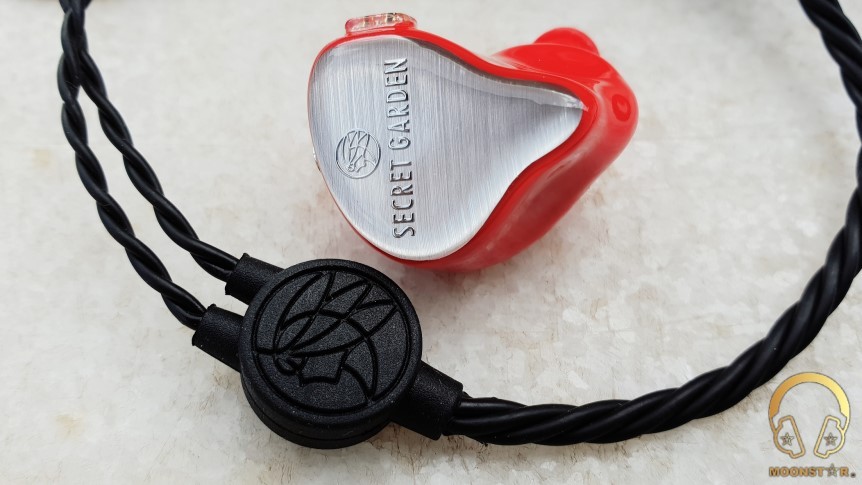
Technical Specs:
Drivability:
The TFZ Queen is a relative efficient In-Ear Monitor with an impedance of 30 Ohms, which makes it pretty suitable for the use with devices like phones, tablets, etc. that have less power than modern DAP’s or small portable amplifiers.

Albums & tracks used for this review:
Sources:
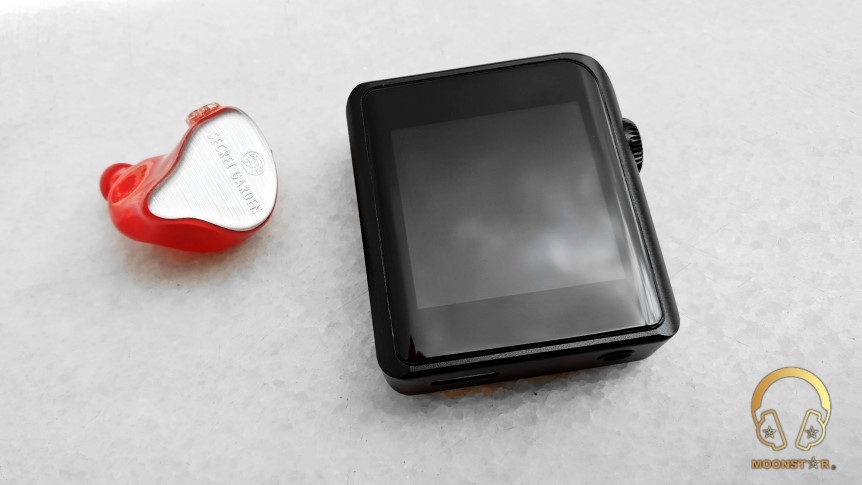
The Sound:
General Sound Signature:
The TFZ Secret Garden is an In-Ear Monitor which shows good depth and speed in the bass department, has a warmish midrange, is pronounced in the upper midrange and sounds airy in treble region.
The Bass:
The subbass depth of the Secret Garden is good and adequate, but is not the sort of subbass for that will satisfy bass-heads. The subbass quantity is good enough for the most types of music genres.
The midbass area on the other hand is pretty strong in terms of slam and shows a fast and tight presentation.
The TFZ Secret Garden shows no negative situations such as a bass hump or sharp midbass roll-off, while the extensions of the bass is on a moderate level.
The overall bass speed, control and tightness of the TFZ Secret Garden is pretty good while listening to a wide variety of instruments such as cross drums, trumpets, contrabass (double bass) or synthesizers.

The Midrange:
The midrange of the TFZ Secret Garden is presented in a lively, transparent and warmish (close to warm) tonality. The lower midrange shows a good depth that gives male vocals a nice bodied presentation. There is also no negative situation such as mixing or hollowness in this area.
Female vocals are sounding clean and have good extensions thanks to the pronounced upper midrange presentation. Female vocals in genres such as EDM or Trance can sound sometimes a bit sharp due to the peak around 7 kHz, while there is no such situation with other genres.
When it comes to the instrument presentation, the TFZ Secret Garden HD shows a vivid and seat presentation, with pretty good definition and separation for this price range. The tonality of Guitars is soft and lightly bassy, violas are close to warm (slightly warmish) and pianos are vivid and slightly bright.
The Secret Garden HD’s performance in terms of separation between instruments and vocals is pretty good and instruments are behind the vocals. It sounds pretty airy and spacious thanks to the small gaps between the instruments with very low mixing.
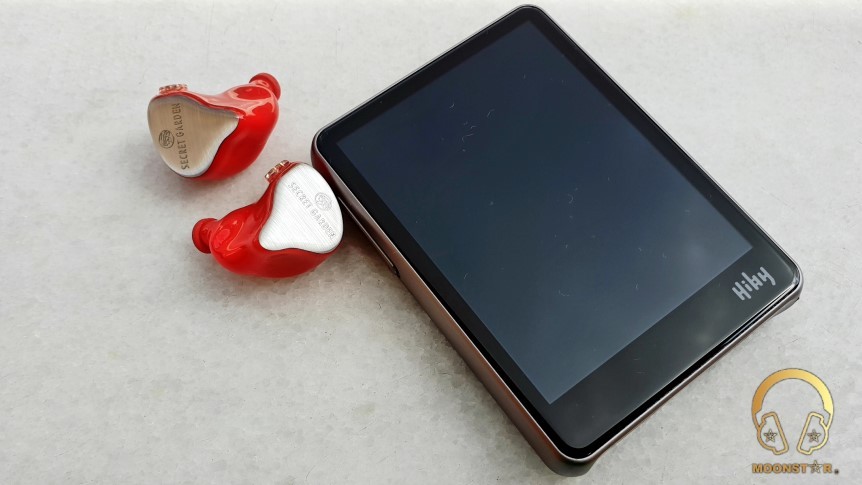
The Upper Midrange:
The TFZ Secret Garden HD shows an emphasis in the upper midrange, which is more pronounced than the treble region. The upper midrange is showing a little bit of sharpness, especially with bad recorded/mastered songs (mostly EDM or Pop songs) due to the peak around the 7 kHz region. But it I can confirm that the upper midrange of the Secret Garden is otherwise fairly controlled with many genres such as acoustic, metal, jazz, blues, etc.
The detail level and extension in the upper midrange of the TFZ Secret Garden HD with instruments such as violins to the flutes, from the female vocals to the pianos is quite successful.
The Treble:
The TFZ Secret Garden HD has a slightly recessed and non fatiguing treble presentation, which is not as strong pronounced like the upper midrange.
The hits of instruments such as Hi-Hat’s are coming more from a bit more form the background than normal and the extension is average but shows a fairly good definition.
The hits of the ride and crash cymbals are sharper and more noticeable than those of the hi-hats and there is missing a slightly more force and extension, but sounds otherwise pretty controlled and fatigue free.
Instruments in classical music such as flutes, violins, piccolos are sounding quite realistic except of a little shortage in extension.
The treble range of the TFZ Secret Garden HD shows a slightly above average airiness.

Soundstage:
The TFZ Secret Garden HD has a pretty wide and deep soundstage that shows a quite precise instrument placement. The soundstage is slightly wider than its depth and there is enough space and air between instruments for a good definition.
Comparison:
TFZ Secret Garden HD versus Brainwavz B400:
The Brainwavz B400 has a warmer tonality, while the TFZ Secret Garden HD shows less warmth and an airier presentation.
Both In-Ear Monitors performing pretty well in terms of subbass depth, while the B400 shows more quantity and better extension in this area.
The TFZ Secret Garden HD is superior to the Brainwavz B400 in terms of bass speed, control and tightness, while the B400 shows better extensions and quantity in the midbass region.
Both the TFZ Secret Garden HD and the Brainwavz B400 sharing a quite emotional and sweet midrange presentation.
The Secret Garden HD sounds more realistic with female vocals due to the more pronounced upper midrange, while the tonality of the Brainwavz B400 is more suitable one for male vocals.
The TFZ Secret Garden HD is superior to the Brainwaz B400 in terms of resolution, separation, definition and airiness of instruments and it sounds also more transparent and spacious.
The Secret Garden HD IEM is more successful in the upper midrange due to the better extension and emphasis, while the Brainwavz B400 shows better control in this frequency region.
The treble presentation of both of this IEM’s is slightly recessed, while the TFZ Secret Garden HD has slightly more quantity and better extension in this regarding, which makes the overall presentation of the Secret Garden more airier and spacious than those of the Brainwavz B400.
The B400 sounds warmer and thicker in the treble region which makes the presentation also more suitable for longer listening periods than those of the Secret Garden.
Both the TFZ Secret Garden and Brainwavz B400 have a good stage width for a precise placement and good separation of instruments. The Brainwavz B400 has the wider stage, while the Secret Garden HD performs slightly better in terms of soundstage depth.
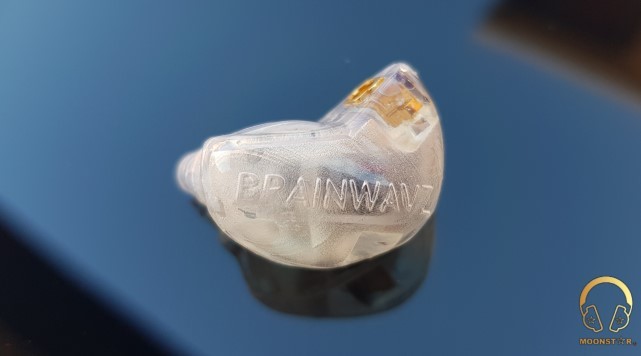

Conclusion:
TFZ did a good choice by making a nice looking IEM by using a new acrylic shell and beautiful faceplate for the Secret Garden HD series. The detail retrieval and overall sound quality in combination with design and look makes the TFZ Secret Garden HD to a nice option in a price range between 250 – 400 USD.
Pros and Cons:
TFZ Secret Garden HD Review About TFZ (The Fragrant Zither):
TFZ (The Fragrant Zither) is a Chinese Company located in Shenzhen - China, which is specialized in the production of portable audio equipments like Earphones & In-Ear Monitors. The company is well known with some popular models like the TFZ Series, King, Exclusive and Tequila. The TFZ Secret Garden HD is the latest member of this family and is the flagship model in the TFZ In-Ear Monitor lineup.
TFZ Official Website: http://www.tfzither.com/

About me: www.moonstarreviews.net
Disclaimer:
The TFZ Secret Garden HD was provided to me by the company TFZ via Penon Audio for review purposes. I am not affiliated with TFZ or Penon Audio beyond this review and these words reflect my true and unaltered opinions about the product.
Price:
The MSRP price for the TFZ Secret Garden HD is around ,00 USD and can be purchased under the following link.
Purchase Link: https://penonaudio.com/tfz-secret-garden.html
Package and Accessories:
The TFZ Secret Garden came in a white box, which is made of a pretty solid cardboard material that contains the following items;
- 1 pair x TFZ Secret Garden HD In-Ear Monitor
- 1 pcs x Detachable cable with 0,78mm 2 pin connection
- 6 pairs x Silicone ear tips with wide-bore
- 1 pair x Foam ear tips
- 1 pcs x White Carry Pouch






Design & Build Quality:
The TFZ Secret Garden HD is an In-Ear Monitor with a 12mm Double Magnetic Circuit Graphene driver that is packed in a semi-custom acrylic housing, which has a very nice design and good built quality.
The Secret Garden HD is available in four (4) different color options, which are Purple, Blue, Black, and Red. My unit came in red color that looks very eye-catching.

On the front of the monitor housing, which is described as faceplate of the monitor is a small TFZ Logo and the Secret Garden model branding. This faceplate has silver color pattern and shows a glossy surface that looks pretty nice to my eyes.

At the back of the each monitor shell is one vent with a metal ring to serves as pressure balancer that is occurring inside the monitor.

On the inner surface of the monitor shell is a TFZ-IEM description and serial number printed in gold color. The sound nozzle sports a tick lip and a metal grill/mesh to prevent the driver form dust and earwax.

On the Top of this monitor part is the type 0.78mm female 2pin connection.

The Cable:
The cable that comes with the TFZ Secret Garden HD has a nicely twisted 4 core, 5N purity OFC (Oxygen Free Cooper) wire cable, which has a soft rubber like black coating. This coating is very efficient to avoid any possible microphonic effect.

The 2pin male connectors have a transparent hard plastic housing, where you can find the left and right markings that are very hard to read and which is male only complain about this otherwise beautifully made cable.

The cable has built-in ear guides near the connector for a better behind the ear comfort experience.

This cable has a Y splitter, which is made of a soft black colored plastic material that sports on both sides the new TFZ logos.

The 3.5mm unbalanced (TRS) headphone jack has a straight profiled metal housing that sports also the TFZ logo.

Fit and Isolation:
The TFZ Secret Garden HD is a very comfortable to wear In-Ear Monitor thanks to the semi-custom shell which is also not too big. This shape makes it very ideal for long listening periods. The isolation is average and pretty ideal for the use in the public.

Technical Specs:
- Driver : 12mm Double Magnetic Circuit Graphene Driver
- Impedance : 30 ohm
- Sensitivity : 108 dB mW
- Freq. Range : 5 Hz - 40 kHz
- Lowest power : 8mW
- Connectors : 0.78mm 2-pin replaced cable
- Plug type : 3.5mm TRS (unbalanced)
- Cable length : 4FT (1.2 M)
Drivability:
The TFZ Queen is a relative efficient In-Ear Monitor with an impedance of 30 Ohms, which makes it pretty suitable for the use with devices like phones, tablets, etc. that have less power than modern DAP’s or small portable amplifiers.

Albums & tracks used for this review:
- Leonard Cohen – You Wnt it Darker (Spotify)
- Dave Gahan – Kingdom (Tidal Hi-Fi)
- Eric Clapton – Wonderful Tonight True (Flac 24bit/96kHz)
- Casey Abrams – Robot Lover (Tidal Hi-Fi)
- Vivaldi – Le QuarttroStagioni “The Four Season” (Tidal Hi-Fi)
- Otto Liebert& Luna Negra – The River (DSF) – Binaural Recording
- Future Heroes – Another World (Tidal Hi-fi)
- Lorde – Team (Flac 24bit/48kHz)
- Tom Player – Resonace Theory “Album” (Tidal Hi-Fi)
- Massive Attack – Angel (Tidal Hi-Fi)
- Portishead – It Could Be Sweet (Spotify)
- First Aid Kit - My Silver Lining (Spotify)
- London Grammar – Interlud (Live) (Flac 24bit/44kHz)
- Laura Pergolizzi – Lost On You “Live at Harvard and Stone” (Tidal Hi-Fi)
- Minor Empire – BulbulumAltinKafeste (Spotify)
- Liquid Tension Experiment 2 – Acid Rain (Spotify)
- Opeth – Damnation (Tidal Hi-Fi)
- Metallica – Sad but True (Flac 24bit/96kHz)
- Megadeth - Sweating Bullets (Tidal Hi-Fi)
- Slayer - Angel of Death (Spotify)
Sources:
- IEM’s : TFZ Secret Garden HD, Brainwavz B400
- DAP/DAC/AMP’s : Cayin N5II, Fiio M7, Chord Mojo, xDuoo XD10 Poke, iPaid Air2

The Sound:
General Sound Signature:
The TFZ Secret Garden is an In-Ear Monitor which shows good depth and speed in the bass department, has a warmish midrange, is pronounced in the upper midrange and sounds airy in treble region.
The Bass:
The subbass depth of the Secret Garden is good and adequate, but is not the sort of subbass for that will satisfy bass-heads. The subbass quantity is good enough for the most types of music genres.
The midbass area on the other hand is pretty strong in terms of slam and shows a fast and tight presentation.
The TFZ Secret Garden shows no negative situations such as a bass hump or sharp midbass roll-off, while the extensions of the bass is on a moderate level.
The overall bass speed, control and tightness of the TFZ Secret Garden is pretty good while listening to a wide variety of instruments such as cross drums, trumpets, contrabass (double bass) or synthesizers.

The Midrange:
The midrange of the TFZ Secret Garden is presented in a lively, transparent and warmish (close to warm) tonality. The lower midrange shows a good depth that gives male vocals a nice bodied presentation. There is also no negative situation such as mixing or hollowness in this area.
Female vocals are sounding clean and have good extensions thanks to the pronounced upper midrange presentation. Female vocals in genres such as EDM or Trance can sound sometimes a bit sharp due to the peak around 7 kHz, while there is no such situation with other genres.
When it comes to the instrument presentation, the TFZ Secret Garden HD shows a vivid and seat presentation, with pretty good definition and separation for this price range. The tonality of Guitars is soft and lightly bassy, violas are close to warm (slightly warmish) and pianos are vivid and slightly bright.
The Secret Garden HD’s performance in terms of separation between instruments and vocals is pretty good and instruments are behind the vocals. It sounds pretty airy and spacious thanks to the small gaps between the instruments with very low mixing.

The Upper Midrange:
The TFZ Secret Garden HD shows an emphasis in the upper midrange, which is more pronounced than the treble region. The upper midrange is showing a little bit of sharpness, especially with bad recorded/mastered songs (mostly EDM or Pop songs) due to the peak around the 7 kHz region. But it I can confirm that the upper midrange of the Secret Garden is otherwise fairly controlled with many genres such as acoustic, metal, jazz, blues, etc.
The detail level and extension in the upper midrange of the TFZ Secret Garden HD with instruments such as violins to the flutes, from the female vocals to the pianos is quite successful.
The Treble:
The TFZ Secret Garden HD has a slightly recessed and non fatiguing treble presentation, which is not as strong pronounced like the upper midrange.
The hits of instruments such as Hi-Hat’s are coming more from a bit more form the background than normal and the extension is average but shows a fairly good definition.
The hits of the ride and crash cymbals are sharper and more noticeable than those of the hi-hats and there is missing a slightly more force and extension, but sounds otherwise pretty controlled and fatigue free.
Instruments in classical music such as flutes, violins, piccolos are sounding quite realistic except of a little shortage in extension.
The treble range of the TFZ Secret Garden HD shows a slightly above average airiness.

Soundstage:
The TFZ Secret Garden HD has a pretty wide and deep soundstage that shows a quite precise instrument placement. The soundstage is slightly wider than its depth and there is enough space and air between instruments for a good definition.
Comparison:
TFZ Secret Garden HD versus Brainwavz B400:
The Brainwavz B400 has a warmer tonality, while the TFZ Secret Garden HD shows less warmth and an airier presentation.
Both In-Ear Monitors performing pretty well in terms of subbass depth, while the B400 shows more quantity and better extension in this area.
The TFZ Secret Garden HD is superior to the Brainwavz B400 in terms of bass speed, control and tightness, while the B400 shows better extensions and quantity in the midbass region.
Both the TFZ Secret Garden HD and the Brainwavz B400 sharing a quite emotional and sweet midrange presentation.
The Secret Garden HD sounds more realistic with female vocals due to the more pronounced upper midrange, while the tonality of the Brainwavz B400 is more suitable one for male vocals.
The TFZ Secret Garden HD is superior to the Brainwaz B400 in terms of resolution, separation, definition and airiness of instruments and it sounds also more transparent and spacious.
The Secret Garden HD IEM is more successful in the upper midrange due to the better extension and emphasis, while the Brainwavz B400 shows better control in this frequency region.
The treble presentation of both of this IEM’s is slightly recessed, while the TFZ Secret Garden HD has slightly more quantity and better extension in this regarding, which makes the overall presentation of the Secret Garden more airier and spacious than those of the Brainwavz B400.
The B400 sounds warmer and thicker in the treble region which makes the presentation also more suitable for longer listening periods than those of the Secret Garden.
Both the TFZ Secret Garden and Brainwavz B400 have a good stage width for a precise placement and good separation of instruments. The Brainwavz B400 has the wider stage, while the Secret Garden HD performs slightly better in terms of soundstage depth.


Conclusion:
TFZ did a good choice by making a nice looking IEM by using a new acrylic shell and beautiful faceplate for the Secret Garden HD series. The detail retrieval and overall sound quality in combination with design and look makes the TFZ Secret Garden HD to a nice option in a price range between 250 – 400 USD.
Pros and Cons:
- + Nice V shaped sound signature
- + Great bass response
- + Good detail retrieval for this price range
- + Beautiful housing and faceplate
- + Very comfortable and lightweight
- - Peak around 7 kHz
- - Small amount of driver flex
Moonstar
100+ Head-Fier
Pros: Great build quality and wonderful wooden housing,
Good detail level for the price,
Nice balanced sound signature,
Comfortable fit
Good detail level for the price,
Nice balanced sound signature,
Comfortable fit
Cons: No detachable cable,
Missing of some micro detail
Missing of some micro detail
The Wooden Classics
Introduction:
Meze Audio was founded by Antonio Meze in 2009 in Baia Mare, Romania, who was looking for a pair of headphones that he could connect to in the same way that he felt connected to his Fender Stratocaster guitar. The real breakthrough year for Meze was 2015 with the release of the Meze 99 Classics. The Meze 12 Classics is their latest product in the Classics series.

Disclaimer:
The Meze 12 Classics was provided to me by the Meze for free of charge as a review sample. I am not affiliated with Meze beyond this review and these words reflect my true, unaltered, opinions about the product.
Price:
The MSRP price for the Meze 12 Classics is 79,00 USD.
Package and Accessories:
The Meze 12 Classics comes in a relative small white card box that consists from two pieces, the upper cover and bottom box.

This box includes the following contents;

The Meze 12 Classics comes with 4 sets of silicone ear-tips which are soft and comfy. The package is including an extra pair of comply foam tips which is a nice addition.
The zipper case is a bit small but doses it job. There is also a cable clip which is also a nice extra.

Specifications:
About the Mylar driver:
The Meze 12 Classics features an 8mm diameter single driver with a titanium coated driver membrane which has a copper-clad aluminum voice coil.

Design, Fit/Comfort and Build Quality:
The Meze 12 Classics has a small form factor is light weight and very well made. They are two color options which are Iridium and Gun Metal. My unit came in Gun Metal color which has a nice appearance.
The housing of the Meze 12 Classics is a combination of aluminum and wood. The wooden chamber is made of walnut wood and looks beautiful.

The back of the housing sports the Meze logo and on the front is the straight nozzle, where you can find also a small bass vent.

The Meze 12 Classics has a fixed cable, which means you have not the option to chance/upgrade the cable if needed, but looks solid anyway.
The cable wire is made of 7N purity OFC (Oxygen Free Cooper) and has a grey TPU coating which looks like a high quality plastic, but that is prone for microphonic effects.


This cable sports a microphone and a straight 3.5mm gold plated headphone jack.

The Meze 12 Classics is a quite comfortable IEM which is ideal to wear cable down.
The noise isolation of this In Ear Monitor is above average.
Albums & tracks used for this review:
Sources used for this review:

The Sound:
This review is written after a burn-in process of approx. 90 – 100 hours and I have used the stock medium silicone ear tips which came in the box.
Please note that this is an entry level Mid-Fi IEM and all my comments about the sound quality are in consideration of this price range.
Tonality:
The Meze 12 Classics is a musical sounding IEM with a warmer then neutral tonality which is a result of the mildly boosted mid-bass area.
Frequencies:
The bass presentation of the Meze 12 Classics is mainly focused on the mid-bass area. The sub-bass between 20 – 50 Hz are missing some depth, but sounds otherwise controlled and have also some nice texture.
The bass response of the Meze 12 Classics is accurate and fast for a single dynamic driver and sounds also pretty natural, which is a good ability for genres with real instrumental like acoustic or jazz music. The guitar performance in Otto Liebert & Luna Negra – The River sounds quite natural and exiting.
The mid-bass of the Meze 12 Classics gives the overall presentation a nice touch of warmth. It is nicely textured and is not overwhelming. The transition between mid-bass to the mids is nicely done.
The midrange of the Meze 12 Classics doesn't sound thin or very full and has a nice balanced presentation. The midrange of Meze 12 Classics sounds also relative transparent and has a clean presentation, which is rarely found in this price category.
Male artists like George Michael or Freddy Mercury sounding relative organic, but the vocal presentation of female artists like Laura Pergolizzi or Saskia Bruin sounds in general more organic. I didn’t observe any overshadowing of the midrange which sounds in most situations clean.
The midrange of the 12 Classics has a nice sense of space and there is enough air between instruments. Some instruments like pianos and drums are missing some weight, but the overall realism it’s quite acceptable for this price range. The detail level and overall resolution is better than I have exempted for his price category.
The upper midrange of the Meze 12 Classics is pretty controlled and has only some minor problems with some female vocals like Laura Pergolizzi, Celine Dion and with some bad recorded/mastered tracks.
The Meze 12 Classics has a treble texture which extends pretty well. The detail retrieval is in a moderate level and instruments like cymbals, bells, violas etc. doesn’t sounding in a metallic or unnatural way. The Meze 12 classics, displays also some nice clarity which is a big plus for an IEM in this price range.
The upper treble range is bright but is not of the sort which could fatigue your ears after some long listening periods. The side flute (transverse flute) performance in Emmanuel Pahud’s track “Syrinx” has some nice sparkle and sound also quite realistic.
Soundstage:
The Meze 12 Classics has a decent soundstage presentation for an IEM at a price of 79.00 USD. The soundstage is pretty wide and the depth is above average. The instrument separation is quite good and the positioning of instruments and vocals quite accurate.

Comparison:
Vs. Shozy Hibiki:
Both IEM’s have a slightly warm tonality with a pretty good level of clarity.
When it comes to bass presentation, the Meze 12 Classics has slightly better dynamics and bass rendering, but both sounding fairly controlled in the bass department. The difference starts in the sub-bass and mid-bass area. The Shozy Hibiki IEM has more sub-bas quantity, while the Meze 12 classics have a more bass and mid-bass focused presentation.
The sub-bass of the Hibiki reaches deeper and has slightly more rumble, while the Meze 12 Classic sounds more controlled and fuller in the bass and mid-bass area.
Meze 12 Classics has a slightly more forward midrange presentation and sound also more natural in its presentation. I don’t know if this is a result of the wooden chamber but the 12 Classic sounds more organic compared to the Shozy Hibiki. The Meze 12 Classics sounds also more transparent and smooth, compared to the grainier presentation of the Shozy Hibiki.
The Shozy Hibiki suits better for male vocals, while the Meze 12 Classics sound more romantic with female vocals. Both IEM’s have good instrument rendering, while the Meze 12 Classics performs better with instrument like guitars, pianos or drums due its more organic presentation. The instrument separation of both IEM’s is nearly identical and pretty good for this price range.
The upper midrange of the Shozy Hibiki sounds a bit harsher compared to those of the Meze 12 Classics. The Meze sounds relative bright but has more control in the upper register.
The Shozy Hibiki sounds a bit too dry in the treble, but the detail level is on par with those of the Meze 12 Classics. The treble speed of the Meze 12 Classics is better, which is most noticeable with instruments like cymbals, bells etc. The Shozy Hibiki sounds a bit harsh especially in higher volume levels, where the Meze 12 Classics sounds more controlled.
The difference for soundstage performance is not too much, but the soundstage of the Meze 12 Classics sounds slightly deeper and wider to my ears. The Meze 12 Classics has also more air and space between instruments compared to the Shozy Hibiki.
Vs. MEE audio Pinnacle P2
The first noticeable difference is the lower frequency region of this IEM’s, where the Pinnacle P2 has more sub-bass and bass quantity then the Meze 12 Classics which sounds more balanced.
The sub-bass of the Pinnacle P2 sounds deeper and has also more rumble. The Meze 12 classics on the other hand sound a bit more controlled and faster in this region.
The bass especially the mid-bass region of the Pinnacle P2 has better weight and extension then those of the Meze 12 Classics which sounds otherwise more natural.
The Midrange of the Pinnacle P2 sounds warmer and fuller then those of the Meze 12 Classics. But there is a difference in clarity, where the Meze 12 Classics sounds cleaner and more transparent then Pinnacle P2, which sounds veiled due some mid-bass bleed.
The Pinnacle P2 sounds great with Male vocals but a bit too thick with female voices where the Meze 12 Classics sound more natural. The instrument presentation of the MEE audio Pinnacle P2 is pretty good for this price range, but the Meze 12 Classics has additional micro detail, which is really great for the price.
The upper midrange of the Pinnacle P2 sounds a bit more controlled, while the resolution of both IEM’s is quite good. There is no remarkable harshness for both IEM’s, which is a good thing in this price range.
The Pinnacle P2 sounds a bit hot in the treble range where the Meze 12 Classics has also additional brightness and clarity. The Meze 12 Classics has the better speed and control compared to the Pinnacle P2.
The Pinnacle P2 has more consumer friendly upper treble tuning which sounds slightly rolled off, while the Meze 12 Classics has some additional sparkle and detail in this area.
Both IEMs have nearly the same soundstage performance, but the Meze 12 Classics has slightly more depth, while both IEM’s have nearly identical soundstage wideness.

Conclusion:
The Meze 12 Classics is a very well made IEM with a wonderful wooden housing, which has a quite detailed sound with a balanced sound signature that will satisfy its owner for a price of 79,00 USD.
Summary (Pros and Cons):

This review was originally posted on "Moonstar Reviews" :
https://moonstarreviews.net
...
Introduction:
Meze Audio was founded by Antonio Meze in 2009 in Baia Mare, Romania, who was looking for a pair of headphones that he could connect to in the same way that he felt connected to his Fender Stratocaster guitar. The real breakthrough year for Meze was 2015 with the release of the Meze 99 Classics. The Meze 12 Classics is their latest product in the Classics series.

Disclaimer:
The Meze 12 Classics was provided to me by the Meze for free of charge as a review sample. I am not affiliated with Meze beyond this review and these words reflect my true, unaltered, opinions about the product.
Price:
The MSRP price for the Meze 12 Classics is 79,00 USD.
- Product Page : https://www.mezeaudio.com/
- Purchase Link : Meze Shop
Package and Accessories:
The Meze 12 Classics comes in a relative small white card box that consists from two pieces, the upper cover and bottom box.

This box includes the following contents;
- 1 x Meze 12 Classics
- 1 x Cable clip
- 1 x Carrying Case
- 1 x 4 sets of silicone ear-tips (S, M, L & Double flange)
- 1 x Extra set of Comply foam ear-tips

The Meze 12 Classics comes with 4 sets of silicone ear-tips which are soft and comfy. The package is including an extra pair of comply foam tips which is a nice addition.
The zipper case is a bit small but doses it job. There is also a cable clip which is also a nice extra.

Specifications:
- Driver Type : Titanium coated 8mm Mylar driver
- Coil Type : Copper-clad aluminum voice coil
- Frequency response : 16 Hz – 24 KHz
- Impedance : 16 Ohm
- Sensitivity : 101dB (+/- 3db)
- Total Harmonic Distortion : < 0.5%
- Noise attenuation : up to 26dB
- Headphone Jack : 3.5mm gold-plated jack plug
- Cable Material : 7N OFC cable,
- Cable Length : 1.2m
About the Mylar driver:
The Meze 12 Classics features an 8mm diameter single driver with a titanium coated driver membrane which has a copper-clad aluminum voice coil.

Design, Fit/Comfort and Build Quality:
The Meze 12 Classics has a small form factor is light weight and very well made. They are two color options which are Iridium and Gun Metal. My unit came in Gun Metal color which has a nice appearance.
The housing of the Meze 12 Classics is a combination of aluminum and wood. The wooden chamber is made of walnut wood and looks beautiful.

The back of the housing sports the Meze logo and on the front is the straight nozzle, where you can find also a small bass vent.

The Meze 12 Classics has a fixed cable, which means you have not the option to chance/upgrade the cable if needed, but looks solid anyway.
The cable wire is made of 7N purity OFC (Oxygen Free Cooper) and has a grey TPU coating which looks like a high quality plastic, but that is prone for microphonic effects.


This cable sports a microphone and a straight 3.5mm gold plated headphone jack.

The Meze 12 Classics is a quite comfortable IEM which is ideal to wear cable down.
The noise isolation of this In Ear Monitor is above average.
Albums & tracks used for this review:
- Norah Jones – Don’t Know Why (DSD)
- Saskia Bruin – The Look of Love (DSF)
- Celine Dion – The Power of Love (Tidal Hi-Fi)
- LP (Laura Pergolizzi) – Lost On You “Live at Harvard and Stone” (Tidal Hi-Fi)
- Queen – Bohemian Rhapsody (Spotify)
- George Michael – Older Album (Apple Music)
- Dire Straits – Money for Nothing (DSD)
- Mile Davis – Kind of Blue Album (Tidal Hi-fi)
- Emmanuel Pahud (Claude Debussy) – Syrinx (Spotify)
- Otto Liebert & Luna Negra – The River (Flac 24bit/96 KHz Binaural Recording)
- Alboran Trio’s – Cinque Lunghissimi Minuti (Tidal Hi-Fi)
- Daft Punk – Get Lucky (Flac 24bit/192kHz)
- Michael Jackson - Billie Jean (DSF)
- Opeth – Damnation (Tidal Hi-Fi)
- Megadeth – Sweating Bullets (Flac 16bit/44kHz)
- Metallica – Sad but True (Flac 24bit/96kHz)
Sources used for this review:
- IEM : Meze 12 Classics, Shozy Hibiki, MEE audio Pinnacle P2
- DAP/DAC : Cayin N5II, Chord Mojo, Hifiman HM603s

The Sound:
This review is written after a burn-in process of approx. 90 – 100 hours and I have used the stock medium silicone ear tips which came in the box.
Please note that this is an entry level Mid-Fi IEM and all my comments about the sound quality are in consideration of this price range.
Tonality:
The Meze 12 Classics is a musical sounding IEM with a warmer then neutral tonality which is a result of the mildly boosted mid-bass area.
Frequencies:
The bass presentation of the Meze 12 Classics is mainly focused on the mid-bass area. The sub-bass between 20 – 50 Hz are missing some depth, but sounds otherwise controlled and have also some nice texture.
The bass response of the Meze 12 Classics is accurate and fast for a single dynamic driver and sounds also pretty natural, which is a good ability for genres with real instrumental like acoustic or jazz music. The guitar performance in Otto Liebert & Luna Negra – The River sounds quite natural and exiting.
The mid-bass of the Meze 12 Classics gives the overall presentation a nice touch of warmth. It is nicely textured and is not overwhelming. The transition between mid-bass to the mids is nicely done.
The midrange of the Meze 12 Classics doesn't sound thin or very full and has a nice balanced presentation. The midrange of Meze 12 Classics sounds also relative transparent and has a clean presentation, which is rarely found in this price category.
Male artists like George Michael or Freddy Mercury sounding relative organic, but the vocal presentation of female artists like Laura Pergolizzi or Saskia Bruin sounds in general more organic. I didn’t observe any overshadowing of the midrange which sounds in most situations clean.
The midrange of the 12 Classics has a nice sense of space and there is enough air between instruments. Some instruments like pianos and drums are missing some weight, but the overall realism it’s quite acceptable for this price range. The detail level and overall resolution is better than I have exempted for his price category.
The upper midrange of the Meze 12 Classics is pretty controlled and has only some minor problems with some female vocals like Laura Pergolizzi, Celine Dion and with some bad recorded/mastered tracks.
The Meze 12 Classics has a treble texture which extends pretty well. The detail retrieval is in a moderate level and instruments like cymbals, bells, violas etc. doesn’t sounding in a metallic or unnatural way. The Meze 12 classics, displays also some nice clarity which is a big plus for an IEM in this price range.
The upper treble range is bright but is not of the sort which could fatigue your ears after some long listening periods. The side flute (transverse flute) performance in Emmanuel Pahud’s track “Syrinx” has some nice sparkle and sound also quite realistic.
Soundstage:
The Meze 12 Classics has a decent soundstage presentation for an IEM at a price of 79.00 USD. The soundstage is pretty wide and the depth is above average. The instrument separation is quite good and the positioning of instruments and vocals quite accurate.

Comparison:
Vs. Shozy Hibiki:
Both IEM’s have a slightly warm tonality with a pretty good level of clarity.
When it comes to bass presentation, the Meze 12 Classics has slightly better dynamics and bass rendering, but both sounding fairly controlled in the bass department. The difference starts in the sub-bass and mid-bass area. The Shozy Hibiki IEM has more sub-bas quantity, while the Meze 12 classics have a more bass and mid-bass focused presentation.
The sub-bass of the Hibiki reaches deeper and has slightly more rumble, while the Meze 12 Classic sounds more controlled and fuller in the bass and mid-bass area.
Meze 12 Classics has a slightly more forward midrange presentation and sound also more natural in its presentation. I don’t know if this is a result of the wooden chamber but the 12 Classic sounds more organic compared to the Shozy Hibiki. The Meze 12 Classics sounds also more transparent and smooth, compared to the grainier presentation of the Shozy Hibiki.
The Shozy Hibiki suits better for male vocals, while the Meze 12 Classics sound more romantic with female vocals. Both IEM’s have good instrument rendering, while the Meze 12 Classics performs better with instrument like guitars, pianos or drums due its more organic presentation. The instrument separation of both IEM’s is nearly identical and pretty good for this price range.
The upper midrange of the Shozy Hibiki sounds a bit harsher compared to those of the Meze 12 Classics. The Meze sounds relative bright but has more control in the upper register.
The Shozy Hibiki sounds a bit too dry in the treble, but the detail level is on par with those of the Meze 12 Classics. The treble speed of the Meze 12 Classics is better, which is most noticeable with instruments like cymbals, bells etc. The Shozy Hibiki sounds a bit harsh especially in higher volume levels, where the Meze 12 Classics sounds more controlled.
The difference for soundstage performance is not too much, but the soundstage of the Meze 12 Classics sounds slightly deeper and wider to my ears. The Meze 12 Classics has also more air and space between instruments compared to the Shozy Hibiki.
Vs. MEE audio Pinnacle P2
The first noticeable difference is the lower frequency region of this IEM’s, where the Pinnacle P2 has more sub-bass and bass quantity then the Meze 12 Classics which sounds more balanced.
The sub-bass of the Pinnacle P2 sounds deeper and has also more rumble. The Meze 12 classics on the other hand sound a bit more controlled and faster in this region.
The bass especially the mid-bass region of the Pinnacle P2 has better weight and extension then those of the Meze 12 Classics which sounds otherwise more natural.
The Midrange of the Pinnacle P2 sounds warmer and fuller then those of the Meze 12 Classics. But there is a difference in clarity, where the Meze 12 Classics sounds cleaner and more transparent then Pinnacle P2, which sounds veiled due some mid-bass bleed.
The Pinnacle P2 sounds great with Male vocals but a bit too thick with female voices where the Meze 12 Classics sound more natural. The instrument presentation of the MEE audio Pinnacle P2 is pretty good for this price range, but the Meze 12 Classics has additional micro detail, which is really great for the price.
The upper midrange of the Pinnacle P2 sounds a bit more controlled, while the resolution of both IEM’s is quite good. There is no remarkable harshness for both IEM’s, which is a good thing in this price range.
The Pinnacle P2 sounds a bit hot in the treble range where the Meze 12 Classics has also additional brightness and clarity. The Meze 12 Classics has the better speed and control compared to the Pinnacle P2.
The Pinnacle P2 has more consumer friendly upper treble tuning which sounds slightly rolled off, while the Meze 12 Classics has some additional sparkle and detail in this area.
Both IEMs have nearly the same soundstage performance, but the Meze 12 Classics has slightly more depth, while both IEM’s have nearly identical soundstage wideness.

Conclusion:
The Meze 12 Classics is a very well made IEM with a wonderful wooden housing, which has a quite detailed sound with a balanced sound signature that will satisfy its owner for a price of 79,00 USD.
Summary (Pros and Cons):
- + Great build quality and wonderful wooden housing
- + Good detail level for the price
- + Nice balanced sound signature
- + Comfortable fit
- - No detachable cable
- - Missing of some micro detail

This review was originally posted on "Moonstar Reviews" :
https://moonstarreviews.net
...
MezeTeam
Thank you for your honest opinion and good photos
Moonstar
100+ Head-Fier
Pros: Build Quality,
Accessories (especially the tips selection),
Wonderful Lively Presentation,
Musical Tuning,
Very Forgiving,
Cable Quality
Accessories (especially the tips selection),
Wonderful Lively Presentation,
Musical Tuning,
Very Forgiving,
Cable Quality
Cons: Soundstage could be slightly wider,
Upper Treble Roll-Off
Upper Treble Roll-Off
The IEM with the beauty of a Butterfly
Introduction:
Fiio is a Chinese HiFi brand that was established in 2007 and has experience in researching and developing countless portable music products of different types, and sell Fiio-branded products through sales agents worldwide. The brand name Fiio is composed of Fi (fidelity from HiFi) and iO (number 1&0), representing the real feeling and convenient life that digital brings to life. Meanwhile, the Chinese “飞傲” is the transliteration of Fiio, indicating the positive and innovative spirit as thriving as spring.
After the success of Fiio’s most popular IEMs the F9 PRO and FH1 they launched their latest flagship the FH5 that has a 4 driver Hybrid (3 Balanced + 1 Dynamic) configuration and that I will now review for you.

Disclaimer:
I would like to thank Fiio for providing me the Fiio FH5 as review sample. I am not affiliated with Fiio beyond this review and all these words are reflecting my true and unaltered opinions about the product.
# This review was originally posted on my blog and now I want to share it with the Head-Fi community.
Price:
The MSRP price for the Fiio FH5 is 259,99 USD
Package and Accessories:
The Fiio FH5 In-Ear Monitor is coming in a relative big cardboard box compared to the F9Pro that came in a smaller packaging. This box has a sleeve cover that displays a drawing of the FH5.
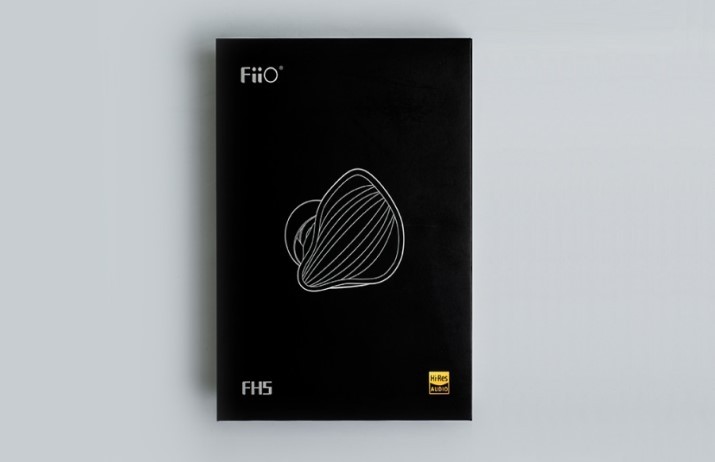
After you open this cover you will see the FH5 that is placed in a removable foam pad. The first appearance of the FH5 is pretty impressive and gives you the impression that you have bought a special product.

Right after you remove the foam pad you will see the nicely placed foam and silicone ear tips and the pelican case with Fiio branding.
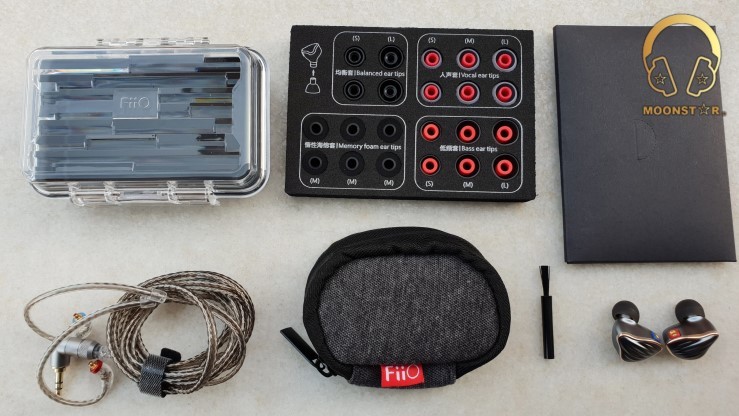
Each silicone and foam ear tip has a short description about the sound effect and the size.
They are 2 pairs of balanced ear tips (small/large size), 3 pairs of vocal ear tips (small/medium/large size), 3 pairs of bass ear tips (small/medium/large size) and 3 pairs of memory foam ear tips ((small/medium/large size).

The pelican case with Fiio branding has a nice pattern on the top cover and is a safe place for your FH5.


There is also a small and carry pouch with zipper that is made of fabric material and a cleaning tool, which are some nice additions.
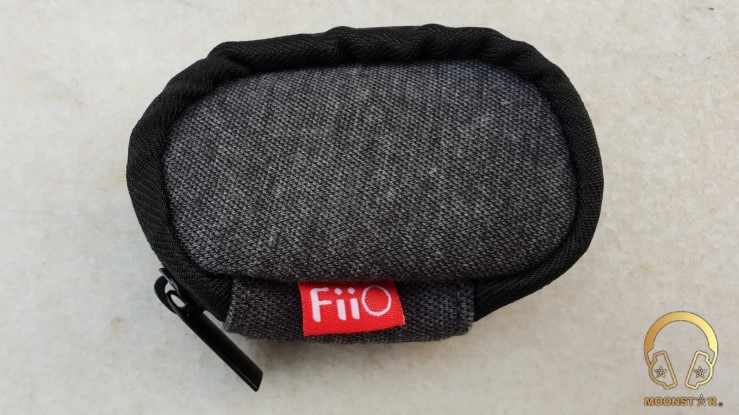
Design, Build Quality and Fit:
The Fiio FH5 has a very nice looking unique design that gives you a nice impression. The rare monitor housing has a patented “TRISHELL” structural design, made of a 5-axis CNC machined aluminum-magnesium material.

The faceplate (front cover) is fixed (according to Fiio) tightly together with multiple screws to the rare body to reduce resonance and distortion. The faceplate of the FH5 continuous Fiio’s design language that you can find on the Fiio F9 and F9 Pro, which looks like a see shell.
The Monitor is in grey color with exception of the golden frame on the front surface that gives the FH5 a premium feel.

On rear body of the monitor housing is a small vent and the left/right markings together with the sound nozzle which has a metal grill on the top to prevent the insertion of dust and ear wax.

On the top of the monitor housing is the MMCX (Micro Miniature Coaxial) female connector that sports a red ring on the right and blue ring on the left monitor.
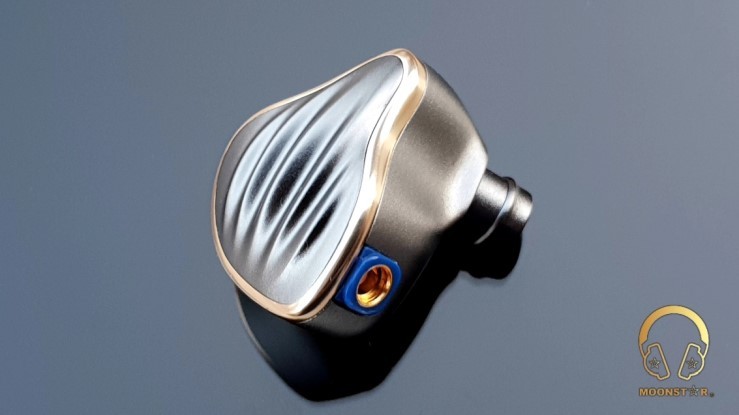
The Fiio FH5 has a nice shape which makes it very comfortable to wear. We have tested it with some of my friends in the community that have an bigger an smaller than average ear anatomy who where very happy with the comfort of the FH5.
When it come to the noise isolation of this IEM; I can say that it is on a average level that gives right enough isolation to use it pretty noise environments such as metro, bus or train without to disrupt peoples around you.
The Cable:
The Fiio FH5 comes with the 3.5mm single-ended LC-3.5B detachable cable that can also purchased separately to use with other IEM’s with MMCX connector. The LC-3.5B looks and feels very solid, which is made of high-purity monocrystalline silver-plated copper wire and that features an environmentally-friendly (according to Fiio) transparent TPU coating.
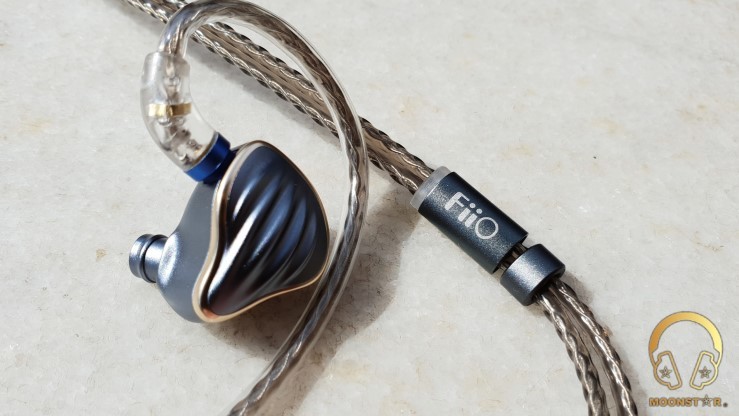

This MMCX male connectors are sitting pretty tight on the monitor and should last for years without any problem. The MMCX connectors have a transparent housing and on each connector is right left indicator, which is a red ring on the right and a blue ring on the right connector.

There is also an ear guide near the connector to wear this IEM comfortable over the ear.

The 3.5mm single ended (unbalanced) headphone jack has also a high quality craftsmanship and sports a grey metal housing with L angled profile in the same color as the monitor housing.

The cable sport also a Fiio branded Y splitter and chin slider made of the same metal material expect a small plastic part on the splitter.
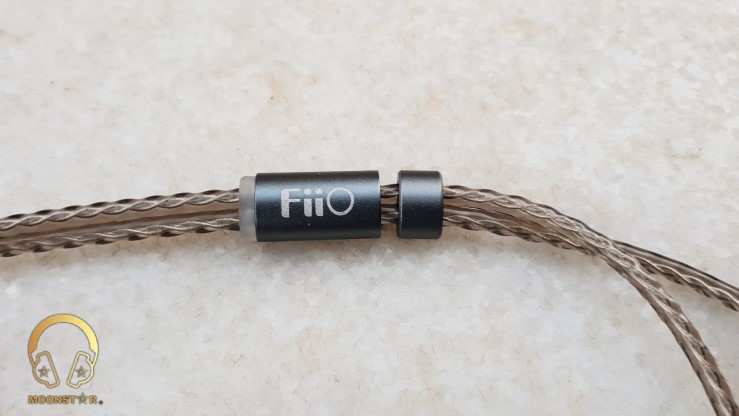
The LC-3.5B has very low microphonic effect and don’t shows this very annoying cable mixing issue you must handle with other cables.
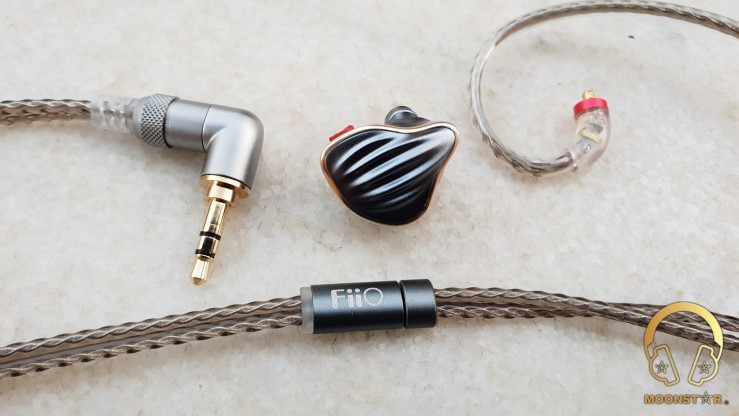
Other Remarkable Features:
a) The Quad Driver:
The FH5 comes with a hybrid driver design that combines balanced armature and dynamic drivers. Low frequencies will be produced by the 10mm polymer nanocomposite dynamic driver.
The Mid frequencies are produced by the Knowles ED30262 balanced armature driver, while lower and the higher treble frequencies are created by the Knowles 31082, which is a improved over the older Knowles 30017.
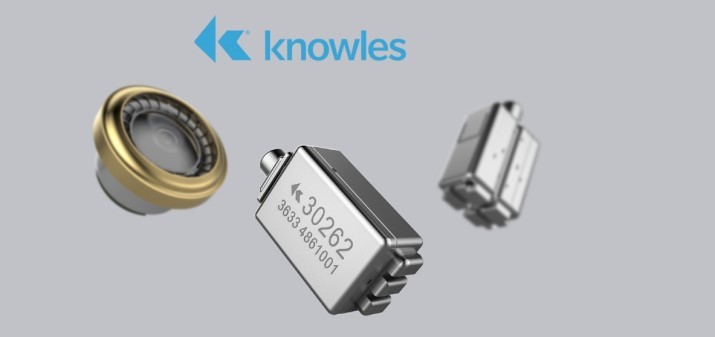
b) S.TURBO Technology:
The FH5’s low frequency sound tube adopts Fiio’s patented S.TURBO technology, which is a structural design that filters out unnecessary mid and high frequencies produced by the 10mm dynamic driver that is responsible to create the sub-bass and bass frequencies.

Drivability (Impedance):
The Fiio FH5 has quite low impedance of 19 ohm that makes it to a very easy to drive In-Ear Monitor. The FH5 is an ideal IEM to use with portable sources that have weak amplification such as mobile/smart phones, tablets and small audio players.
Technical Specifications:
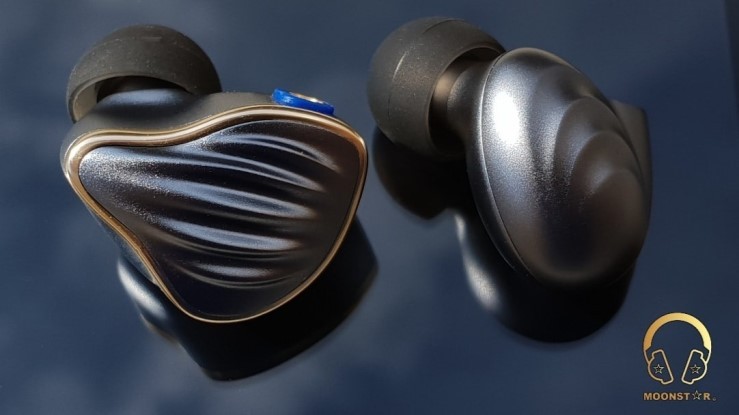
Sources used for this review:
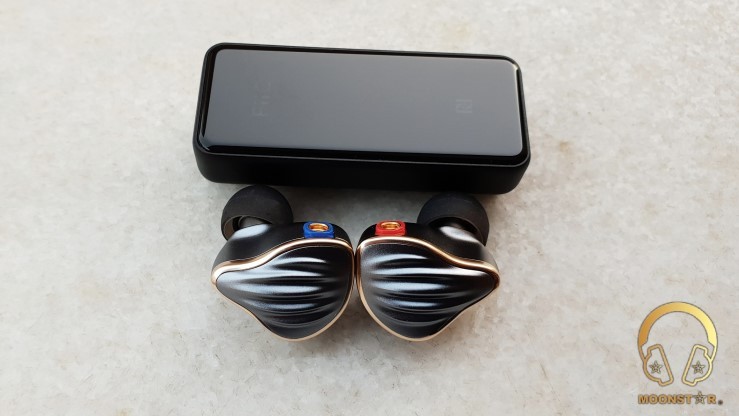
Albums & tracks used for this review:
The Sound:
The Fiio FH5 has a rather W-shaped tuning unlike most IEM's in the market, which prefer a V-shaped sound signature. This W-shaped sound signature shows a dominant / boosted sub-bass and upper midrange, with male vocals in the background and female vocals in the foreground.
The tonality of the Fiio FH5 is slightly warmer than neutral and forgiving presentation.

The Bass:
a) Sub-bass:
The Fiio FH5 has a powerful, deep and well extending sub-bass performance. It is possible to hear and to feel this deep and powerful sub-bass in tracks such as, Lorde’s “Royals”, Massive Attack’s “Angle” and Armin Van Buuren’s "Vini Vici". The sub-bass region has more impact/emphasis and quantity than the mid-bass area, which is a result of the W shaped sound signature. This amazing sub-bass performance is replaced in a very controlled manner by the mid-bass, which leads to an airy, fast and detailed presentation..
b) Bass and Midbass:
The mid-bass of the Fiio FH5 has slightly less emphasis than the sub-bass, but shows a pretty strong slam effect, which will be sufficient for most peoples except basshead's in terms of quantity and intensity.
The Fiio FH5 has a very fast and controlled bass, which is rarely seen at this price level. Furthermore the bass speed and tightness in genres such as edm/trance or metal music is well above average.
There are no negative situations such as looseness, hollowness and speed drops that makes the bass presentation quite clean and transparent.
The Fiio FH5 sound natural and controlled with percussion instruments such as bongo, drum, cajon etc. and represents them in a quite natural tonality.
Instruments like the bass guitar does not sound too thick or thin and have a good speed and emphasis, with a sufficient brightness in higher notes. GoGo Penguin’s pretty harsh contrabass performances sounds fast and clear, while Alboran Trio’s contrabass has a softer and musical tonality.
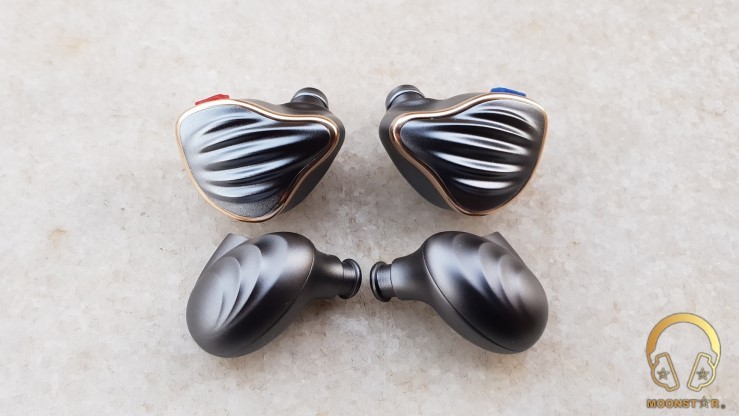
The Midrange:
The midrange of the Fiio FH5 is recessed due to the W shaped sound signature and shows a slightly warmer than neutral tonality, with an airy, transparent and clean presentation.
a) Vocals:
The Fiio FH5 is quite successful with the presentation of vocals. Male vocals are sounding slightly more recessed and distant than female vocals. The lower midrange is not as emphasized and in front like the upper midrange, which is the reason that male vocals are not as pronounced sounding as female voices. Male vocals are pretty clean and transparent and there is no hollowness or mixing. Vocals such as Dave Gahan, B. B. King or Eric Clapton are enjoyable and musical.
One of the main focus points of the Fiio FH5 is the female vocals, where I find it very successful. Female vocals sounding mildly warm, transparent and very lively, and it is possible to hear every feeling like sadness, enthusiasm, stiffness and softness.
The detail level and extension, which comes from the upper midrange, makes the Fiio FH5’s female vocal success far above average. One other good ability of the FH5 is the sibilance free presentation in the upper midrange region, when I have listened to female vocals like Laura Pergolizzi or Celine Dion.
b) Instruments:
The instrument tonality of the Fiio FH5 is clean vivid and on the warmer side of neutral, where instruments have a balanced presentation without to be too thick or thin. The sound of instruments such as pianos is emphasized, lively and bright, while the brightness increases towards the upper midrange.
String instruments such as acoustic guitars are showing a hint of warmness and are transparent and fairly musical presentation in Eric Clapton’s Unplugged Album, which was a joy to listen.
When it comes to the separation of instruments, I can easily say that the FH5 performs ways above its price tag.
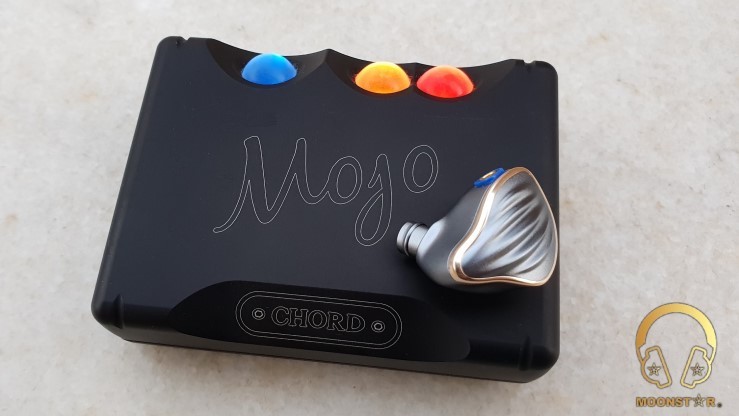
c) Upper Midrange:
The upper midrange of the FH5 is nicely pronounced in the 1 – 3 kHz region, which is improving the detail level and is adding air/space to the sound. The general tonality of the upper midrange is quite neutral and transparent.
The upper midrange of the FH5 is more forward and detailed than the treble range and sounds also pretty controlled and fairly detailed in moments where instruments are showing high distortion. The upper midrange extensions and energy with female vocals and instruments doesn’t show any remarkable deficiencies
The Treble Range:
The Fh5 has a soft and forgiving treble presentation, which is not as dominant as the upper midges and subbass region.
a) Lower Treble Range:
The treble extension, emphasis and detail decrease in the transition the upper treble range, that means that the lower treble range is more detail the upper treble region.
The definition and extensions of instruments such as hi-hats in genres like jazz music is pretty good in this area and there is no remarkable issue except the lack of extensions while listening to crash cymbals.
Instruments such as flute, piano or violin are sounding quite emphasized and exciting in the lower treble range.
b) Upper Treble Range:
The Fiio FH5 has a mild 7 kHz treble peak that starts to roll off fairly fast, which is decreasing the detail level but makes the presentation of the FH5 more relaxed and forgiving.
Fiio aimed at the upper treble a musical and non-fatiguing presentation. For example, hi-hats are more pronounced than crash cymbals and the extension of crash cymbals is shorter than those of the hi-hats.
The Fiio FH5 has a little roll-off in the upper treble range, but is quite successful in most music genres with its non fatiguing presentation.
The Soundstage:
The soundstage of the Fiio FH5 is not the widest in my In-Ear Monitor collection and shows an average width. However, this performance is suitable for a precise instrument placement. When it comes to the depth of the stage, the FH5 is more successful than its width. The soundstage has good depth which is an important factor for the fairly silence background.

Comparison:
Fiio FH5 versus iBasso IT04:

The iBasso IT04 has the same quad driver configuration such as the Fiio FH5, that is also a combination of 1 (one) dynamic and 3 (three) balanced armature drivers.
The material used or the monitor is different. The iBasso monitor is made of an acrylic shell that sports a carbon fiber faceplate, while Fiio decided to use the patented TRISHELL structure, which is made of CNC machined aluminum-magnesium alloy. Both IEM’s have detachable cables with MMCX (Micro Miniature Coaxial) connectors.
The overall built quality and comfort is pretty good on both IEM’s while the choice should be a matter of personal preference.
When it comes to the sound, the Fiio FH5 and the iBasso IT04 are showing a different sound signature. The Fiio FH5 has a W shaped presentation, while iBasso IT04 shows a mildly V shaped sound signature. The tonality is also fairly different; the IT04 has a pretty neutral tonality, while the FH5 sounds warmer.
Both In-Ear Monitors sharing a good sub-bass response, while the FH5 has a stronger and more emphasized sub-bass presentation, which goes also deeper and has more extension, than those of the IT04.
The bass of the IT04 has a linear character that shows an average bass quantity and intensity, while the FH5 is more intensive bass presentation. But the iBasso IT04 is in terms of bass speed and tightness superior to the FH5.
The bass presentation of both IEM’s is pretty controlled while the IT04 a little bit better in this regarding.
The midrange of the Fiio FH5 sounds noticeably more recessed than those of the iBasso IT04. The midrange of the IT04 sounds quite neutral and transparent, while the FH5 has a slightly warmer and musical presentation.
When it comes to the vocal performance and character; the Fiio FH5 is the more suitable IEM with male vocals because of the better lower midrange quantity. But when it comes to female vocals, I can say that the IT04 is superior to the FH5 because of the stronger and intensive upper midrange, which has a peak around the 8 kHz region. However, the FH5 sounds more emotional, musical and warmer while presenting female voices.
The iBssso IT04 showing us a quite neutral tonality and detailed instrument presentation, while the Fiio FH5 has a warmer tonality and musical instrument presentation. The overall instrument detail level of the iBasso IT04 is superior to those of the Fiio FH5, which is quite normal at this price difference.
Both the iBasso IT04 and the Fiio FH5 have an detailed and fairly good extending upper midrange presentation. One of the main differences is the upper midrange transition where the FH5 has better control. However, the upper midrange detail and overall clarity are more successful with the IT04.
The treble range and overall treble presentation of the iBasso IT04 is more upfront and noticeable, than those of the Fiio FH5, which has a smoother/softer presentation. The IT04 is also superior to the FH5 in terms of treble extension, intensity, quantity and detail.
The iBasso IT04 has wild hitting and good extending bells, while the FH5 represents the same instrument with shorter extension and in a softer, non-fatiguing way.
When it comes to the soundstage performance and separation of instruments, I have noticed that both In-Ear Monitors have enough width and depth for a relative precise separation. But there is a noticeable difference, because the iBasso IT04 has more width, while the Fiio FH5 sounds more airy and shows better depth.

Conclusion:
It was a real joy to review the Fiio FH5 which has me even more curious about future products of this company. The FH5 is an eye-catching IEM with its beautiful shell design and robust craftsmanship. But this would not be enough if it doesn’t have had a good sound such as it looks like, and YES the Fiio FH5 is a big success and a upgrade over the F9 and F9 Pro. It is even able to compete with IEM’s that have a higher price label.
Pros and Cons:
Introduction:
Fiio is a Chinese HiFi brand that was established in 2007 and has experience in researching and developing countless portable music products of different types, and sell Fiio-branded products through sales agents worldwide. The brand name Fiio is composed of Fi (fidelity from HiFi) and iO (number 1&0), representing the real feeling and convenient life that digital brings to life. Meanwhile, the Chinese “飞傲” is the transliteration of Fiio, indicating the positive and innovative spirit as thriving as spring.
After the success of Fiio’s most popular IEMs the F9 PRO and FH1 they launched their latest flagship the FH5 that has a 4 driver Hybrid (3 Balanced + 1 Dynamic) configuration and that I will now review for you.

Disclaimer:
I would like to thank Fiio for providing me the Fiio FH5 as review sample. I am not affiliated with Fiio beyond this review and all these words are reflecting my true and unaltered opinions about the product.
# This review was originally posted on my blog and now I want to share it with the Head-Fi community.
Price:
The MSRP price for the Fiio FH5 is 259,99 USD
- Purchase Link Amazon: https://amzn.to/2RPBiCz
- Purchase Link AliExpress: https://bit.ly/2NHNCl7
- Product Website: https://www.fiio.com/fh5
Package and Accessories:
The Fiio FH5 In-Ear Monitor is coming in a relative big cardboard box compared to the F9Pro that came in a smaller packaging. This box has a sleeve cover that displays a drawing of the FH5.

After you open this cover you will see the FH5 that is placed in a removable foam pad. The first appearance of the FH5 is pretty impressive and gives you the impression that you have bought a special product.

Right after you remove the foam pad you will see the nicely placed foam and silicone ear tips and the pelican case with Fiio branding.

Each silicone and foam ear tip has a short description about the sound effect and the size.
They are 2 pairs of balanced ear tips (small/large size), 3 pairs of vocal ear tips (small/medium/large size), 3 pairs of bass ear tips (small/medium/large size) and 3 pairs of memory foam ear tips ((small/medium/large size).

The pelican case with Fiio branding has a nice pattern on the top cover and is a safe place for your FH5.


There is also a small and carry pouch with zipper that is made of fabric material and a cleaning tool, which are some nice additions.

Design, Build Quality and Fit:
The Fiio FH5 has a very nice looking unique design that gives you a nice impression. The rare monitor housing has a patented “TRISHELL” structural design, made of a 5-axis CNC machined aluminum-magnesium material.

The faceplate (front cover) is fixed (according to Fiio) tightly together with multiple screws to the rare body to reduce resonance and distortion. The faceplate of the FH5 continuous Fiio’s design language that you can find on the Fiio F9 and F9 Pro, which looks like a see shell.
The Monitor is in grey color with exception of the golden frame on the front surface that gives the FH5 a premium feel.

On rear body of the monitor housing is a small vent and the left/right markings together with the sound nozzle which has a metal grill on the top to prevent the insertion of dust and ear wax.

On the top of the monitor housing is the MMCX (Micro Miniature Coaxial) female connector that sports a red ring on the right and blue ring on the left monitor.

The Fiio FH5 has a nice shape which makes it very comfortable to wear. We have tested it with some of my friends in the community that have an bigger an smaller than average ear anatomy who where very happy with the comfort of the FH5.
When it come to the noise isolation of this IEM; I can say that it is on a average level that gives right enough isolation to use it pretty noise environments such as metro, bus or train without to disrupt peoples around you.
The Cable:
The Fiio FH5 comes with the 3.5mm single-ended LC-3.5B detachable cable that can also purchased separately to use with other IEM’s with MMCX connector. The LC-3.5B looks and feels very solid, which is made of high-purity monocrystalline silver-plated copper wire and that features an environmentally-friendly (according to Fiio) transparent TPU coating.


This MMCX male connectors are sitting pretty tight on the monitor and should last for years without any problem. The MMCX connectors have a transparent housing and on each connector is right left indicator, which is a red ring on the right and a blue ring on the right connector.

There is also an ear guide near the connector to wear this IEM comfortable over the ear.

The 3.5mm single ended (unbalanced) headphone jack has also a high quality craftsmanship and sports a grey metal housing with L angled profile in the same color as the monitor housing.

The cable sport also a Fiio branded Y splitter and chin slider made of the same metal material expect a small plastic part on the splitter.

The LC-3.5B has very low microphonic effect and don’t shows this very annoying cable mixing issue you must handle with other cables.

Other Remarkable Features:
a) The Quad Driver:
The FH5 comes with a hybrid driver design that combines balanced armature and dynamic drivers. Low frequencies will be produced by the 10mm polymer nanocomposite dynamic driver.
The Mid frequencies are produced by the Knowles ED30262 balanced armature driver, while lower and the higher treble frequencies are created by the Knowles 31082, which is a improved over the older Knowles 30017.

b) S.TURBO Technology:
The FH5’s low frequency sound tube adopts Fiio’s patented S.TURBO technology, which is a structural design that filters out unnecessary mid and high frequencies produced by the 10mm dynamic driver that is responsible to create the sub-bass and bass frequencies.

Drivability (Impedance):
The Fiio FH5 has quite low impedance of 19 ohm that makes it to a very easy to drive In-Ear Monitor. The FH5 is an ideal IEM to use with portable sources that have weak amplification such as mobile/smart phones, tablets and small audio players.
Technical Specifications:
- Driver Configuration : Quad Driver with Hybrid Configuration
- Driver type : 1 x 10mm Dynamic Driver + 3 x Balanced Armature Driver (Knowles)
- Frequency response : 15Hz ~ 40kHz
- Sensitivity : 112 dB/mW
- Impedance : 19 Ω
- Max. input power : 100mW
- Plug : 3.5mm gold-plated L-shaped plug jack (CTIA standard)
- Connector type : MMCX Connector
- Cord length : 1.2 m
- Weight : 8 g (single monitor)
- Wearing type : Over the Ear

Sources used for this review:
- IEM : Fiio FH5 and iBasso IT04
- DAP/DAC/AMP : Fiio M7, Cayin N5II, Chord Mojo, Fiio BTR3, Sony WM1A

Albums & tracks used for this review:
- First Aid Kit - My Silver Lining (Spotify)
- London Grammar – Interlud (Live) (Flac 24bit/44kHz)
- Laura Pergolizzi – Lost On You “Live at Harvard and Stone” (Tidal Hi-Fi)
- Minor Empire – BulbulumAltinKafeste (Spotify)
- Leonard Cohen – You Wnt it Darker (Spotify)
- Dave Gahan – Kingdom (Tidal Hi-Fi)
- Eric Clapton – Unplugged (Flac 24bit/96kHz)
- Casey Abrams – Robot Lover (Tidal Hi-Fi)
- Vivaldi – Le QuarttroStagioni “The Four Season” (Tidal Hi-Fi)
- GoGo Penguin - Fanfares (Tidal Hi-Fi)
- Alboran Trio - Cinque Lunghissimi Minuti (Flac 16bit/44kHz)
- Otto Liebert& Luna Negra – The River (DSF) – Binaural Recording
- Future Heroes – Another World (Tidal Hi-fi)
- Lorde – Team (Flac 24bit/48kHz)
- Tom Player – Resonace Theory “Album” (Tidal Hi-Fi)
- Massive Attack – Angel (Tidal Hi-Fi)
- Portishead – It Could Be Sweet (Spotify)
- Armin Van Buuren - Vini Vici (Spotify)
- Liquid Tension Experiment 2 – Acid Rain (Spotify)
- Opeth – Damnation (Tidal Hi-Fi)
- Metallica – Sad but True (Flac 24bit/96kHz)
- Megadeth - Sweating Bullets (Tidal Hi-Fi)
- Slayer - Angel of Death (Spotify)
The Sound:
The Fiio FH5 has a rather W-shaped tuning unlike most IEM's in the market, which prefer a V-shaped sound signature. This W-shaped sound signature shows a dominant / boosted sub-bass and upper midrange, with male vocals in the background and female vocals in the foreground.
The tonality of the Fiio FH5 is slightly warmer than neutral and forgiving presentation.

The Bass:
a) Sub-bass:
The Fiio FH5 has a powerful, deep and well extending sub-bass performance. It is possible to hear and to feel this deep and powerful sub-bass in tracks such as, Lorde’s “Royals”, Massive Attack’s “Angle” and Armin Van Buuren’s "Vini Vici". The sub-bass region has more impact/emphasis and quantity than the mid-bass area, which is a result of the W shaped sound signature. This amazing sub-bass performance is replaced in a very controlled manner by the mid-bass, which leads to an airy, fast and detailed presentation..
b) Bass and Midbass:
The mid-bass of the Fiio FH5 has slightly less emphasis than the sub-bass, but shows a pretty strong slam effect, which will be sufficient for most peoples except basshead's in terms of quantity and intensity.
The Fiio FH5 has a very fast and controlled bass, which is rarely seen at this price level. Furthermore the bass speed and tightness in genres such as edm/trance or metal music is well above average.
There are no negative situations such as looseness, hollowness and speed drops that makes the bass presentation quite clean and transparent.
The Fiio FH5 sound natural and controlled with percussion instruments such as bongo, drum, cajon etc. and represents them in a quite natural tonality.
Instruments like the bass guitar does not sound too thick or thin and have a good speed and emphasis, with a sufficient brightness in higher notes. GoGo Penguin’s pretty harsh contrabass performances sounds fast and clear, while Alboran Trio’s contrabass has a softer and musical tonality.

The Midrange:
The midrange of the Fiio FH5 is recessed due to the W shaped sound signature and shows a slightly warmer than neutral tonality, with an airy, transparent and clean presentation.
a) Vocals:
The Fiio FH5 is quite successful with the presentation of vocals. Male vocals are sounding slightly more recessed and distant than female vocals. The lower midrange is not as emphasized and in front like the upper midrange, which is the reason that male vocals are not as pronounced sounding as female voices. Male vocals are pretty clean and transparent and there is no hollowness or mixing. Vocals such as Dave Gahan, B. B. King or Eric Clapton are enjoyable and musical.
One of the main focus points of the Fiio FH5 is the female vocals, where I find it very successful. Female vocals sounding mildly warm, transparent and very lively, and it is possible to hear every feeling like sadness, enthusiasm, stiffness and softness.
The detail level and extension, which comes from the upper midrange, makes the Fiio FH5’s female vocal success far above average. One other good ability of the FH5 is the sibilance free presentation in the upper midrange region, when I have listened to female vocals like Laura Pergolizzi or Celine Dion.
b) Instruments:
The instrument tonality of the Fiio FH5 is clean vivid and on the warmer side of neutral, where instruments have a balanced presentation without to be too thick or thin. The sound of instruments such as pianos is emphasized, lively and bright, while the brightness increases towards the upper midrange.
String instruments such as acoustic guitars are showing a hint of warmness and are transparent and fairly musical presentation in Eric Clapton’s Unplugged Album, which was a joy to listen.
When it comes to the separation of instruments, I can easily say that the FH5 performs ways above its price tag.

c) Upper Midrange:
The upper midrange of the FH5 is nicely pronounced in the 1 – 3 kHz region, which is improving the detail level and is adding air/space to the sound. The general tonality of the upper midrange is quite neutral and transparent.
The upper midrange of the FH5 is more forward and detailed than the treble range and sounds also pretty controlled and fairly detailed in moments where instruments are showing high distortion. The upper midrange extensions and energy with female vocals and instruments doesn’t show any remarkable deficiencies
The Treble Range:
The Fh5 has a soft and forgiving treble presentation, which is not as dominant as the upper midges and subbass region.
a) Lower Treble Range:
The treble extension, emphasis and detail decrease in the transition the upper treble range, that means that the lower treble range is more detail the upper treble region.
The definition and extensions of instruments such as hi-hats in genres like jazz music is pretty good in this area and there is no remarkable issue except the lack of extensions while listening to crash cymbals.
Instruments such as flute, piano or violin are sounding quite emphasized and exciting in the lower treble range.
b) Upper Treble Range:
The Fiio FH5 has a mild 7 kHz treble peak that starts to roll off fairly fast, which is decreasing the detail level but makes the presentation of the FH5 more relaxed and forgiving.
Fiio aimed at the upper treble a musical and non-fatiguing presentation. For example, hi-hats are more pronounced than crash cymbals and the extension of crash cymbals is shorter than those of the hi-hats.
The Fiio FH5 has a little roll-off in the upper treble range, but is quite successful in most music genres with its non fatiguing presentation.
The Soundstage:
The soundstage of the Fiio FH5 is not the widest in my In-Ear Monitor collection and shows an average width. However, this performance is suitable for a precise instrument placement. When it comes to the depth of the stage, the FH5 is more successful than its width. The soundstage has good depth which is an important factor for the fairly silence background.

Comparison:
Fiio FH5 versus iBasso IT04:

The iBasso IT04 has the same quad driver configuration such as the Fiio FH5, that is also a combination of 1 (one) dynamic and 3 (three) balanced armature drivers.
The material used or the monitor is different. The iBasso monitor is made of an acrylic shell that sports a carbon fiber faceplate, while Fiio decided to use the patented TRISHELL structure, which is made of CNC machined aluminum-magnesium alloy. Both IEM’s have detachable cables with MMCX (Micro Miniature Coaxial) connectors.
The overall built quality and comfort is pretty good on both IEM’s while the choice should be a matter of personal preference.
When it comes to the sound, the Fiio FH5 and the iBasso IT04 are showing a different sound signature. The Fiio FH5 has a W shaped presentation, while iBasso IT04 shows a mildly V shaped sound signature. The tonality is also fairly different; the IT04 has a pretty neutral tonality, while the FH5 sounds warmer.
Both In-Ear Monitors sharing a good sub-bass response, while the FH5 has a stronger and more emphasized sub-bass presentation, which goes also deeper and has more extension, than those of the IT04.
The bass of the IT04 has a linear character that shows an average bass quantity and intensity, while the FH5 is more intensive bass presentation. But the iBasso IT04 is in terms of bass speed and tightness superior to the FH5.
The bass presentation of both IEM’s is pretty controlled while the IT04 a little bit better in this regarding.
The midrange of the Fiio FH5 sounds noticeably more recessed than those of the iBasso IT04. The midrange of the IT04 sounds quite neutral and transparent, while the FH5 has a slightly warmer and musical presentation.
When it comes to the vocal performance and character; the Fiio FH5 is the more suitable IEM with male vocals because of the better lower midrange quantity. But when it comes to female vocals, I can say that the IT04 is superior to the FH5 because of the stronger and intensive upper midrange, which has a peak around the 8 kHz region. However, the FH5 sounds more emotional, musical and warmer while presenting female voices.
The iBssso IT04 showing us a quite neutral tonality and detailed instrument presentation, while the Fiio FH5 has a warmer tonality and musical instrument presentation. The overall instrument detail level of the iBasso IT04 is superior to those of the Fiio FH5, which is quite normal at this price difference.
Both the iBasso IT04 and the Fiio FH5 have an detailed and fairly good extending upper midrange presentation. One of the main differences is the upper midrange transition where the FH5 has better control. However, the upper midrange detail and overall clarity are more successful with the IT04.
The treble range and overall treble presentation of the iBasso IT04 is more upfront and noticeable, than those of the Fiio FH5, which has a smoother/softer presentation. The IT04 is also superior to the FH5 in terms of treble extension, intensity, quantity and detail.
The iBasso IT04 has wild hitting and good extending bells, while the FH5 represents the same instrument with shorter extension and in a softer, non-fatiguing way.
When it comes to the soundstage performance and separation of instruments, I have noticed that both In-Ear Monitors have enough width and depth for a relative precise separation. But there is a noticeable difference, because the iBasso IT04 has more width, while the Fiio FH5 sounds more airy and shows better depth.

Conclusion:
It was a real joy to review the Fiio FH5 which has me even more curious about future products of this company. The FH5 is an eye-catching IEM with its beautiful shell design and robust craftsmanship. But this would not be enough if it doesn’t have had a good sound such as it looks like, and YES the Fiio FH5 is a big success and a upgrade over the F9 and F9 Pro. It is even able to compete with IEM’s that have a higher price label.
Pros and Cons:
- + Build Quality
- + Accessories (especially the tips selection)
- + Wonderful Lively Presentation
- + Musical Tuning
- + Very Forgiving
- + Cable Quality
- - Soundstage could be slightly wider
- - Upper Treble Roll-Off
Moonstar
100+ Head-Fier
Pros: Clear, Crisp and balanced sound
Good build quality
Great fit
Good build quality
Great fit
Cons: Missing some fullness and warmth
The BS1, a Gentleman in the World of Earbuds

Disclaimer:
First of all, I would like to thank Penon Audio for sending me this pair of Penon Audio BS1 Experience Version as gift with some other purchased items.
I found this earbud so good that I have decided to write a review and share it with my honest opinion.
Introduction:
Penon Audio is well known in the Audiophile World as retailer of various Hi-Fi equipments, and this is the first earbud of this company. The Penon BS1 that I will review is not the final product; it is the experience version of the upcoming Official Version that will be the flagship of this company.
The Peon BS1 Experience Version costs 39,00 USD
Here is the purchase link: Penon BS1 Expierence Version
I will mention the Penon BS1 Experience Version in my review in short Penon BS1 or BS1.
PS: Penon Audio indents to deduct this 39,00 USD to the one who bought already the Experience Version and would like to buy the BS1 Official Version.
Package and Accessories:
The Penon BS1 comes in a small blue card box.
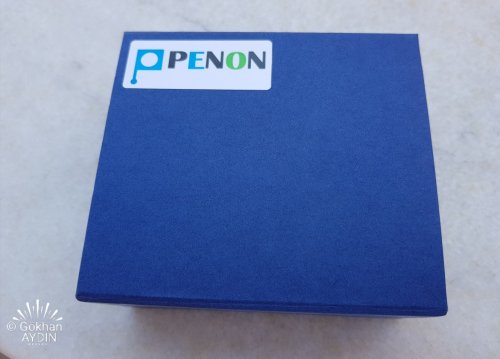

This card box includes the following contents;

The case provided has some storage bags for your earbud foams that I find very useful!

Design, Fit and Build Quality:
The Peonon BS1 comes in a mat black color with a different design than regular Chi-Fi earbud. It doesn’t looks impressive like my Rose Masya or the Ourart Ti7 but has a minimalistic nice curved design.

The build quality looks and feels good and it should last longer then regular budget earbuds. The cable of the BS1 is one of the best I have ever seen in this price category. The silver plated OFC (oxygen free cooper) copper cable is protected with a transparent PVC coating that has nice finish and feel.

The Y-Splitter and straight styled 3.5mm plug is made of metal (looks like aluminum) and has a black finish. The 3.5mm headphone plug is an SE (single ended) TRS plug that has a gold plated finish.

The fit of the Penon BS1 is pretty good. I like the way it holds in my ears; quit comfortable and ideal for long listening periods. I prefer the BS1 design over the outdated shell of the classic Sennheiser MX500. The BS1 is also a good option for people who listen to music while sleeping
I did notice only a very low amount of microphonics due this review that should not be a big issue.
Technical Specifications:
Drivability:
The Penon BS1 has an impedance of 32 ohm, so that it is easy to drive from almost any source (phone, ipod etc.)
Albums & tracks used for this review:
Erabud : Penon BS1 Expirence Version
DAP/DAC : Chord Mojo, Aune M2 ProSmart Player (aka Yin Lu Mei) D200+, Zishan Z2, Ipad Air2
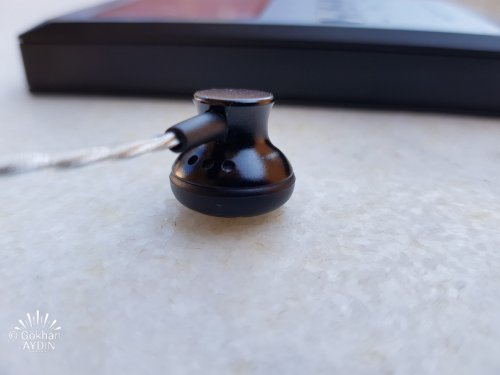
The Sound:
This review is written after an intensive burn-in process of +120 hours. I have used the stock provided full foams due this review.
Tonality:
The Penon BS1 is a relative bright sounding earbud. It sounds clear, crisp and balanced. The Penon BS1 is one of the most engaging earbuds in my collection.
Bass:
First of all please note that the BS1 is not a bass oriented earbud. It’s not bass light but the tuning is not very ideal for bass demanding genres like Electronic, Hip-Hop etc. But it has the right amount for genres like Classic, Jazz, Blues and Rock music. I loved the way guitar sounds in Otto Liebert and Luna Negra’s song “The River”. My only complain could come to the bass extension that is not really bad for this price point.
I would only wish that the BS1 had more bass presence around the 250Hz band to add more warmth to the music that would also not affect the overall definition.
Because of this I would recommend to use warm sources like the Chor Mojo and Aune M2 Pro that can add the missing warmth to this earbud.
PS: Penon Audio has informed me that they will solve the missing fullness and warmth in the bass section, especially around the 250 Hz region.
Mids:
One of the best parts of the BS1 is the mid section. It sounds clean, clear and detailed and has also a nice texture. Male vocals sound superb, but the Penon BS1 truly shines with female vocals like Melody Gardot or Diana Krall, especially while pairing with my new favorite DAP the Aune M2 Pro.
The Penon BS1 has a decent instrument separation that I highly regard. I didn’t hear any noticeable interference problems, even in very complex passages with lots of instruments like classical music.
There is a small amount of stress in the upper mid region (2 – 4 kHz) that is in a tolerable level. I would advice again to pair the BS1 with a full bodied and warm source to hear its true potential.
Treble:
As mentioned before, the BS1 is a relative bright sounding earbud with an airy and detailed presentation. The treble region is well controlled and doesn’t sound aggressive or ear-piercing. I didn’t hear any noticeable sibilance while listening to one of my favorite female voices Céline Dion on the track “The Power of Love”.
The upper treble has a slightly boost (around 4 kHz) that gives the BS1 an overall clarity and a good definition.
The upper treble region (around 8 – 12 kHz) gives the Penon BS1 a really nice Hi-Fi sound signature.
In short; the BS1 is a fatiguing free earbud with a smooth treble presence for that I would always recommend to use a warm source due its slightly bright presentation.
Soundstage:
The Penon BS1 has a really good soundstage. It is expansive; especially the width of the soundstage is one of the best I have heard from an earbud in this price category. The depth of the soundstage is also good but not as impressive like the width that I mentioned before.

Final thoughts:
The Penon BS1 Experience Version gives us a good idea for the upcoming final product. It is a very promising earbud for the price and I think that the Penon BS1 “Final Version” will be a great bang for the buck.
Pros and Cons:
+ Clear, Crisp and balanced sound
+ Good build quality
+ Great fit
- Missing some fullness and warmth in the 250 HZ region

Disclaimer:
First of all, I would like to thank Penon Audio for sending me this pair of Penon Audio BS1 Experience Version as gift with some other purchased items.
I found this earbud so good that I have decided to write a review and share it with my honest opinion.
Introduction:
Penon Audio is well known in the Audiophile World as retailer of various Hi-Fi equipments, and this is the first earbud of this company. The Penon BS1 that I will review is not the final product; it is the experience version of the upcoming Official Version that will be the flagship of this company.
The Peon BS1 Experience Version costs 39,00 USD
Here is the purchase link: Penon BS1 Expierence Version
I will mention the Penon BS1 Experience Version in my review in short Penon BS1 or BS1.
PS: Penon Audio indents to deduct this 39,00 USD to the one who bought already the Experience Version and would like to buy the BS1 Official Version.
Package and Accessories:
The Penon BS1 comes in a small blue card box.


This card box includes the following contents;
- 1 pcs Penon BS1
- 1 pcs. of hard case
- 2 bags with various sets of foam tips
- 1 pair of ear hook
- 1 pcs. of shirt clips
- 1 pcs of Penon Velcro Strap

The case provided has some storage bags for your earbud foams that I find very useful!

Design, Fit and Build Quality:
The Peonon BS1 comes in a mat black color with a different design than regular Chi-Fi earbud. It doesn’t looks impressive like my Rose Masya or the Ourart Ti7 but has a minimalistic nice curved design.

The build quality looks and feels good and it should last longer then regular budget earbuds. The cable of the BS1 is one of the best I have ever seen in this price category. The silver plated OFC (oxygen free cooper) copper cable is protected with a transparent PVC coating that has nice finish and feel.

The Y-Splitter and straight styled 3.5mm plug is made of metal (looks like aluminum) and has a black finish. The 3.5mm headphone plug is an SE (single ended) TRS plug that has a gold plated finish.

The fit of the Penon BS1 is pretty good. I like the way it holds in my ears; quit comfortable and ideal for long listening periods. I prefer the BS1 design over the outdated shell of the classic Sennheiser MX500. The BS1 is also a good option for people who listen to music while sleeping

I did notice only a very low amount of microphonics due this review that should not be a big issue.
Technical Specifications:
- Driver Config: Single Dynamic Driver
- Driver Diameter: 15.4mm Ø
- Frequency response: 15Hz - 25KHz
- Impedance: 32Ω
- Sensitivity: 114dB
- Cable length: 1.2m
- Plug: 3.5mm
Drivability:
The Penon BS1 has an impedance of 32 ohm, so that it is easy to drive from almost any source (phone, ipod etc.)
Albums & tracks used for this review:
- Otto Liebert & Luna Negra – Up Close “Album” (DSF) – Binaural Recording
- Dire Straits – Money For Nothing (DSF)
- Michael Jackson - Billie Jean (DSF)
- Diana Krall - So Wonderful (DSF)
- Norah Johns – Sunrise (DSF)
- Dr. Chesky’s Binaural Album (Flac 24bit/192kHz)
- Metallica - The Black Album (Flac 24bit/96Hz)
- Yosi Horikawa – Bubbles (Flac 16bit/44kHz)
- Melody Gardot – Who Will Comfort Me (Flac 16bit/44kHz)
- Daft Punk – Get Lucky (Flac 24bit/192kHz)
- Hans Zimmer & James Newton Howard – A Watchful Guardian (Flac 16bit/44kHz)
- Céline Dion – The Power of Love (Flac 16bit/44kHz)
Erabud : Penon BS1 Expirence Version
DAP/DAC : Chord Mojo, Aune M2 ProSmart Player (aka Yin Lu Mei) D200+, Zishan Z2, Ipad Air2

The Sound:
This review is written after an intensive burn-in process of +120 hours. I have used the stock provided full foams due this review.
Tonality:
The Penon BS1 is a relative bright sounding earbud. It sounds clear, crisp and balanced. The Penon BS1 is one of the most engaging earbuds in my collection.
Bass:
First of all please note that the BS1 is not a bass oriented earbud. It’s not bass light but the tuning is not very ideal for bass demanding genres like Electronic, Hip-Hop etc. But it has the right amount for genres like Classic, Jazz, Blues and Rock music. I loved the way guitar sounds in Otto Liebert and Luna Negra’s song “The River”. My only complain could come to the bass extension that is not really bad for this price point.
I would only wish that the BS1 had more bass presence around the 250Hz band to add more warmth to the music that would also not affect the overall definition.
Because of this I would recommend to use warm sources like the Chor Mojo and Aune M2 Pro that can add the missing warmth to this earbud.
PS: Penon Audio has informed me that they will solve the missing fullness and warmth in the bass section, especially around the 250 Hz region.
Mids:
One of the best parts of the BS1 is the mid section. It sounds clean, clear and detailed and has also a nice texture. Male vocals sound superb, but the Penon BS1 truly shines with female vocals like Melody Gardot or Diana Krall, especially while pairing with my new favorite DAP the Aune M2 Pro.
The Penon BS1 has a decent instrument separation that I highly regard. I didn’t hear any noticeable interference problems, even in very complex passages with lots of instruments like classical music.
There is a small amount of stress in the upper mid region (2 – 4 kHz) that is in a tolerable level. I would advice again to pair the BS1 with a full bodied and warm source to hear its true potential.
Treble:
As mentioned before, the BS1 is a relative bright sounding earbud with an airy and detailed presentation. The treble region is well controlled and doesn’t sound aggressive or ear-piercing. I didn’t hear any noticeable sibilance while listening to one of my favorite female voices Céline Dion on the track “The Power of Love”.
The upper treble has a slightly boost (around 4 kHz) that gives the BS1 an overall clarity and a good definition.
The upper treble region (around 8 – 12 kHz) gives the Penon BS1 a really nice Hi-Fi sound signature.
In short; the BS1 is a fatiguing free earbud with a smooth treble presence for that I would always recommend to use a warm source due its slightly bright presentation.
Soundstage:
The Penon BS1 has a really good soundstage. It is expansive; especially the width of the soundstage is one of the best I have heard from an earbud in this price category. The depth of the soundstage is also good but not as impressive like the width that I mentioned before.

Final thoughts:
The Penon BS1 Experience Version gives us a good idea for the upcoming final product. It is a very promising earbud for the price and I think that the Penon BS1 “Final Version” will be a great bang for the buck.
Pros and Cons:
+ Clear, Crisp and balanced sound
+ Good build quality
+ Great fit
- Missing some fullness and warmth in the 250 HZ region
Moonstar
100+ Head-Fier
Pros: Detail and Resolution,
Clean and Transparent Presentation,
Small and Lightweight,
A Must Have for Treble Lovers
Clean and Transparent Presentation,
Small and Lightweight,
A Must Have for Treble Lovers
Cons: The Peak around 7 kHz
HiFiMAN RE800 Silver
The Convincing Brightness of the Silver IEM
About Hifiman:
Hifiman was founded by Dr. Fang in New York - USA and is one of the most well known personal audio companies in the audiophile word.
Hifiman has a wide variety of Hi-Fi, Reference and Premium class products like Portable Audio Players, Planar Magnetic Headphones, Desktop Amplifiers and Earphones/In-Ear Monitors such as the Hifiman RE800 Silver, which belongs to the Reference Series of Earphones and that I will now review for you.
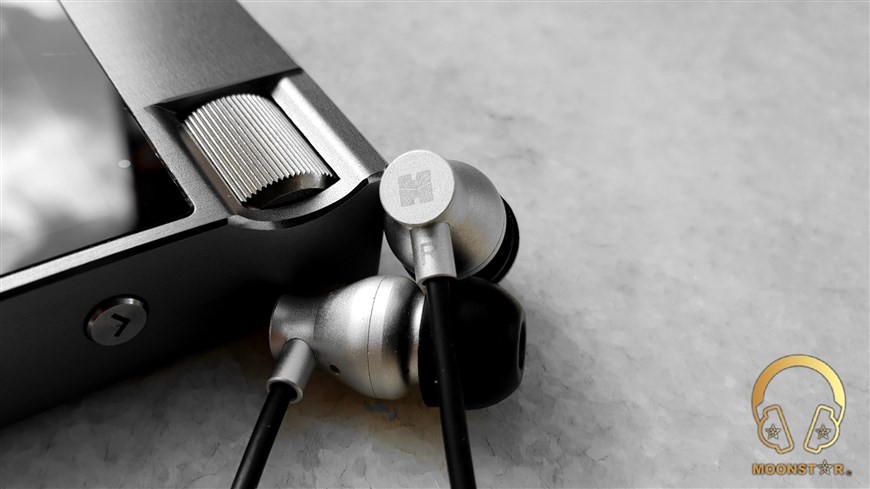
Disclaimer:
I would like to thank HiFiMAN for providing me the RE800 Silver for review purposes. I am not affiliated with HiFiMAN and/or any third person beyond this review and all these words reflect my true, unaltered opinions about the product.
Price:
The regular price of the HiFiMAN RE800 Silver is 599,00 USD but HiFiMAN offers a special discount price which is 299,00 USD. You can purchase the RE800 Silver under de following link;
http://store.hifiman.com/index.php/re800-silver.html
Package and Accessories:
The Hifiman RE800 Silver In-Ear Monitor is coming in a medium sized rectangular box, which has a top cover that contains an image about the actual product.
This box is including the following contents;
The box includes a variety of silicone ear tips (16 pairs in total), which include a large range of triple flanges, dual flanges and HiFiMAN’s special type bi-flange ear tips.
There is also a zipper case and a catalog about the actual product.
Technical Specifications:
Design and Build Quality:
The HiFiMAN RE800 Silver In-Ear Monitor is featuring an aluminum alloy housing instead a brass shell with 24K gold plating like the RE800 in Gold. This IEM is pretty small in its size and has a minimalist design that reminds me to those of the RE400, which was also very comfortable to wear.

The bottom side of the monitor shell is a vent and a metal strain relieve that protects the cable that is fixed to the monitor housing.
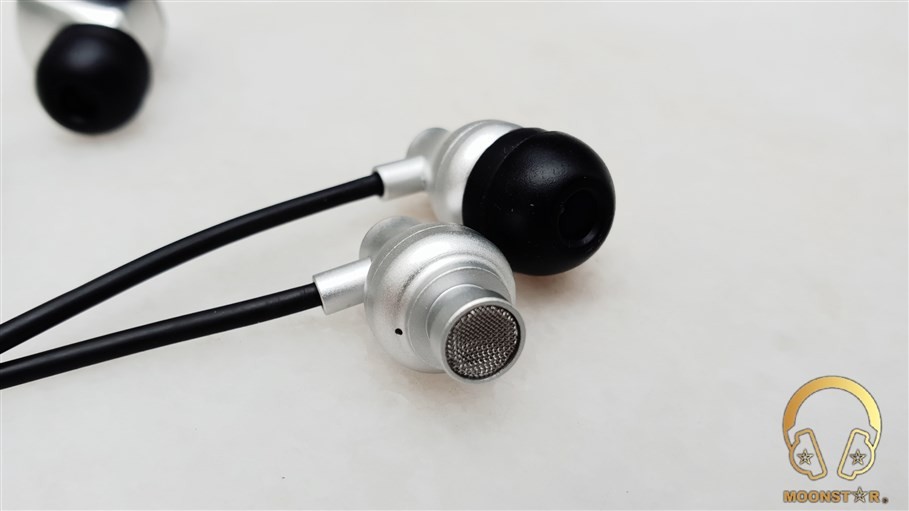
On the front of the monitor housing is the sound nozzle which sports a smaller vent and a fine woven metal grill that prevents the insertion of dust and earwax.
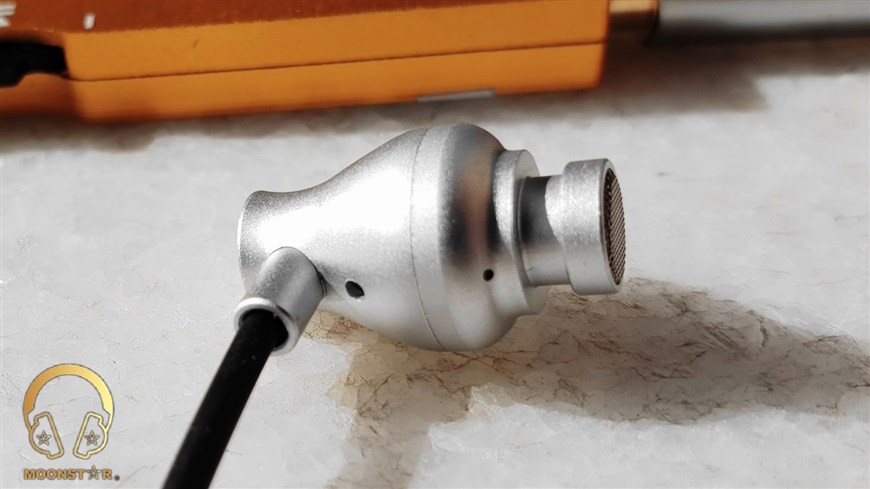
On the backside of the RE800 Silver’s housing is the HiFiMAN brand logo that is printed on the surface in grey color.
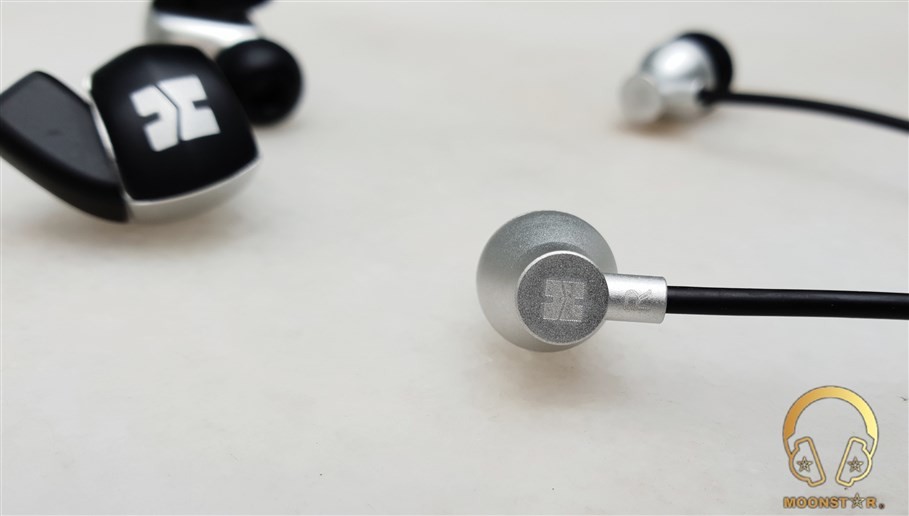
Cable:
The HiFiMAN RE800 is coming with a fixed cable which is protected by a metal strain relieve on the monitor.
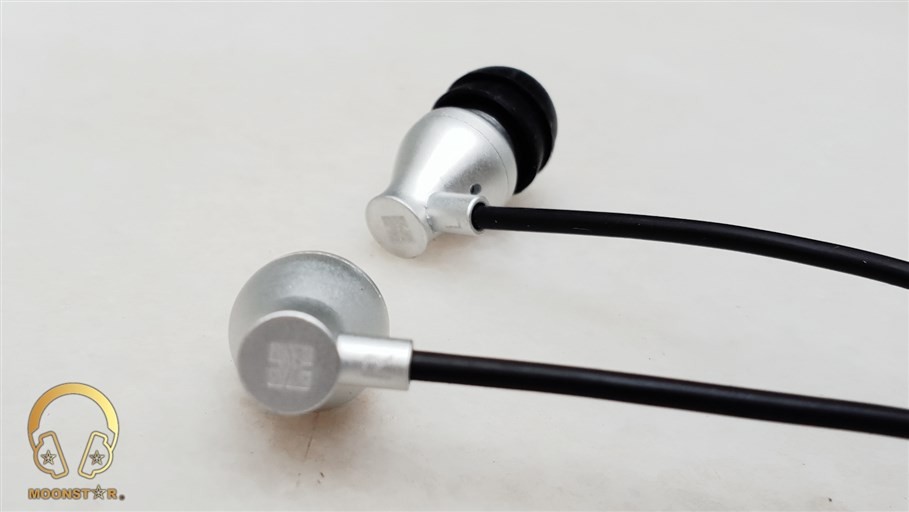
The cable is made of a 2 core silver plated crystalline copper wire, which is protected by a fairly thick TPU coating.

The RE800 silver cable sports a 3.5mm 3 pole unbalanced (TRS) earphone jack which has a gold plated. The earphone jack has a straight profile and is made of the same metal material (aluminum) and shares the same silver color that the monitor has.
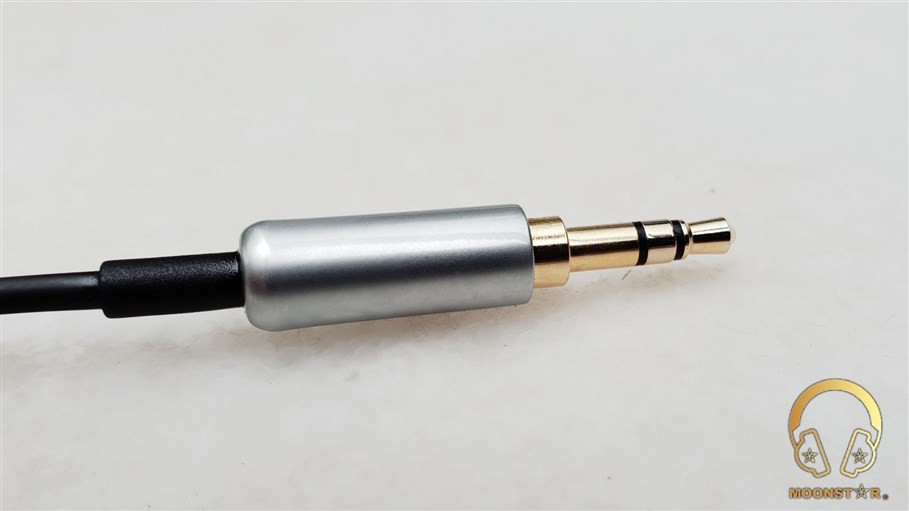
This cable has a metal Y splitter and a chin slider, which sport the HiFiMAN branding and model description.
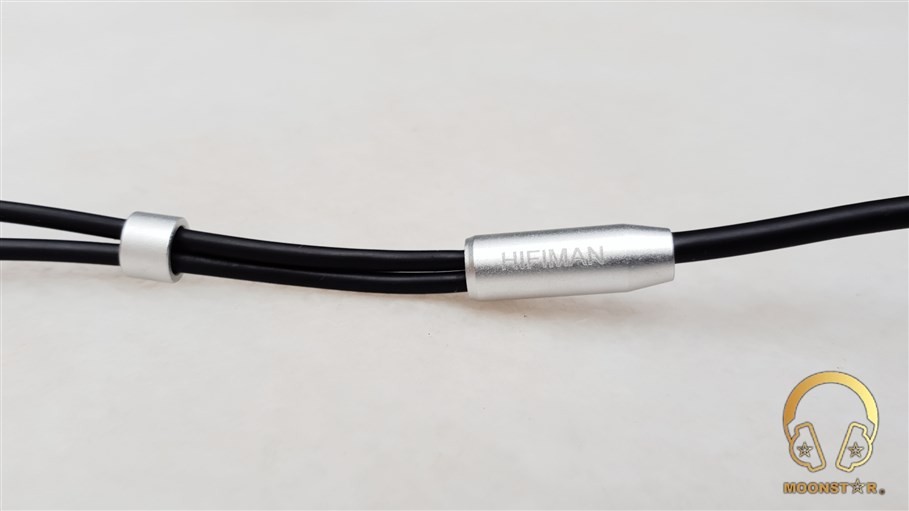
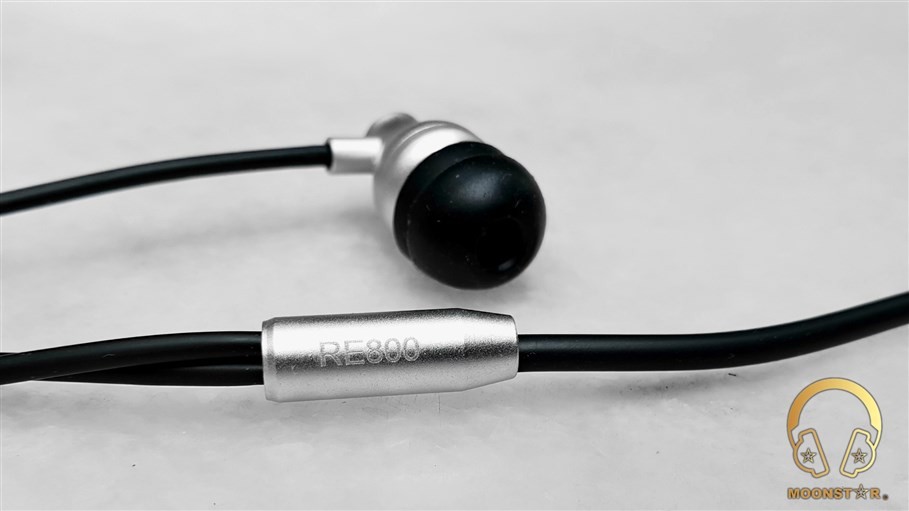
Fit and Isolation:
The HiFiMAN RE800 is a very ergonomic In-Ear Monitor due to the small and pretty lightweight (14.5g) aluminum shell and reminds me to the comfort level of another HiFiMAN product the RE400, which was also very successful in terms of fit and comfort.
The RE800 is ideal for long listening periods and can even be used while sleeping.
When it comes to the isolation, the noise blocking performance of the HiFiMAN RE800 varies from ear tip to ear tip and can be classified in general as above average, which makes it for the use in relative noise environments like metro, bus or train successful.
Some Features:
The Topology Driver/Diaphragm:
The “Topology Diaphragm” or “Topology Driver” refers to the diaphragm with a special Nano particle coating applied to its surface. The distribution of the coating has distinct geometric patterns. By varying the surface pattern, compound used, the thickness or geometric pattern sound wave formation can be manipulated to achieve the desired audio effect and control.
The idea behind the new Topology Diaphragm was inspired by Dr Fang Bian's Ph.D. thesis that "different Nano materials have differing structures and each of those materials have its own properties".
Therefore, by carefully controlling the diaphragm surface structure you can yield different results in acoustic performance to a degree previously unobtainable.
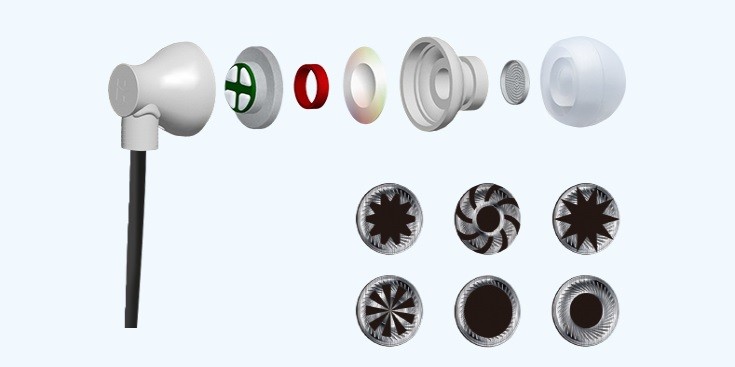
Drivability:
The HiFiMAN RE800 Silver has a rated impedance of 60ohm, which looks a bit high on paper, but I was able to drive it to quite loud volume levels with my Samsung Galaxy S9 mobile phone. But I can also confirm that the RE800 benefits from an external amplifier or DAC/AMP, which has improve the sound in a positive way, especially the overall refinement.
Equipment’s used for this review:
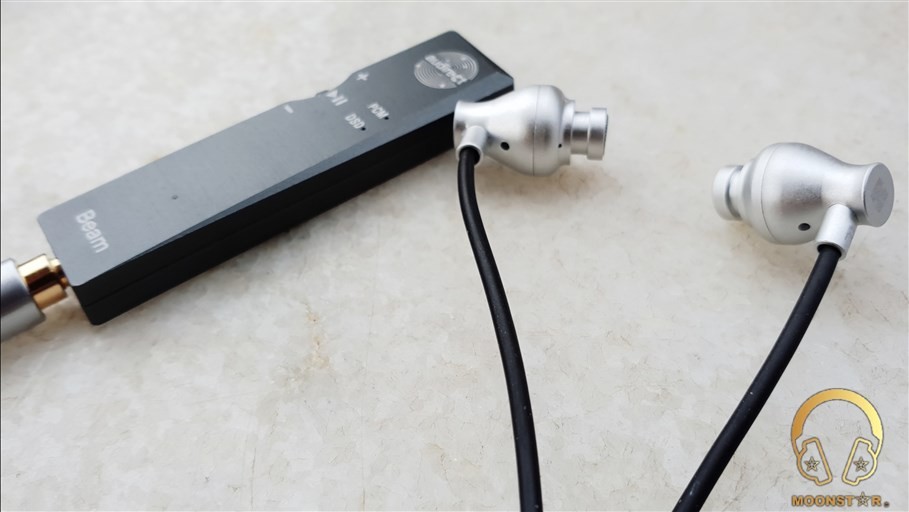
Albums & tracks used for this review:
The Sound:
This review is written after a burn-in process of approx. 96 -100 hours and I have used the stock bi-flange silicone ear tips.
Sound Signature:
The HiFiMAN RE800 Silver is an In-Ear Monitor with detailed and fast bass, pretty neutral and clean midrange and a strong upper midrange & treble emphasis.
The Subbas – Midbass – Bass:
The HiFiMAN RE800 Silver shows a good subbass depth with a soft tonality. The subbass of the RE800 Silver is not very pronounced and strong due to this soft character, which is avoiding showing the subbass to much in the foreground.
The bass of the RE800 Silver is in general slightly emphasized and shows a linear bass response. The bass is due to the close to reference tuning not too less or too much and is quite fast and detailed.
The midbass of the HiFiMAN RE800 Silver can be described as pretty close to reference with good emphasis and force that sounds more emphasized and pronounced than the subbass region.
The bass of the HiFiMAN RE800 Silver shows a very nice layering and the bass emphasis is quite good with instruments such as drums/snare drums and bass guitars, while it shows average performance with genres such as EDM and Trance music. The performance regarding to speed, control and detail, makes the RE800 Silver to a good IEM in this frequency region.
The Lower Midrange and Male Vocals:
The lower midrange of the RE800 Silver is in a good harmony and transition with the bass region and shows a fairly neutral presentation with good depth, which is not to upfront or recessed. The clean tuning makes the RE800 Silver ton a quite detailed In-Ear Monitor in this price class. But I feel that the sound is a bit dry and a little bit body is missing for my preference, while I have listen to vocals such as Eric Clapton or Dave Gahan.
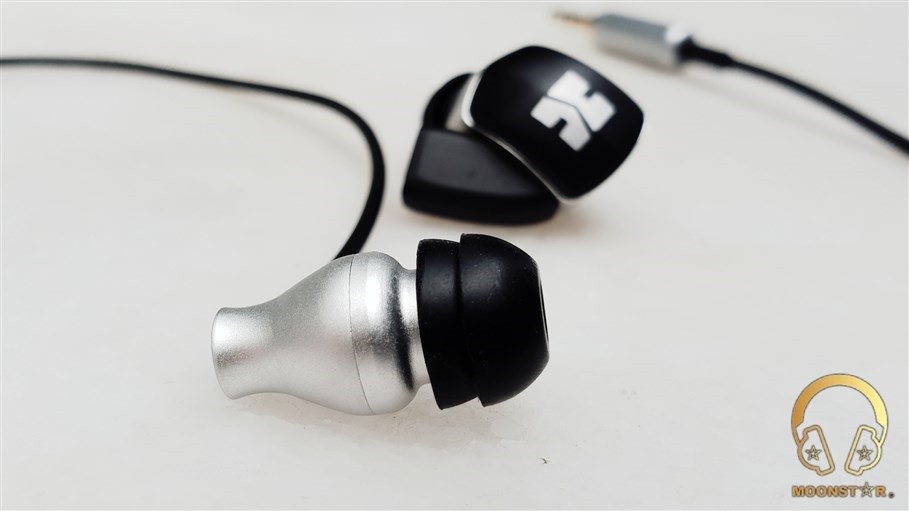
The Midrange:
The midrange presentation of the HiFiMAN RE800 Silver is not very aggressive, but can also not be described as soft. The midrange is bright, transparent and slightly sharp, which makes the overall presentation in this area very detailed. The sound tuning of the RE800 Silver will satisfy many users who are looking for an airy and spacious midrange presentation with high detail level.
Instruments:
The HiFiMAN RE800 Silver has in general a neutral and close to reference instrument presentation. Instruments are sounding quite detailed and are showing high transparency along with good separation between instruments and vocals. The placement and definition of instruments is also pretty good with the HiFiMAN RE800 Silver.
Here are some detailed impressions about the instrument performance of the HiFiMAN RE800 Silver;
a) Contrabass:
The contrabass shows enough depth but is missing a touch of fullness in tonality, when dragging the strings. The contrabass sounds otherwise detailed and successful except of a slightly missing of warmth and thickness of the overall tonality.
b) Drums, Bass Guitars, Electro Guitars:
The drums have a pretty realistic tonality, while there is a slight hardness in the presentation in faster passages.
Bass guitars are showing good depth and are successful in terms of extensions and there is no noticeable mixing and loose of control.
Electro guitars have a bright and realistic tonality. Only in moments where the guitar shows higher distortion is a noticeable thinness.
c) Violins, Flutes, Pianos:
The violins are showing a nice brightness and extension without any noticeable loss of detail. Violins are sounding very realistic and successful due to the well tuned and pronounced upper midrange.
The side flutes are without a veil, very vibrant, bright and enthusiastic. There is not much missing in detail and micro detail, especially the side flutes performances in Wagner and Rodrigo Concertos are a pleasure.
The brightness of the pianos is perfect and there is no unnecessary harshness that comes to my ear. The pianos are fast, have good extension and the detail level is perfect for this price.
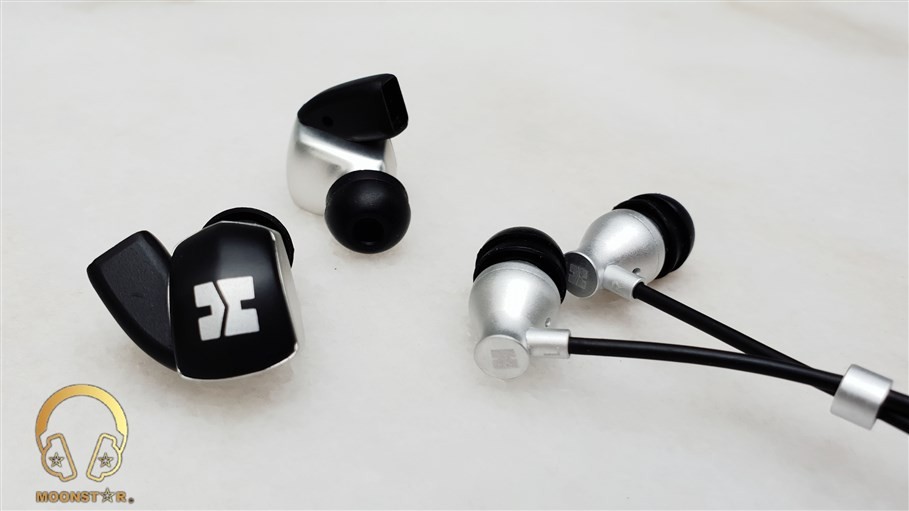
Upper Midrange and Female Vocals:
The HiFiMAN RE800 Silver shows a pronounced, slightly bright and forward upper midrange presentation, along with a detailed and airy presentation. The upper midrange transitions can sound a bit sharp or fairly soft depending of the recording. This region is not very aggressive or ear piercing and shows an extension and tuning which performs above its price tag.
When it comes to the female vocals, the HiFiMAN RE800 Silver shows a transparent, airy and spacious presentation. Female vocals have a detailed and perfect extension, due to the strong upper midrange presentation. Jazz vocals to pop vocals, sopranos to trance vocals are all sounding very transparent and detailed, which makes the RE800 Silver quite pleasant to listen.
Lower Treble and Upper Treble:
The HiFiMAN RE800 silver has a strong lower treble emphasis with a peak around 7 kHz. Due to this 7 kHz peak some instruments such as cymbals, crash cymbals in fast passages can be sound a bit harsh in some situations depending of the quality of the recorded track.
The HiFiMAN RE800 Silver shows an above average performance in this price category in terms of quantity, force and sharpness and will be satisfy most treble-heads.
The emphasis from the lower to the upper treble range is decreases in a controlled manner. The upper treble range have a breezy presentation, but are slightly more positioned in the background compared to the upper treble, but is doesn’t showing any lose of performance in terms of extension.
The detail level in the treble range of the HiFiMAN RE800 Silver is quite successful. The treble quantity will satisfy treble-lovers who prefer a bright top end, while it can be a little bit too high for those who are a bit treble sensitive.
The RE800 Silver can compete with TOTL level IEM’s in terms of overall detail and resolution performance, if you listen to good recorded albums/tracks with it. This ability was a nice surprise for me.
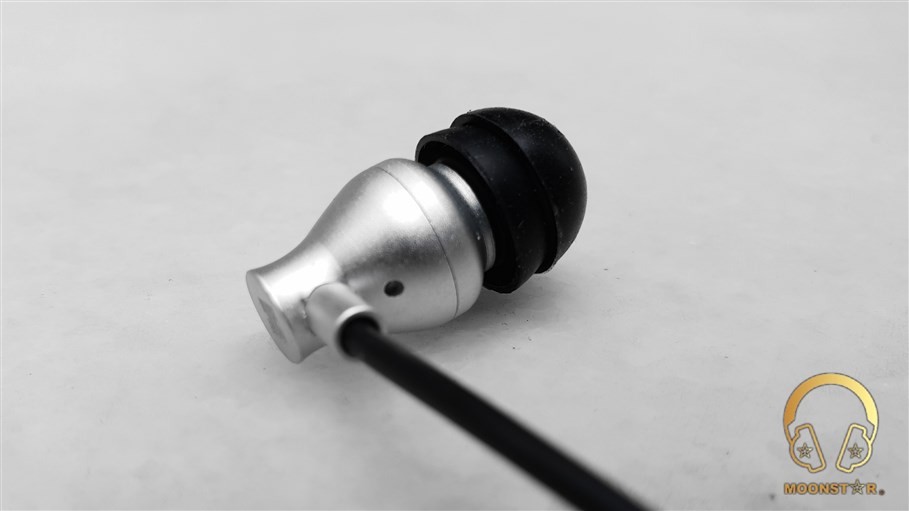
Soundstage:
The HiFiMAN RE800 Silver shows a good separation and positioning of instruments, because of the wide and deep enough soundstage tuning. The soundstage width and depth is parallel to each other and this presentation is increasing the detail of the RE800 Silver.
Comparison:
HiFiMAN RE800 Silver versus iBasso IT04:
Both IEM’s showing a close to neutral tonality, while the midrange of the HiFiMAN RE800 Silver is slightly more forward and shows a brighter presentation compared to those of the iBasso IT04.
The HiFiMAN RE800 Silver and iBasso IT04 have a good subbass depth, while the IT04 shows more emphasis and quantity than those of the RE800 Silver. The sub-bass character of the RE800 Silver can be described as softer compared to the IT04 has.
Both IEM’s sharing a fast and tight bass presentation, while both the bass and midbass of the HiFiMAN RE800 Silver show more emphasis and quantity than those of the iBasso IT04.

The midrange of the HiFiMAN RE800 Silver and iBasso IT04 is quite neutral and transparent and are showing a clean and a bit dry male vocal presentation. The iBasso IT04 sounds slightly better with female vocals, due to the higher upper midrange emphasis
It’s a real joy to listen instruments with both of this In-Ear Monitors due to the very transparent and detailed presentation. But I must say that I prefer the RE800 Silver to listen with instruments such as violins or side flutes, while I have enjoy the IT04 more with guitars and pianos.
Both In-Ear Monitors have a pronounced treble presentation with good extension. The HiFiMAN RE800 Silver is superior to the iBasso IT04 in terms of lower treble emphasis, while the IT04 has better emphasis in the upper treble region. I found the HiFiMAN RE800 Silver to be more successful in terms of overall treble quantity and intensity.
The soundstage of both IEM’s is wide and the separation & placement of instruments is also on a pretty good level. The soundstage of the iBasso IT04 is slightly wider than those of the HiFiMAN RE800 Silver, while the RE800 Silver performs better in terms o depth.
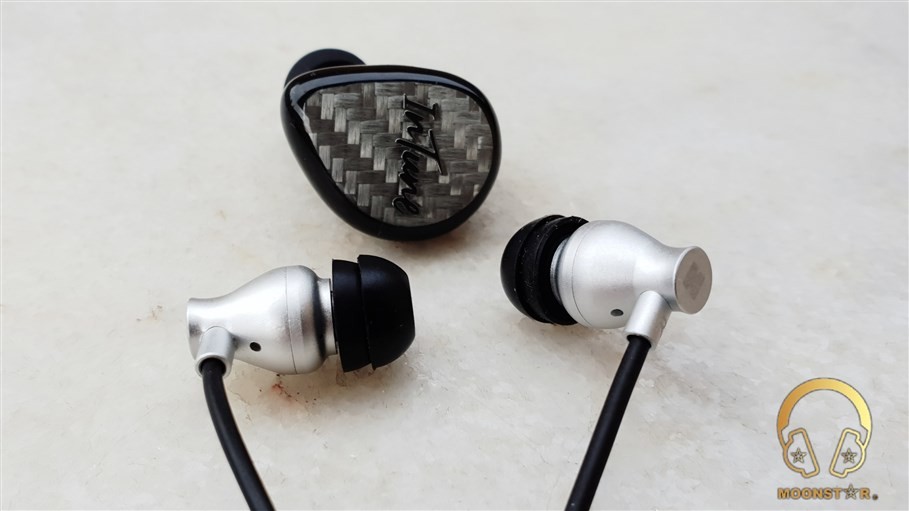
Conclusion:
The HiFiMAN RE800 is a very detailed and natural sounding In-Ear Monitor with a transparent and clean presentation, which can even, competed with some higher priced TOTL level competitors.
Pros and Cons:
The Convincing Brightness of the Silver IEM
About Hifiman:
Hifiman was founded by Dr. Fang in New York - USA and is one of the most well known personal audio companies in the audiophile word.
Hifiman has a wide variety of Hi-Fi, Reference and Premium class products like Portable Audio Players, Planar Magnetic Headphones, Desktop Amplifiers and Earphones/In-Ear Monitors such as the Hifiman RE800 Silver, which belongs to the Reference Series of Earphones and that I will now review for you.

Disclaimer:
I would like to thank HiFiMAN for providing me the RE800 Silver for review purposes. I am not affiliated with HiFiMAN and/or any third person beyond this review and all these words reflect my true, unaltered opinions about the product.
Price:
The regular price of the HiFiMAN RE800 Silver is 599,00 USD but HiFiMAN offers a special discount price which is 299,00 USD. You can purchase the RE800 Silver under de following link;
http://store.hifiman.com/index.php/re800-silver.html
Package and Accessories:
The Hifiman RE800 Silver In-Ear Monitor is coming in a medium sized rectangular box, which has a top cover that contains an image about the actual product.
This box is including the following contents;
- 1 pcs x Hifiman RE800 Silver In-Ear Monitor
- 5 pairs x Bi-Flange Silicone Ear Tips
- 3 pairs x Triple Flange Ear Tips (in black color)
- 3 pairs x Triple Flange Ear Tips (transparent)
- 2 pairs x Dual Flange Ear Tips (they are 3 different shapes)
- 3 pairs x Silicone Ear Tips
- 1 pcs x Zipper Case
- 1 pcs x Print Material
The box includes a variety of silicone ear tips (16 pairs in total), which include a large range of triple flanges, dual flanges and HiFiMAN’s special type bi-flange ear tips.
There is also a zipper case and a catalog about the actual product.
Technical Specifications:
- Driver : 9.2mm Topology Diaphragm Dynamic Driver
- Frequency Response : 5Hz-20 kHz
- Impedance : 60ohm
- Sensitivity : 105dB
- Cable Material : Silver Coated, Crystal Copper Wire
- Weight : 14.5g
Design and Build Quality:
The HiFiMAN RE800 Silver In-Ear Monitor is featuring an aluminum alloy housing instead a brass shell with 24K gold plating like the RE800 in Gold. This IEM is pretty small in its size and has a minimalist design that reminds me to those of the RE400, which was also very comfortable to wear.

The bottom side of the monitor shell is a vent and a metal strain relieve that protects the cable that is fixed to the monitor housing.

On the front of the monitor housing is the sound nozzle which sports a smaller vent and a fine woven metal grill that prevents the insertion of dust and earwax.

On the backside of the RE800 Silver’s housing is the HiFiMAN brand logo that is printed on the surface in grey color.

Cable:
The HiFiMAN RE800 is coming with a fixed cable which is protected by a metal strain relieve on the monitor.

The cable is made of a 2 core silver plated crystalline copper wire, which is protected by a fairly thick TPU coating.

The RE800 silver cable sports a 3.5mm 3 pole unbalanced (TRS) earphone jack which has a gold plated. The earphone jack has a straight profile and is made of the same metal material (aluminum) and shares the same silver color that the monitor has.

This cable has a metal Y splitter and a chin slider, which sport the HiFiMAN branding and model description.


Fit and Isolation:
The HiFiMAN RE800 is a very ergonomic In-Ear Monitor due to the small and pretty lightweight (14.5g) aluminum shell and reminds me to the comfort level of another HiFiMAN product the RE400, which was also very successful in terms of fit and comfort.
The RE800 is ideal for long listening periods and can even be used while sleeping.
When it comes to the isolation, the noise blocking performance of the HiFiMAN RE800 varies from ear tip to ear tip and can be classified in general as above average, which makes it for the use in relative noise environments like metro, bus or train successful.
Some Features:
The Topology Driver/Diaphragm:
The “Topology Diaphragm” or “Topology Driver” refers to the diaphragm with a special Nano particle coating applied to its surface. The distribution of the coating has distinct geometric patterns. By varying the surface pattern, compound used, the thickness or geometric pattern sound wave formation can be manipulated to achieve the desired audio effect and control.
The idea behind the new Topology Diaphragm was inspired by Dr Fang Bian's Ph.D. thesis that "different Nano materials have differing structures and each of those materials have its own properties".
Therefore, by carefully controlling the diaphragm surface structure you can yield different results in acoustic performance to a degree previously unobtainable.

Drivability:
The HiFiMAN RE800 Silver has a rated impedance of 60ohm, which looks a bit high on paper, but I was able to drive it to quite loud volume levels with my Samsung Galaxy S9 mobile phone. But I can also confirm that the RE800 benefits from an external amplifier or DAC/AMP, which has improve the sound in a positive way, especially the overall refinement.
Equipment’s used for this review:
- IEM’s : HiFiMAN RE800, iBasso IT04
- DAP/DAC/AMP : Cayin N5II, Fiio M7, Audirect Beam, xDuuo XD10 Poke

Albums & tracks used for this review:
- First Aid Kit - My Silver Lining (Spotify)
- London Grammar – Interlud (Live) (Flac 24bit/44kHz)
- Laura Pergolizzi – Lost On You “Live at Harvard and Stone” (Tidal Hi-Fi)
- Minor Empire – BulbulumAltinKafeste (Spotify)
- Leonard Cohen – You Wnt it Darker (Spotify)
- Dave Gahan – Kingdom (Tidal Hi-Fi)
- Eric Clapton – Wonderful Tonight True (Flac 24bit/96kHz)
- Casey Abrams – Robot Lover (Tidal Hi-Fi)
- Vivaldi – Le QuarttroStagioni “The Four Season” (Tidal Hi-Fi)
- Otto Liebert& Luna Negra – The River (DSF) – Binaural Recording
- Future Heroes – Another World (Tidal Hi-fi)
- Lorde – Team (Flac 24bit/48kHz)
- Tom Player – Resonace Theory “Album” (Tidal Hi-Fi)
- Massive Attack – Angel (Tidal Hi-Fi)
- Portishead – It Could Be Sweet (Spotify)
- Liquid Tension Experiment 2 – Acid Rain (Spotify)
- Opeth – Damnation (Tidal Hi-Fi)
- Metallica – Sad but True (Flac 24bit/96kHz)
- Megadeth - Sweating Bullets (Tidal Hi-Fi)
- Slayer - Angel of Death (Spotify)
The Sound:
This review is written after a burn-in process of approx. 96 -100 hours and I have used the stock bi-flange silicone ear tips.
Sound Signature:
The HiFiMAN RE800 Silver is an In-Ear Monitor with detailed and fast bass, pretty neutral and clean midrange and a strong upper midrange & treble emphasis.
The Subbas – Midbass – Bass:
The HiFiMAN RE800 Silver shows a good subbass depth with a soft tonality. The subbass of the RE800 Silver is not very pronounced and strong due to this soft character, which is avoiding showing the subbass to much in the foreground.
The bass of the RE800 Silver is in general slightly emphasized and shows a linear bass response. The bass is due to the close to reference tuning not too less or too much and is quite fast and detailed.
The midbass of the HiFiMAN RE800 Silver can be described as pretty close to reference with good emphasis and force that sounds more emphasized and pronounced than the subbass region.
The bass of the HiFiMAN RE800 Silver shows a very nice layering and the bass emphasis is quite good with instruments such as drums/snare drums and bass guitars, while it shows average performance with genres such as EDM and Trance music. The performance regarding to speed, control and detail, makes the RE800 Silver to a good IEM in this frequency region.
The Lower Midrange and Male Vocals:
The lower midrange of the RE800 Silver is in a good harmony and transition with the bass region and shows a fairly neutral presentation with good depth, which is not to upfront or recessed. The clean tuning makes the RE800 Silver ton a quite detailed In-Ear Monitor in this price class. But I feel that the sound is a bit dry and a little bit body is missing for my preference, while I have listen to vocals such as Eric Clapton or Dave Gahan.

The Midrange:
The midrange presentation of the HiFiMAN RE800 Silver is not very aggressive, but can also not be described as soft. The midrange is bright, transparent and slightly sharp, which makes the overall presentation in this area very detailed. The sound tuning of the RE800 Silver will satisfy many users who are looking for an airy and spacious midrange presentation with high detail level.
Instruments:
The HiFiMAN RE800 Silver has in general a neutral and close to reference instrument presentation. Instruments are sounding quite detailed and are showing high transparency along with good separation between instruments and vocals. The placement and definition of instruments is also pretty good with the HiFiMAN RE800 Silver.
Here are some detailed impressions about the instrument performance of the HiFiMAN RE800 Silver;
a) Contrabass:
The contrabass shows enough depth but is missing a touch of fullness in tonality, when dragging the strings. The contrabass sounds otherwise detailed and successful except of a slightly missing of warmth and thickness of the overall tonality.
b) Drums, Bass Guitars, Electro Guitars:
The drums have a pretty realistic tonality, while there is a slight hardness in the presentation in faster passages.
Bass guitars are showing good depth and are successful in terms of extensions and there is no noticeable mixing and loose of control.
Electro guitars have a bright and realistic tonality. Only in moments where the guitar shows higher distortion is a noticeable thinness.
c) Violins, Flutes, Pianos:
The violins are showing a nice brightness and extension without any noticeable loss of detail. Violins are sounding very realistic and successful due to the well tuned and pronounced upper midrange.
The side flutes are without a veil, very vibrant, bright and enthusiastic. There is not much missing in detail and micro detail, especially the side flutes performances in Wagner and Rodrigo Concertos are a pleasure.
The brightness of the pianos is perfect and there is no unnecessary harshness that comes to my ear. The pianos are fast, have good extension and the detail level is perfect for this price.

Upper Midrange and Female Vocals:
The HiFiMAN RE800 Silver shows a pronounced, slightly bright and forward upper midrange presentation, along with a detailed and airy presentation. The upper midrange transitions can sound a bit sharp or fairly soft depending of the recording. This region is not very aggressive or ear piercing and shows an extension and tuning which performs above its price tag.
When it comes to the female vocals, the HiFiMAN RE800 Silver shows a transparent, airy and spacious presentation. Female vocals have a detailed and perfect extension, due to the strong upper midrange presentation. Jazz vocals to pop vocals, sopranos to trance vocals are all sounding very transparent and detailed, which makes the RE800 Silver quite pleasant to listen.
Lower Treble and Upper Treble:
The HiFiMAN RE800 silver has a strong lower treble emphasis with a peak around 7 kHz. Due to this 7 kHz peak some instruments such as cymbals, crash cymbals in fast passages can be sound a bit harsh in some situations depending of the quality of the recorded track.
The HiFiMAN RE800 Silver shows an above average performance in this price category in terms of quantity, force and sharpness and will be satisfy most treble-heads.
The emphasis from the lower to the upper treble range is decreases in a controlled manner. The upper treble range have a breezy presentation, but are slightly more positioned in the background compared to the upper treble, but is doesn’t showing any lose of performance in terms of extension.
The detail level in the treble range of the HiFiMAN RE800 Silver is quite successful. The treble quantity will satisfy treble-lovers who prefer a bright top end, while it can be a little bit too high for those who are a bit treble sensitive.
The RE800 Silver can compete with TOTL level IEM’s in terms of overall detail and resolution performance, if you listen to good recorded albums/tracks with it. This ability was a nice surprise for me.

Soundstage:
The HiFiMAN RE800 Silver shows a good separation and positioning of instruments, because of the wide and deep enough soundstage tuning. The soundstage width and depth is parallel to each other and this presentation is increasing the detail of the RE800 Silver.
Comparison:
HiFiMAN RE800 Silver versus iBasso IT04:
Both IEM’s showing a close to neutral tonality, while the midrange of the HiFiMAN RE800 Silver is slightly more forward and shows a brighter presentation compared to those of the iBasso IT04.
The HiFiMAN RE800 Silver and iBasso IT04 have a good subbass depth, while the IT04 shows more emphasis and quantity than those of the RE800 Silver. The sub-bass character of the RE800 Silver can be described as softer compared to the IT04 has.
Both IEM’s sharing a fast and tight bass presentation, while both the bass and midbass of the HiFiMAN RE800 Silver show more emphasis and quantity than those of the iBasso IT04.

The midrange of the HiFiMAN RE800 Silver and iBasso IT04 is quite neutral and transparent and are showing a clean and a bit dry male vocal presentation. The iBasso IT04 sounds slightly better with female vocals, due to the higher upper midrange emphasis
It’s a real joy to listen instruments with both of this In-Ear Monitors due to the very transparent and detailed presentation. But I must say that I prefer the RE800 Silver to listen with instruments such as violins or side flutes, while I have enjoy the IT04 more with guitars and pianos.
Both In-Ear Monitors have a pronounced treble presentation with good extension. The HiFiMAN RE800 Silver is superior to the iBasso IT04 in terms of lower treble emphasis, while the IT04 has better emphasis in the upper treble region. I found the HiFiMAN RE800 Silver to be more successful in terms of overall treble quantity and intensity.
The soundstage of both IEM’s is wide and the separation & placement of instruments is also on a pretty good level. The soundstage of the iBasso IT04 is slightly wider than those of the HiFiMAN RE800 Silver, while the RE800 Silver performs better in terms o depth.

Conclusion:
The HiFiMAN RE800 is a very detailed and natural sounding In-Ear Monitor with a transparent and clean presentation, which can even, competed with some higher priced TOTL level competitors.
Pros and Cons:
- + Detail and Resolution
- + Clean and Transparent Presentation
- + Small and Lightweight
- + A Must Have for Treble Lovers
- - The Peak around 7 kHz
vikinguy
Yeah, I just grabbed a set. Why not?
passie42
Now 50,- on Aliexpress. I can confirm that what you get on Aliexpress is genuine because I have a (expensive) Amazon and (cheap) Aliexpress one. I bought from Super Hifier Audio Store so I can only confirm they sell genuine one.
S
sebiambrus
they are good value for 100 usd now . but wonder if they are keep up with the 600 usd other iems like IE600 or the older ie800 , or moondrop blessing2 etc?
Moonstar
100+ Head-Fier
Pros: Excellent Overall Sound Performance for such a small All-in One Solution,
Solid Build Quality,
Esthetic Design,
3.5mm SE & 4.4mm Balanced Outputs,
Only Device in its Segment that is equipped with an Optical Output,
Clean & Hiss-free output,
Value for Your Money
Solid Build Quality,
Esthetic Design,
3.5mm SE & 4.4mm Balanced Outputs,
Only Device in its Segment that is equipped with an Optical Output,
Clean & Hiss-free output,
Value for Your Money
Cons: The glass surface looks beautiful but is also a fingerprint magnet,
No Protective Case,
No Back-Clip
No Protective Case,
No Back-Clip
IKKO Heimdallr ITB03 BT & USB DAC/Amplifier Review
Introduction:
IKKO Audio (IKKO Technology Co. Limited) is a relative new Chinese brand that designs & develops Hi-Fi components like In-Ear Monitors, Portable DAC/AMP, Docking Stations and many more.
The Heimdallr ITB03 that I will now review for you is the companies first Portable Bluetooth & USB DAC/Amplifier, which is an Ultra-Portable and very capable All-in One solution that is compatible with a wide variety of platforms including Android, iOS, MAC OS, Windows 10/11, Nintendo Switch, Sony PlayStation 5 and Microsoft XBOX devices. The Heimdallr ITB03 is equipped with 2x Asahi Kasei AK4377 DAC Chips and features 3.5mm Single Ended/Optical and 4.4mm Balanced (TRRRS) outputs. The Bluetooth connection is powered by Qualcomm’s latest and most advanced QCC5125 BT Chip, while the XMOS’s 8-Core XU208 USB Processor is dedicated for the USB DAC function.
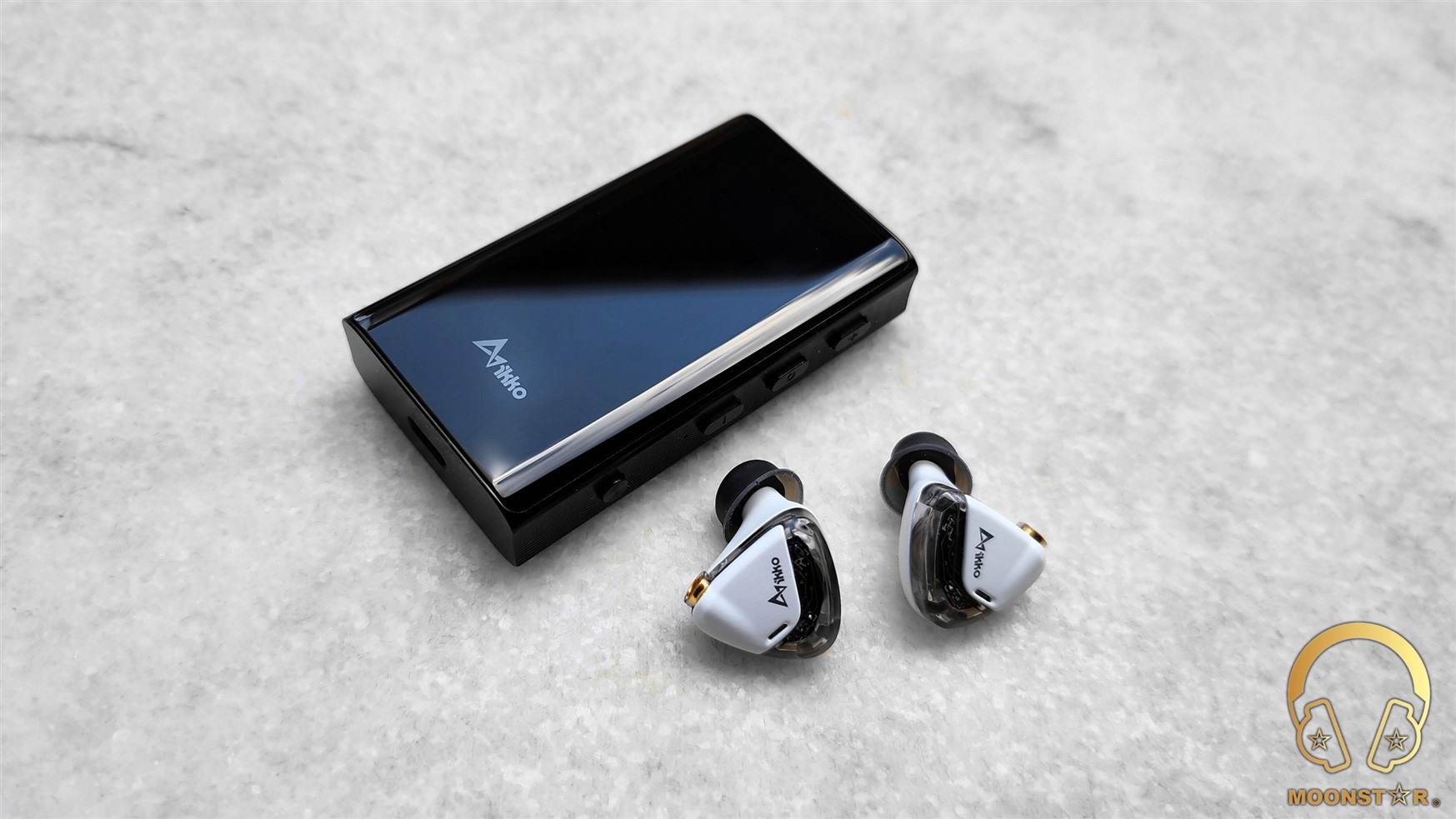
Disclaimer:
I would like to thank IKKO Audio for providing me the Heimdallr ITB03 sample for review purposes. I am not affiliated with IKKO Audio beyond this review and these words reflect my true and unaltered opinions about the product.
Price & Availability:
The actual price of the IKKO Heimdallr ITB03 is 149.00 US$. More information’s can be found under the link below;
Package & Accessories:
The IKKO Heimdallr ITB03 came inside a rectangular box in black color that sports the illustration and some product related brandings on the top.

Inside the box of the IKKO Heimdaller ITB03 are the following items/accessories;
- 1 x IKKO Heimdallr ITB03 Portable BT & USB DAC/Amplifier
- 1 x USB Type-C to USB A adapter
- 1 x USB Type-C to USB Type-C low profile cable
- 1 x USB Type-C to Lightning low profile cable
- 1 x Some Print Materials


Design & Build Quality:
The IKKO Heimdallr ITB03 is a Bluetooth & USB DAC/Amplifier that supports a wide variety of Wireless (LDAC, aptX, aptX-HD) and Wired (PCM, DSD) Lossless Audio Codecs packed in to an Ultra-Portable device, which shows a combination of glass and metal elements, the final result is a clean, robust and elegant looking device.

The Heimdallr ITB03 is an ultra-portable device with a solid look and feel when hold in your hands that shows a very good build quality. It has dimensions of about 70mm (L) *40mm (W) * 10mm (T) and weights approx. 72grams.

The deice features a metal frame and a glass surface that is located on both the top and rear surface with rounded edges, which offers a very good grip when hold in your hands.

On the top of the device is the IKKO brand logo and a small OLED screen with a resolution of 64×128 pixels that gives you lots of information’s like Connection Method, Battery Status, Decoding Rate, Volume, Lyrics, Audio Mode and Small Graphical EQ Animation on the main menu. I really like that the display shows you the name of the song that is played by the device, which is available in BT DAC/Amplifier mode. Even the Title of YouTube Songs and Videos is displayed, which is a nice feature.
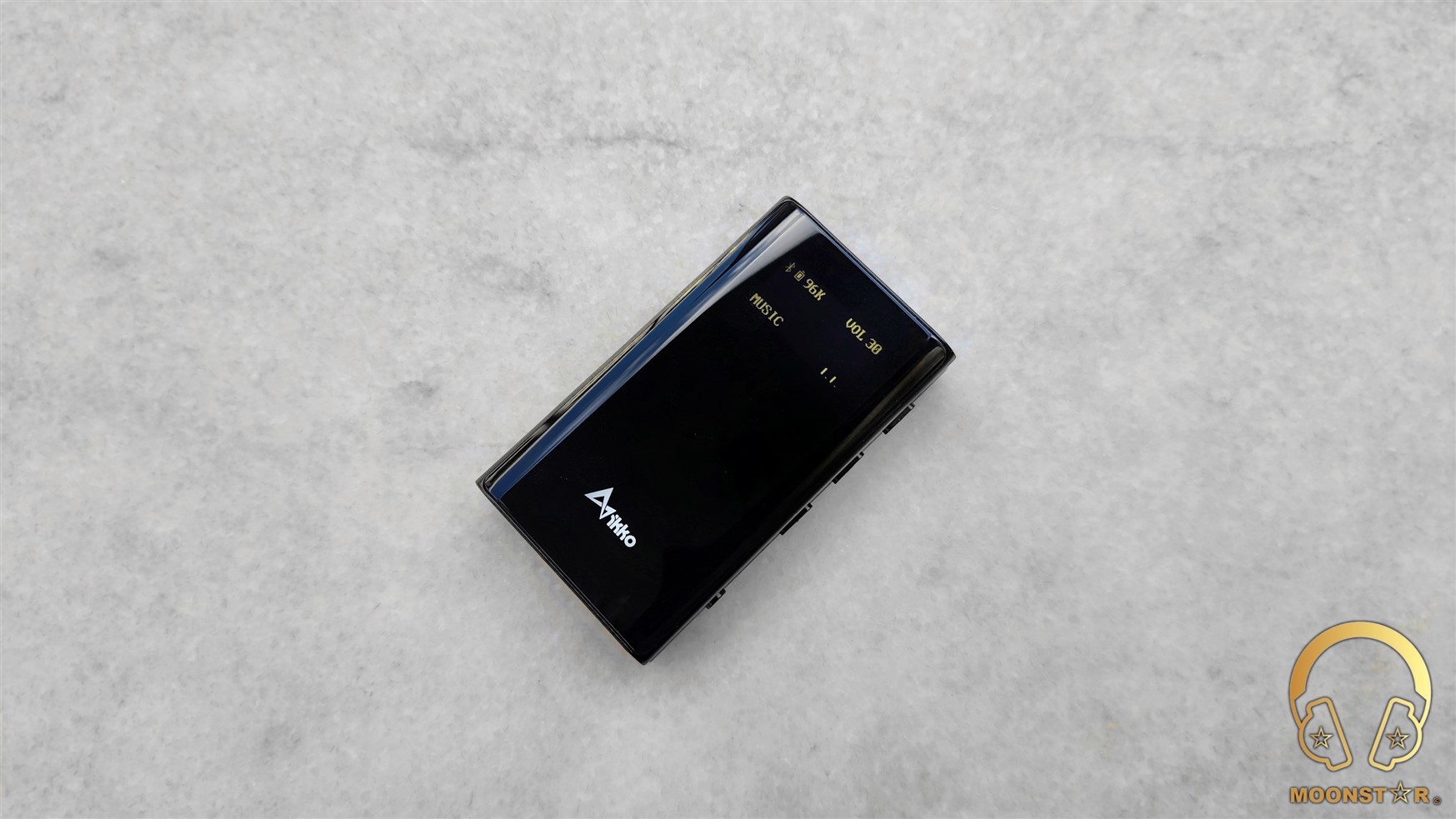
The right surface of the Heimdallr ITB03 is equipped with 4 multifunctional physical buttons and a small hole where you can reset the device.

The Volume Up and Volume Down buttons can be used to navigate in the selected menus.

The Play/Pause button is a Multifunctional Key in order to switch between multiple sub-menus such like Gain (Low / High), Dimmer (1 – 6), Chare Mode, Filters (1 – 4), Car Mode and Sound Modes (Music, Movie, Game, HiFi).

The Power button is another multi-function key that will give you the access in to the sub-menus, which also acts as display on/off and button.
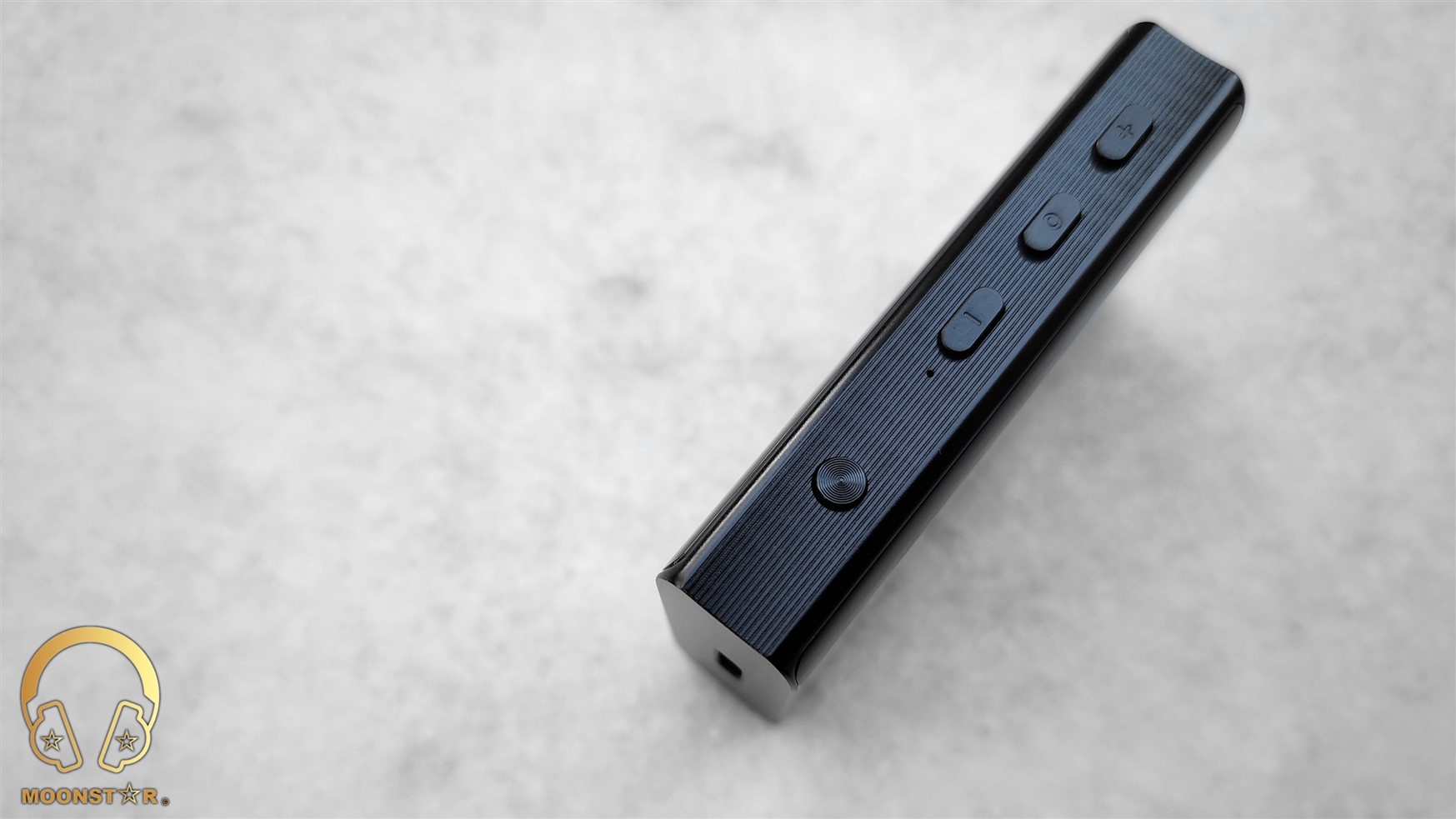
The left surface of the IKKO Heimdallr ITB03 sports a second opening dedicated for the build-in microphone for voice calls and voice commands when connected to a phone or tablet.

On the top of the IKKO Heimdallr ITB03 are the 3.5mm Single Ended, 4.4mm Balanced (TRRRS) analog outputs. The 3.5mm output serves also as Optical output interface, which is a great feature.
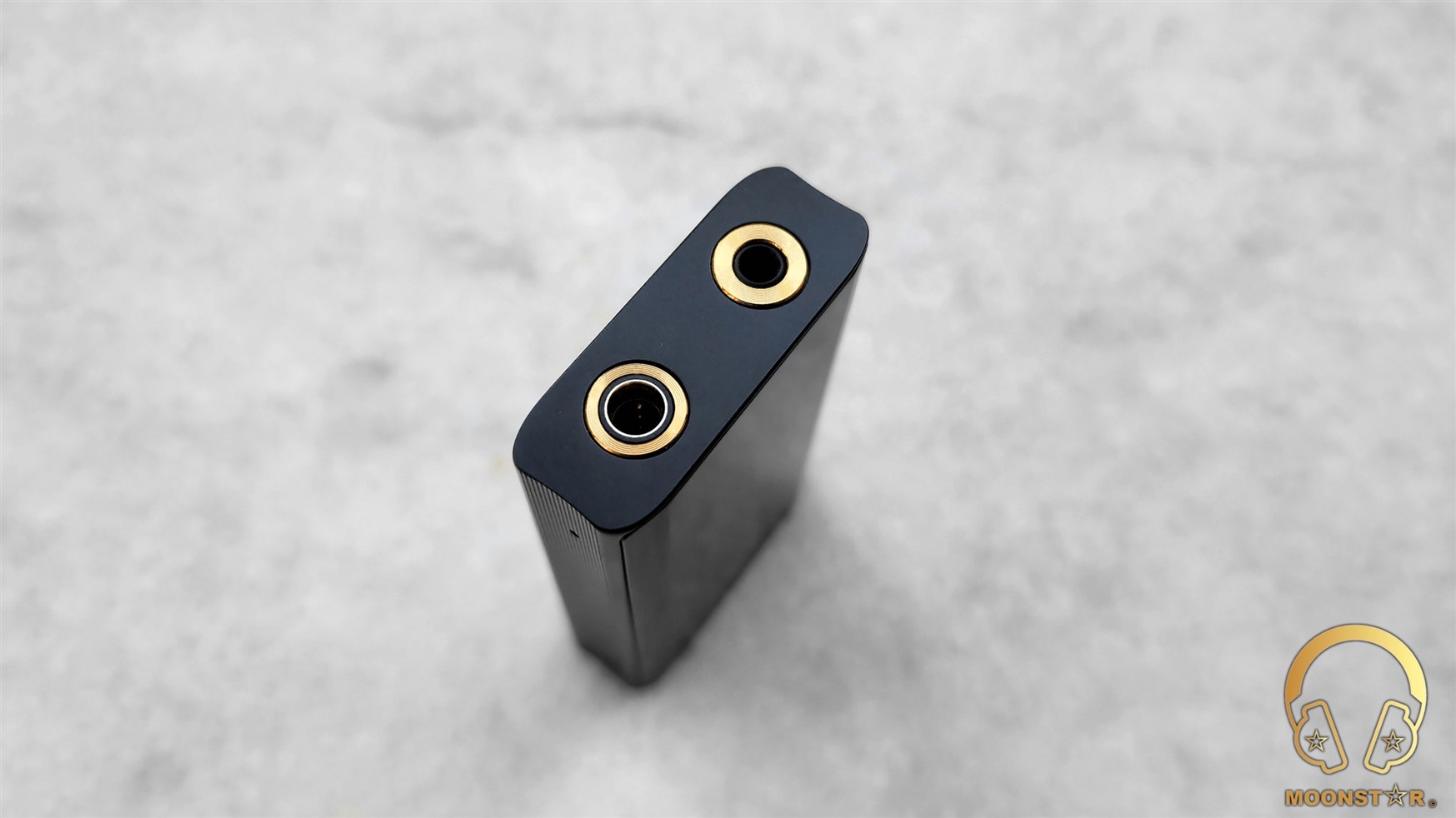
At the bottom of the device is the USB Type-C port that works for charging and digital sound input purposes.
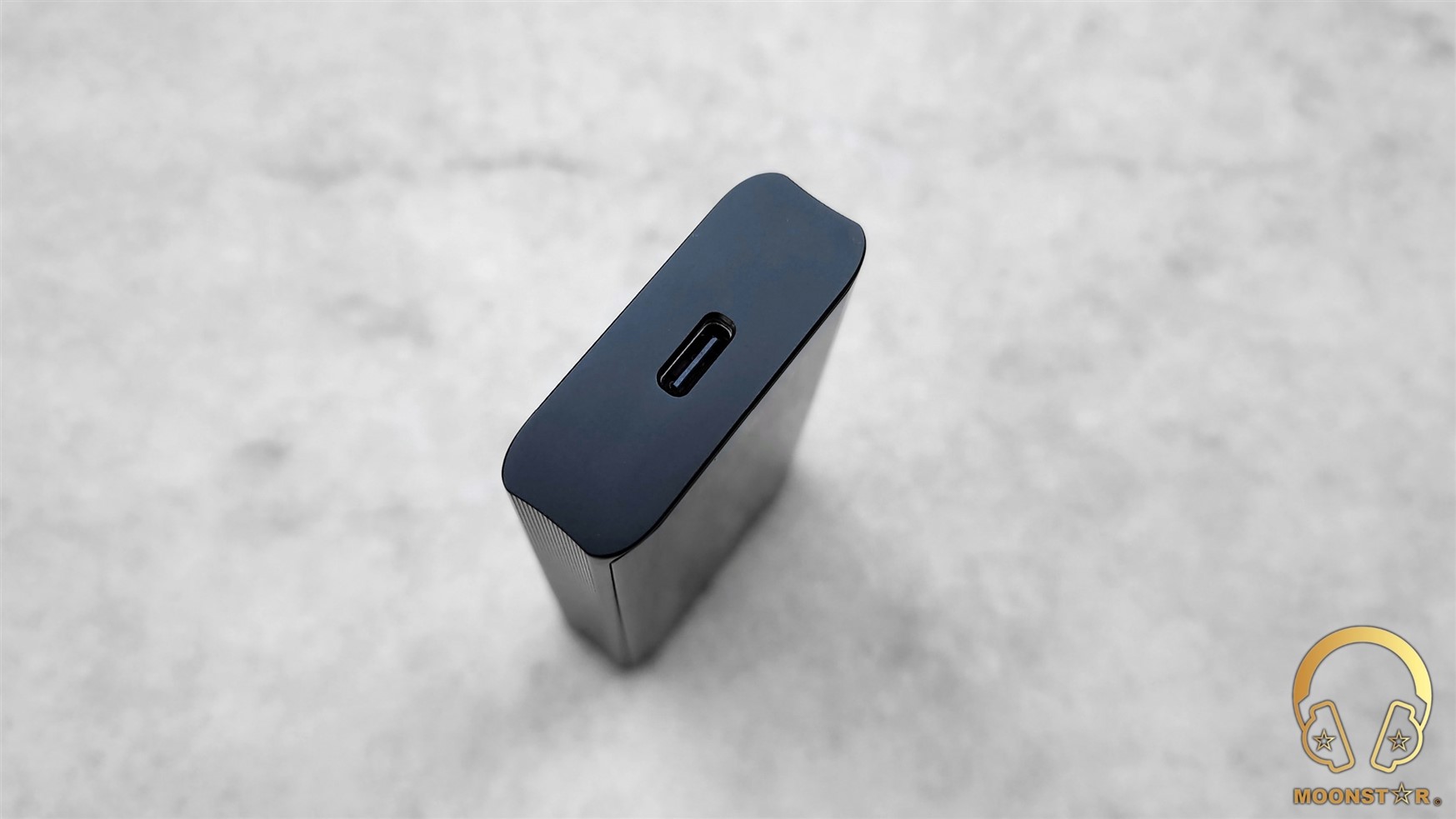
The rear surface of the Heimdallr ITB03 sports the Hi-Res Audio logo some technical detail & industrial certifications.

Here is also the NFC logo and antenna for quick paring with your Bluetooth source, which is a nice addition.

Technical Specifications:
- Model : Heimdallr ITB03
- DAC Chip : 2x Asahi Kasei AK4377
- USB Processor : XMOS 8-core XU208
- Sampling Rates : PCM 32bit/384kHz USB / 32bit/96kHz Optical / Native DSD128
- Headphone Amplifier : RT6863
- Output Ports : 3.5mm Single Ended (Analog & Optical) & 4.4mm Balanced (Analog)
- Bluetooth Chip : Qualcomm QCC5125
- Bluetooth Version : 5.0
- Bluetooth Codec’s : LDAC, APTX HD, AptX LL, AAC and SBC
- Operating Distance : approx. 10 Meters
- Output Power : 3.5mm SE 32mW @ 32Ω / 4.4mm BAL 125mW @ 32Ω
- SNR : 118dB both Single Ended & Balanced
- THD : -110dB
- Battery Size : 650mAh
- Battery Life : Up to 8 hours (SE, Single DAC)
- Charging Time : approx.1.5 hours
- Dimensions : approx. 70mm x 40mm x 10mm
- Weight : 72 grams
Hardware & Connectivity:
The IKKO Heimdallr ITB03 is an Ultra-Portable and very capable All-in One Bluetooth & USB DAC/Amplifier solution that is compatible with a wide variety of platforms including Android, iOS, MAC OS, Windows 10/11, Nintendo Switch, Sony PlayStation 5 and Microsoft XBOX devices. The Car mode is another feature that makes Heimdallr ITB03 also compatible for the use in your Car as an AUX source.

A. DAC (Digital to Analog Converter):
The IKKO Heimdallr ITB03 is equipped with 2x Asahi Kasei AK4377 DAC’s (Digital to Analog Converter) that supports PCM up to 32bit/384Khz and Native DSD up to DSD128. It offers a SNR (Signal to Noise Ratio) of about 118dB and THD (Total Harmonic Distortion) of -110dB.
The Asahi Kasei AK4377 DAC Chip offers 4 different Digital Filters that are listed below;
- Fillter1 Steep drop: sound dry and crisp.
- Fillter2 Steep drop after a short delay: mellow sound, suitable for pop music.
- Fillter3 Steep drop: Natural and mellow low end, good for slow music.
- Fillter4 Slow drop after a short delay: high sound reproduction, suitable for classical music.

B. Bluetooth & NFC Connectivity:
The IKKO Heimdallr ITB03 is equipped with Qualcomm’s latest and most advanced QCC5125 Bluetooth chip that supports the Bluetooth V5.0 protocol. The BT SoC of the device supports most of the advanced Hi-RES wireless codec’s including LDAC, LHDC, aptX HD, aptX LL, aptX, AAC and SBC.
The Heimdallr ITB03 offers a rock solid Bluetooth operating distance that works flawlessly up to 9 – 10 meters. The device has also a decent performance while watching to videos and movies on YouTube, Netflix, Disney+, Amazon Prime, which doesn’t have shown any remarkable lip-sync latency issues when paired to my Samsung Galaxy TAB S8 Ultra and Samsung Galaxy S22 Ultra, thanks to the support of the latest aptX-LL and LDAC low latency codec’s.
The pairing of the IKKO Heimdallr ITB03 with sources like Android/iOS phones, tablets, etc. are quite easy. You have also the option to pair it to other compatible devices with just a simple tap by using the NFC wireless short-range communication protocol, entirely avoiding the cumbersome traditional pairing process.

C. Outputs / Amplification / Drivability / Hissing:
The IKKO Heimdllr ITB03 comes with a balanced audio architecture, which means that each channel is driven separately from the other with its own DAC and Amplifier. The device is equipped with both 3.5mm Single Ended and 4.4mm Balanced analog interfaces that do offers a pretty powerful and clean output.
The Heimdallr ITB03 comes with 1x RT6863 independent amplifier. That RT6863 offers an output power of 32mW @ 32ohm over the 3.5mm Single Ended port and up to 125mW @32 Ohm over the 4.4mm Balanced output. The device has two gain options that are Low & High gain, which can be selected over the sub-menu. Both the 3.5mm Single Ended & 4.4mm Balanced outputs do show a pretty clean output with very low amount of hissing.
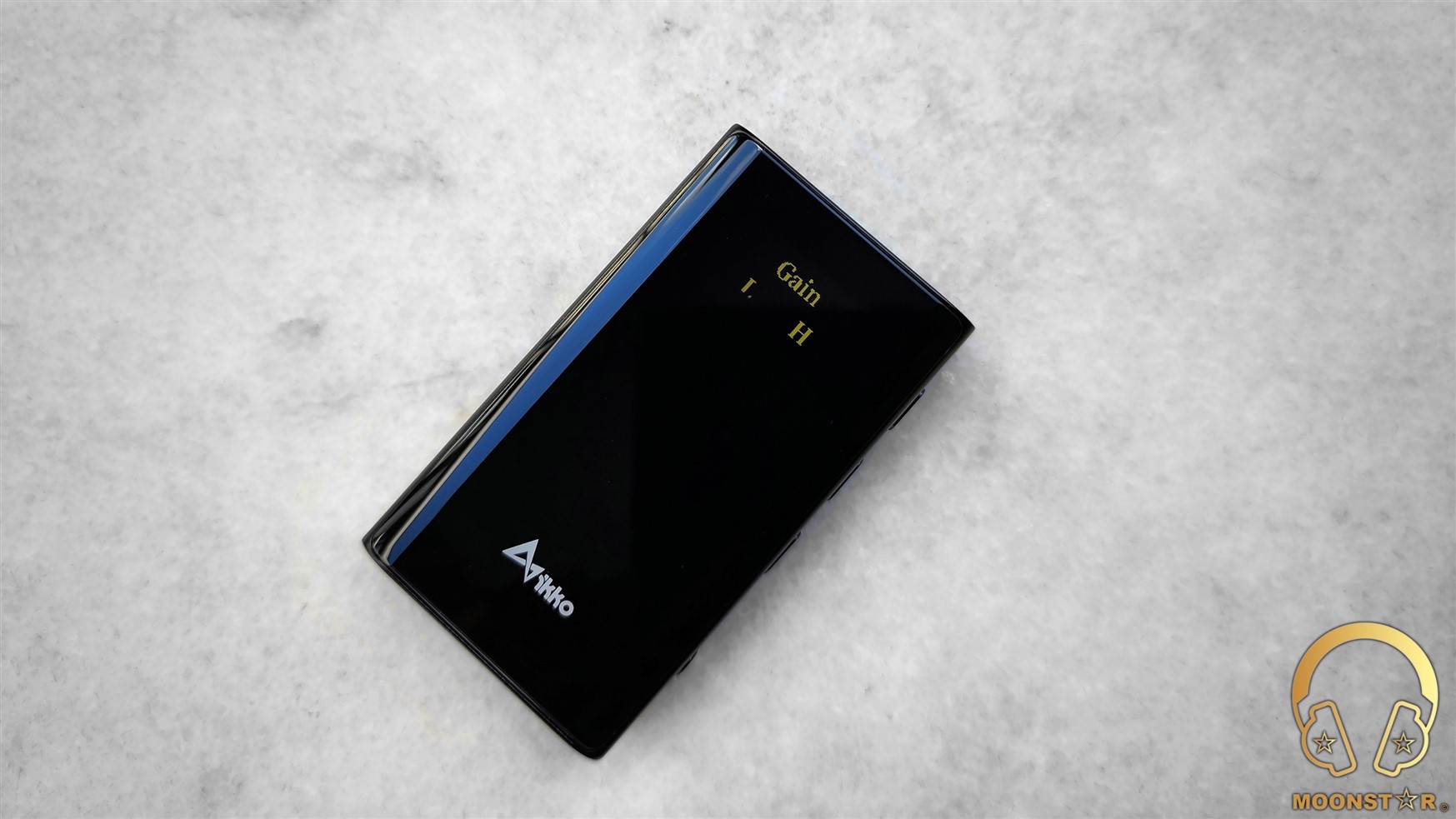
D. XMOS XUF 208 Chip & USB DAC function:
The IKKO Heimdallr ITB03 is a pretty capable device that utilizes an 8-Core XMOS XUF208 chip that gives it the ability to work as USB DAC/Amplifier, which will support sampling rates up to 32 bit/384kHz and Native up to DSD128. The USB DAC functionality can be activated under the HiFi Audio Mode option and supports USB UAC 2.0.
E. Microphone:
The IKKO Heimdallr ITB03 is equipped with a built-in microphone with supports Qualcomm’s cVc 8.0 noise cancellation technology in order to suppresses background noises. The microphone offers an average performance in terms of voice transfer that I have tested paired with my Samsung Galaxy S22 Ultra.
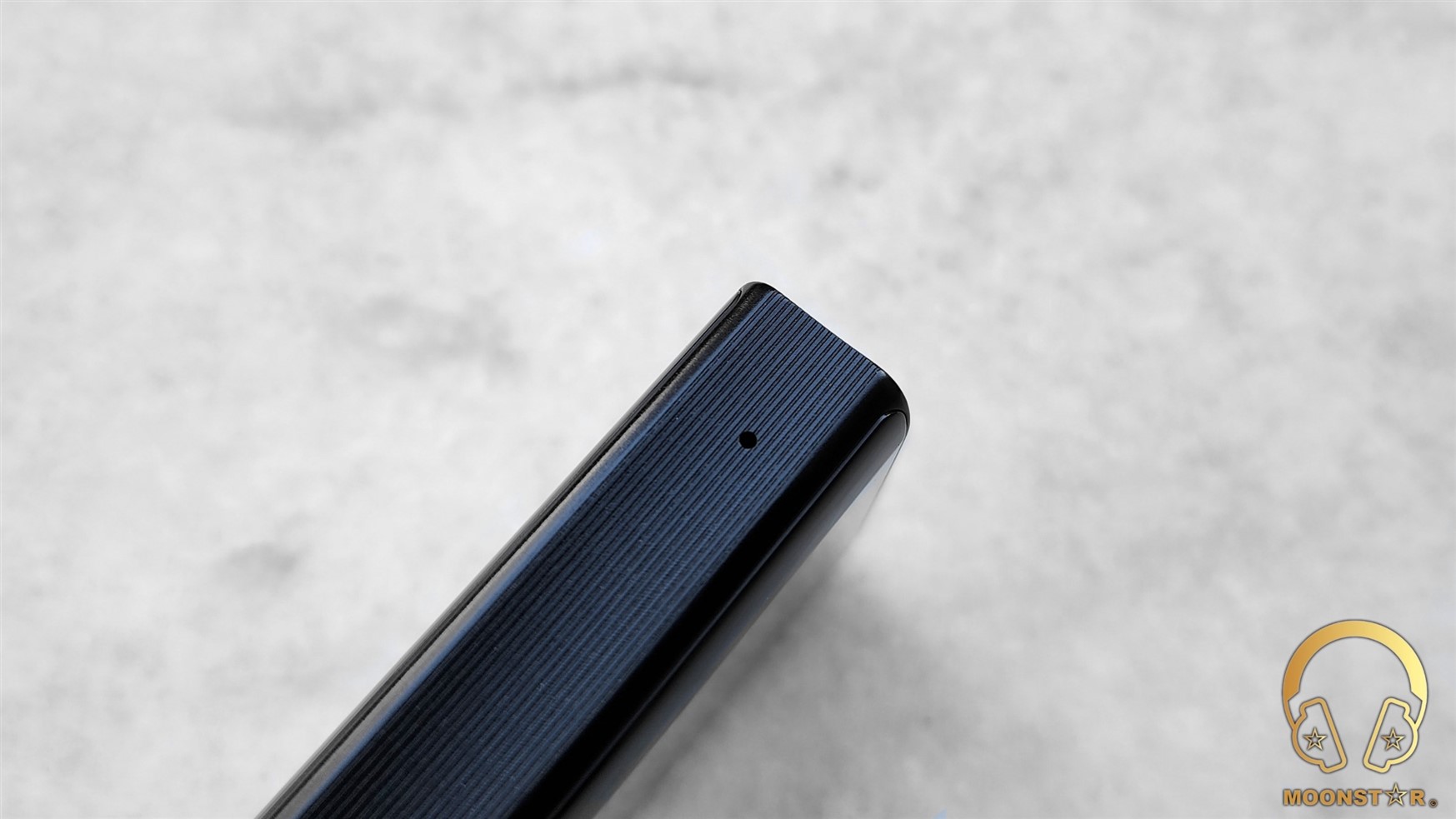
F. Battery Life:
The IKKO Heimdallr ITB03 is equipped with a built-in battery that has a capacity of approx. 650mAh, which takes about 1.5 hours to be fully charged. The 3.5mm Single Ended output offers around 7.5 – 8 Hours, while the more powerful 4.4mm Balanced out shows up to 6 hours of battery life at Low Gain and Volume 20 out of 60. The overall battery performance is pretty good for such a small device.
Equipment’s used for this review:
- DAC/Amplifier’s : IKKO Heimdallr ITB03, Shanling UP4 2022
- IEM’s/Headphones : IKKO Opal 2, FiiO FD7, iBasso IT07, SIVGA Oriole
- Sources : Samsung Galaxy S22 Ultra & TAB S8 Ultra, Asus TUF FX505DU

Albums & tracks used for this review:
- Adele – My Little Love (Spotify)
- Randy Crawford – On Day I Will Fly Away (Flac 16bit/44.1kHz)
- Hayley Westenra – Odyssey Album (Dezzer HiFi)
- Dionne Warwick – Walk On By (Flac 16bit/44.1kHz)
- Sarah McLachlan – Angel (Flac 24bit/48kHz)
- Sertap Erener – Aşk (Flac 16bit/44.1kHz)
- Edith Piaf – Non Je Ne Regrette Rien (Flac 16bit/44.1kHz)
- Diana Krall – So Wonderful (DSF)
- Aretha Franklin – I Say A Little Payer (Flac 24bit/96kHz)
- Sonya Yoncheva – (Giuseppe Verdi) II Trovatore, ActI (Flac 24bit/96kHz)
- Dave Gahan (Depeche Mode) – Free Love (Flac 24bit/96kHz)
- George Michael – Don’t Let the Sun Go Down on Me (Flac 24bit/192kHz)
- David Bowie – Heroes (Flac 24bit/192kHz)
- Elton John – Rocket Man ((Flac 24bit/96kHz)
- Barry White – Just The Way You Are (Flac 24bit/48kHz)
- Isaac Hayes – Walk On By (Flac 16bit/44.1kHz)
- Sting – Englishman in New York – (Flac 24bit/48kHz)
- Eric Clapton – Wonderful Tonight (Flac 24bit/96kHz)
- B. King – Riding With The King (Tidal Hi-Fi)
- Dave Gahan – Kingdom (Tidal Hi-Fi)
- U2 – Sunday Bloody Sunday (Flac 16bit/44.1kHz)
- Bro Safari, UFO! – Drama (Deezer HiFi)
- Armin Van Buuren – Vini Vici (Flac 16bit/44.1kHz)
- Daft Punk (feat. Panda Bear) – Doin’ it Right (Flac 24bit/96kHz)
- Jo Blankenburg – Meraki (Spotify)
- Lorde – Royals (Flac 24bit/48kHz)
- Massive Attack – Angel (Flac 24bit/48kHz)
- Toutant – Rebirth (Deezer HiFi)
- Gogo Penguin – Raven (Flac 24bit/192kHz)
- Gogo Penguin – Murmuration (Flac 24bit/192kHz)
- Photek – The Hidden Camera (Flac 24bit/96kHz)
- Portishead – It Could Be Sweet (Spotify)
- Max Richter – On the Nature of Daylight (Flac 24bit/96kHz)
- Charly Antolini – Duwadjuwandadu (Flac 24bit/192kHz)
- Abel Korzeniowski – Dance For Me Wallis (Deezer HiFi)
- Ferit Odman – Look, Stop & Listen (Flac 24bit/192kHz)
- Chopin – Nocturn No. 20 In C-Sharp Minor (Flac 16bit/44.1kHz)
- Fazıl Say – Nazım Oratoryosu (Live) (Flac 16bit/44.1kHz)
- Vivaldi – Le QuarttroStagioni “The Four Season” (Deezer HiFi)
- Otto Liebert & Luna Negra – The River (Flac 24bit/192kHz)
- Lunatic Soul – The Passage (Flac 16bit/44.1kHz)
- Deftones – My Own Summer (Shove it) (Flac 16bit/44.1kHz)
- Metallica – Sad but True (Flac 24bit/96kHz)
- Metallica – Master of Puppets (Flac 24bit/96kHz)
- Opeth – Windowpane (Flac 16bit/44.1kHz)
- Megadeth – Sweating Bullets (Tidal Hi-Fi)
- Muse – Hysteria (Flac 16bit/44.1kHz)
- Rush – Leave That Thing Alone (Flac 16bit/44.1kHz)
- Slayer – Angel of Death (Spotify)
- Liquid Tension Experiment 2 – Acid Rain (Spotify)
- Yosi Horikawa – Bubbles (Spotify)

The Sound:
The Hidizs DH80 is a DAC/Amplifier with a fairly dynamic sound character which shows a mild amount of coloration. The lower frequency area shows a nice sense of body and fullness, the midrange is pretty natural and detailed, while the treble range is successful in terms of extension, clarity and control.
This review has been written after a burn-in period of about 50 hours. My sound experience below are mainly based on impressions with In-Ear Monitors like the IKKO OH2, FiiO FD7, iBasso IT07 and SIVGA Oriole.
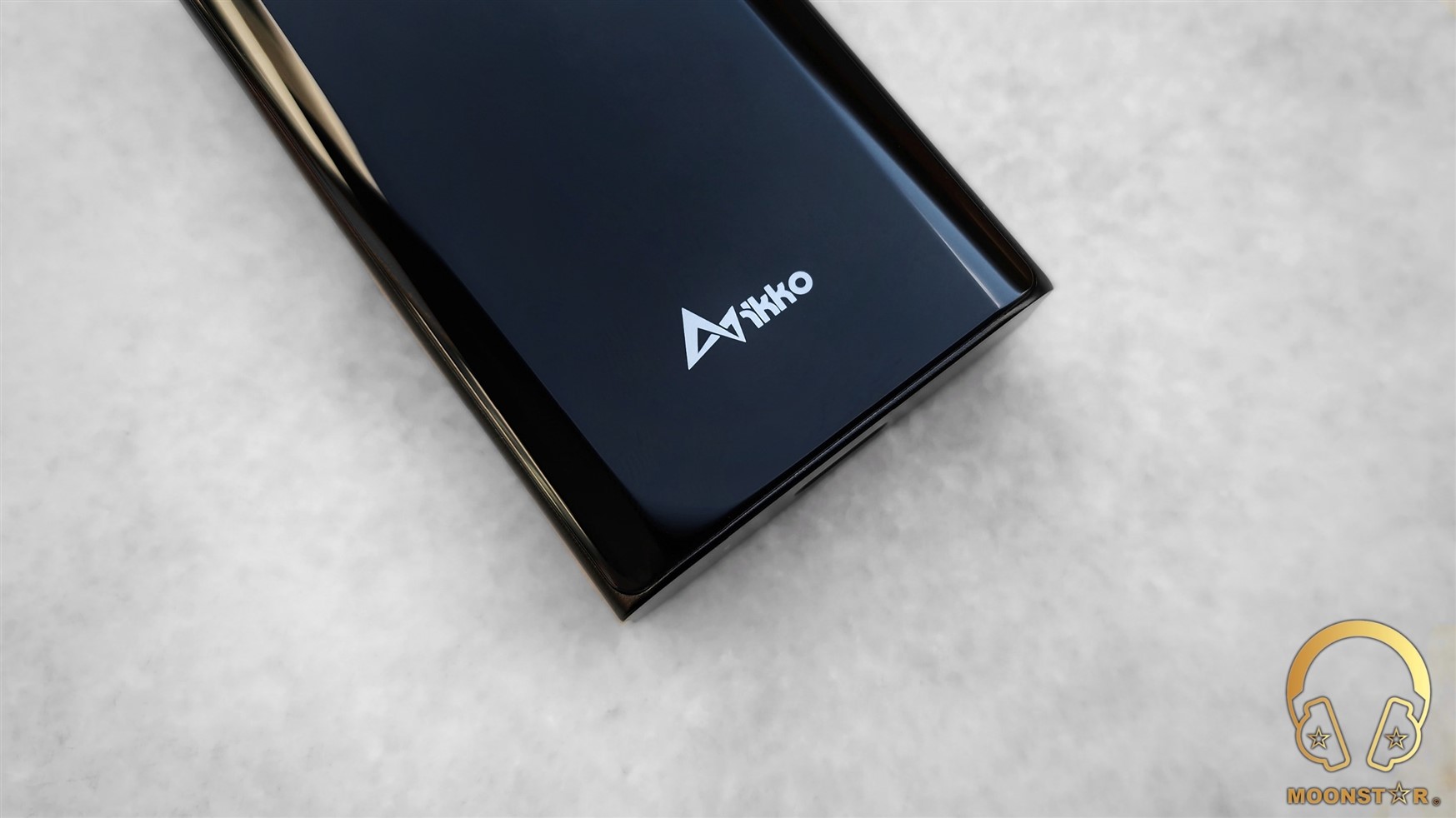
Bass:
The IKKO Heimdallr ITB03 has a pretty natural and linear bass response that shows a low amount of coloration that adds the general presentation a nice sense of musicality. The subbass region is reproduced with a decent grade of depth and extension when I listen to it with IEM’s like the FiiO FD7 and iBasso IT07. The 4.4mm balanced output is able to deliver a clean, controlled and deep subbass experience, when I listen to tracks such like Daft Punk’s “Doin’ it Right” or Lorde’s “Royals”.
The Heimdallr ITB03 has a pretty natural midbass response that offers a good grade of impact and control, without to lose the sense of clarity and resolution of the song I have listen to, while the coloration that is added is quite minimal. Songs with complex bass passages such like Gogo Penguin’s “Murmuration” or Charly Antolini’s “Duwadjuwandadu” are reproduced in a pretty clean and controlled manner, without to have any remarkable negative conditions such like a midbass hump or muddiness. The sense of layering and separation while listen to instruments such like a kick and snare drums is excellent, especially when paired with IEM’s like the FiiO FD7 and iBasso IT07.

Midrange:
The IKKO Heimdallr ITB03 shows a fairly natural, transparent and detailed midrange character, with a touch of warmth that adds the overall presentation a nice sense of musicality when I listen to instruments or to vocals that was pretty audible, especially when paired with IEM’s like the IKKO OH2 or FiiO FD7. The general midrange presentation of the Heimdallr ITB03 can be described as pretty balanced, lively and airy. The lower midrange is reproduced with a an efficient grade of body and depth that was pretty audible while listen to male vocals like Dave Gahan, David Bowie or Barry White or to strings such like a viola or acoustic guitar.
The upper midrange is shown with a decent level of clarity and resolution without to have negative conditions such like sibilance or over brightness. Instruments from guitars to flutes, from pianos to cellos are represented with an efficient amount of clarity and resolution, while or female vocals like Adel, Sertap Erener or Edith Piaf did sound pretty natural, lively and emotional. The resolution of instruments and human voices is pretty exciting for an ultra-portable BT/USB DAC/Amplifier at this price level.

Treble:
The IKKO Heimdallr ITB30 has a pretty balanced and natural character treble presentation that is shown with a decent sense of presence and brilliance. The coloration in this area is quite minimal, which shows only a tad of additional warmth and note weight. The transitions from the upper midrange towards the lower treble region are in general fairly controlled, especially in moments when instruments or soprano vocals are shown with higher level of distortion.
The lower treble region of the Heimdaller ITB03 shows a decent grade of clarity and definition, while the extension and separation of instruments such like violins and pianos is on a successful for a portable DAC/Amplifier at this price range. The upper treble area is shown with an efficient amount of airiness and sparkle. Percussions such like kick drums and hi-hats are reproduced with a sufficient sense of presence and airiness, while violins and toms do have just the right level of attack and extension when I do listen to it with IEM’s like the IKKO OH2. Crash and ride cymbals on the other hand do have a tad of warmth that helps do avoid negative conditions such like over sharpness.

Soundstage & Imaging:
The IKKO Heimdallr ITB03 shows a fairly spacious and airy soundstage atmosphere that meets my expectations from a product at this price range. Instruments and vocals do have enough headroom for a relative accurate placement and separation. The soundstage is reproduced with an efficient grade of depth and wideness, while the height of the stage is on a moderate level.
Comparison:
IKKO Heimdallr ITB03 versus Shanling UP4 2022 Edition:
The UP4 2022 Edition is Shanling’s latest Ultra-Portable BT & USB DAC/Amplifier, which is a direct rival of the IKKO Heimdallr ITB03 that I would like to compare for you.
The Shanling UP4 2022 shows a tad warmer tonality compared to the IKKO Heimdallr ITB03 that sounds a bit more neutral and balanced. The subbass region of both devices shows a pretty similar level of depth and extension, while the Heimdallr ITB03 offers a bit more clarity and resolution in this area when I do listen to kick-drums and bass guitars. The IKKO Heimdallr ITB03 has the slightly edge when it comes to the control and separation in the midbass area that was audible in songs with complex bass passages such like songs like Gogo Penguin’s Raven.

Both the Heimdallr ITB03 and the UP4 2022 Edition do offer a decent midrange performance, especially with respect for their price. The Shanling UP4 2022 sounds a tad warmer and fuller, due to a slightly coloration in the lower midrange area. The IKKO Heimdallr ITB03 on the other hand offers in general a more natural and spacious midrange presentation, with better sense of clarity and micro detail retrieval. Both sources do offer a pretty controlled upper midrange presentation, while the Heimdallr ITB03 sounds slightly more accurate and natural when I listen to female voices and instruments like violins and pianos.
The treble range of both the IKKO Heimdallr ITB03 and the Shanling UP4 2022 Edition sounds pretty energetic & pronounced, without to get out of control. The Heimdallr ITB03 has the slightly edge when it comes to the treble extension, while both are successful in terms of resolution.
Both devices do offer a decent performance in terms of separation and placement of instruments and vocals. However, the IKKO Heimdallr ITB03 shows a slightly higher sense of airiness and wideness, while the depth of the stage is relative similar.

Conclusion:
IKKO is an innovative company that is also known with its attention to the smallest details of all released products and the Heimdallr ITB03 is not an exception. The Heimdallr ITB03 Bluetooth & USB DAC/Amplifier impressed me in with its solid overall sound performance, build quality and all the well implemented hardware features, which are packed in to this ultra-portable devices with a very esthetic design that has a quite reasonable price. All in all, highly recommended!
Thank you for the Read!
Moonstar
100+ Head-Fier
Pros: Lifelike sound with great resolution,
Easy to drive,
Wonderful build quality (both monitor and cable),
MMCX connection means cable upgrade option,
Awesome Price to Performance Ratio
Easy to drive,
Wonderful build quality (both monitor and cable),
MMCX connection means cable upgrade option,
Awesome Price to Performance Ratio
Cons: Maybe a touch bright for some people
The Earbud with a Kind of Magic…
The NiceHCK EBX earbud was provided to me by NiceHCK Audio Store for free of charge as a review sample. I am not affiliated with NiceHCK Audio Store beyond this review and all these words reflect my true, unaltered, opinions about the product.

About NiceHCK Audio Store:
The company NICEHCK Audio was founded in 2015 in Shenzhen and is a professional dealer and trader of Chinese Hi-Fi Audio products, such as: Hi-Fi Earphone, Portable Player, Amplifier, Cable, Accessories. The main goal of NİceHCK is to provide Global Audiophiles with the best Chinese Hi-Fi Audio products through online stores like Aliexpress and Amazon.
The Price:
The NiceHCK EBX can be purchased on NiceHCK Audio Store for 138,00 USD.
Purchase Link for AliExpress (click)
Purchase Link for Amazon (click)
Introduction:
The NiceHCK EBX is the first Non-DIY flagship grade earbud of the company.
Package and Accessories:
The NiceHCK EBX comes in a small brown chard box that has the silver NiceHCK logo printed at the top of this box.
The box contains the following items;



Design, Fit and Build Quality:
The EBX main body is made of silver and black painted metal, while the speaker grill is made of a plastic material with a black color.
The earbud is available in 2 different color options, the so called Elegant Gold and the Classic Black model. My unit is the Classic Black model that is very well made and has no visible quality issues like burrs, gaps, etc..

One of the best things about this earbud is its cable upgrade capability. The EBX has a MMCX (Micro-Miniature Coaxial) connector that worked with all my tested cable with MMCX interface.
On top of the housing is a small bass vent right over the NickeHCK EBX marking.

The cable of the NiceHCK EBX is one of the sexiest looking stock cables that I have ever seen on an IEM or Earbud in this price range.
The 8 core copper and silver plated cooper mixed MMCX cable has a very nice touch feeling without any noticeable microphonic effects.

This cable has no chin slider, but there is a y-splitter that is made of a silver colored metal material that has a nice fashion look. The cable has a straight plug with a 3.5mm gold plated headphone jack and a nice looking carbon fiber texture.



Specifications:
The NiceHCK EBX is a single dynamic driver earbud and has a relative low impedance of 32 ohm. The driver is made of PET diaphragm and has a N48 type high magnetic magnet. The sound pressure level is according to NiceHCK specs around 200mV.
Some Technical Details:
Driver Type : 14.8 mm Single Dynamic PET Driver
Impedance : 32 ohm
Sound Pressure : 200mV
Sensitivity : 120dB ± 3dB (1kHz)
Freq. response : 20-20000Hz
Plug/Plating : 3.5mm Gold Plated straight plug
Wire Material : 8-core copper and silver plating mixed MMCX Cable
Cable length : 1.2m
Albums & tracks used for this review:
LP (Laura Pergolizzi) – Lost On You “Live at Harvard and Stone” (Tidal Hi-Fi)
Saskia Bruin – The Look of Love (DSF)
Dire Straits – Money For Nothing (DSF)
Mile Davis – Kind of Blue Album (Tidal Hi-fi)
Michael Jackson - Billie Jean (DSF)
Emmanuel Pahud (Claude Debussy) – Syrinx (Apple Music)
Aretha Franklin – I Say a Little Prayer (Apple Music)
Diana Krall - So Wonderful (DSF)
Otto Liebert & Luna Negra – Up Close “Album” (DSF) – Binaural Recording
Alboran Trio’s – Cinque Lunghissimi Minuti (Tidal Hi-Fi)
Lazarus A.D. – The Onslaught (ALAC)
Opeth – Damnation (Tidal Hi-Fi)
Daft Punk – Get Lucky (Flac 24bit/192kHz)
Michael Jackson - Billie Jean (DSF)
Yosi Horikawa – Bubbles (Flac 16bit/44kHz)
Sources used for this review:
Erabud : NiceHCK EBX, K’S 300 Samsara Version, VE Zen 2.0
DAP/DAC : Cayin N5II, Chord Mojo, Aune M2, Hidizs AP60II

Drivability:
The NiceHCK EBX has a relative low impedance of 32 ohm. This low value makes the EBX to an easy to drive earbud that will work great with most smartphones, media and audio players.
The Sound:
This NiceHCK EBX review is written after a burn-in process of 120 hours. I have used the stock donut foams due this review.
Tonality:
The NiceHCK EBX has a V shaped sound signature with a hint of bass warmth and a small emphasis to the top end. The first thing you will notice about the sound of the EBX is the extreme clarity of its overall presentation with almost any source.
Frequencies:
You can immediately notice that the lows of the NiceHCK are very accurate and controlled, without sounding overpowered or too shy. I must say that the bass quality and quantity of this earbud is really good and has the most convincing bass responses I have heard from any earbud in this price range.
The Bass presentation, especially in the sub bass area reminds me to this of the Rose Masya, that have the same wow effect with its headphone like presentation. The bass texture is really good with a decent definition and body.
The right definition for the midrange of the NiceHCK EBX is in one word “Crystal Clear”. This is the most impressive part of this earbud, because the vocal presentation of both male and female artists sounds amazing!
The midrange of the NiceHCK EBX is slightly laid-back and there is only a small amount of coloration that comes from the mid bass, which adds vocals a hint of warmth and fullness without to affect the transparency and clearness of the presentation.
The vocal performance of the NiceHCK EBX in “Saskia Bruin’s – The Look of Love “ is a good example how well this earbud performs. There is also good attention to micro details that makes the EBX to one of the best earbud choices for critical listening.
There is only a very low amount off upper midrange harshness around 3 kHz that is noticeable in some bad recorded studio albums like those of Metallica, LoL.
The treble range around 4-6 kHz is well presented and gives the EBX this effortless clarity and definition. This range is not over-boosted, so that there is no harshness that would otherwise irritated your ears after long listening periods.
Instrument like flutes, cymbals and guitar strings sounding detailed and having this very nice crispiness. The Instrument presentation in C.P.E Bach Emmanuel Pahud’s - Fluet Concerto sounds lifelike.
The upper treble tuning around 8-10 kHz gives the NiceHCK EBX a nice energy with lots of air and a beautiful sparkle. The treble extension is quite good and the overall resolution improves the separation and gives a nice detailed presentation.

The Soundstage and Imaging:
The NiceHCK EBX is not a open back earbud but is has a quit good soundstage presentation, better that many closed back competitors.
The depth is impressive, but what the EBX makes special is the wide stage, that is even better than my beloved Rose Masya, LoL. The placement and the air between instruments are great.
The overall imaging is accurate and the instrument separation, even in some complex tracks like Alboran Trio’s – Cinque Lunghissimi Minuti is stunning.

Comparison with other Earbuds:
I have compared the NiceHCK EBX with some of my High Level Earbuds and here are some examples.
EBX vs. Rose Masya:
The Rose Masya is one of the favorite earbuds in my collection due its special out of the head sound.
Build quality and Fit:
The NiceHCK EBX has the upper hand for build quality due the well made metal housing versus the 3D printed plastic shell of the Rose Masya. Both earbuds have cable upgrade options but they are using different connectors. The Masya has 0.75mm 2 pin connectors, while the EBX has an MMCX interface. The cable of the EBX is the best I have ever seen in this price category and those of the Masya has no change against it.
The fit of the Rose Masya is little bit problematic due the large housing. The NiceHCK EBX is more comfortable and has the better fit and feel.
The Sound:
The Rose Masya and the NiceHCK EBX have similarities in the subbass department. The quantity on both is nearly identical with a share a good speed and control. They the main difference starts with the bass quantity, especially the midbass quantity.
The Rose Masya has more midbass that make it sound a bit fuller and warmer then NiceHCK EBX. The bass and mid bass of the EBX is more balanced and has also additional texture and resolution.
The midrange of the Masya is more forward that makes the vocals sounding more intimate and emotional, but the EBX has the upper hand with its great definition and clarity.
There is no noticeable stress and remarkable harshness in the upper midrange. High octave female vocals or instruments like cymbal, piano etc. sounding quite controlled.
The NiceHCK EBX wins in treble clarity and micro-details and sound a litte more controlled than Rose Masya.
Both, Rose Masya and the NiceHCK have a nice sense of space, with a great extended soundstage. There is not a high difference but the NiceHCK EBX has additional depth and a better imaging that Rose Masya.
EBX vs. K’S 300 Samsara Version:
The K’S 300 Samsara Version is one of my favorite Earbuds together with the Rose Masya. It sound very mature and the sound signature well balanced with a hint of bass warmth.
Build quality and Fit:
The NiceHCK EBX has the better build quality with its more robust metal housing. The Samsara on the other hand has this classical plastic MX500 like housing with a glossy finish that is very common for DIY earbuds. The EBX is more flexible due its advantage for a cable upgrade option, but both have a nice and sturdy cable while the EBX cable looks sexier to my eyes.
Both erabuds have a relative good fit without being uncomfortable after some hours.
The Sound:
The EBX and the Samsara have a relative balanced sound signature, while the Samsara sounds a bit darker and a touch warmer then the EBX.
The Samara has more bass presence, while the EBX has a bit more sub bass. They are very capable earbuds in the bass department, with nice controlled and well textured presentation.
The Samsara needs a lot of juice (it’s a 300 ohm earbud) to show its real potential, while the EBX is easy to drive and relative efficient.
The main difference begins with the midrange. The Samsra has a darker, warmer and a bit grainier vocal and instrument presentation, while the Nice HCK EBX sounds more lifelike, vivid and transparent.
I like the Samsara more with male vocals, while the EBX sounds to me better with female vocals, but this is a bit subjective and a matter of personal preference, but it doesn’t change the fact that both earbuds are very good in micro detail and overall resolution.
The treble response of these two earbuds is a bit different. The Samsara sound more controlled and balanced, while the EBX has more treble presence that gives it additional sparkle and a sense of airiness. The Samsara is very controlled, even in very loud volume level with is high ohm advantage (300 ohm), while the EBX can loose this control sometimes in high volume levels.
Both earbuds share a decent soundstage, but there is a small difference. The EBX has more width and the Samsara more depth.

Conclusion:
The NiceHCK EBX is a masterpiece for “Sound Clarity”. It is a great example to show us, that earbuds have a great potential for real HiFi sound. The great build quality and sexy cable that can be upgraded is a nice additional feature that is highly regarded these times.
Summary (plus and minus):
+ Lifelike sound with great resolution
+ Easy to drive
+ Wonderful build quality (both monitor and cable)
+ MMCX connection means cable upgrade option
+ Awesome Price to Performance Ratio
- Maybe a touch bright for some people

This review was originally posted on "Moonstar Reviews" :
https://moonstarreviews.net
The NiceHCK EBX earbud was provided to me by NiceHCK Audio Store for free of charge as a review sample. I am not affiliated with NiceHCK Audio Store beyond this review and all these words reflect my true, unaltered, opinions about the product.

About NiceHCK Audio Store:
The company NICEHCK Audio was founded in 2015 in Shenzhen and is a professional dealer and trader of Chinese Hi-Fi Audio products, such as: Hi-Fi Earphone, Portable Player, Amplifier, Cable, Accessories. The main goal of NİceHCK is to provide Global Audiophiles with the best Chinese Hi-Fi Audio products through online stores like Aliexpress and Amazon.
The Price:
The NiceHCK EBX can be purchased on NiceHCK Audio Store for 138,00 USD.
Purchase Link for AliExpress (click)
Purchase Link for Amazon (click)
Introduction:
The NiceHCK EBX is the first Non-DIY flagship grade earbud of the company.
Package and Accessories:
The NiceHCK EBX comes in a small brown chard box that has the silver NiceHCK logo printed at the top of this box.
The box contains the following items;
- 1 pair of NiceHCK EBX Earbud
- 10 pairs of foams ear pads
- 1 pcs. 3.5mm Gold Plated Cable with MMCX Connectors
- 1 pcs. Shirt Clip
- 1 pcs. NiceHCK carrying case



Design, Fit and Build Quality:
The EBX main body is made of silver and black painted metal, while the speaker grill is made of a plastic material with a black color.
The earbud is available in 2 different color options, the so called Elegant Gold and the Classic Black model. My unit is the Classic Black model that is very well made and has no visible quality issues like burrs, gaps, etc..

One of the best things about this earbud is its cable upgrade capability. The EBX has a MMCX (Micro-Miniature Coaxial) connector that worked with all my tested cable with MMCX interface.
On top of the housing is a small bass vent right over the NickeHCK EBX marking.

The cable of the NiceHCK EBX is one of the sexiest looking stock cables that I have ever seen on an IEM or Earbud in this price range.
The 8 core copper and silver plated cooper mixed MMCX cable has a very nice touch feeling without any noticeable microphonic effects.

This cable has no chin slider, but there is a y-splitter that is made of a silver colored metal material that has a nice fashion look. The cable has a straight plug with a 3.5mm gold plated headphone jack and a nice looking carbon fiber texture.



Specifications:
The NiceHCK EBX is a single dynamic driver earbud and has a relative low impedance of 32 ohm. The driver is made of PET diaphragm and has a N48 type high magnetic magnet. The sound pressure level is according to NiceHCK specs around 200mV.
Some Technical Details:
Driver Type : 14.8 mm Single Dynamic PET Driver
Impedance : 32 ohm
Sound Pressure : 200mV
Sensitivity : 120dB ± 3dB (1kHz)
Freq. response : 20-20000Hz
Plug/Plating : 3.5mm Gold Plated straight plug
Wire Material : 8-core copper and silver plating mixed MMCX Cable
Cable length : 1.2m
Albums & tracks used for this review:
LP (Laura Pergolizzi) – Lost On You “Live at Harvard and Stone” (Tidal Hi-Fi)
Saskia Bruin – The Look of Love (DSF)
Dire Straits – Money For Nothing (DSF)
Mile Davis – Kind of Blue Album (Tidal Hi-fi)
Michael Jackson - Billie Jean (DSF)
Emmanuel Pahud (Claude Debussy) – Syrinx (Apple Music)
Aretha Franklin – I Say a Little Prayer (Apple Music)
Diana Krall - So Wonderful (DSF)
Otto Liebert & Luna Negra – Up Close “Album” (DSF) – Binaural Recording
Alboran Trio’s – Cinque Lunghissimi Minuti (Tidal Hi-Fi)
Lazarus A.D. – The Onslaught (ALAC)
Opeth – Damnation (Tidal Hi-Fi)
Daft Punk – Get Lucky (Flac 24bit/192kHz)
Michael Jackson - Billie Jean (DSF)
Yosi Horikawa – Bubbles (Flac 16bit/44kHz)
Sources used for this review:
Erabud : NiceHCK EBX, K’S 300 Samsara Version, VE Zen 2.0
DAP/DAC : Cayin N5II, Chord Mojo, Aune M2, Hidizs AP60II

Drivability:
The NiceHCK EBX has a relative low impedance of 32 ohm. This low value makes the EBX to an easy to drive earbud that will work great with most smartphones, media and audio players.
The Sound:
This NiceHCK EBX review is written after a burn-in process of 120 hours. I have used the stock donut foams due this review.
Tonality:
The NiceHCK EBX has a V shaped sound signature with a hint of bass warmth and a small emphasis to the top end. The first thing you will notice about the sound of the EBX is the extreme clarity of its overall presentation with almost any source.
Frequencies:
You can immediately notice that the lows of the NiceHCK are very accurate and controlled, without sounding overpowered or too shy. I must say that the bass quality and quantity of this earbud is really good and has the most convincing bass responses I have heard from any earbud in this price range.
The Bass presentation, especially in the sub bass area reminds me to this of the Rose Masya, that have the same wow effect with its headphone like presentation. The bass texture is really good with a decent definition and body.
The right definition for the midrange of the NiceHCK EBX is in one word “Crystal Clear”. This is the most impressive part of this earbud, because the vocal presentation of both male and female artists sounds amazing!
The midrange of the NiceHCK EBX is slightly laid-back and there is only a small amount of coloration that comes from the mid bass, which adds vocals a hint of warmth and fullness without to affect the transparency and clearness of the presentation.
The vocal performance of the NiceHCK EBX in “Saskia Bruin’s – The Look of Love “ is a good example how well this earbud performs. There is also good attention to micro details that makes the EBX to one of the best earbud choices for critical listening.
There is only a very low amount off upper midrange harshness around 3 kHz that is noticeable in some bad recorded studio albums like those of Metallica, LoL.
The treble range around 4-6 kHz is well presented and gives the EBX this effortless clarity and definition. This range is not over-boosted, so that there is no harshness that would otherwise irritated your ears after long listening periods.
Instrument like flutes, cymbals and guitar strings sounding detailed and having this very nice crispiness. The Instrument presentation in C.P.E Bach Emmanuel Pahud’s - Fluet Concerto sounds lifelike.
The upper treble tuning around 8-10 kHz gives the NiceHCK EBX a nice energy with lots of air and a beautiful sparkle. The treble extension is quite good and the overall resolution improves the separation and gives a nice detailed presentation.

The Soundstage and Imaging:
The NiceHCK EBX is not a open back earbud but is has a quit good soundstage presentation, better that many closed back competitors.
The depth is impressive, but what the EBX makes special is the wide stage, that is even better than my beloved Rose Masya, LoL. The placement and the air between instruments are great.
The overall imaging is accurate and the instrument separation, even in some complex tracks like Alboran Trio’s – Cinque Lunghissimi Minuti is stunning.

Comparison with other Earbuds:
I have compared the NiceHCK EBX with some of my High Level Earbuds and here are some examples.
EBX vs. Rose Masya:
The Rose Masya is one of the favorite earbuds in my collection due its special out of the head sound.
Build quality and Fit:
The NiceHCK EBX has the upper hand for build quality due the well made metal housing versus the 3D printed plastic shell of the Rose Masya. Both earbuds have cable upgrade options but they are using different connectors. The Masya has 0.75mm 2 pin connectors, while the EBX has an MMCX interface. The cable of the EBX is the best I have ever seen in this price category and those of the Masya has no change against it.
The fit of the Rose Masya is little bit problematic due the large housing. The NiceHCK EBX is more comfortable and has the better fit and feel.
The Sound:
The Rose Masya and the NiceHCK EBX have similarities in the subbass department. The quantity on both is nearly identical with a share a good speed and control. They the main difference starts with the bass quantity, especially the midbass quantity.
The Rose Masya has more midbass that make it sound a bit fuller and warmer then NiceHCK EBX. The bass and mid bass of the EBX is more balanced and has also additional texture and resolution.
The midrange of the Masya is more forward that makes the vocals sounding more intimate and emotional, but the EBX has the upper hand with its great definition and clarity.
There is no noticeable stress and remarkable harshness in the upper midrange. High octave female vocals or instruments like cymbal, piano etc. sounding quite controlled.
The NiceHCK EBX wins in treble clarity and micro-details and sound a litte more controlled than Rose Masya.
Both, Rose Masya and the NiceHCK have a nice sense of space, with a great extended soundstage. There is not a high difference but the NiceHCK EBX has additional depth and a better imaging that Rose Masya.
EBX vs. K’S 300 Samsara Version:
The K’S 300 Samsara Version is one of my favorite Earbuds together with the Rose Masya. It sound very mature and the sound signature well balanced with a hint of bass warmth.
Build quality and Fit:
The NiceHCK EBX has the better build quality with its more robust metal housing. The Samsara on the other hand has this classical plastic MX500 like housing with a glossy finish that is very common for DIY earbuds. The EBX is more flexible due its advantage for a cable upgrade option, but both have a nice and sturdy cable while the EBX cable looks sexier to my eyes.
Both erabuds have a relative good fit without being uncomfortable after some hours.
The Sound:
The EBX and the Samsara have a relative balanced sound signature, while the Samsara sounds a bit darker and a touch warmer then the EBX.
The Samara has more bass presence, while the EBX has a bit more sub bass. They are very capable earbuds in the bass department, with nice controlled and well textured presentation.
The Samsara needs a lot of juice (it’s a 300 ohm earbud) to show its real potential, while the EBX is easy to drive and relative efficient.
The main difference begins with the midrange. The Samsra has a darker, warmer and a bit grainier vocal and instrument presentation, while the Nice HCK EBX sounds more lifelike, vivid and transparent.
I like the Samsara more with male vocals, while the EBX sounds to me better with female vocals, but this is a bit subjective and a matter of personal preference, but it doesn’t change the fact that both earbuds are very good in micro detail and overall resolution.
The treble response of these two earbuds is a bit different. The Samsara sound more controlled and balanced, while the EBX has more treble presence that gives it additional sparkle and a sense of airiness. The Samsara is very controlled, even in very loud volume level with is high ohm advantage (300 ohm), while the EBX can loose this control sometimes in high volume levels.
Both earbuds share a decent soundstage, but there is a small difference. The EBX has more width and the Samsara more depth.

Conclusion:
The NiceHCK EBX is a masterpiece for “Sound Clarity”. It is a great example to show us, that earbuds have a great potential for real HiFi sound. The great build quality and sexy cable that can be upgraded is a nice additional feature that is highly regarded these times.
Summary (plus and minus):
+ Lifelike sound with great resolution
+ Easy to drive
+ Wonderful build quality (both monitor and cable)
+ MMCX connection means cable upgrade option
+ Awesome Price to Performance Ratio
- Maybe a touch bright for some people

This review was originally posted on "Moonstar Reviews" :
https://moonstarreviews.net
karanehir35
.Thank you for your review. This earbud is very good.
I love your voice very much.
I love your voice very much.
Moonstar
Yes, it looks lot like the BS1 cable. Maybe I can compare it when I receive the BS1 official  I hope you liked my review
I hope you liked my review 
 I hope you liked my review
I hope you liked my review 
Moonstar
100+ Head-Fier
Pros: Build like a Tank,
Strong but clean bass,
Balanced sound and clarity,
Build-in microphone with volume control
Strong but clean bass,
Balanced sound and clarity,
Build-in microphone with volume control
Cons: No detachable cable & Flat cable profile,
Not the best isolation
Not the best isolation
The Brainwavz S0; A Solid Performer
Introduction:
The company Brainwavz is a well-known Asian Hi-Fi Audio Company, which is known for their affordable audio products. The Brainwavz S0 is one of there entry level products which futures a Clearwavz Remote control.

Disclaimer:
The Brainwavz S0 was provided to me by the Brainwavz for free of charge as a review sample. I am not affiliated with Brainwavz beyond this review and these words reflect my true, unaltered, opinions about the product.
Price & Warranty:
The MSRP price for the Brainwavz S0 is 49.50 USD and has a 24 Month Warranty.
Purchase Link: Brainwavz Store
Package and Accessories:
The Brainwavz S0 comes in small rectangular box which is wrapped with a white colored card board and sports an illustration of the S0 earphone. The box itself is in grey and has a soft coated surface with a nice appearance.
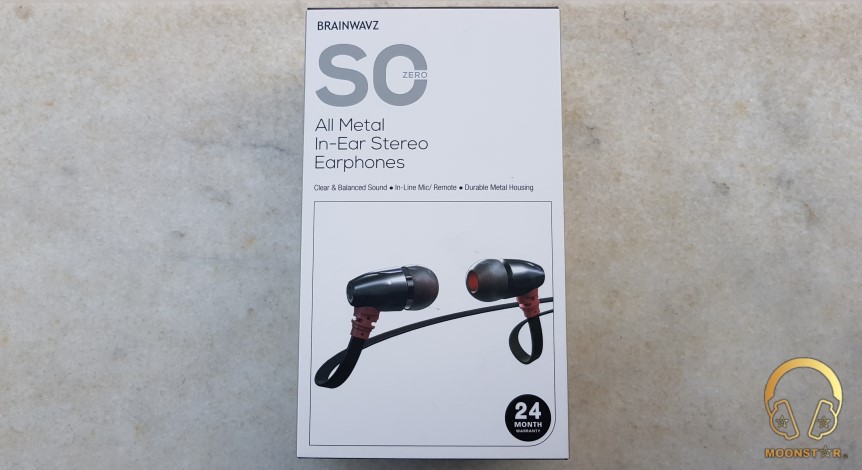

What’s inside the box?

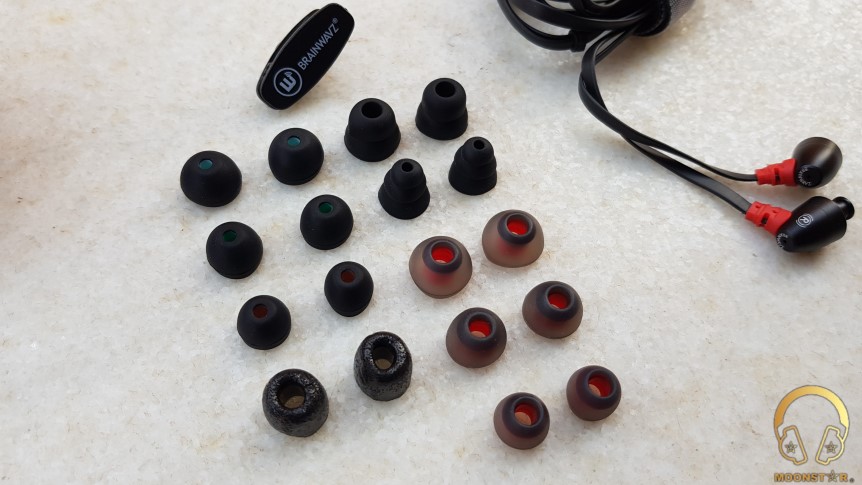
The Brainwavz S0 IEM comes with lots of accessories like a shirt clip, hard-case, various silicone ear tips, etc. There is also one pair of Comply T-400 foam tips which is a nice addition.
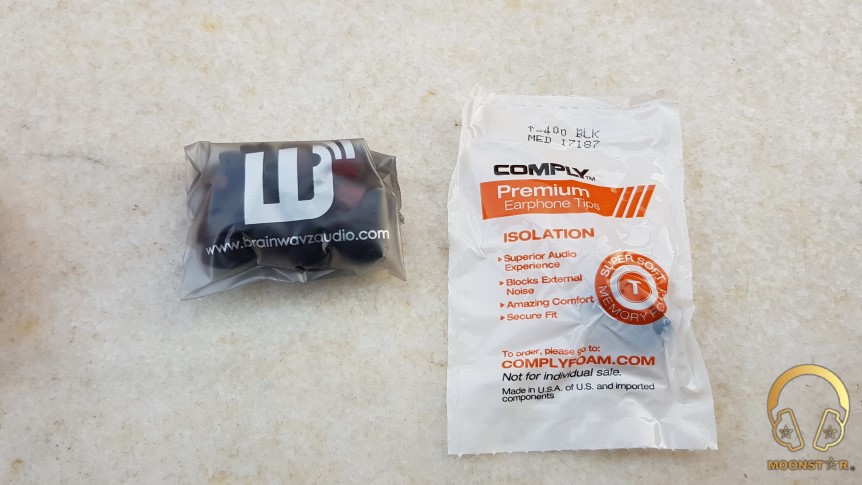
The hard-case which is included to the box looks stylish and is also quite useful.
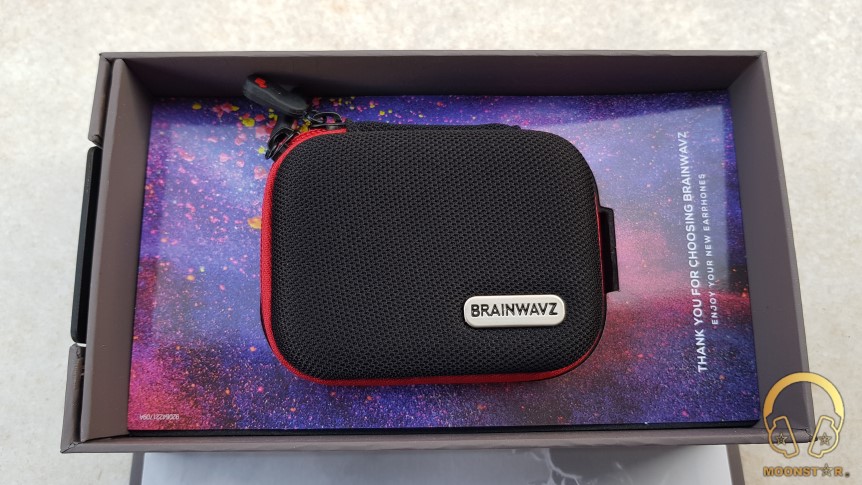
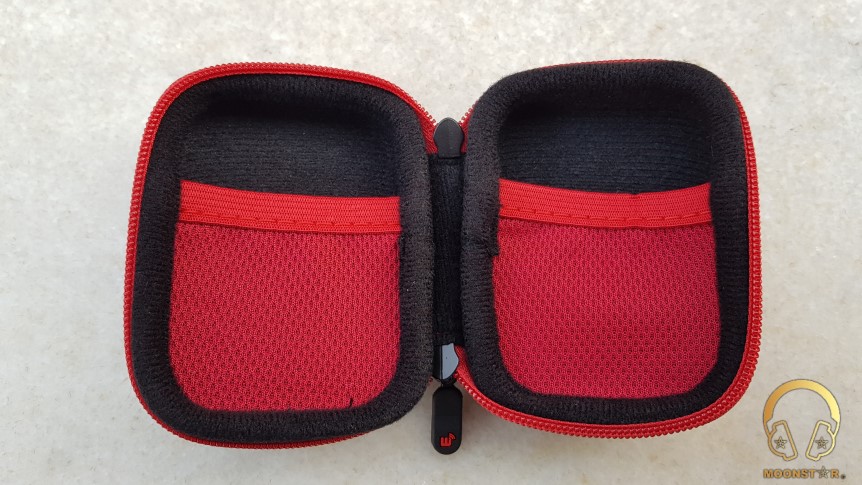
Specifications:
Design, Fit and Build Quality:
The Brainwavz S0 has is quite comfortable and sits nice in my ears. The noise isolation is average due the bass vent on the backside of the monitor.
The Brainwavz S0 has a relative small and compact form factor. The monitor is made of a solid all metal housing and has a flat, tangle free cable which looks & feels also very durable.
There is also a red plastic part on the shell which serves as strain relief.
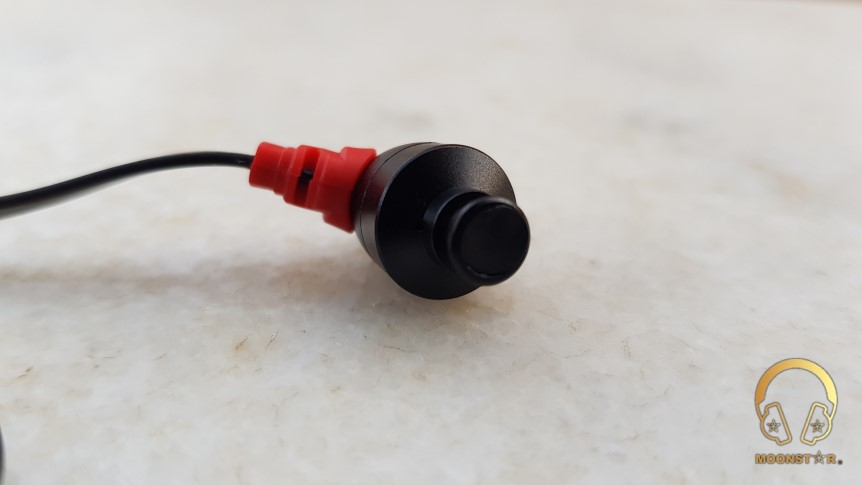
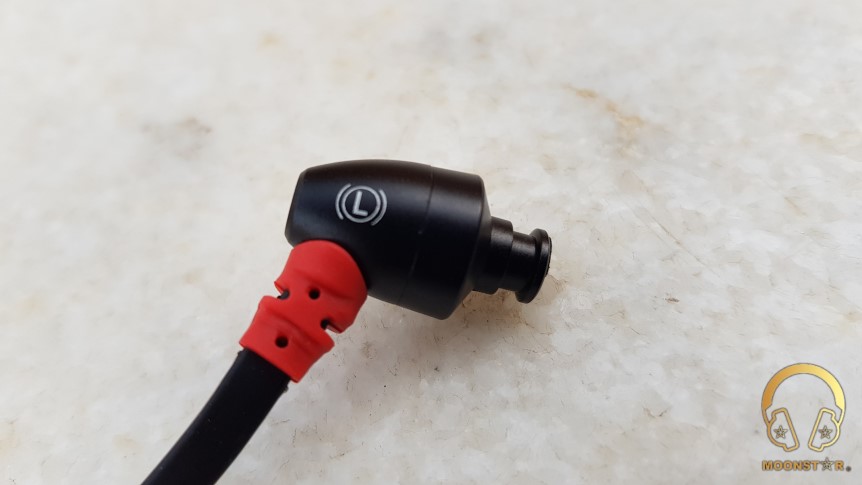
On the back of the monitor sports a bass vent and the Brainwavz logo and on the sides are the Left & Right markings.
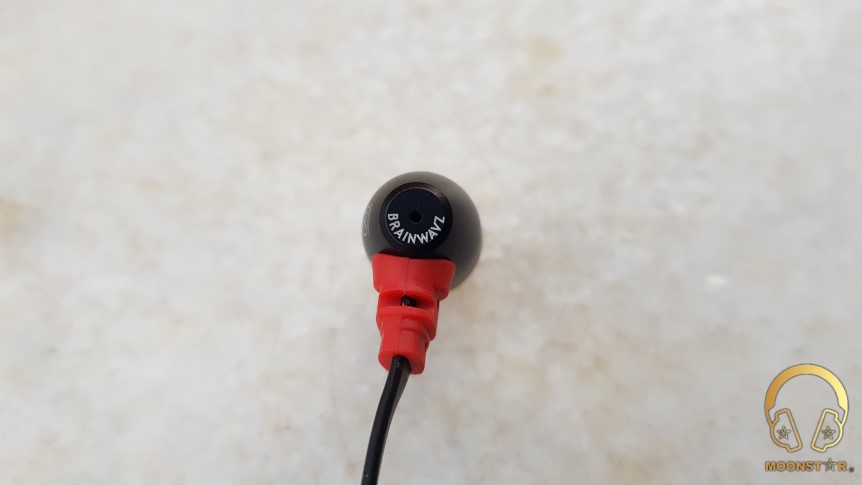
The Brainwavz S0 has a built in remote which is promoted as “Clearwavz Remote” and features a build in microphone (on the backside of the remote control) with a quite good voice transmission performance. The remote control sports 3 buttons which supports Apple iOS and Android products and works for phone call controls, audio player controls and volume controls with a Micro-Electrical-Mechanical System (in short MEMS).
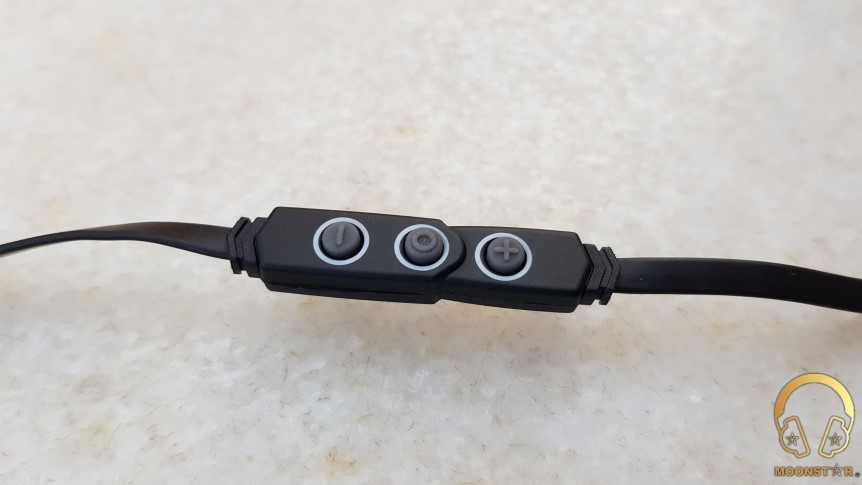
The cable sports a plastic Y splitter and a chin/neck slider.

The straight headphone jack is made of plastic and has a 3.5mm gold plated plug.
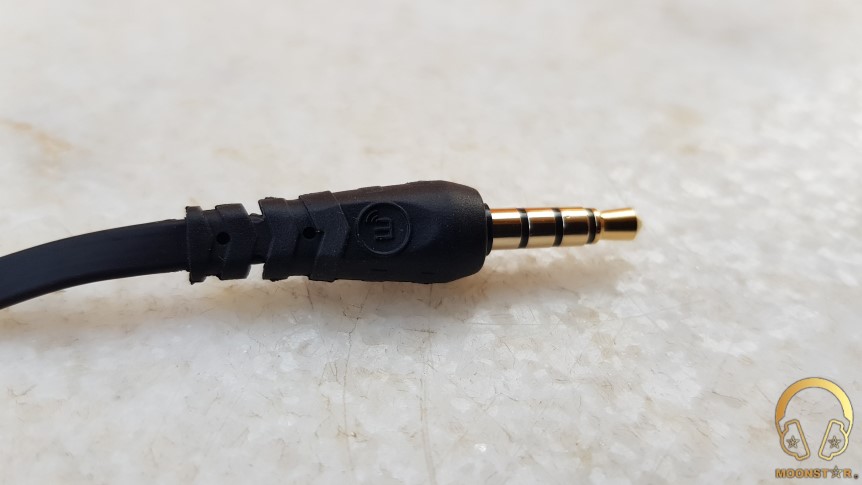

Albums & tracks used for this review:
Sources used for this review:
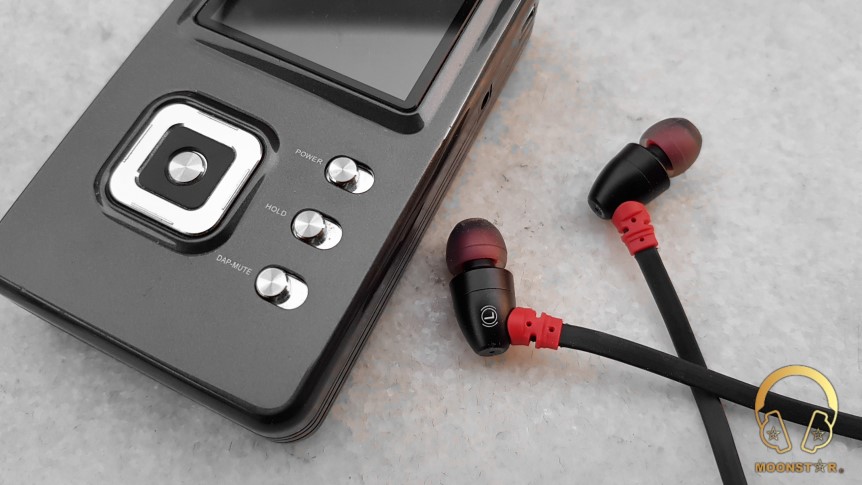
The Sound:
I believe in burn-in and this review is written after a burn-in process of approx. 80 hours. I have used the stock black colored silicone ear tips (which are softer but have a smaller sound channel) that are included to the package.
Tonality:
The Brainwavz S0 has a slightly warm tonality with a bright top end, strong bass response and a very clean overall sound and I was very surprised how clear and powerful this little IEM form sounded.
Frequencies:
Bass:
You can immediately notice that the Brainwavz S0 has some strong and powerful bass presentation, but don’t get me wrong, this is not the sort of bass presentation which sounds overpowered or overwhelming. This is not an IEM which will satisfy bass heads, but most people who want some strong bass, without to lose clarity will enjoy this IEM with no doubt.
The sub-bass area between 20 – 50 Hz has good weight and depth and this will satisfy many users who are looking for an IEM for a reasonable price.
The bass sounds controlled and is sounds tight but is missing a little bit of extension, which is quite acceptable for this price level. One big plus point for the Brainwavz S0 is the mid-bass performance, which sounds well controlled, punchy and pretty fast without to overshadowing the midrange.
For example; the bass presentations in some bass heavy songs like Future Heroes – Archangel and Lorde’s – Royal are sounding very exiting.
Mids:
The most important part of the Brainwavz S0 is the midrange clarity, which is in a level that is rare to find in this price class. It sounds slightly colored (warm) but has a good amount of detail.
The definition of instruments and the level of it’s clearness above average.
I have tested the S0 with some instrument intensive tracks like Alboran Trio’s – Cinque Lunghissimi Minuti and the result was pretty good.
Both male and female vocals are presented in a quite natural and transparent way. Some Female voices like Diana Krall and Hannah Reid (vocalist of London Grammar) are represented in a quite emotional and exiting way. The overall vocal distance of the Brainwavz S0 is pretty balanced, which doesn’t sound very upfront or too recessed.
The upper treble range of the S0 is another highlight, because it sounds controlled and transparent, with only a low amount of sibilance that is most noticeable in bad recorded or remastered tracks.
Treble:
The first noticeable thing about the treble range is the good transition between the upper midrange and the treble range, where exists a good balance between neutrality and musicality.
The treble extension and overall speed of the Brainwavz S0 is above average and the good thing is that there is no remarkable harshness between the 4 – 6 kHz range.
The upper treble range of the Brainwavz S0 sounds relative controlled with some instruments like violins, cymbals or bells. Megadeth’s epic song “Sweating Bullets” is a good example, where the cymbals have a pretty good attack and decay.
Soundstage and Imaging:
The soundstage of the Brainwavz S0 is fairly wide and is above average in depth, which should not be a drawback at this price point. The S0 represents a nice sense of space with a good amount of air between instruments and there is also a nice, 3D like imaging.
Comparison:
Vs. Shozy Hibiki:
The Shozy Hibiki has less sub-bass quantity and depth than compared to the Brainwavz S0. Both IEM’s are equal good regarding to the overall bass speed. The S0 has better the better bass extension, while the Shozy Hibiki sounds more controlled.
.The Brainwavz S0 sounds surprisingly clinical and transparent compared to the flat but grainy midrange presentation of the Shozy Hibiki. The Hibiki sounds slightly warmer and emotional compared to the S0.
The upper midrange of the Shozy Hibiki sounds slightly harsher, compared to the more controlled and softer presentation of the Brainwavz S0. Both IEM’s are surprisingly good for its price regarding to vocal and instrument presentation. When it comes to vocal presentation I must say that the Barinwavz S0 sounds better with male vocals, while I like the Shozy Hibiki more with female voices due the more emotional presentation.
Both the Shozy Hibiki and Brainwavz S0 have a pretty controlled treble presentation while the Hibiki IEM sounds slightly harsher with bad recorded/remastered tracks, where the S0 excels better. The detail level of the Shozy Hibiki is slightly better.
The soundstage of the Shozy Hibiki expands in a more natural way, while the difference for depth is minimal.
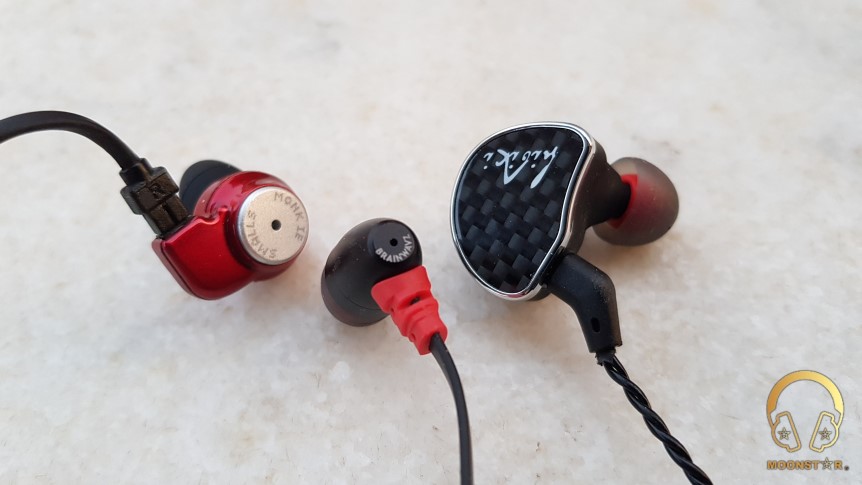
Vs. VE Monk IE Smalls
The Monk IE Smalls sounds quite warm in its presentation compared to the more natural sounding Brainwavz S0, which has also more sparkle on the top end.
Both IEM’s sharing some nice sub-bass rumble, which will excite bass lovers. But the Brainwavz S0 has more depth, extension and control compared to the slower and hotter sounding bass response of the Monk’s. The Monk IE Smalls sounds a bit too warm in the bass department, where the Brainwavz S0 sounds more balanced and natural.
Both IEM’s have a quite different midrange presentation. The Monk IE Smalls sounds fuller and warmer with a veiled presentation, while the Brainwavz S0 has a more transparent and natural midrange tuning. The Brainwavz S0 sounds more realistic with both male and female vocals, while the Monk IE Smalls has an emotional presentation.
The instrument clarity, separation and detail level of the Brainwavz S0 is superior compared to those of the Monk IE Smalls, which has some clarity problems.
The treble range of the Monk IE Smalls sounds darker and is missing some sparkle. The treble extension and detail level of the Brainwavz S0 is one of the best in this price class and is superior to those of the Monk IE Smalls. The upper treble range of the Monk IE Smalls sounds softer and more controlled, but is missing some sparkle.
The Brainwavz S0 has an airier and wider soundstage presentation in both directions.
Conclusion:
The Brainwavz S0 is a very well made IEM, which has a very nice accessory package and pretty good sound quality. The powerful bass, overall balance and clarity level makes it to a good performer in this price range.
Summary (plus and minus):
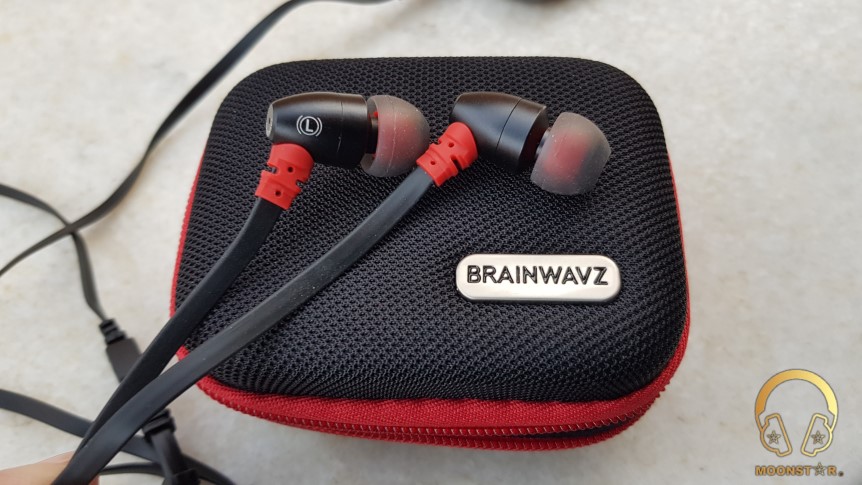
This review was originally posted on "Moonstar Reviews" :
https://moonstarreviews.net
...
Introduction:
The company Brainwavz is a well-known Asian Hi-Fi Audio Company, which is known for their affordable audio products. The Brainwavz S0 is one of there entry level products which futures a Clearwavz Remote control.

Disclaimer:
The Brainwavz S0 was provided to me by the Brainwavz for free of charge as a review sample. I am not affiliated with Brainwavz beyond this review and these words reflect my true, unaltered, opinions about the product.
Price & Warranty:
The MSRP price for the Brainwavz S0 is 49.50 USD and has a 24 Month Warranty.
Purchase Link: Brainwavz Store
Package and Accessories:
The Brainwavz S0 comes in small rectangular box which is wrapped with a white colored card board and sports an illustration of the S0 earphone. The box itself is in grey and has a soft coated surface with a nice appearance.


What’s inside the box?
- 1 x Brainwavz S0
- 1 x Earphone hard-case
- 6 x sets of Silicone Ear Tips (S M L)
- 1 x set of Comply™ Foam Tips T-400
- 1 x Shirt Clip
- 1 x set of Silicone Bi-Flange Eartips
- 1 x set of Silicone Tri-Flange Eartips
- 1 x Velcro Cable Tie
- 1 x Instruction Manual
- 1 x Warranty Card (24-month warranty)


The Brainwavz S0 IEM comes with lots of accessories like a shirt clip, hard-case, various silicone ear tips, etc. There is also one pair of Comply T-400 foam tips which is a nice addition.

The hard-case which is included to the box looks stylish and is also quite useful.


Specifications:
- Driver Type : Dynamic, 9 mm
- Impedance : 16 Ω
- Frequency Range : 18 Hz ~ 18 kHz
- Sensitivity : 100 dB at 1 mW
- Rated Input Power : 10 mW
- Cable : 1.2 m Y-Cord, Copper
- Headphone Plug : 3.5 mm, Gold Plated
Design, Fit and Build Quality:
The Brainwavz S0 has is quite comfortable and sits nice in my ears. The noise isolation is average due the bass vent on the backside of the monitor.
The Brainwavz S0 has a relative small and compact form factor. The monitor is made of a solid all metal housing and has a flat, tangle free cable which looks & feels also very durable.
There is also a red plastic part on the shell which serves as strain relief.


On the back of the monitor sports a bass vent and the Brainwavz logo and on the sides are the Left & Right markings.

The Brainwavz S0 has a built in remote which is promoted as “Clearwavz Remote” and features a build in microphone (on the backside of the remote control) with a quite good voice transmission performance. The remote control sports 3 buttons which supports Apple iOS and Android products and works for phone call controls, audio player controls and volume controls with a Micro-Electrical-Mechanical System (in short MEMS).

The cable sports a plastic Y splitter and a chin/neck slider.

The straight headphone jack is made of plastic and has a 3.5mm gold plated plug.


Albums & tracks used for this review:
- Opeth – Damnation (Tidal Hi-Fi)
- Megadeth – Sweating Bullets (Flac 16bit/44kHz)
- Metallica – Sad But True (Flac 24bit/96Hz)
- LP (Laura Pergolizzi) – Lost On You “Live at Harvard and Stone” (Tidal Hi-Fi)
- Saskia Bruin – The Look of Love (DSF)
- London Grammar – Hey Now (Tidal Hi-Fi)
- Diana Krall – So Wonderful (DSF)
- George Michael – Older Album (Apple Music)
- Dire Straits – Money For Nothing (DSF)
- Mile Davis – Kind of Blue Album (Tidal Hi-fi)
- Emmanuel Pahud (Claude Debussy) – Syrinx (Apple Music)
- Otto Liebert & Luna Negra – Up Close “Album” (DSF) – Binaural Recording
- Alboran Trio’s – Cinque Lunghissimi Minuti (Tidal Hi-Fi)
- Daft Punk – Get Lucky (Flac 24bit/192kHz)
- Lorde – Royals (Flac 24bit/48kHz)
- Michael Jackson – Billie Jean (DSF)
- Future Heroes – Archangel (Spotify)
- Deeperise feat Jabbar – Move On (Spotify)
Sources used for this review:
- IEM : Brainwvz S0, Shzoy Hibiki, VE Monk Smalls IE
- DAP/DAC : Chord Mojo, Hifiman HM603s, Nexum AQUA+

The Sound:
I believe in burn-in and this review is written after a burn-in process of approx. 80 hours. I have used the stock black colored silicone ear tips (which are softer but have a smaller sound channel) that are included to the package.
Tonality:
The Brainwavz S0 has a slightly warm tonality with a bright top end, strong bass response and a very clean overall sound and I was very surprised how clear and powerful this little IEM form sounded.
Frequencies:
Bass:
You can immediately notice that the Brainwavz S0 has some strong and powerful bass presentation, but don’t get me wrong, this is not the sort of bass presentation which sounds overpowered or overwhelming. This is not an IEM which will satisfy bass heads, but most people who want some strong bass, without to lose clarity will enjoy this IEM with no doubt.
The sub-bass area between 20 – 50 Hz has good weight and depth and this will satisfy many users who are looking for an IEM for a reasonable price.
The bass sounds controlled and is sounds tight but is missing a little bit of extension, which is quite acceptable for this price level. One big plus point for the Brainwavz S0 is the mid-bass performance, which sounds well controlled, punchy and pretty fast without to overshadowing the midrange.
For example; the bass presentations in some bass heavy songs like Future Heroes – Archangel and Lorde’s – Royal are sounding very exiting.
Mids:
The most important part of the Brainwavz S0 is the midrange clarity, which is in a level that is rare to find in this price class. It sounds slightly colored (warm) but has a good amount of detail.
The definition of instruments and the level of it’s clearness above average.
I have tested the S0 with some instrument intensive tracks like Alboran Trio’s – Cinque Lunghissimi Minuti and the result was pretty good.
Both male and female vocals are presented in a quite natural and transparent way. Some Female voices like Diana Krall and Hannah Reid (vocalist of London Grammar) are represented in a quite emotional and exiting way. The overall vocal distance of the Brainwavz S0 is pretty balanced, which doesn’t sound very upfront or too recessed.
The upper treble range of the S0 is another highlight, because it sounds controlled and transparent, with only a low amount of sibilance that is most noticeable in bad recorded or remastered tracks.
Treble:
The first noticeable thing about the treble range is the good transition between the upper midrange and the treble range, where exists a good balance between neutrality and musicality.
The treble extension and overall speed of the Brainwavz S0 is above average and the good thing is that there is no remarkable harshness between the 4 – 6 kHz range.
The upper treble range of the Brainwavz S0 sounds relative controlled with some instruments like violins, cymbals or bells. Megadeth’s epic song “Sweating Bullets” is a good example, where the cymbals have a pretty good attack and decay.
Soundstage and Imaging:
The soundstage of the Brainwavz S0 is fairly wide and is above average in depth, which should not be a drawback at this price point. The S0 represents a nice sense of space with a good amount of air between instruments and there is also a nice, 3D like imaging.
Comparison:
Vs. Shozy Hibiki:
The Shozy Hibiki has less sub-bass quantity and depth than compared to the Brainwavz S0. Both IEM’s are equal good regarding to the overall bass speed. The S0 has better the better bass extension, while the Shozy Hibiki sounds more controlled.
.The Brainwavz S0 sounds surprisingly clinical and transparent compared to the flat but grainy midrange presentation of the Shozy Hibiki. The Hibiki sounds slightly warmer and emotional compared to the S0.
The upper midrange of the Shozy Hibiki sounds slightly harsher, compared to the more controlled and softer presentation of the Brainwavz S0. Both IEM’s are surprisingly good for its price regarding to vocal and instrument presentation. When it comes to vocal presentation I must say that the Barinwavz S0 sounds better with male vocals, while I like the Shozy Hibiki more with female voices due the more emotional presentation.
Both the Shozy Hibiki and Brainwavz S0 have a pretty controlled treble presentation while the Hibiki IEM sounds slightly harsher with bad recorded/remastered tracks, where the S0 excels better. The detail level of the Shozy Hibiki is slightly better.
The soundstage of the Shozy Hibiki expands in a more natural way, while the difference for depth is minimal.

Vs. VE Monk IE Smalls
The Monk IE Smalls sounds quite warm in its presentation compared to the more natural sounding Brainwavz S0, which has also more sparkle on the top end.
Both IEM’s sharing some nice sub-bass rumble, which will excite bass lovers. But the Brainwavz S0 has more depth, extension and control compared to the slower and hotter sounding bass response of the Monk’s. The Monk IE Smalls sounds a bit too warm in the bass department, where the Brainwavz S0 sounds more balanced and natural.
Both IEM’s have a quite different midrange presentation. The Monk IE Smalls sounds fuller and warmer with a veiled presentation, while the Brainwavz S0 has a more transparent and natural midrange tuning. The Brainwavz S0 sounds more realistic with both male and female vocals, while the Monk IE Smalls has an emotional presentation.
The instrument clarity, separation and detail level of the Brainwavz S0 is superior compared to those of the Monk IE Smalls, which has some clarity problems.
The treble range of the Monk IE Smalls sounds darker and is missing some sparkle. The treble extension and detail level of the Brainwavz S0 is one of the best in this price class and is superior to those of the Monk IE Smalls. The upper treble range of the Monk IE Smalls sounds softer and more controlled, but is missing some sparkle.
The Brainwavz S0 has an airier and wider soundstage presentation in both directions.
Conclusion:
The Brainwavz S0 is a very well made IEM, which has a very nice accessory package and pretty good sound quality. The powerful bass, overall balance and clarity level makes it to a good performer in this price range.
Summary (plus and minus):
- + Build like a Tank
- + Strong but clean bass
- + Balanced sound and clarity
- + Build-in microphone with volume control
- – No detachable cable & Flat cable profile
- – Not the best isolation

This review was originally posted on "Moonstar Reviews" :
https://moonstarreviews.net
...
Moonstar
100+ Head-Fier
Pros: Overall Bass Performance,
Midrange Tonality and Detail Retrieval,
Musical Instrument and Intimate Vocal Presentation,
Build Quality and Esthetics,
High Value for your Money
Midrange Tonality and Detail Retrieval,
Musical Instrument and Intimate Vocal Presentation,
Build Quality and Esthetics,
High Value for your Money
Cons: Headband is maybe a bit small for bigheads,
None for a Headphone at this price tag
None for a Headphone at this price tag
SIVGA Phoenix Headphone Review
Introduction:
SIVGA Electronic Technology Co., Ltd, is a Chinese brand located in Dongguan city of China, focuses on designing and producing high-end audio products include wooden earphones, In-Ear Monitors with multiple drivers and planar magnet headphones. All products of the company are designed and produced internally.
The SIVGA Phoenix is the latest member of the Over-Ear Headphone product series with an open back design that features a 50mm diameter dynamic driver. This dynamic driver has a uniquely developed polycarbonate film diaphragm with 3mm thick Ne-Fe-B magnet and a coil that is made of special copper clad aluminum wire material.

Disclaimer:
The Phoenix headphone was provided to me by the SIVGA for review purposes. I am not affiliated with SIVGA beyond this review and these words reflect my true and unaltered opinions about the product.
PS: The original post was shared on Moonstar Reviews website under the following link: https://moonstarreviews.net/sivga-phoenix-headphone-review/
Price:
The MSRP price for the SIVGA Phoenix is 299,99 USD and can be purchased from the links below;
Package and Accessories:
The SIVGA Phoenix came in a pretty big box with brandings and an illustration of the Phoenix on the top and some technical detail at the back side.

The box is in black color with exceptions of the sides that do have a wooden effect.

This box contains the following items;

The Headphone Carrying Case with zipper mechanism is made of leather and sports the SIVGA branding on the top. The case has a lanyard and zipper mechanism is of very high quality.

The inner surface of the hard carry case has a fabric coating to avoid the Phoenix from any possible scratches.
The detachable cable is approx. 160cm long and features a nice fabric coating. The cable wire is made of high purity single crystalline copper material.

The cable has two 2.5mm male connectors, one for the left ear-cup and one for the right ear-cup.

Each of the connectors features a metal housing with left and right marking, while the plugs do have extra ring indicators (red for the right and green for the left channel).

The cable of the Phoenix sports also a metal Y splitter in black color.

The cable features a 3.5mm headphone jack with a straight profiled metal housing in black color that sport the SIVGA logo in white color. The headphone plug has also a flexible strain relief in form of a spring that offer extra protection.

The Design, Build Quality, Comfort:
The SIVGA Phoenix is an Over-Ear Headphone with an open back design that features a wooden ear-cups which gives it a very nice look and premium feel.

The overall build quality of the SIVGA Phoenix is of very high quality and doesn’t show any imperfections like such like gaps and annoying cracks when you bend the headband.

The housing of the ear-cups is a combinations of zebra wood and stainless steel grille with a black backing varnish. The zebra wood housing is made by CNC carving, together with multiple processes such as grinding, polishing and painting, etc.

The main part of the headband is made of stainless steel material with a matte black painting. The clamping force of the headband is not too much for my average sized head which makes the Phoenix ideal for long listening periods.

The connection parts are on the other hand are also in black color and ae made of aviation grade aluminum material with CNC machining that should offer a higher durability.

The headband holders/hangers do have the SIVGA logo on both sides and do have Left (L) and Right (R) indictors in white color.

Each ear cup has a 2.5mm female connector that offers a tight and secure connection.

The headband has an up & down adjustment and a rotation adjustment mechanism. The headband is not very large so if you have an above average head the size of the Phoenix could maybe tad small for you.

The headband padding is made of suede leather with a bulged design to avoid pressure and to offer extra comfort for longer listening periods.

The ear pads of the SIVGA Phoenix do have a soft and very comfortable padding with low pressure to my ears.

This ear pads do have a protein leather (pleather) surface on the outside and a very skin friendly fabric surface that is ideal for skin contact, especially in warm summer periods. The fabric surface offers better anti-sweating compared to ear pads with a pleather/leather surface.

The SIVGA Phoenix has an average weight of approx. 296gr which is quite ok for a full sized over-ear headphone.
Isolation:
The SIVGA Phoenix is a headphone with an open back design. It has not the same open back design such like a Sennheiser HD600/HD650 or the HiFiMAN DEVA and can be described as semi open because of a damping material under the grille that .

This semi open design reminds me to those of the Philips Fidelio X2 is more effective against noise/sound leakage from the outside to the inside and from the inside to the outside.

Technical Specifications:

Drivability:
The SIVGA Phoenix is a pretty easy to drive full sized headphone thanks to a low impedance of 32Ω and a sensitivity of 103dB which makes it highly compatible with relative weak sources like Smartphone’s, Tablet’s and DAP’s with low amplification.
Equipment’s used for this review:

Albums & tracks used for this review:

The Sound:
The SIVGA Phoenix has a mildly V shaped sound signature with a nicely done warm tonality and entertaining presentation. The bass is deep, textured and full bodied; the midrange is emotional and detailed, while the upper midrange and treble region offers a surprisingly good level of extension, airiness and sparkle.

Bass:
The SIVGA Phoenix shows a surprisingly good performance in terms of subbass depth and extension for an open back headphone, which I believe is because of the large driver and semi open back design. The depth and quantity is maybe not on par with a bass-head headphones but should be in general quite enough for most listeners.
The general tonality of the subbass is pretty warm, soft and full bodied with good level of rumble which offers also good controlled at the same time with no remarkable distortion.
The subbass quantity and speed is great with bass intensive genres such like Hip-Hop, EDM, Trance or Pop, etc. and has shown a quite exiting performance with some of my reference songs like Massive Attack’s “Angel”, Daft Punk’s – Doin’ it Right ” or while listen to more complex tracks such like Gogo Penguin’s “Raven.
The midbass region of the SIVGA Phoenix is tight and impactful in its presentation, along with a good level of speed and control for a full sized headphone at this price range. Instruments like bass guitars or cross drums are fairly accented, soft and warmish in its tonality with good amount of impact and intensity.
The general bass response of the SIVGA Phoenix is pretty fast and controlled with good level of layering and resolution. What I do really like about the Phoenix is the softness and general timbre of the bass tonality, which is not overwhelming or too boomy in its presentation.

Midrange:
SIVGA offers with its Phoenix headphone a pretty lush, full bodied and musical midrange presentation that shows also a nice amount of clarity, airiness and resolution. The midrange of the SIVGA Phoenix shows a performance that is above its price range.
Vocals:
The SIVGA Phoenix is a pretty successful open pack headphone in terms of definition and separation of instruments and the vocals, while the vocals are slightly more upfront compared to the instruments.
Male vocals do sound fairly detailed and emotional, with a good level of depth and fullness thanks to the well-tuned lower midrange character. Male vocals such like David Bowie, Eric Clapton or Elton John do sound pretty emotional and are very pleasant to listen to.
Female vocals on the other hand do sound quite intimate, detailed and pretty lively with moderate level of extension. The timbre while listen to female vocals such like Tina Turner, Edith Piaf or Diana Krall is outstanding for a Headphone at this price range. The general presentation of female vocals is warmish, emotional and pretty rich in terms of detail and doesn’t shows any unwanted like sibilance.
Instruments:
The general instrument tonality of the SIVGA Phoenix is warm smooth and musical. Instruments like pianos are mildly bright, pronounced and vivid. Instruments like acoustic guitars are slightly warm, bassy and musical, while pianos are soft in the lower midrange.
Other instruments like violins are fatigue-free and do have a moderate level of brightness.
Instruments like saxophones and the tuba are very successful in terms of thickness and depth due thanks to the pretty successful subbass depth.

Upper Midrange & Treble:
The SIVGA Phoenix shows a pretty balanced upper midrange character which is neither too low nor too high in terms of intensity. It offers enough detail and clarity for female vocals and instruments like the trumpet or clarinet. Here are no remarkable issues like over sharpness or sibilance. The upper midrange transitions are in general fairly controlled and do show a sufficient level of extension that is pretty enough for a headphone at this price region.
The treble range of the SIVGA Phoenix is bright, slightly warm and very controlled. The general emphasis and airiness is on a moderate level with good amount of sparkle. The hits of instruments like does of the Hi-hats do come a bit from the background and the extension in on an average level.
Other instruments like the ride and crash cymbal are more highlighted and do have a better extension. If you want a good amount of clarity and sparkle but at the same time a fatigue-free presentation with sufficient extension, the SIVGA Phoenix is a good option for you.

Soundstage & Imaging:
The SIVGA Phoenix is an open-back headphone that means you could high expectations in terms of soundstage performance. Yes, the Phoenix is pretty successful and shows an above average performance in this area, especially for a headphone at this price range, but due to a slightly damping of the drivers behind the grilles the Phoenix sounds a bit more narrow compared to other open-back headphones like my HiFiMAN DEVA or the Sennheiser HD650 that I have listened many times before.
The SIVGA Phoenix is also successful headphone in terms of imaging with its fairly precise placement of the instruments and vocals.

Comparison:
SIVGA Phoenix versus HiFiMAN Deva (wired):
Both the SIVGA Phoenix and the HiFiMAN Deva are full sized open-back headphones, while the main difference is the driver technology. The Phoenix features a dynamic driver while the Deva is a headphone with a planar magnetic driver. The driver technology has a pretty noticeable effect on the sound character and overall performance that I will explain below.
The SIVGA Phoenix has a warmer, fuller and more musical tonality compared to the HiFiMAN Deva that shows also a fairly warm, slightly brighter and more neutral tonality.
The SIVGA Phoenix has the upper hand in terms of subbass depth, quantity and extension with its pretty powerful 50mm diameter dynamic driver. The Phoenix offer more subbass rumble while the HiFiMAN Deva has the upper hand in terms of speed. The Deva offers slightly better subbass layering and control and shows a faster decay, while both are pretty equal in terms of detail retrieval.
The midbass region of the SIVGA Phoenix shows more impact, better extension and weight compared to the HiFiMAN Deva which is a bit shy in this area. The Deva has a slightly advantage in terms of speed while the control is pretty similar.

The midrange of the SIVGA Phoenix is slightly more forward and shows also a warmer overall tonality and fuller character. The HiFiMAN Deva offers a more neutral slightly more recessed and brighter tonality that has less weight in this area compared to the SIVGA Phoenix. The Phoenix has the upper hand in terms of lower midrange depth and extension which makes it more successful with male vocals and with instruments such like violas, trumpets and acoustic guitars. The HiFiMAN Deva shows slightly more upper midrange intensity and extension which makes it slightly more ideal for female vocals or instruments such like violins or flutes.
The midrange of the HiFiMAN Deva sounds more airy and spacious, while the SIVGA Phoenix shows a more intimate and musical presentation.
The treble range of both headphones is quite successful in terms of control and detail retrieval. The HiFiMAN Deva shows slightly more sparkle and higher amount of airiness, while the SIVGA Phoenix offers a smoother presentation which makes it more ideal for longer listening periods.
Both Headphones are successful in terms of soundstage performance and separation of instruments and vocals. The HiFiMAN Deva has the upper hand in terms of soundstage width and airiness. The SIVGA Phoenix on the other hand is slightly more successful when it comes to the soundstage depth.

Conclusion:
The SIVGA Phoenix is a full-sized headphone which offers an amazing value for your money in terms of sound performance, esthetics, comfort and overall build quality. It has one of the best bass performances I have heard form an open back headphone and shows also a detailed and musical midrange, along with a treble range that has a good level of extension and control. The wooden ear-cups ae very attractive and the ear pads are very comfortable, while the hard case which is made of leather is also a nice addition.
Pros & Cons:
Thank you for reading!
PS: The original post was shared on Moonstar Reviews website under the following link: https://moonstarreviews.net/sivga-phoenix-headphone-review/
Introduction:
SIVGA Electronic Technology Co., Ltd, is a Chinese brand located in Dongguan city of China, focuses on designing and producing high-end audio products include wooden earphones, In-Ear Monitors with multiple drivers and planar magnet headphones. All products of the company are designed and produced internally.
The SIVGA Phoenix is the latest member of the Over-Ear Headphone product series with an open back design that features a 50mm diameter dynamic driver. This dynamic driver has a uniquely developed polycarbonate film diaphragm with 3mm thick Ne-Fe-B magnet and a coil that is made of special copper clad aluminum wire material.
- SIVGA Web Page: http://www.sivgaaudio.com/
Disclaimer:
The Phoenix headphone was provided to me by the SIVGA for review purposes. I am not affiliated with SIVGA beyond this review and these words reflect my true and unaltered opinions about the product.
PS: The original post was shared on Moonstar Reviews website under the following link: https://moonstarreviews.net/sivga-phoenix-headphone-review/
Price:
The MSRP price for the SIVGA Phoenix is 299,99 USD and can be purchased from the links below;
Package and Accessories:
The SIVGA Phoenix came in a pretty big box with brandings and an illustration of the Phoenix on the top and some technical detail at the back side.
The box is in black color with exceptions of the sides that do have a wooden effect.
This box contains the following items;
- 1 piece x SIVGA Phoenix Over-Ear Headphone
- 1 pair x Headphone Cable
- 1 piece x Headphone Carrying Case
- 1 piece x Cable Bag
The Headphone Carrying Case with zipper mechanism is made of leather and sports the SIVGA branding on the top. The case has a lanyard and zipper mechanism is of very high quality.
The inner surface of the hard carry case has a fabric coating to avoid the Phoenix from any possible scratches.
The detachable cable is approx. 160cm long and features a nice fabric coating. The cable wire is made of high purity single crystalline copper material.
The cable has two 2.5mm male connectors, one for the left ear-cup and one for the right ear-cup.
Each of the connectors features a metal housing with left and right marking, while the plugs do have extra ring indicators (red for the right and green for the left channel).
The cable of the Phoenix sports also a metal Y splitter in black color.
The cable features a 3.5mm headphone jack with a straight profiled metal housing in black color that sport the SIVGA logo in white color. The headphone plug has also a flexible strain relief in form of a spring that offer extra protection.
The Design, Build Quality, Comfort:
The SIVGA Phoenix is an Over-Ear Headphone with an open back design that features a wooden ear-cups which gives it a very nice look and premium feel.
The overall build quality of the SIVGA Phoenix is of very high quality and doesn’t show any imperfections like such like gaps and annoying cracks when you bend the headband.
The housing of the ear-cups is a combinations of zebra wood and stainless steel grille with a black backing varnish. The zebra wood housing is made by CNC carving, together with multiple processes such as grinding, polishing and painting, etc.
The main part of the headband is made of stainless steel material with a matte black painting. The clamping force of the headband is not too much for my average sized head which makes the Phoenix ideal for long listening periods.
The connection parts are on the other hand are also in black color and ae made of aviation grade aluminum material with CNC machining that should offer a higher durability.
The headband holders/hangers do have the SIVGA logo on both sides and do have Left (L) and Right (R) indictors in white color.
Each ear cup has a 2.5mm female connector that offers a tight and secure connection.
The headband has an up & down adjustment and a rotation adjustment mechanism. The headband is not very large so if you have an above average head the size of the Phoenix could maybe tad small for you.
The headband padding is made of suede leather with a bulged design to avoid pressure and to offer extra comfort for longer listening periods.
The ear pads of the SIVGA Phoenix do have a soft and very comfortable padding with low pressure to my ears.
This ear pads do have a protein leather (pleather) surface on the outside and a very skin friendly fabric surface that is ideal for skin contact, especially in warm summer periods. The fabric surface offers better anti-sweating compared to ear pads with a pleather/leather surface.
The SIVGA Phoenix has an average weight of approx. 296gr which is quite ok for a full sized over-ear headphone.
Isolation:
The SIVGA Phoenix is a headphone with an open back design. It has not the same open back design such like a Sennheiser HD600/HD650 or the HiFiMAN DEVA and can be described as semi open because of a damping material under the grille that .
This semi open design reminds me to those of the Philips Fidelio X2 is more effective against noise/sound leakage from the outside to the inside and from the inside to the outside.
Technical Specifications:
- Driver : 50mm diameter dynamic driver with polycarbonate film diaphragm
- Frequency Response : 20Hz – 20 KHz
- Sensitivity : 103 dB +/-3dB
- Impedance : 32 Ohm
- Cable Length : approx. 160cm
- Headphone Plug : 3.5mm TRS
- Weight : 296gr
Drivability:
The SIVGA Phoenix is a pretty easy to drive full sized headphone thanks to a low impedance of 32Ω and a sensitivity of 103dB which makes it highly compatible with relative weak sources like Smartphone’s, Tablet’s and DAP’s with low amplification.
Equipment’s used for this review:
- Headphones : SIVGA Phoenix, HiFiMAN DEVA
- Paired Sources : iBasso DX220 MAX, FiiO M3 Pro, Samsung Galaxy S9+, IPad Air2
Albums & tracks used for this review:
- Dave Brubeck – Take Five (DSD 2.8Mhz)
- Gogo Penguin – Raven (Flac 24bit/192kHz)
- Otto Liebert& Luna Negra – The River (DSD) – Binaural Recording
- Vivaldi – Le QuarttroStagioni “The Four Season” (Wav 24bit/88kHz)
- Tina Turner – Let’s Stay Together (Flac 24bit/88kHz)
- Edith Piaf – Non, je ne regrette rien (Flac 24bit/96kHz)
- Aretha Franklin – I Say a Little Prayer (Wav 16bit/44.1kHz)
- Diana Krall – So Wonderful (DSF)
- No Doubt – Hella Gut (Spotify)
- Elton John – Your Song (Flac 24bit/192kHz)
- David Bowie – Black Star (Flac 24bit/96kHz)
- Dave Gahan – Kingdom (Flac 16bit/44.1kHz)
- Eric Clapton – Layla (Flac 24bit/96kHz)
- B.B. King – Riding With The King (Flac 24bit/96kHz)
- Audiomachine – Blood and Stone (Spotify)
- Daft Punk – Doin’ it Right (Flac 24bit/96kHz)
- Armin Van Buuren – Vini Vici (Spotify)
- Lorde – Royal (Flac 24bit/48kHz)
- Photek – The Hidden Camera (Spotify)
- Massive Attack – Angel (Flac 24bit/192kHz)
- Portishead – The Hidden Camera (MP3 320kpbs)
- Michael Jackson – Billie Jean (Flac 24bit/96kHz)
- Liquid Tension Experiment 2 – Acid Rain (Flac 16bit/44.1kHz)
- Twerl – Lishu (Spotify)
- U2 – Sunday Bloody Sunday (Flac 16bit/44.1kHz)
- Opeth – Windowpane (Wav 16bit/44kHz)
- Metallica – Sad but True (Flac 24bit/96kHz)
- Megadeth – Sweating Bullets (Flac 24bit/96kHz)
- Slayer – Angel of Death (Flac 24bit/96kHz)
The Sound:
The SIVGA Phoenix has a mildly V shaped sound signature with a nicely done warm tonality and entertaining presentation. The bass is deep, textured and full bodied; the midrange is emotional and detailed, while the upper midrange and treble region offers a surprisingly good level of extension, airiness and sparkle.
Bass:
The SIVGA Phoenix shows a surprisingly good performance in terms of subbass depth and extension for an open back headphone, which I believe is because of the large driver and semi open back design. The depth and quantity is maybe not on par with a bass-head headphones but should be in general quite enough for most listeners.
The general tonality of the subbass is pretty warm, soft and full bodied with good level of rumble which offers also good controlled at the same time with no remarkable distortion.
The subbass quantity and speed is great with bass intensive genres such like Hip-Hop, EDM, Trance or Pop, etc. and has shown a quite exiting performance with some of my reference songs like Massive Attack’s “Angel”, Daft Punk’s – Doin’ it Right ” or while listen to more complex tracks such like Gogo Penguin’s “Raven.
The midbass region of the SIVGA Phoenix is tight and impactful in its presentation, along with a good level of speed and control for a full sized headphone at this price range. Instruments like bass guitars or cross drums are fairly accented, soft and warmish in its tonality with good amount of impact and intensity.
The general bass response of the SIVGA Phoenix is pretty fast and controlled with good level of layering and resolution. What I do really like about the Phoenix is the softness and general timbre of the bass tonality, which is not overwhelming or too boomy in its presentation.
Midrange:
SIVGA offers with its Phoenix headphone a pretty lush, full bodied and musical midrange presentation that shows also a nice amount of clarity, airiness and resolution. The midrange of the SIVGA Phoenix shows a performance that is above its price range.
Vocals:
The SIVGA Phoenix is a pretty successful open pack headphone in terms of definition and separation of instruments and the vocals, while the vocals are slightly more upfront compared to the instruments.
Male vocals do sound fairly detailed and emotional, with a good level of depth and fullness thanks to the well-tuned lower midrange character. Male vocals such like David Bowie, Eric Clapton or Elton John do sound pretty emotional and are very pleasant to listen to.
Female vocals on the other hand do sound quite intimate, detailed and pretty lively with moderate level of extension. The timbre while listen to female vocals such like Tina Turner, Edith Piaf or Diana Krall is outstanding for a Headphone at this price range. The general presentation of female vocals is warmish, emotional and pretty rich in terms of detail and doesn’t shows any unwanted like sibilance.
Instruments:
The general instrument tonality of the SIVGA Phoenix is warm smooth and musical. Instruments like pianos are mildly bright, pronounced and vivid. Instruments like acoustic guitars are slightly warm, bassy and musical, while pianos are soft in the lower midrange.
Other instruments like violins are fatigue-free and do have a moderate level of brightness.
Instruments like saxophones and the tuba are very successful in terms of thickness and depth due thanks to the pretty successful subbass depth.
Upper Midrange & Treble:
The SIVGA Phoenix shows a pretty balanced upper midrange character which is neither too low nor too high in terms of intensity. It offers enough detail and clarity for female vocals and instruments like the trumpet or clarinet. Here are no remarkable issues like over sharpness or sibilance. The upper midrange transitions are in general fairly controlled and do show a sufficient level of extension that is pretty enough for a headphone at this price region.
The treble range of the SIVGA Phoenix is bright, slightly warm and very controlled. The general emphasis and airiness is on a moderate level with good amount of sparkle. The hits of instruments like does of the Hi-hats do come a bit from the background and the extension in on an average level.
Other instruments like the ride and crash cymbal are more highlighted and do have a better extension. If you want a good amount of clarity and sparkle but at the same time a fatigue-free presentation with sufficient extension, the SIVGA Phoenix is a good option for you.
Soundstage & Imaging:
The SIVGA Phoenix is an open-back headphone that means you could high expectations in terms of soundstage performance. Yes, the Phoenix is pretty successful and shows an above average performance in this area, especially for a headphone at this price range, but due to a slightly damping of the drivers behind the grilles the Phoenix sounds a bit more narrow compared to other open-back headphones like my HiFiMAN DEVA or the Sennheiser HD650 that I have listened many times before.
The SIVGA Phoenix is also successful headphone in terms of imaging with its fairly precise placement of the instruments and vocals.
Comparison:
SIVGA Phoenix versus HiFiMAN Deva (wired):
Both the SIVGA Phoenix and the HiFiMAN Deva are full sized open-back headphones, while the main difference is the driver technology. The Phoenix features a dynamic driver while the Deva is a headphone with a planar magnetic driver. The driver technology has a pretty noticeable effect on the sound character and overall performance that I will explain below.
The SIVGA Phoenix has a warmer, fuller and more musical tonality compared to the HiFiMAN Deva that shows also a fairly warm, slightly brighter and more neutral tonality.
The SIVGA Phoenix has the upper hand in terms of subbass depth, quantity and extension with its pretty powerful 50mm diameter dynamic driver. The Phoenix offer more subbass rumble while the HiFiMAN Deva has the upper hand in terms of speed. The Deva offers slightly better subbass layering and control and shows a faster decay, while both are pretty equal in terms of detail retrieval.
The midbass region of the SIVGA Phoenix shows more impact, better extension and weight compared to the HiFiMAN Deva which is a bit shy in this area. The Deva has a slightly advantage in terms of speed while the control is pretty similar.
The midrange of the SIVGA Phoenix is slightly more forward and shows also a warmer overall tonality and fuller character. The HiFiMAN Deva offers a more neutral slightly more recessed and brighter tonality that has less weight in this area compared to the SIVGA Phoenix. The Phoenix has the upper hand in terms of lower midrange depth and extension which makes it more successful with male vocals and with instruments such like violas, trumpets and acoustic guitars. The HiFiMAN Deva shows slightly more upper midrange intensity and extension which makes it slightly more ideal for female vocals or instruments such like violins or flutes.
The midrange of the HiFiMAN Deva sounds more airy and spacious, while the SIVGA Phoenix shows a more intimate and musical presentation.
The treble range of both headphones is quite successful in terms of control and detail retrieval. The HiFiMAN Deva shows slightly more sparkle and higher amount of airiness, while the SIVGA Phoenix offers a smoother presentation which makes it more ideal for longer listening periods.
Both Headphones are successful in terms of soundstage performance and separation of instruments and vocals. The HiFiMAN Deva has the upper hand in terms of soundstage width and airiness. The SIVGA Phoenix on the other hand is slightly more successful when it comes to the soundstage depth.
Conclusion:
The SIVGA Phoenix is a full-sized headphone which offers an amazing value for your money in terms of sound performance, esthetics, comfort and overall build quality. It has one of the best bass performances I have heard form an open back headphone and shows also a detailed and musical midrange, along with a treble range that has a good level of extension and control. The wooden ear-cups ae very attractive and the ear pads are very comfortable, while the hard case which is made of leather is also a nice addition.
Pros & Cons:
- + Overall Bass Performance
- + Midrange Tonality and Detail Retrieval
- + Musical Instrument and Intimate Vocal Presentation
- + Build Quality and Esthetics
- + High Value for your Money
- – Headband is maybe a bit small for bigheads
- – None for a Headphone at this price tag
Thank you for reading!
PS: The original post was shared on Moonstar Reviews website under the following link: https://moonstarreviews.net/sivga-phoenix-headphone-review/
Last edited:
harry501501
Can't make my mind up between these and the Sundara. It's been a while since I bought headphones as I mostly stick to IEMs, but I'm wanting to create a new desktop setup. I've currently got the SMSL Sanskrit 10th M2, with a decent powered SMSL AMP or SMSL Valve AMP coming from it. I'm thinking of spending some dosh tho on the iFi Audio ZEN CAN and iFi Audio ZEN DAC with decent open-back headphones. Originally I was going to go with the AKG K71 or K712 PRO, but then I saw the Phoenix... which led me to Sundara comparisons coming up.
harry501501
BTW, great review, I enjoyed reading it
Moonstar
Thank you for your kindness!
Moonstar
100+ Head-Fier
Pros: Versatile Sound Character with decent level of Resolution & Dynamics,
Natural Bass Response,
Transparent & Detailed Midrange Tuning,
Powerful & Very Clean Output,
Almost any Type of Analog & Digital in- & outputs (4.4mm/2.5mm Balanced, Coaxial, BT),
Decent Hardware Specs (SD 660 CPU, THX-AAA-78 Module, ES9068AS*2 DAC, etc.),
Build Quality, Display, Design,
Intelligent Volume System,
Good Battery Life,
Premium Leather Case,
Price to Performance Ratio
Natural Bass Response,
Transparent & Detailed Midrange Tuning,
Powerful & Very Clean Output,
Almost any Type of Analog & Digital in- & outputs (4.4mm/2.5mm Balanced, Coaxial, BT),
Decent Hardware Specs (SD 660 CPU, THX-AAA-78 Module, ES9068AS*2 DAC, etc.),
Build Quality, Display, Design,
Intelligent Volume System,
Good Battery Life,
Premium Leather Case,
Price to Performance Ratio
Cons: Larger in size compared to the M11/M11 Pro,
Heavier than the M11/M11 Pro,
Only One Micro SD card slot
Heavier than the M11/M11 Pro,
Only One Micro SD card slot
FiiO M11 Plus Portable Digital Audio Player Review
Introduction:
I am sure that many audiophiles do remember that FiiO released last year the M11 Plus LTD with the AK4497*2 Dual DAC chipset, but since the fire outbreak in AKM’s factory the quantity of any AKM DAC chip is very limited on the market. However, FiiO promised that they do plan to release a M11 Plus with ESS Saber DAC chip in 2022.
The M11 Plus that I will now review for you comes with the latest ESS chipset, that utilizes two ES9068AS DAC’s (Digital to Analog Converter), which do offer an audible performance improvement over its AKM model with better SNR and THD+N values.
The M11 Plus offers also some other remarkable specs like the Snapdragon 660 Octa-Core SoC, THX AAA-78 Amp Module, 5.5” 18:9 bezel-less touch screen 2.5mm & 4.4mm Balanced outs, MQA 8x decoding, Two-way Bluetooth Transmission with LDAC support and many more.

Disclaimer:
I would like to thank FiiO for providing me the M11 Plus as review sample. I am not affiliated with FiiO beyond this review and these words reflect my true and unaltered, opinions about the product.
Price & Availability:
The actual price for the FiiO M11 Plus is 699.99 US$. More information’s can be found under the link below;
Package and Accessories:
The FiiO M11 Plus came inside a black box with FiiO branding on the top, which is wrapped with a fancy looking cardboard sleeve that displays the companies new package design. The cardboard sleeve has a black background and shows the illustration of the M11 Plus and some product related brandings on its surface that do have a nice iridescent effect.

This box is containing the following items/accessories;
- 1 x FiiO M11 Plus Digital Audio Player
- 1 x USB 3.0 Type-C to Type A Charging/Data Cable
- 1 x Coaxial Cable
- 1 x Micro SD Card Slot Removing Tool
- 1 x Leather Case
- 1 x Quick Start Guide
- 1 x Warranty Card
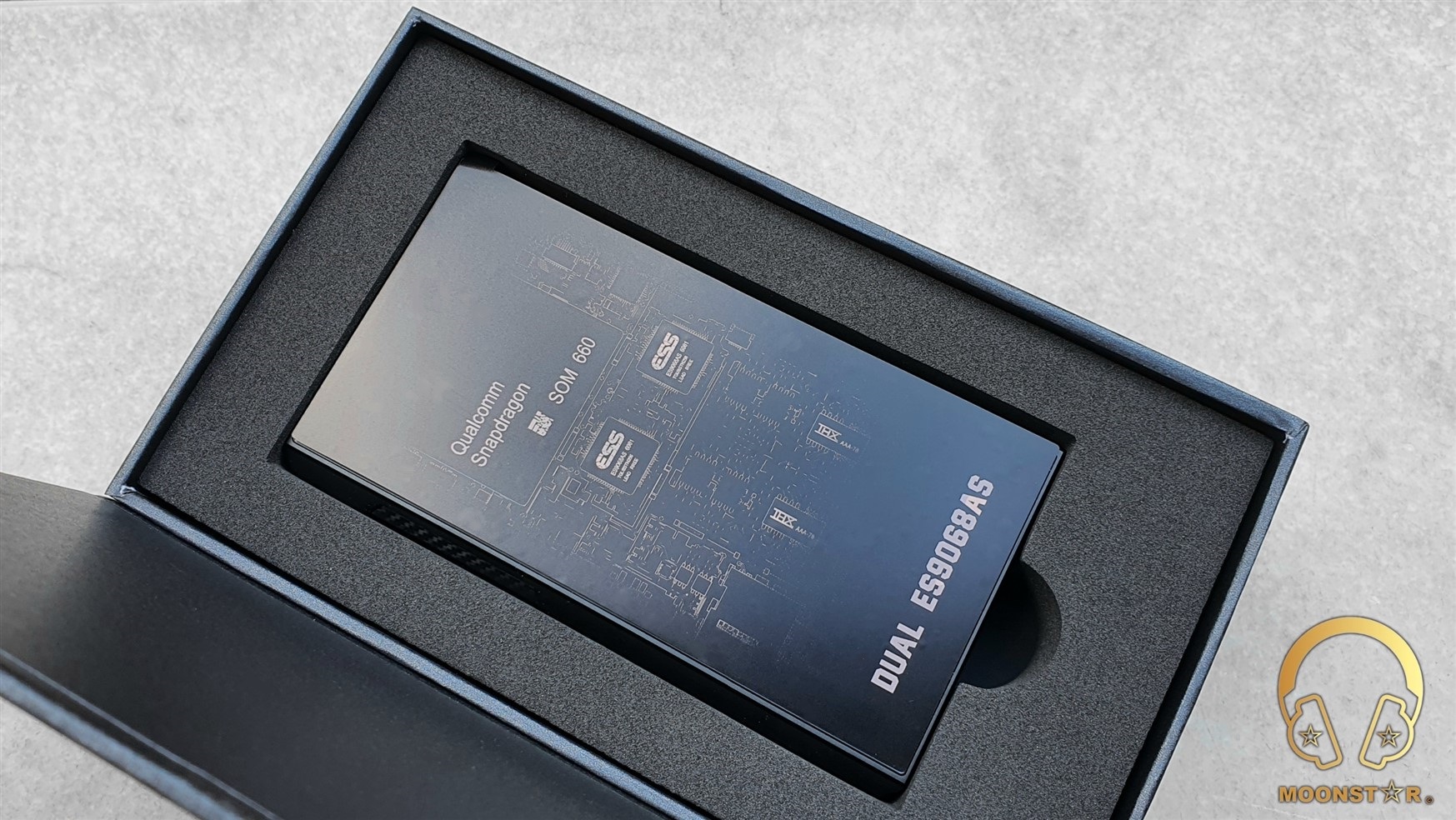
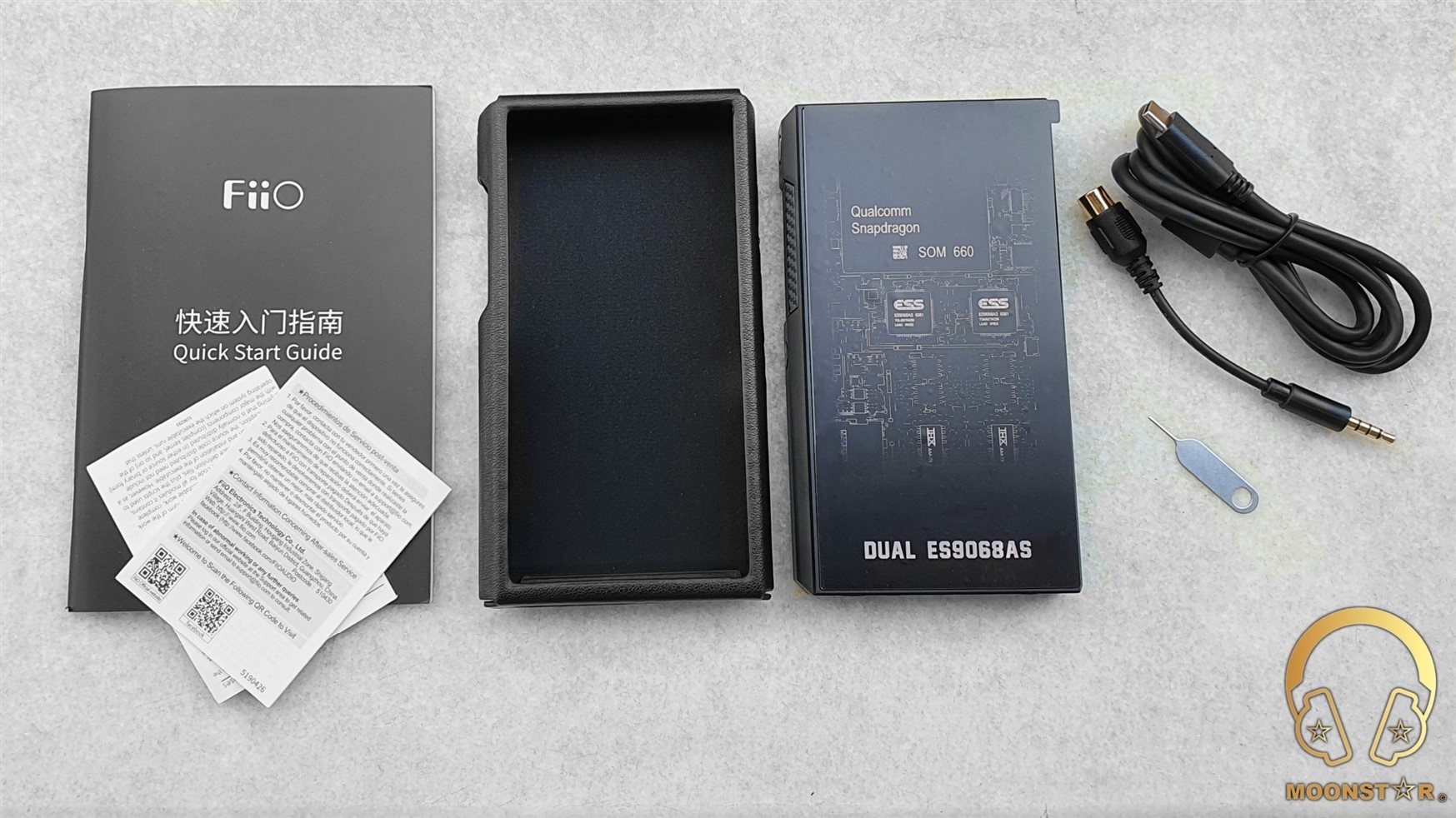
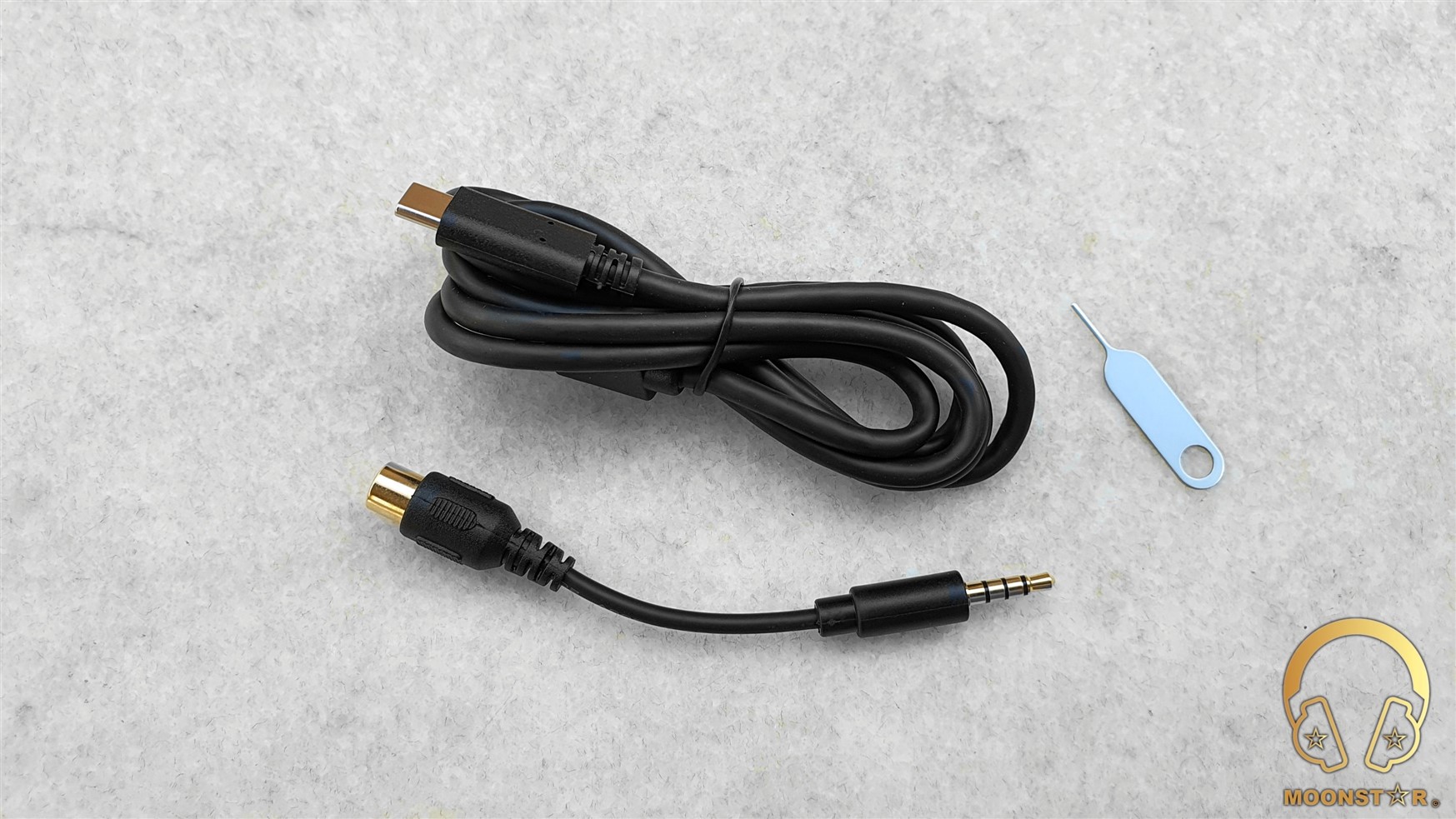
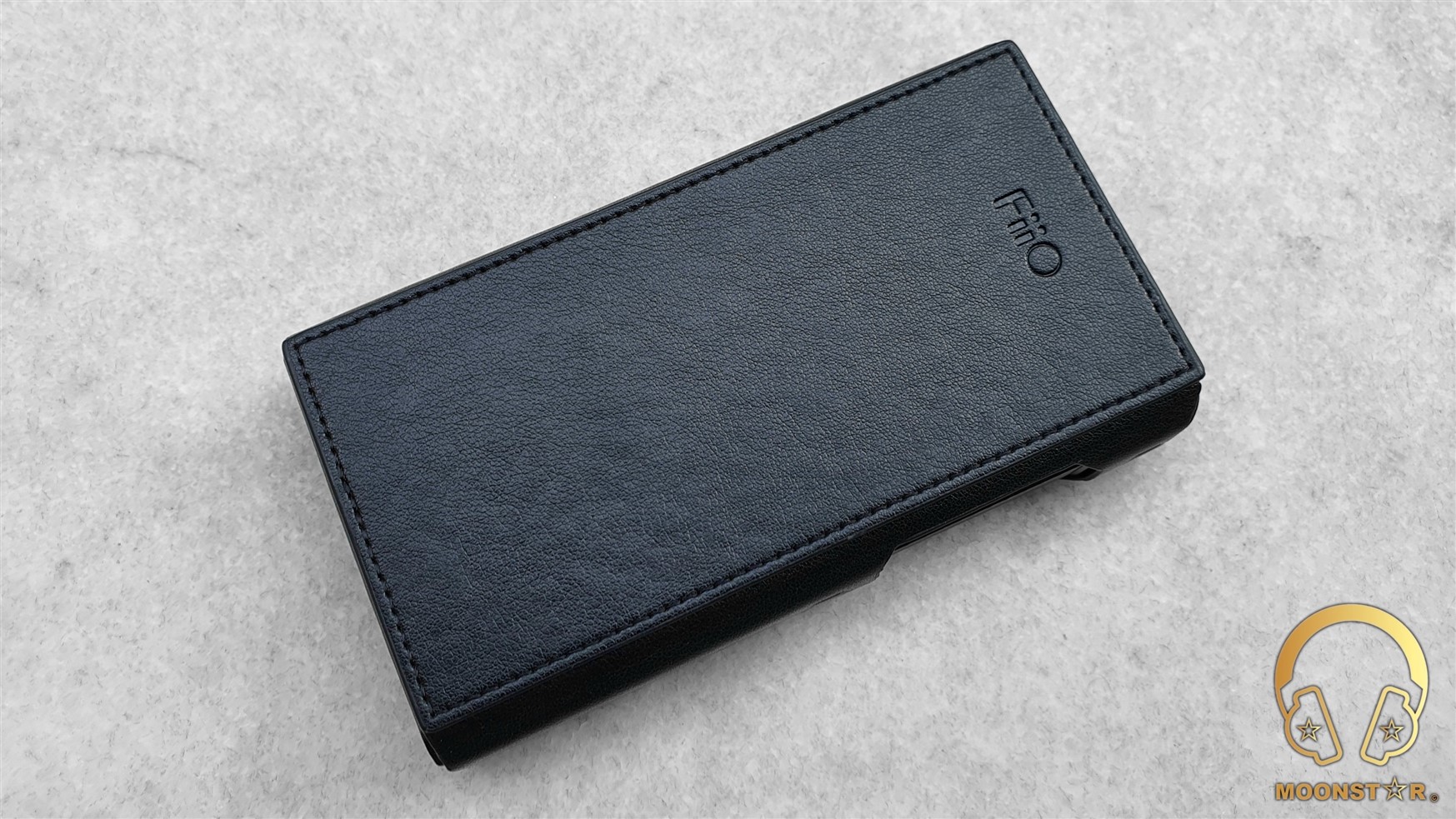
Design & Build Quality:
The M11 Plus adopts FiiO’s 6th Generation Honeycomb design, which stands out with Hexagonal design elements with aggressive edges that gives the device nice futuristic and premium looking appearance.
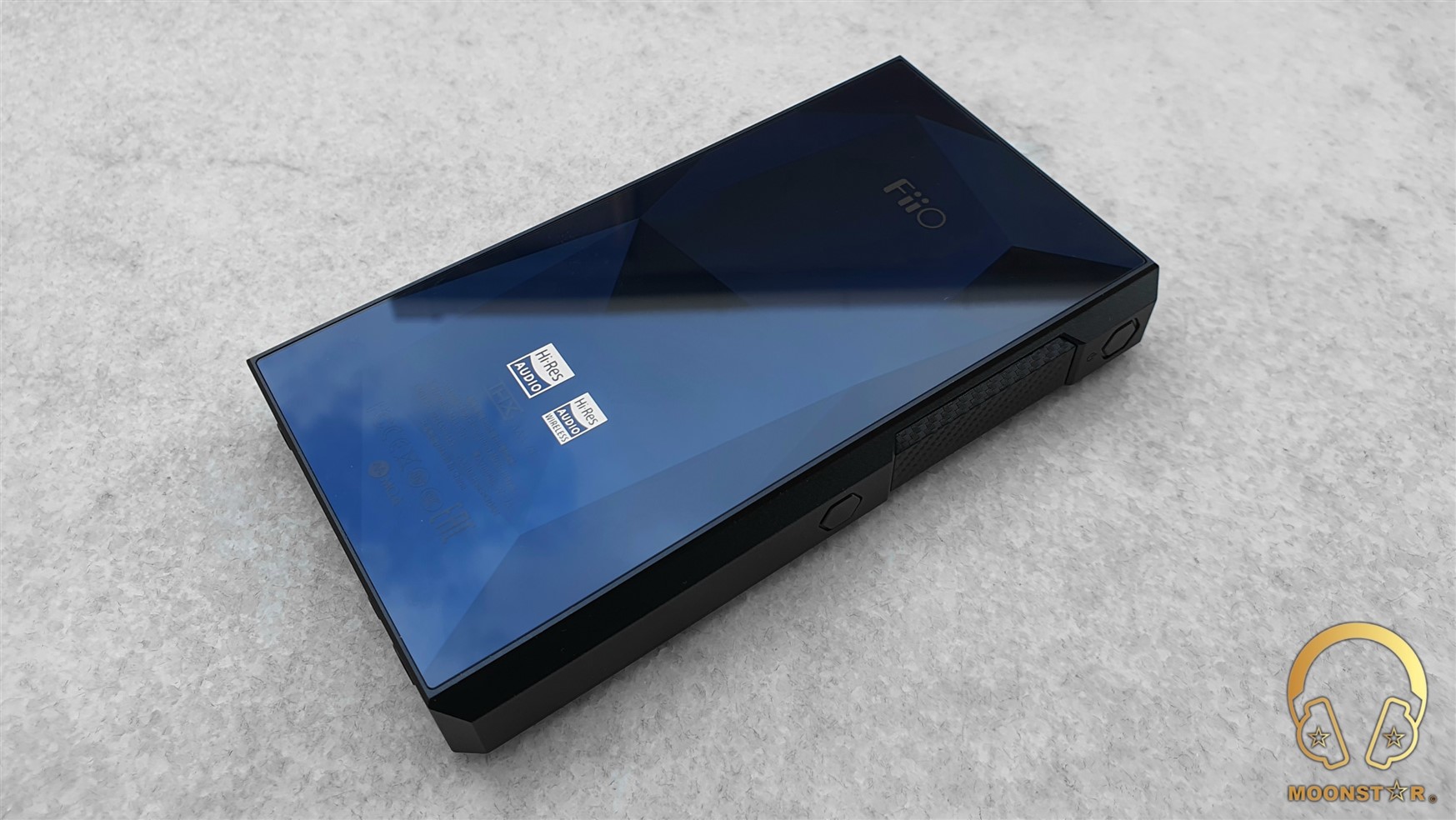
The M11 Plus has dimensions of 136.6×75.7×17.6mm and weights about 295grams, which gives you immediately an impression that you hold something solid and of high quality in your hands.
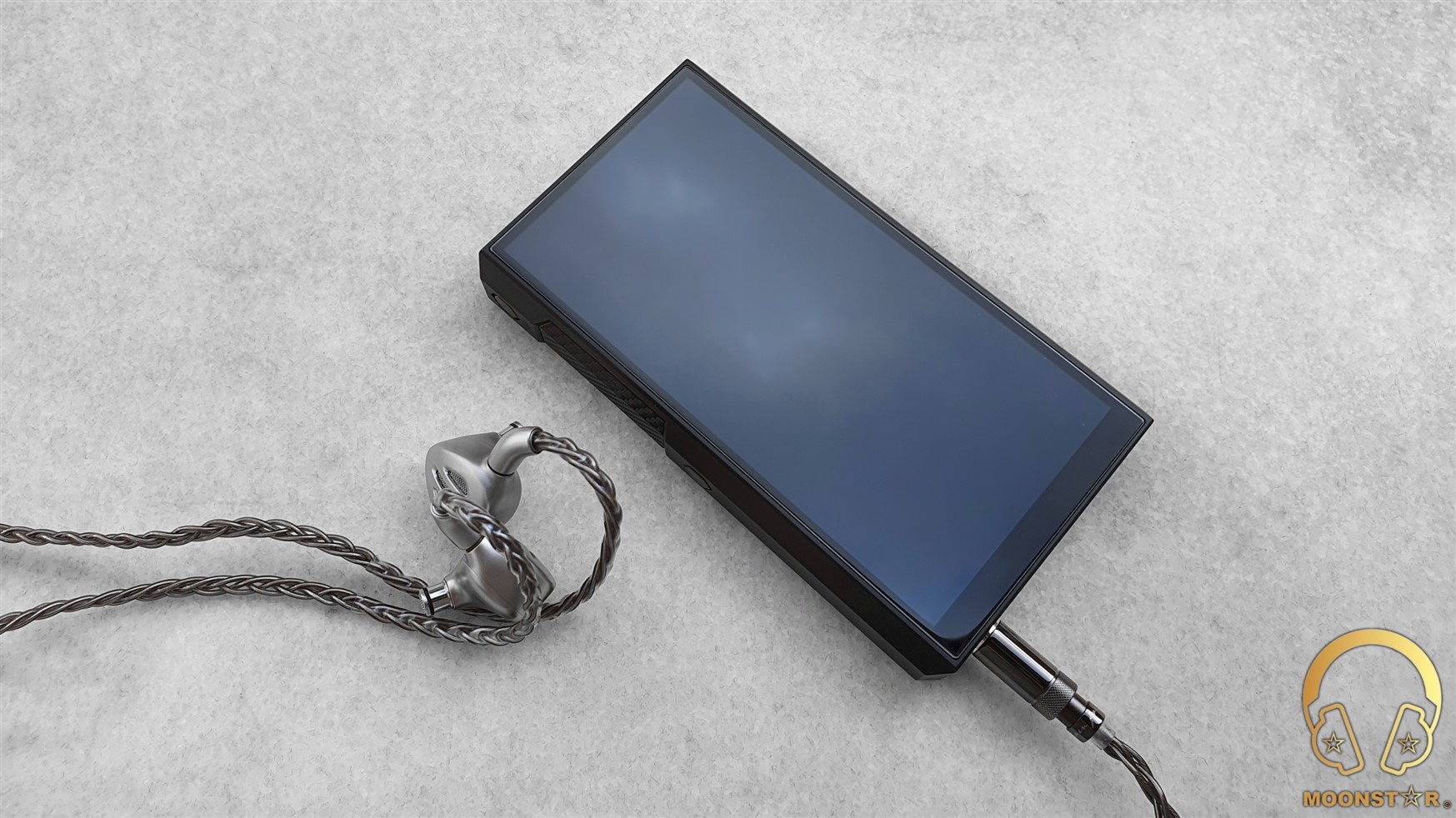
On the front of the device is a gorgeous looking 5.5’’ 18:9 touch screen with a resolution of 720*1440. The display shows a decent screen to body, which comes with a pre-installed glass screen protector that has soft edges with a 2.5D design.
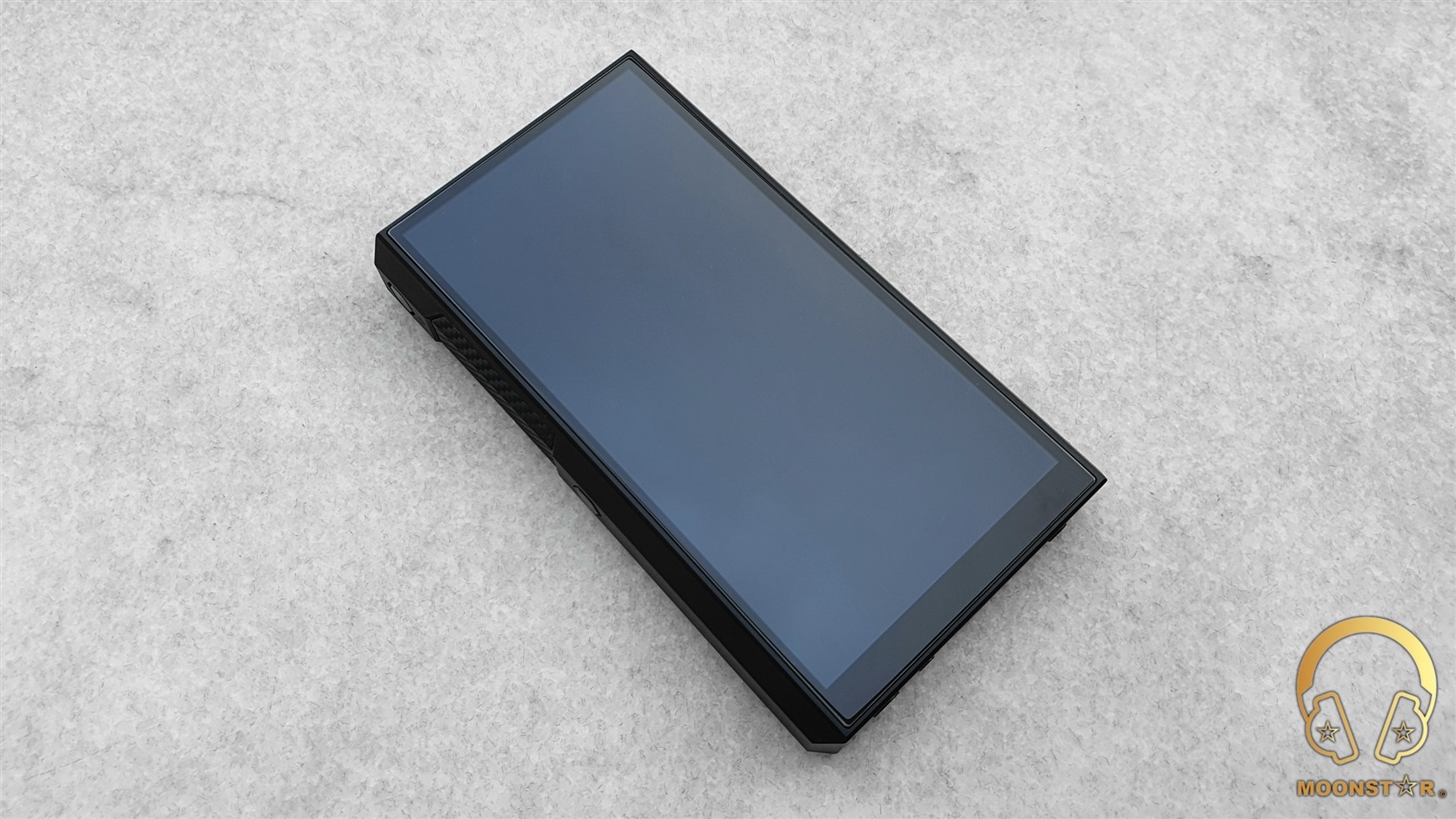
At bottom of the device is the area with many Analog & Digital interface, which features the 4.4mm (TRRRS) & 2.5mm (TRRS) Balanced outputs that do share lineout functions. Here is also a USB Type-C port that utilizes Digital Out, Data (File Transfers) and Charging functions.
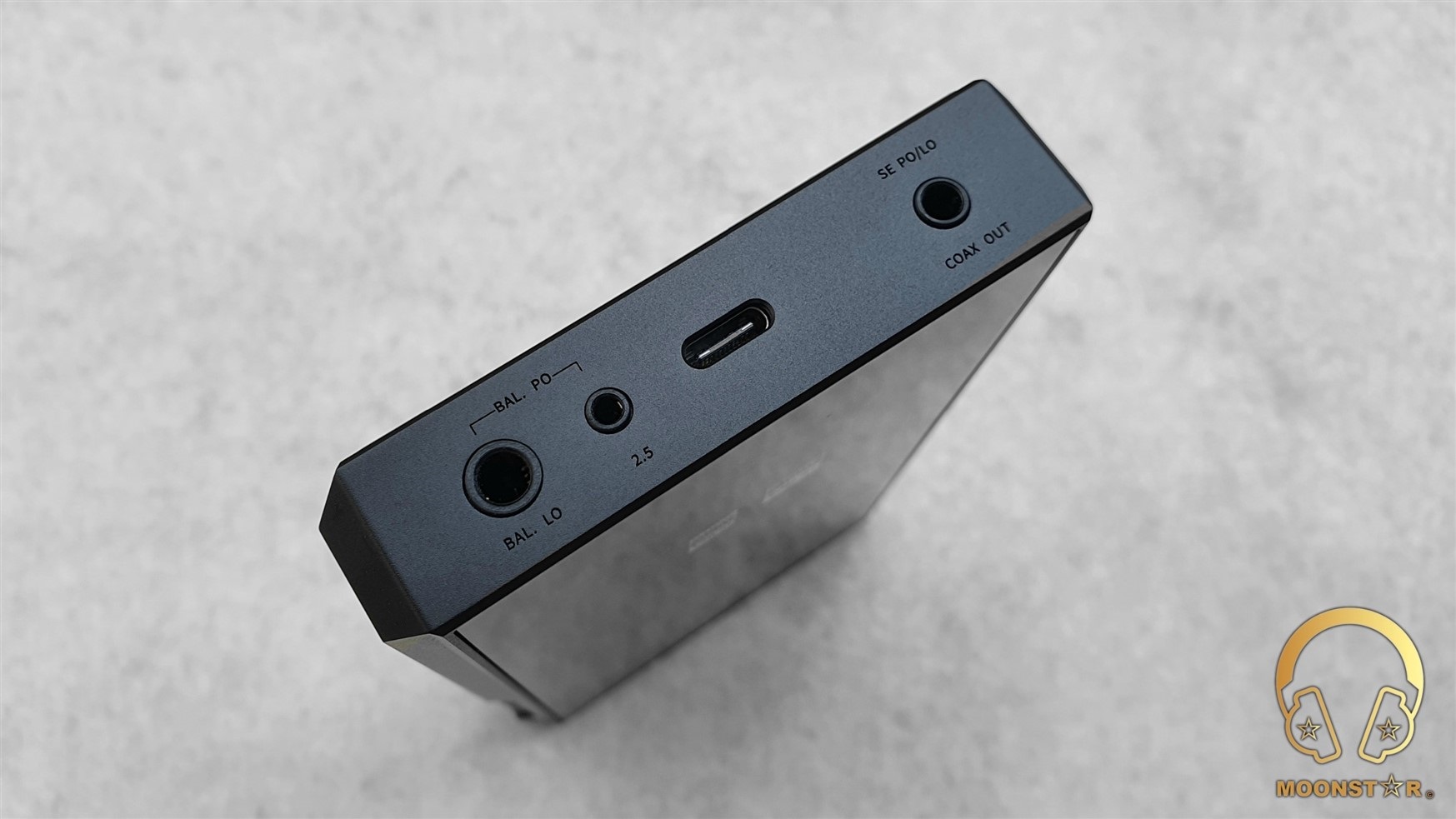
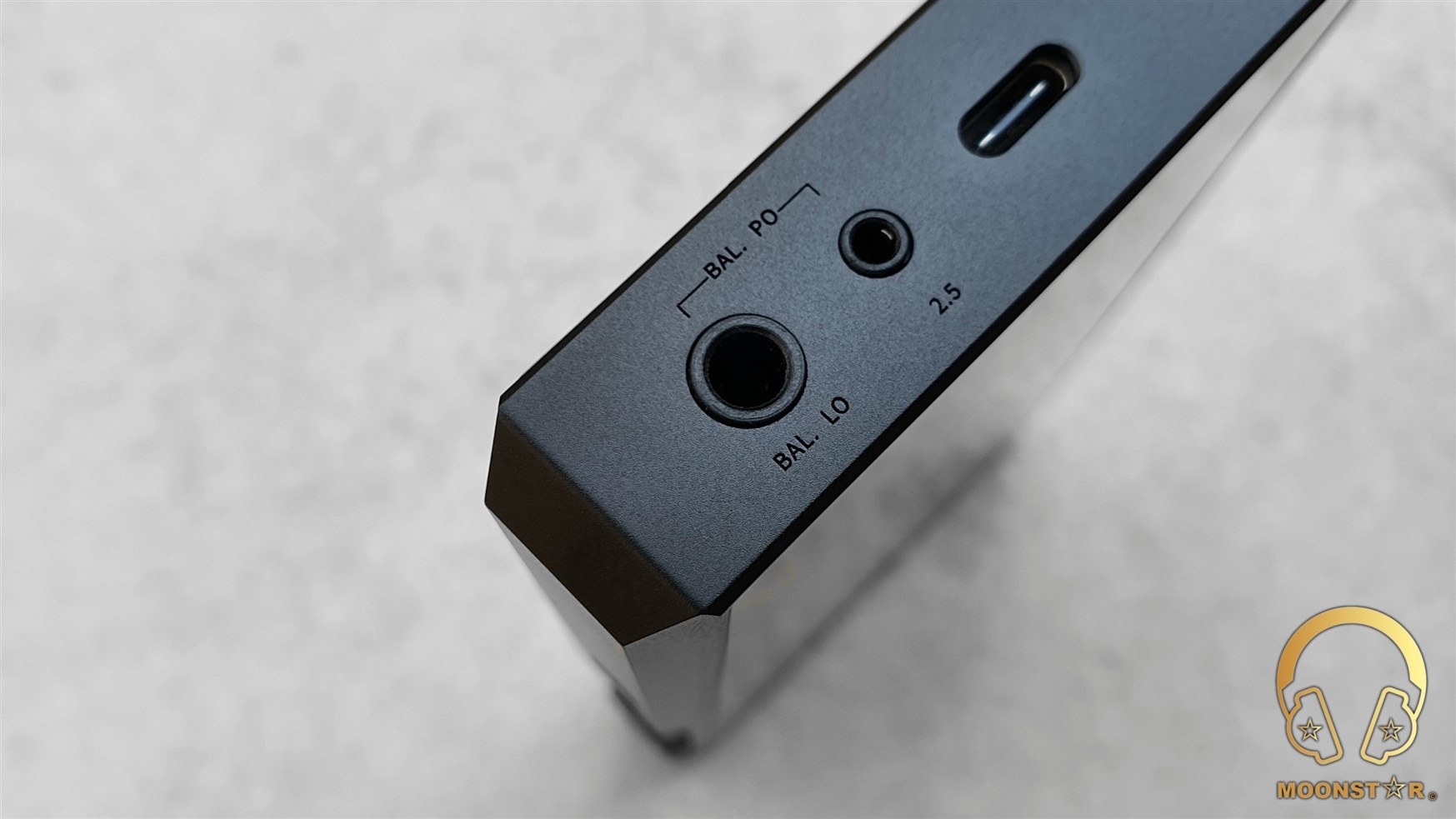
Another Analog output is the 3.5mm Single Ended headphone port that shares Phone Out, Line Out and SPDIF outputs.
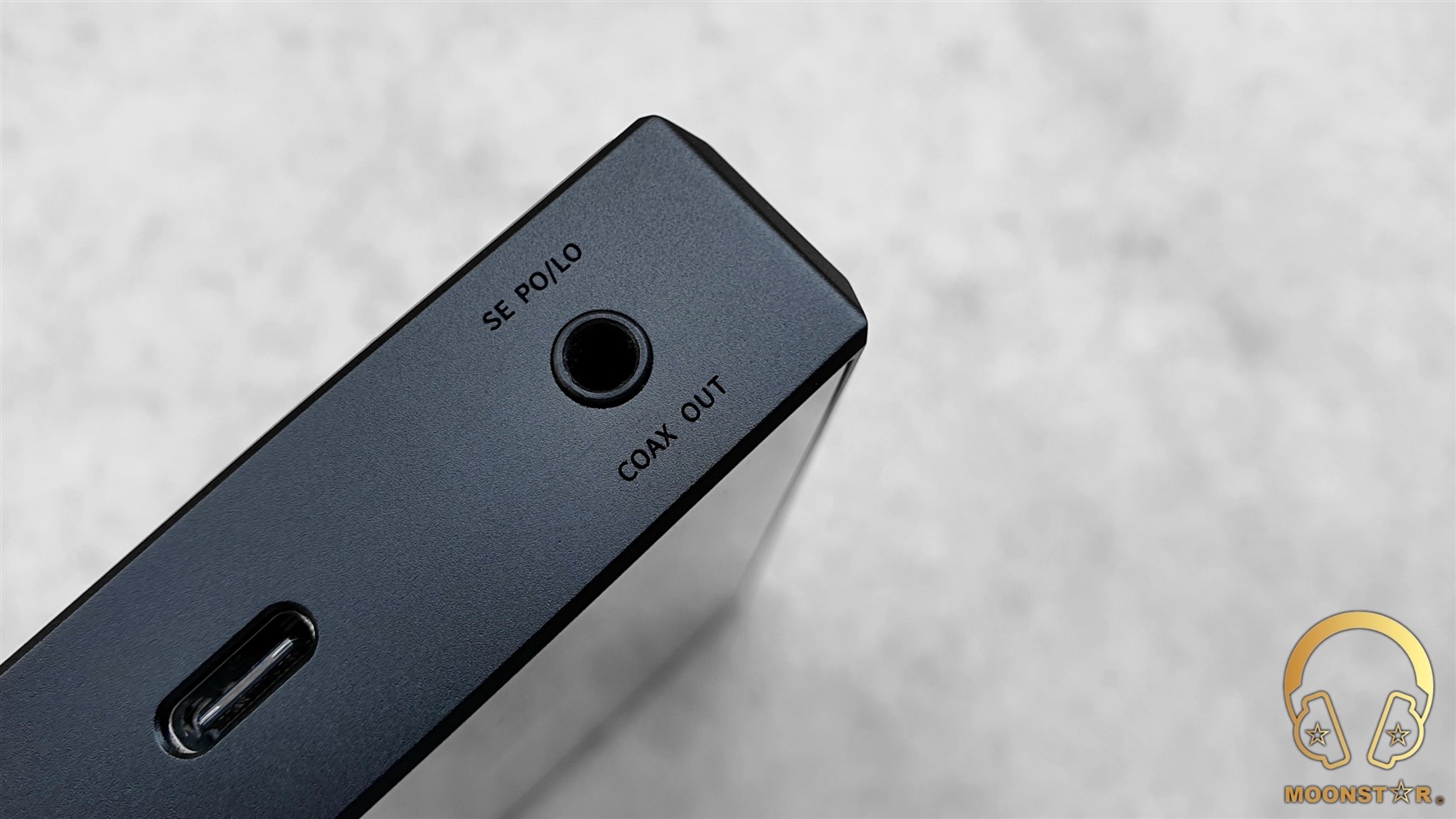
Both the Power/Lockscreen and the Multifunctional button do have hexagonal design, while the Power/Lockscreen button has a nice LED status indicator around the edges.
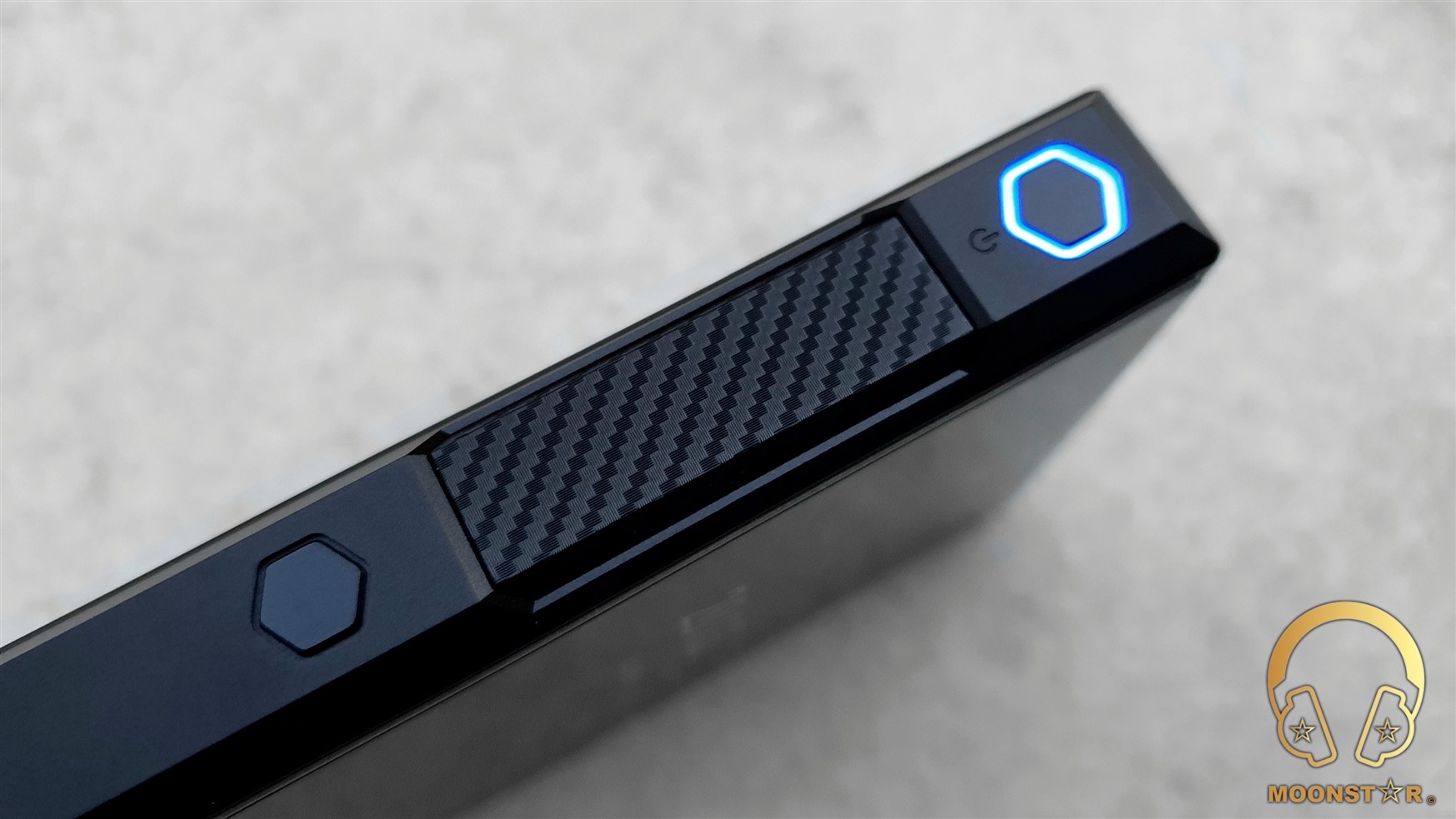
Here is also FiiO’s unique “all-in-one volume button + touch panel”, which has a beautiful looking carbon fibre surface. FiiO improved this innovative design that was used on the M11 Plus LTD with a Carbon Fiber design that offers now a more comfortable and precise volume adjustment.
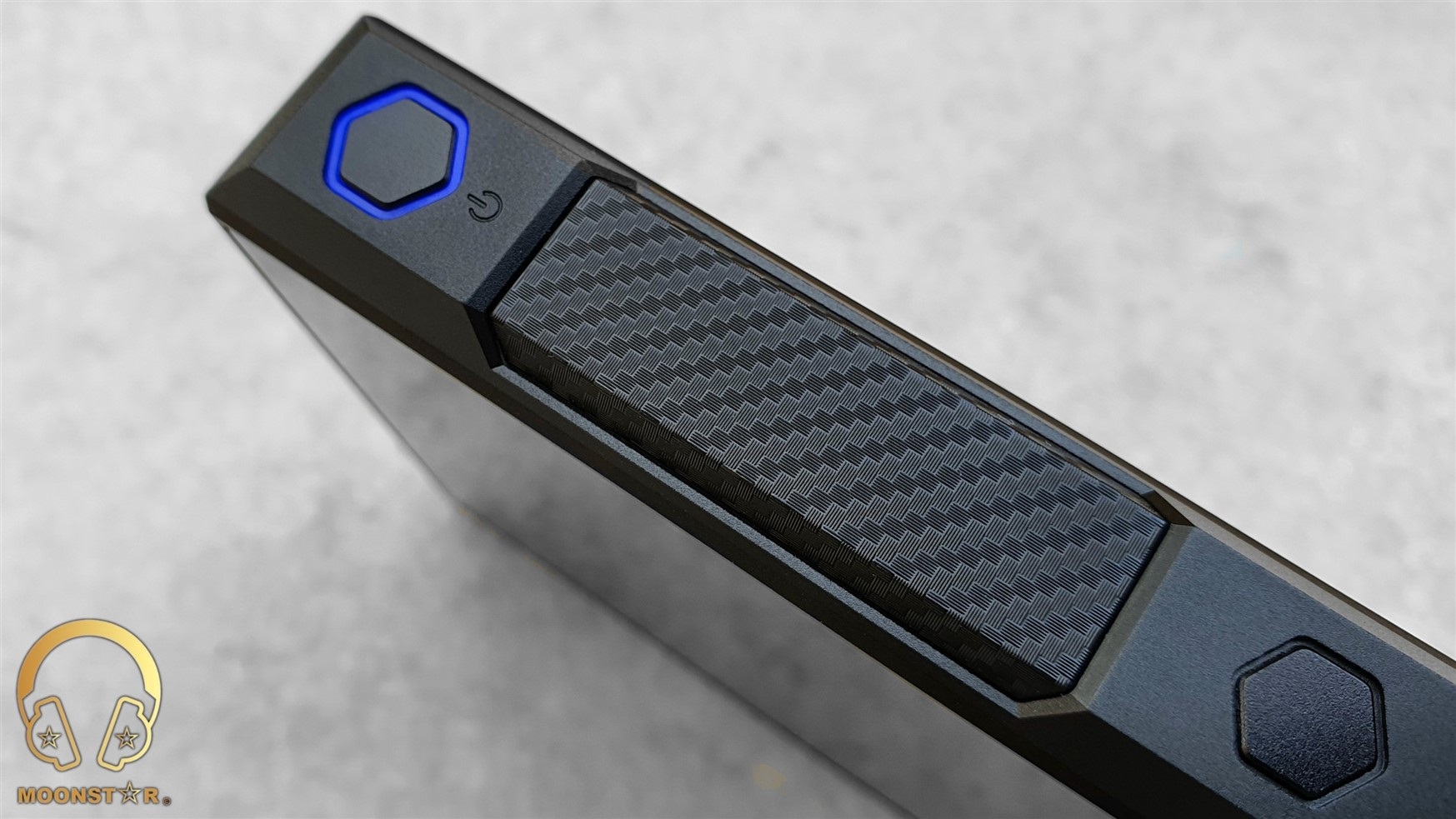
This interface supports both touch sensitive and mechanical actions for a precise volume up & down adjustment.
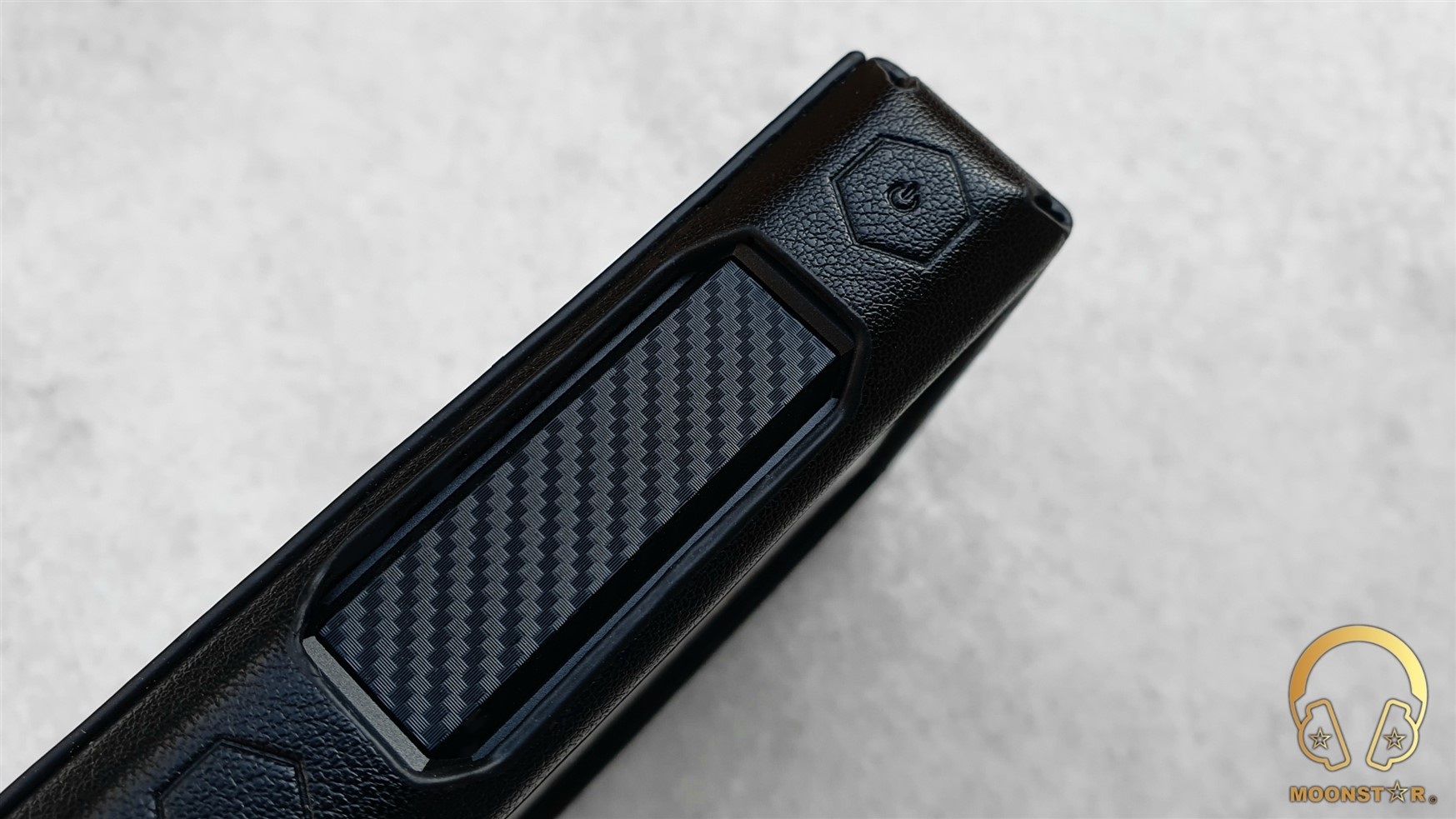
The right surface of the M11 Plus features a Hold Switch and 3 more buttons that are dedicated for actions like Play/Pause, Next and Previous track.
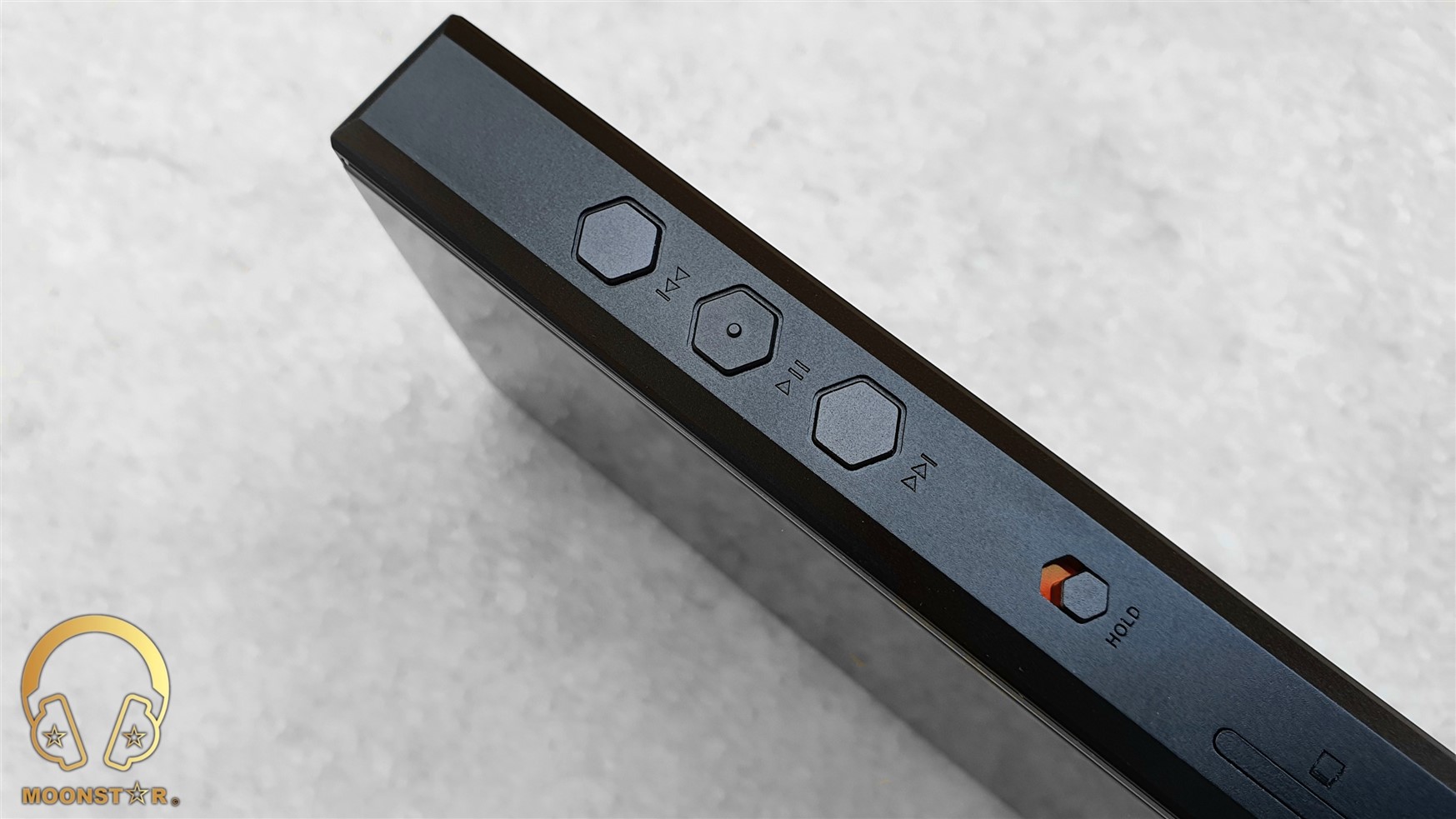
Here you can find a single micro SD card slot for storage expansion that supports storage cards with theoretically up to 2TB.
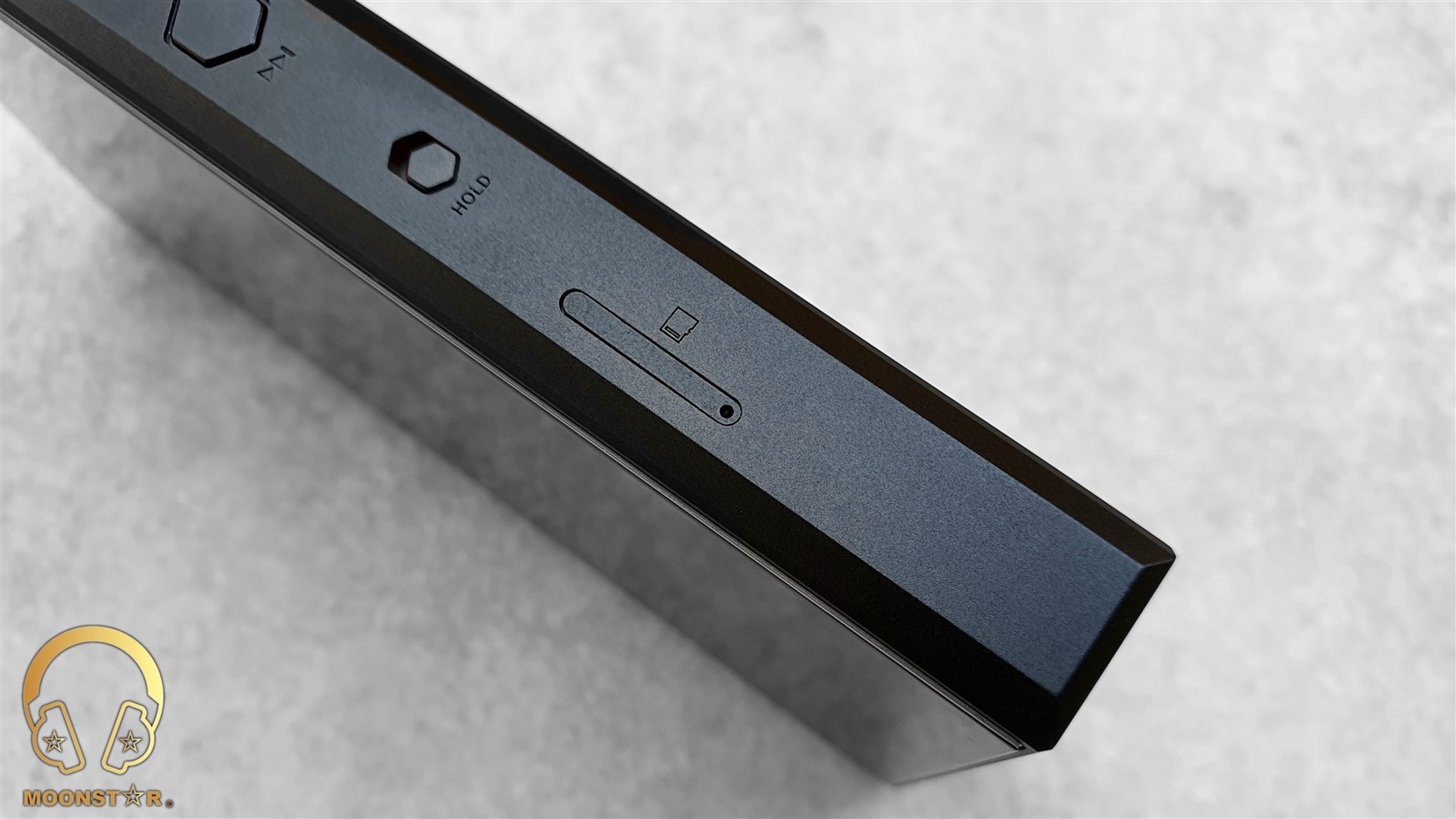
The rear side of the M11 Plus features a glass panel with a “Diamond Cut Textured” surface, which shows multiple colour effects from different angles.
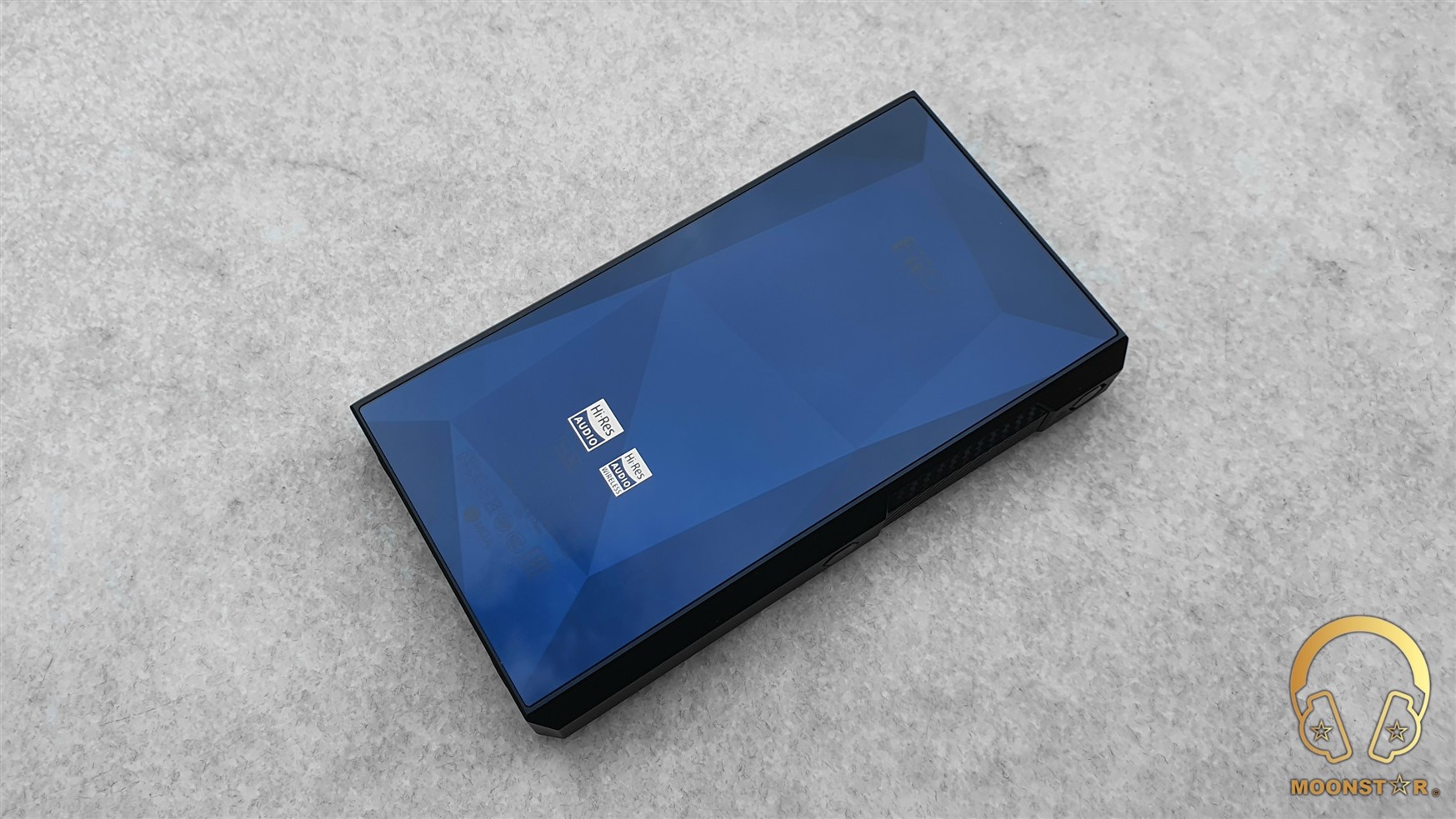
The device looks very robust any doesn’t show any imperfections like gaps, burrs or any openness, etc.
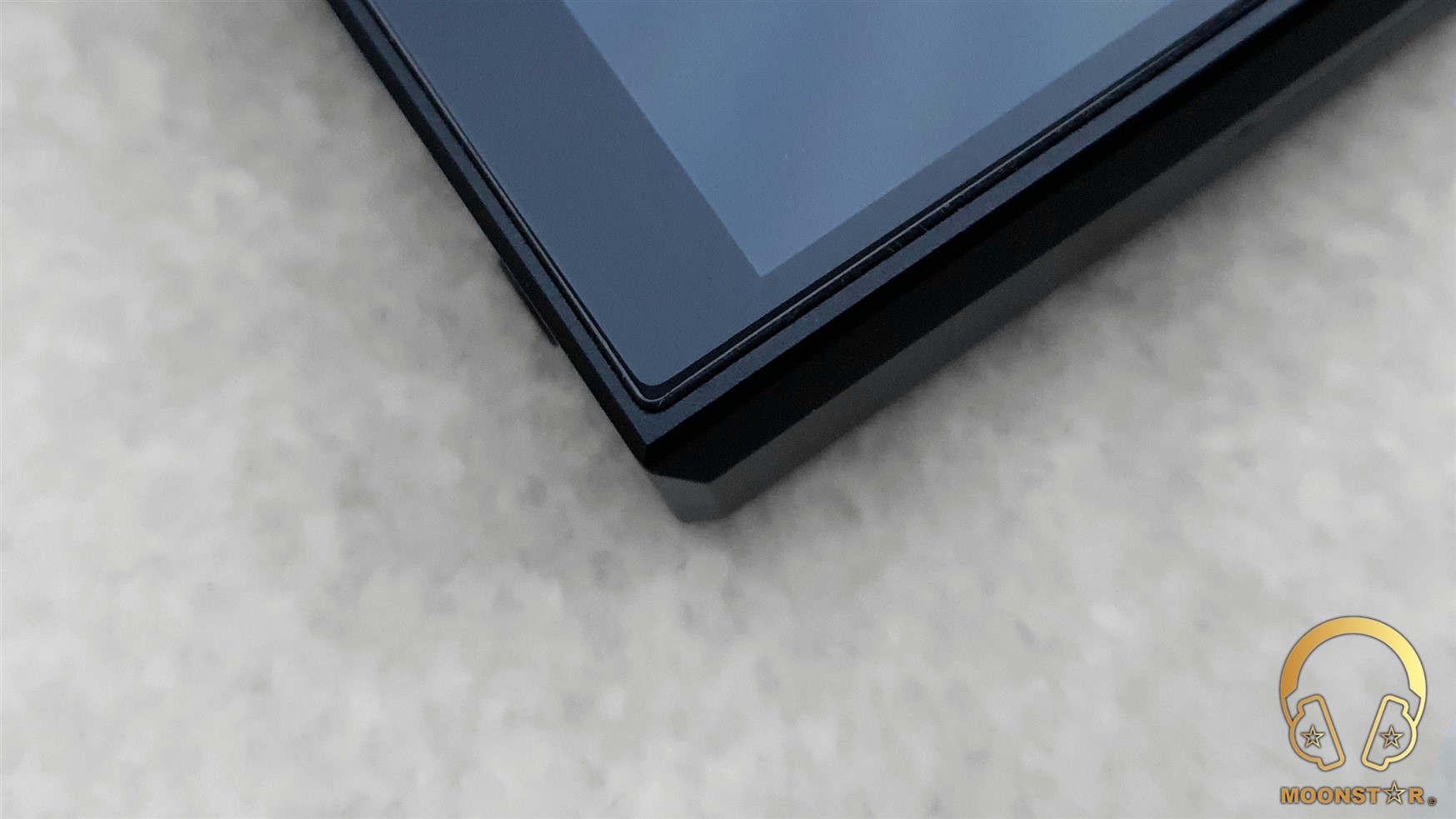
Some Technical Specifications:
- DAC : 2x ES9068AS
- CPU Model : Snapdragon 660 Octa-Core
- USB : XMOS XUF208
- Crystal Oscillator : 2x NDK Femtosecond Crystal Oscillator
- AMP : 2x THX AAA-78
- RAM : 4GB
- ROM : 64GB (46GB free 18GB reserved for OS)
- Screen : 5.5 inches (720*1440)
- Digital Out : USB Type-C
- Analog Outputs : 3.5mm Output for LO, PO & SPDIF, 2.5mm & 4.4mm Balanced Out
- Phone Out Power : 206mW @ 32 Ohm
- Balanced Out Power : 588mW @ 32 Ohm
- Output Impedance : ≤1Ω Single Ended / ≤2Ω Balanced
- Frequency Response : 5Hz – 90kHz (-5dB)
- THD+N : < 0.0006% (A-wt.)
- Noise Floor : <2µV Single Ended / < 3 µV Balanced
- Wi-Fi : 2.4 GHz & 5.0 GHz
- Bluetooth SoC : QCC5124
- Bluetooth Standard : 5.0
- Bluetooth Two-Way : SBC/AAC/APTX/APTX-HD/LDAC
- Battery : 6000mAh Li-polymer
- Battery Life : up to 14 Hours Single-Ended Output / 11.5 Hours Balanced Output
- Quick Charge Time : About 3 Hours (QC4.0)
- Dimensions : ~136.6×75.7×17.6mm
- Weight : about 295g
Supported Audio Formats:
The FiiO M11 Plus supports almost any traditional and modern audio format including MQA up to 8x unfold.
The full list of supported audio formats is below;
- DSD:DSD64/128/256(“.iso”,“.dsf”,“.dff”),DST iSO
- DXD:352.8K/24bit
- APE FAST/High/Normal:384kHz/24bit(MAX)
- APE Extra High:192kHz/24bit(MAX)
- APE Insane:96kHz/24bit(MAX)
- Apple Lossless:384kHz/32bit(MAX)
- AIFF:384kHz/32bit(MAX)
- FLAC:384kHz/32bit(MAX)
- WAV:384kHz/32bit(MAX)
- WMA LOSSLESS:96kHz/24bit(MAX)
- MP3,OGG,WMA,AAC, etc.
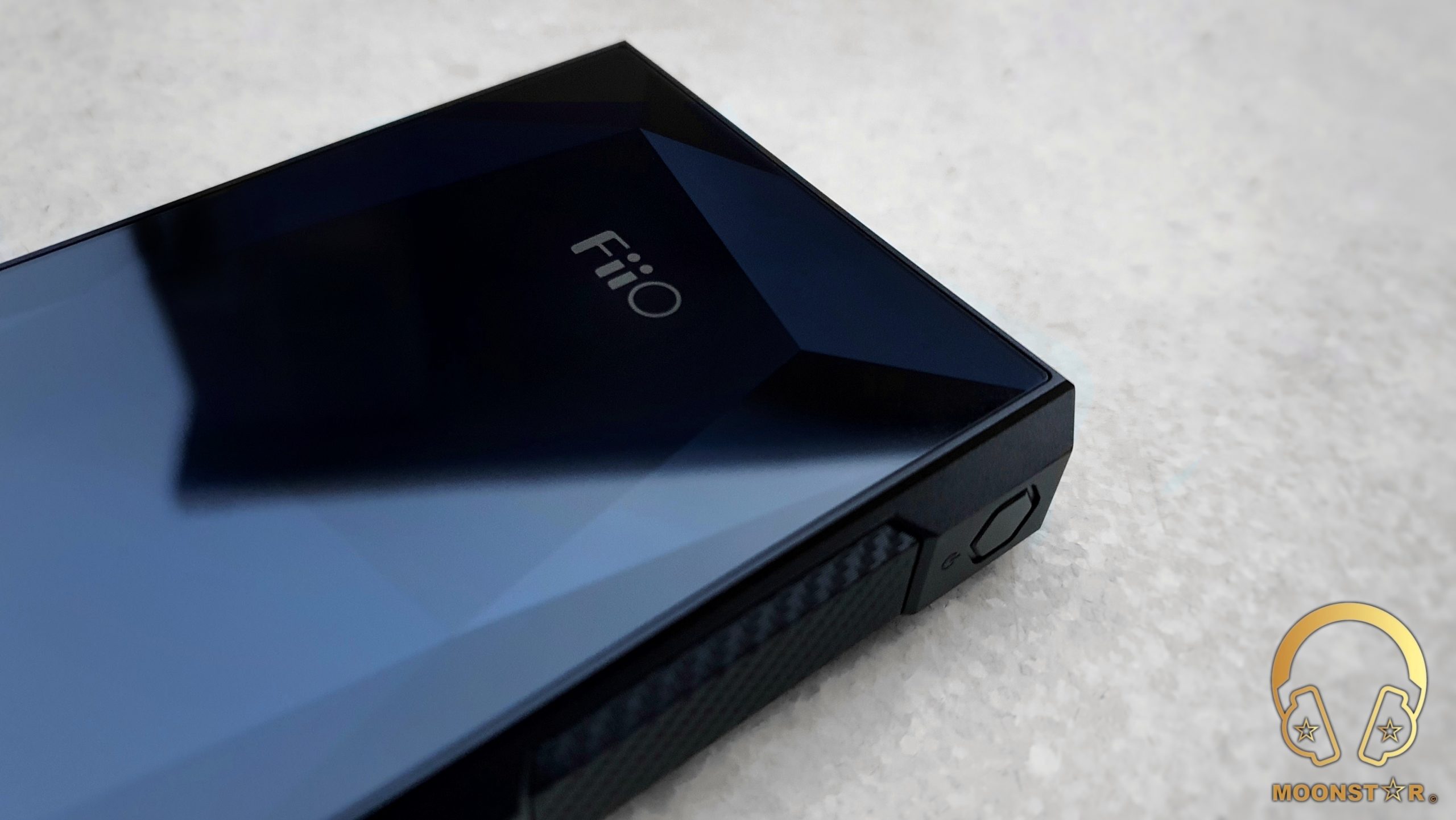
Hardware & Software Features:
The FiiO M11 Plus is a modern and advanced Portable DAP (Digital Audio Player) that features some impressive hardware and software specs, which I will now review for you.
A) ES9068AS DAC Chip & USB DAC Function:
FiiO has brought several updates with the new M11 Plus ESS variant. They not only have switched the DAC chipset from AK4497*2 to ES9068AS*2 DAC chips, they have also replaced the low-pass filter from OPA1662*2 to OPA927*2 matching the ESS DAC chipset. The chipset is now tuned to achieve high SNR ratings ensuring quality sound performance with cleaner background response.
It is tuned and adjusted for achieving improved performance, even better than the AKM counterpart with better Signal to Noise Ratio and Distortion ratings.
The FiiO M11 Plus offers USB DAC support that is compatible with MAC’s, Windows PC’s, Android and iOS devices. Windows PC’s do need the installation of an USB DAC driver that is available on FiiO’s website, while Android, iOS and MAC computers do not need any driver installation.
- Download link: https://www.fiio.com/Driver_Download
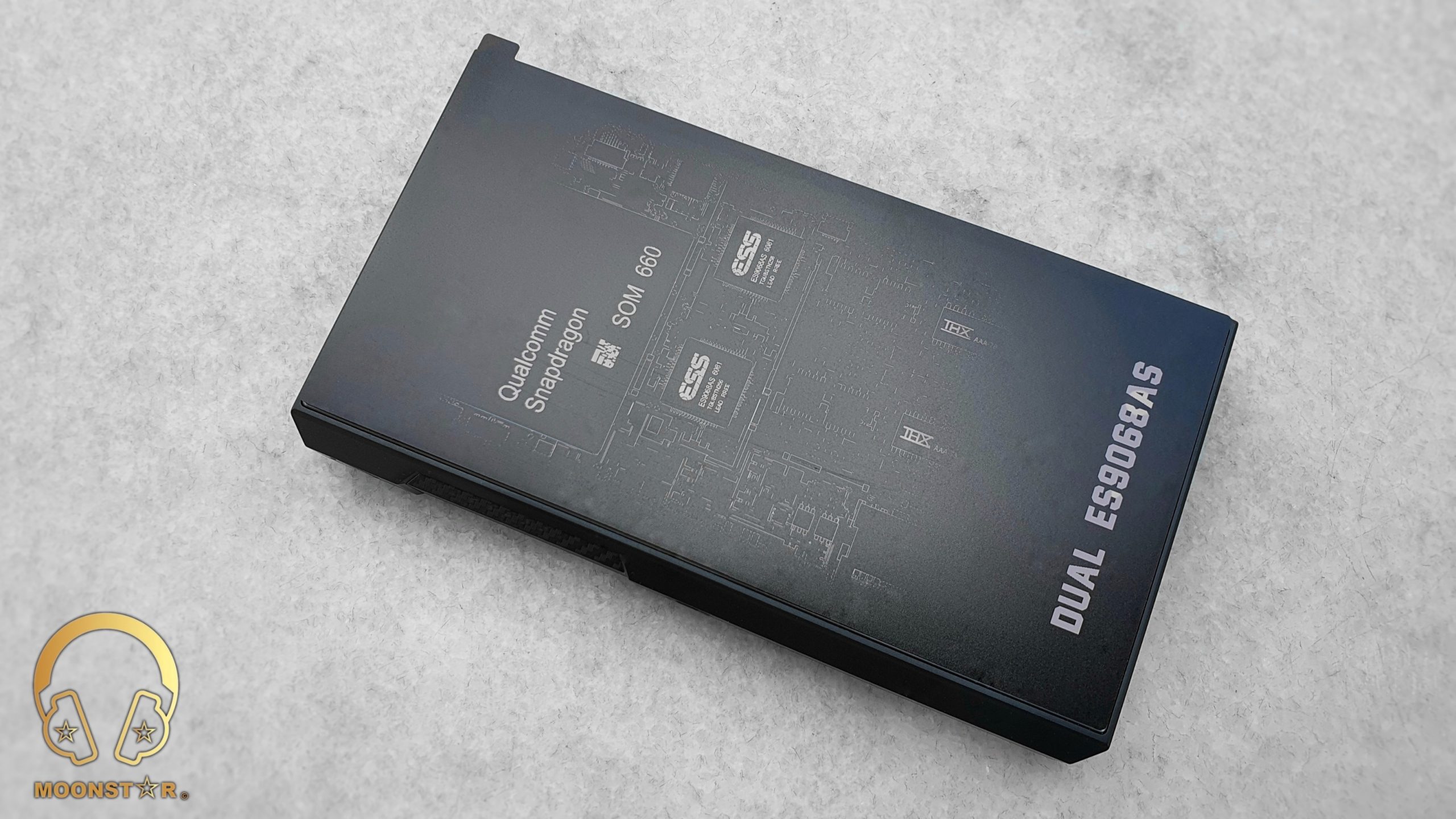
B) Snapdragon 660 CPU with Andreno 512 GPU + 4GB RAM:
The New M11 Plus is equipped with the Snapdragon 660 Octa-Core SoC that comes with a pretty capable Andreno 512 GPU, which is able to provide a smooth GUI (Graphical User Interface) for a Smartphone-Like user experience. The M11 Plus features also 4GB of RAM that will provide full functionality with the latest Android 10 OS.
The 18 GB of the internal storage is reserved for the OS (Operating System) of the device, while 46 GB’s are free to store your music files or for the installation of third party applications.
The M11 Plus is equipped with a Single Micro SD Card slot for storage expansion, which supports a theoretical expansion capacity of up to 2TB.
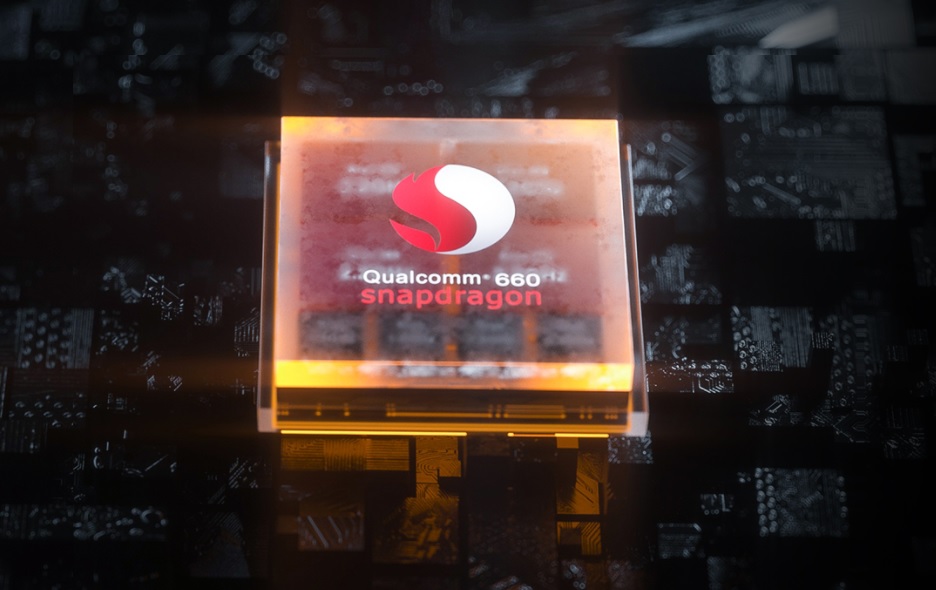
C) Outputs & Amplification:
The FiiO M11 Plus comes with the THX AAA-78 headphone amplifier module, which will deliver a higher output performance compared to the AKM variant with an output power rating of up to 660mW@32Ω of load. The Low-pass filter chip has been switched from OPA1662 to OPA927.
Here are some output specifications;
Line Out:
- THD+N : SE ≤0.0006%(1kHz/10kΩ)/ Balanced ≤0.0004%(1kHz/10kΩ)
- SNR : SE ≥118dB(dbA)/ Balanced ≥125dB(dbA)
- Crosstalk : SE ≥105dB(1kHz/10kΩ)/ Balanced ≥104dB(1kHz/10kΩ)
- Frequency response : SE 20Hz~50kHz (-0.5dB)/ Balanced 20Hz~50kHz(-0.5dB)
- Noise floor : SE ≤2.5μV(dbA)/ Balanced ≤2μV(dbA)
- Line Out level : SE 2.0V(1kHz/10kΩ)/ Balanced3.0V(1kHz/10kΩ)
3.5mm Headphone Out (@ High Gain):
- THD+N : ≤0.00054%(1kHz/32Ω)
- SNR : ≥122dB(dbA)
- Frequency response : 20Hz~20kHz(-1dB)
- Noise floor : ≤2.5μV(dbA)
- Output Impedance : ≤1Ω(32Ω)
- Output Power : ≥300mW @16Ω / ≥210mW @32Ω / ≥33mW @300Ω (THD+N<1%)
- Crosstalk : ≥76dB(1kHz/32Ω)
4.4mm & 2.5mm Balanced Out (@ High Gain):
- THD+N : ≤0.00085%(1kHz/32Ω)
- SNR : ≥126dB(dbA)
- Frequency response : 20Hz~80kHz(-1dB)
- Noise floor : ≤2.5μV(dbA)
- Output Impedance : ≤2Ω(32Ω)
- Output Power : ≥400mW @16Ω / ≥ 660mW @32Ω / ≥90mW @300Ω (THD+N<1%)
- Crosstalk : ≥111dB(1kHz/32Ω)
The recommended headphone impedance for the M11 Plus is 16~150Ω for the 3.5mm Single Ended headphone output and 16~300Ω for the 2.5mm + 4.4mm Balanced outputs.
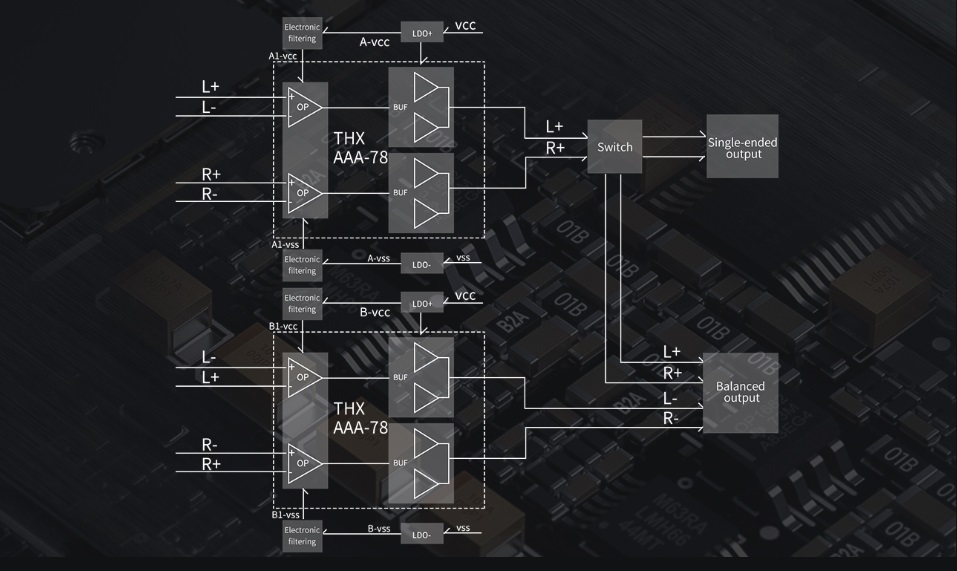
D) Wireless Connectivity:
The FiiO M11 Plus features a build in Wi-Fi antenna which supports the 802.11 b/g/n/ac protocols and 2.4GHz and 5.0 GHz frequency standards. The download speed, connectivity range and stability is the best I have experienced to date with a Digital Audio Player and performs pretty close to modern mobile phones.
The M11 Plus utilizes also Qualcomm’s QCC5124 Bluetooth SoC that offers High-Res Two-Way Bluetooth support with the BT5.0 standard. This BT SoC is able to transmit HWA/LDAC/aptX HD/aptX/SBC codec’s and to receive codec’s in AAC/SBC/LDAC quality.
The M11 Plus can be connected to Bluetooth transmitting devices like a mobile phone, working as a Bluetooth DAC/Amplifier.
The stabile Bluetooth operating distance of the M11 Plus is about 10 meters when I do connect it to Bluetooth devices like the Sony WF1000XM4 or FiiO UTWS5. What I also really like about the BT connectivity of the M11 Plus is the very low latency when I do watch to YouTube or Netflix Videos.
Please note that I didn’t have heard any waterfall noise issue that could be caused by the Wi-Fi antenna and any remarkable Bluetooth connection droppings with my sample during this review.
1. AirPlay & Wi-Fi file transfer:
The FiiO M11 Plus is able to play your songs stored on PC or NAS wirelessly through DLNA, or via AirPlay with iOS devices. You can also transfer your songs wirelessly to the M11 Plus by using the Wi-Fi transfer function which is a nice addition.
2. Anti-interference Circuit Design:
The FiiO M11 Plus adopts a new internal layout with a modular circuit design that feature its own shielding cover, in order to separate interferences of the digital and analog portions. This design was created to ensure that that does parts do not interference with each other.
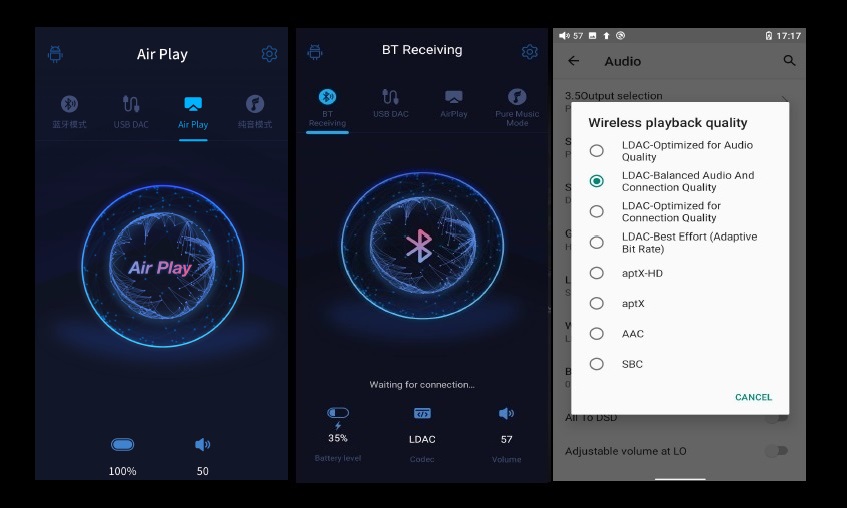
E) Battery Life:
FiiO M11 Plus ESS features a 6000mAh Li-Polymer battery, which supports Quick Charge QC3.0/4.0 that takes about 3.5 hours. The battery life of the new M11 Plus is improved from 11.5 hours on the AKM variant to up to 14 hours over the 3.5mm Single Ended output, while the 4.4mm & 2.5mm Balanced output drains the battery in around 11.5 – 12 hours.
Testing Conditions:
- Volume: 70 / Gain: Low / File: MP3 44.1 kHz/16bit / Screen: Off
2. Software & GUI:
The combination of Android 10 and relative capable Snapdragon 600 SoC + 4GB of Ram makes the FiiO M11 Plus to a DAP with a pretty fluid GUI. The fairly customized Android OS of the M11 Plus comes with pre-installed applications like Google Play Store, Chrome Browser, Gallery, Clock, Technical Support, FiiO Application Store, etc.

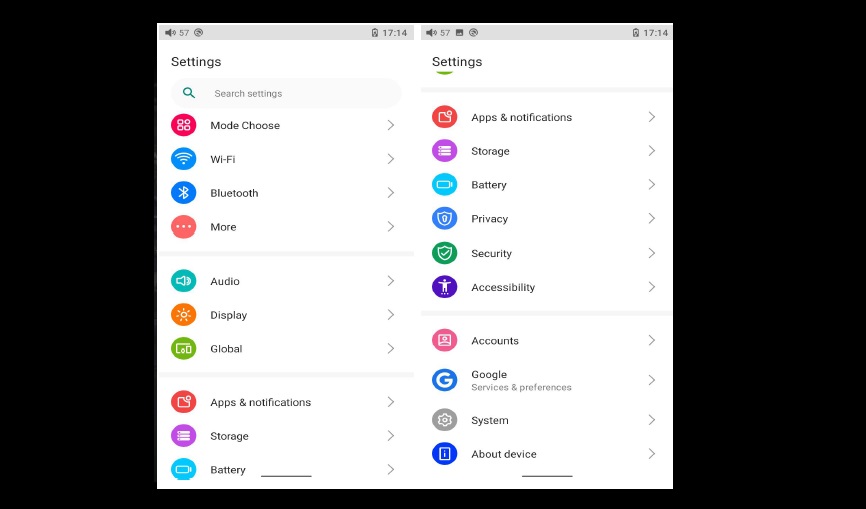
It’s great to see that Google Play Store is now pre-installed supported out of the box that gives you access to third party Streaming Services like Spotify, Tidal, Qobuz, Deezer, Apple Music and more. You can even install applications like Netflix, Amazon Prime or YouTube to watch your favorite TV shows, video clips or movies.
FiiO offers has also its own application that is called Application Store, where you can find all Music and Radio Streaming Services or Thirty Party APP Stores like APKPure, CoolApk or Yingyongao under one page.
FiiO Music Player is another highlight of the M11 Plus that comes with tons of features, settings and a very nice Graphical User Interface (GUI).
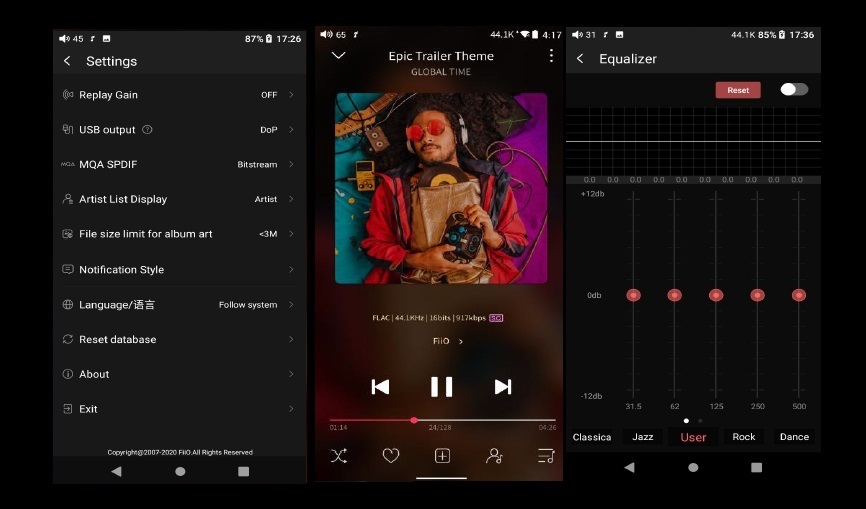
The FiiO M11 Plus supports five working modes, including Android mode, Pure Music mode, AirPlay, USB DAC mode and Bluetooth Receiving mode. The default is Android mode when the device is powered on for the first time, which can be switched to other modes on the drop-down or settings menu.
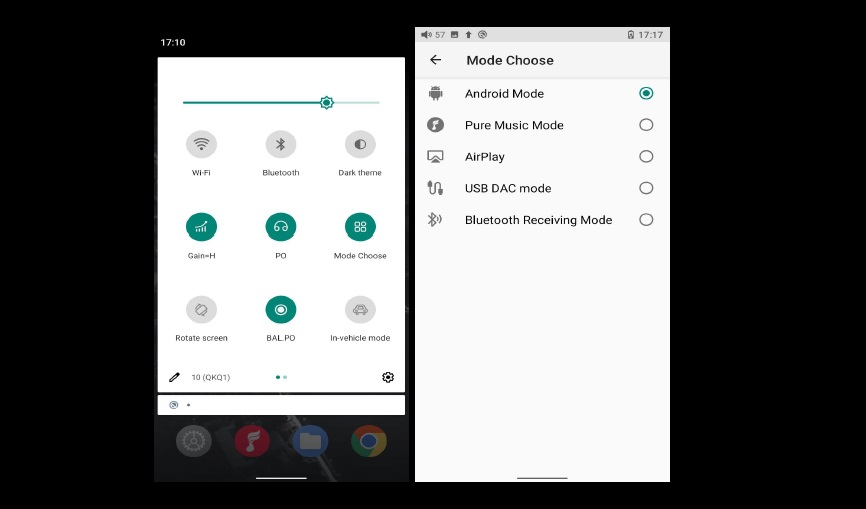
All-in all, the M11 Plus offers a very user friendly and familiar UI (User Interface) that gets constantly updates. What I also really like is the Technical Support Menu that gives you a quick access to FW Updates (OTA and Local), Quick Start Guide, Online Feedback and many more, which is a nice addition.

Full List of Remarkable Features:
- Android 10 OS
- MQA 8X Decoding Support
- ES9068AS*2 Dual DAC Chip’s
- THX-AAA 78*2 Headphone Amplifier.
- Snapdragon 660 CPU (Octa-Core)
- 6th Gen Honeycomb Design
- 5” Bezel-less Touch-Screen with 18:9 ratio
- New-Gen Interactive Intelligent Volume System with an upgraded carbon-fiber panel.
- New Digital Audio Purification System (DAPS) with Self-Developed 4th Gen FPGA+NDK Femtosecond crystal oscillators
- High-Res Two-Way Bluetooth Support (V5.0 Connectivity)
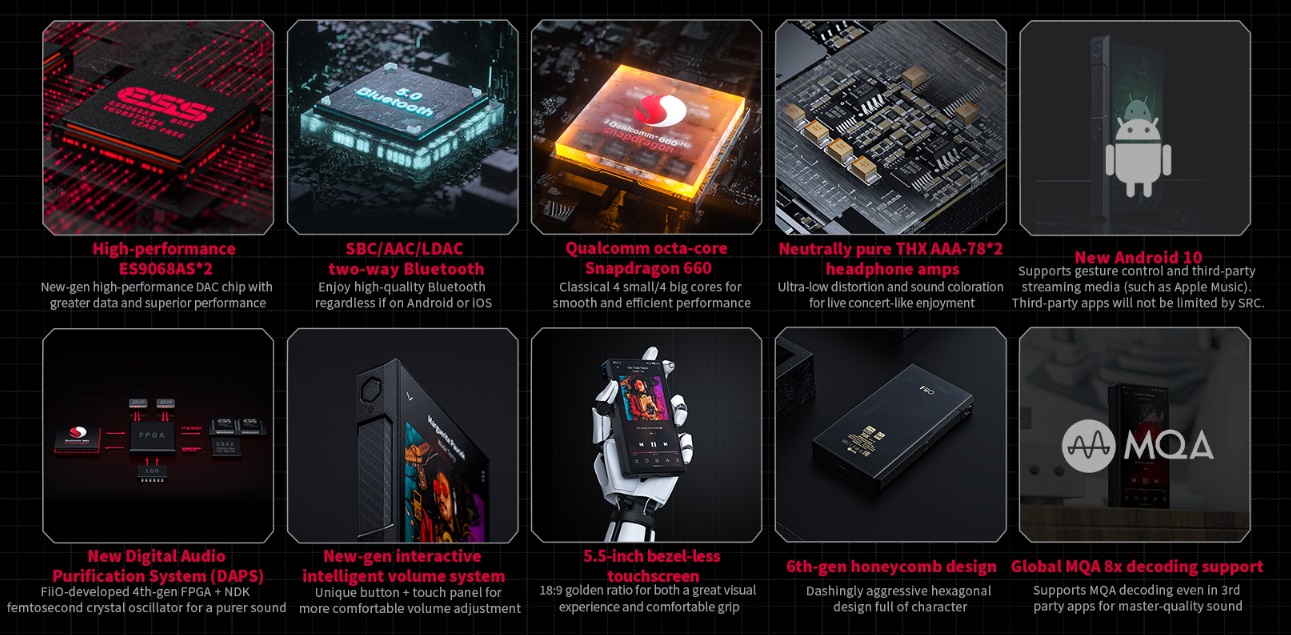
Equipment’s used for this review:
- DAP’s : FiiO M11 Plus, Sony WMA1, FiiO M11 Pro
- IEM’s : FiiO FD7, FiiO FH9, Meze Audio Rai Penta, Kinera URD, Moondrop Variations
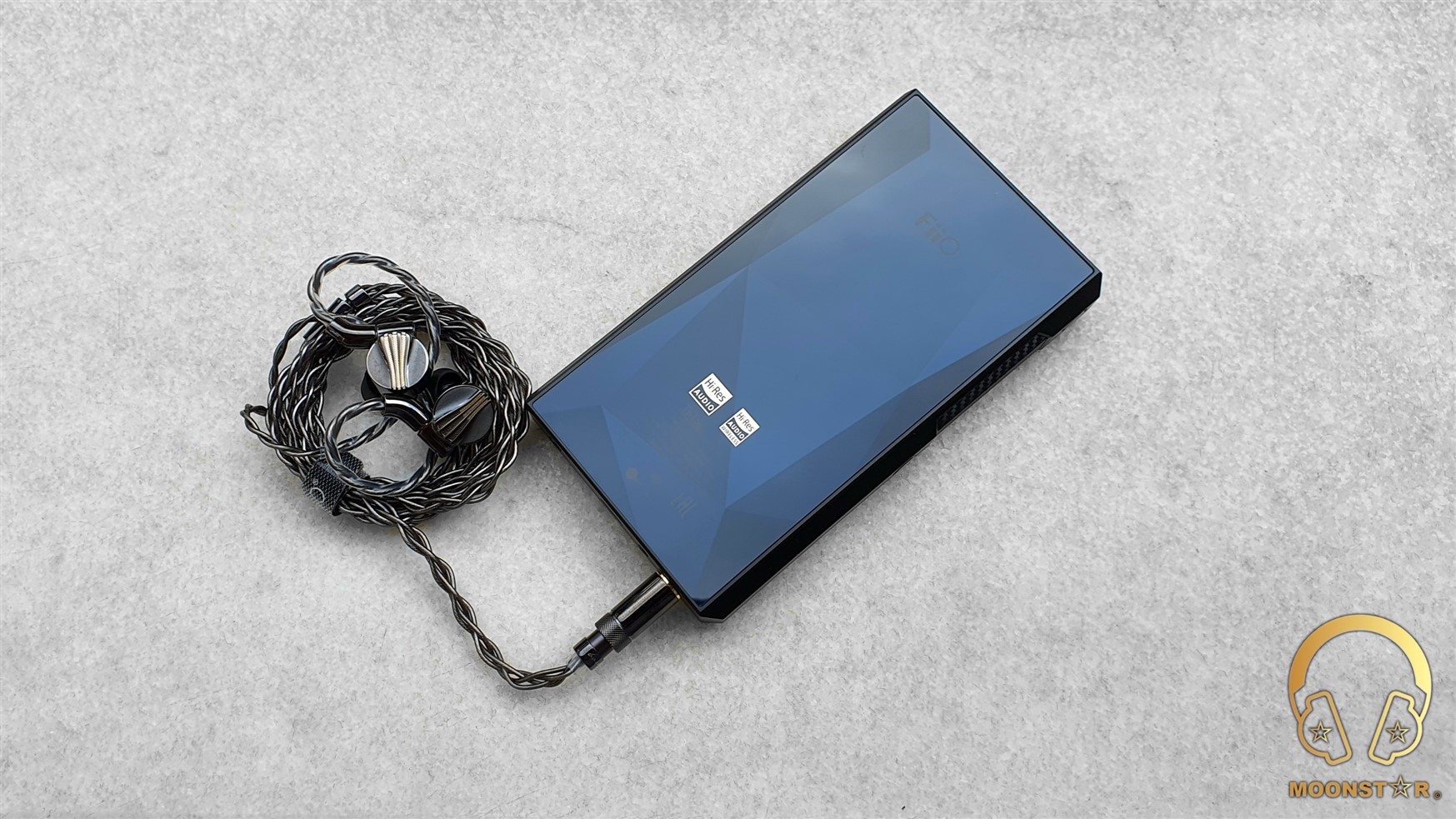
Albums & tracks used for this review:
- Adele – My Little Love (Spotify)
- Randy Crawford – On Day I Will Fly Away (Flac 16bit/44.1kHz)
- Hayley Westenra – Odyssey Album (Dezzer HiFi)
- Dionne Warwick – Walk On By (Flac 16bit/44.1kHz)
- Sarah McLachlan – Angel (Flac 24bit/48kHz)
- Sertap Erener – Aşk (Flac 16bit/44.1kHz)
- Edith Piaf – Non Je Ne Regrette Rien (Flac 16bit/44.1kHz)
- Diana Krall – So Wonderful (DSF)
- Aretha Franklin – I Say A Little Payer (Flac 24bit/96kHz)
- David Bowie – Heroes (Flac 24bit/192kHz)
- Elton John – Rocket Man ((Flac 24bit/96kHz)
- Barry White – Just The Way You Are (Flac 24bit/48kHz)
- Isaac Hayes – Walk On By (Flac 16bit/44.1kHz)
- Sting – Englishman in New York – (Flac 24bit/48kHz)
- Eric Clapton – Wonderful Tonight (Flac 24bit/96kHz)
- B.B. King – Riding With The King (Tidal Hi-Fi)
- Dave Gahan – Kingdom (Tidal Hi-Fi)
- U2 – Sunday Bloody Sunday (Flac 16bit/44.1kHz)
- Bro Safari, UFO! – Drama (Deezer HiFi)
- Armin Van Buuren – Vini Vici (Flac 16bit/44.1kHz)
- Really Slow Motion – Deadwood (Deezer HiFi)
- Jo Blankenburg – Meraki (Spotify)
- Lorde – Royal (Flac 24bit/48kHz)
- Toutant – Rebirth (Deezer HiFi)
- Portishead – It Could Be Sweet (Spotify)
- Charly Antolini – Duwadjuwandadu (Flac 24bit/192kHz)
- Michael Jackson – Billie Jean (Flac 24bit/192kHz)
- Gogo Penguin – Raven (Flac 24bit/192kHz)
- 2Cellos – With or Without You (Spotify)
- Ferit Odman – Look, Stop & Listen (Flac 24bit/192kHz)
- Chopin – Nocturn No. 20 In C-Sharp Minor (Flac 16bit/44.1kHz)
- Fazıl Say – Nazım Oratoryosu (Live) (Flac 16bit/44.1kHz)
- Vivaldi – Le QuarttroStagioni “The Four Season” (Deezer HiFi)
- Otto Liebert& Luna Negra – The River (Flac 24bit/192kHz)
- Lunatic Soul – The Passage (Flac 16bit/44.1kHz)
- Deftones – My Own Summer (Shove it) (Flac 16bit/44.1kHz)
- Metallica – Sad but True (Flac 24bit/96kHz)
- Opeth – Windowpane (Flac 16bit/44.1kHz)
- Megadeth – Sweating Bullets (Tidal Hi-Fi)
- Rush’s – Leave That Thing Alone (Flac 16bit/44.1kHz)
- Slayer – Angel of Death (Spotify)s
- Liquid Tension Experiment 2 – Acid Rain (Spotify)
- Yosi Horikawa – Bubbles (Spotify)
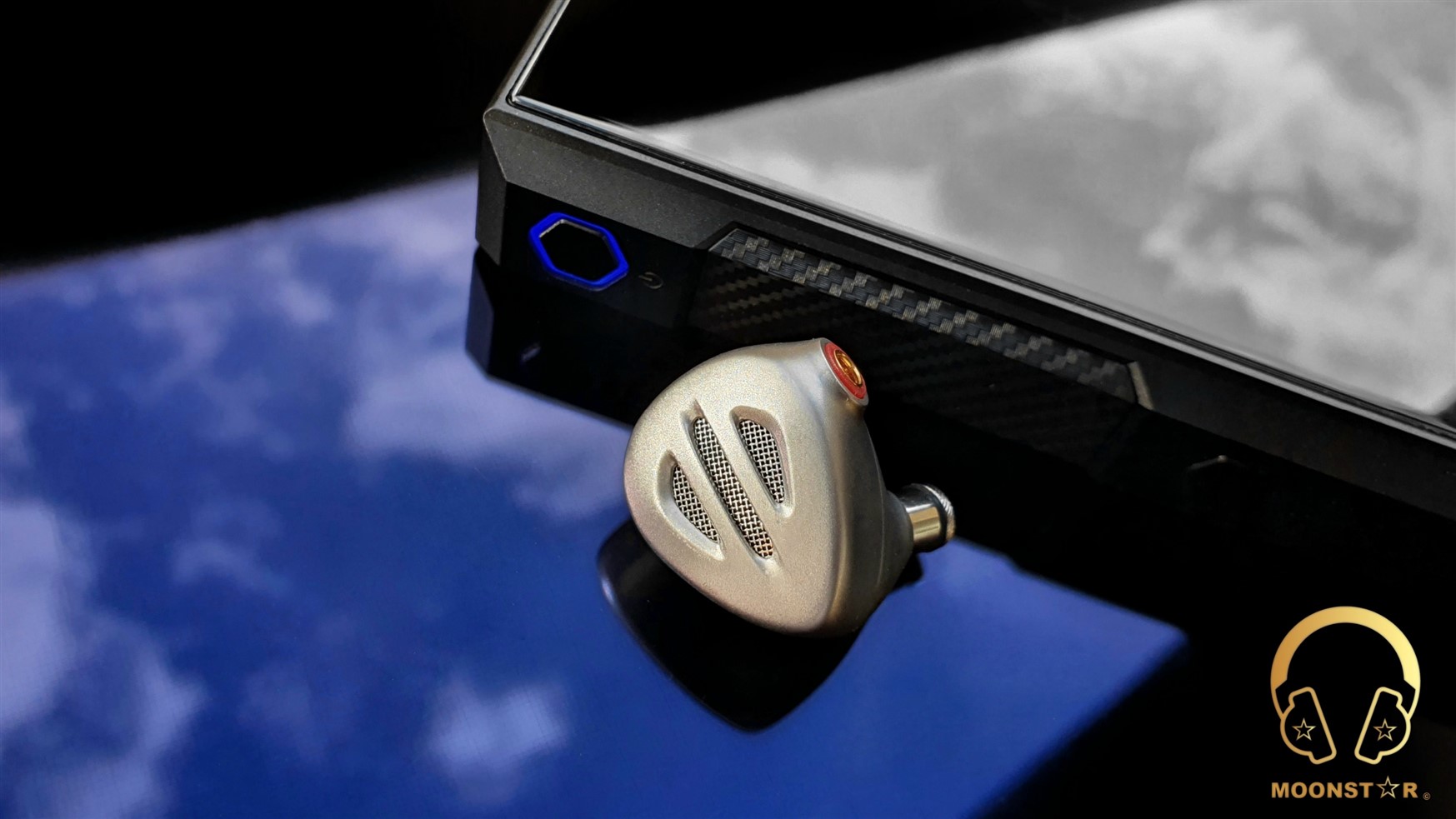
The Sound:
The FiiO M11 Plus shows a quite natural tonality with a hint of warmness that adds a nice sense of coloration to the overall presentation that is not overdone. It offers a pretty transparent and detailed sound profile with decent level of dynamics and resolution from the lows to up to the highs that show a good synergy with almost any earphone/headphone I have listen to it.
This review has been written after a burn-in period of about 150 hours. The sound impressions below are mainly based on my impressions over the with the 4.4mm Balanced Output of the device paired with IEM’s like the FiiO FH9 & FD7, Meze Rai Penta, Kinera URD and Moondrop Variations.
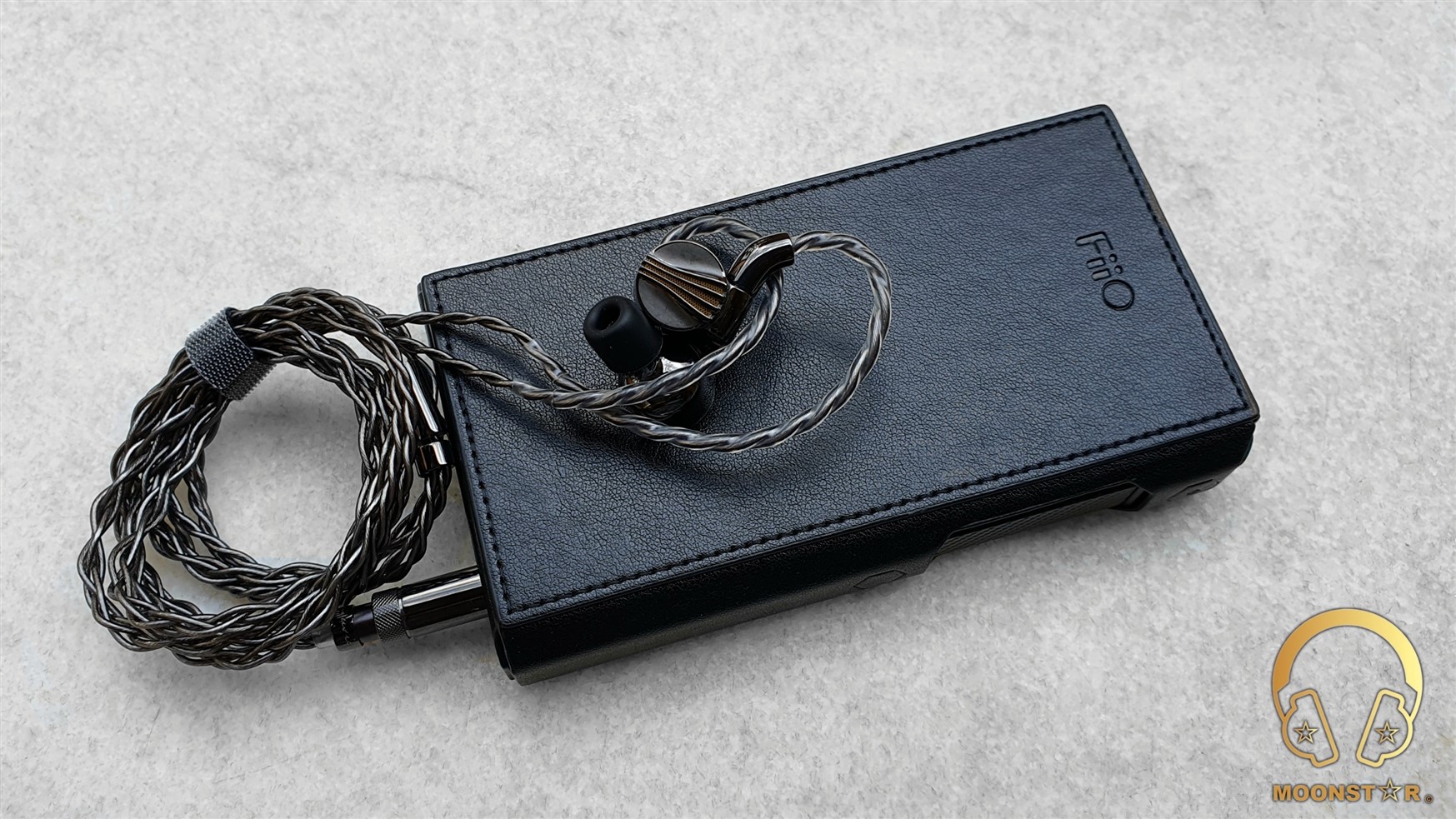
Bass:
The FiiO M11 Plus has a pretty neutral and dynamic subbass response that offers a good level of depth and emphasis when called upon. For example; songs such like Massive Attack’s “Angel”, Lorde’s “Royals” or Jo Blankenburg’s “Meraki” are show with an great sense of depth and rumble when I do pair the deice with In-Ear Monitors like the FiiO FH9 and FD7 or with Moondrop’s Variations. The subbass presentation stands out with its clean character and pretty fast decay and doesn’t show any remarkable negative conditions such like as muddiness or mixings.
The midbass region of the FiiO M11 Plus offers a fairly smooth, powerful and dynamic response. It is impactful yet controlled and doesn’t show any audible midbass hump or mixings when I do listen to midbass intensive tracks like Really Slow Motion “Deadwood” or Armin Van Buuren’s “Vini Vici”. The general midbass presentation of the M11 Plus can be described as transparent, clean and detailed, along with a decent sense of musicality that was especially audible when I have paired the device with IEM’s like the Kinera URD and Meze Audio Rai Penta.
Went it comes to the instrument presentation in this area, I can say that bass guitars, drums and trumpets are reproduced with an efficient grade of speed and intensity, while a contrabass is presented in a pretty crisp and detailed manner.
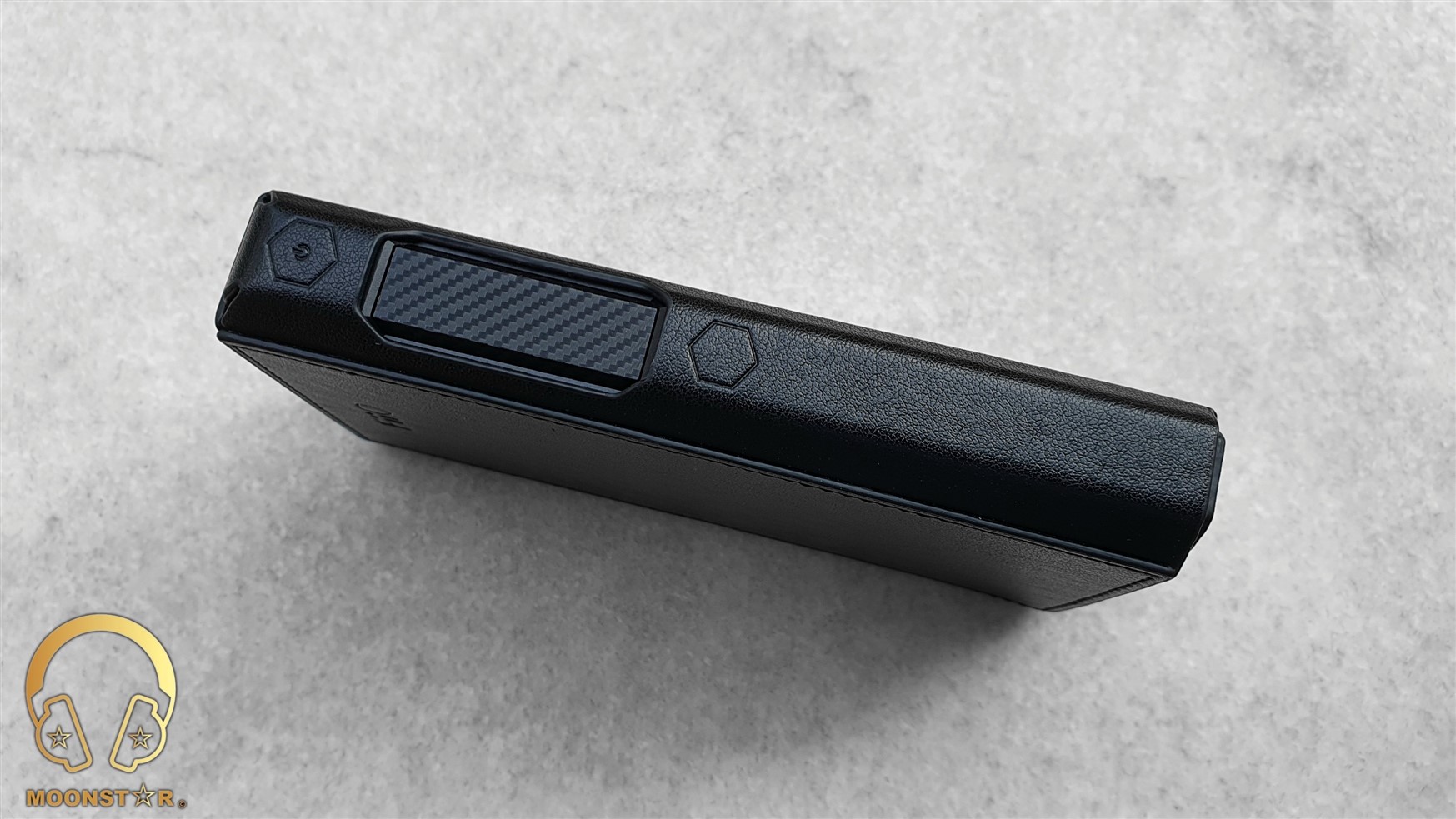
Midrange:
The FiiO M11 Plus shows a pretty transparent, airy and neutral midrange presentation with a slightly hint of warmness that comes from the lower midrange area that adds the overall presentation in this area a nice sense of coloration to cerate a more musical atmosphere.
Both female and male voices do sound pretty realistic and lively, while female voices are a bit more in the foreground due to the highly dynamic/energetic upper midrange character.
The lower midrange of the M11 Plus offers an efficient level of body and depth that is not overdone. Especially the clarity and resolution is remarkable, when I do listen to vocals or to instruments like cellos, violas or electro guitars. Male vocals from Barry White and Isaac Hayes to Sting and Eric Clapton are reproduced with a decent sense of depth and intensity.
The upper midrange is slightly more emphasized compared to the lower midrange register. This area offers a great sense of dynamism, an above average level resolution and extension, without to show any remarkable sibilance or over brightness when I do listen to female voices or to instruments such like clarinets, side flutes, pianos or violins. For example, female vocals such like Adel, Diana Krall, Edith Piaf or Sertap Erener are reproduced in a pretty clean, lively and detailed manner, especially when I pair it with In-Ear Monitors like the FiiO FH9, Moondrop Variatons or Meze Audio Rai Penta.
The overall midrange presentation of the FiiO M11 Plus can be described as highly versatile, natural and dynamic, which offers also a decent grade of transparency, airiness and resolution.
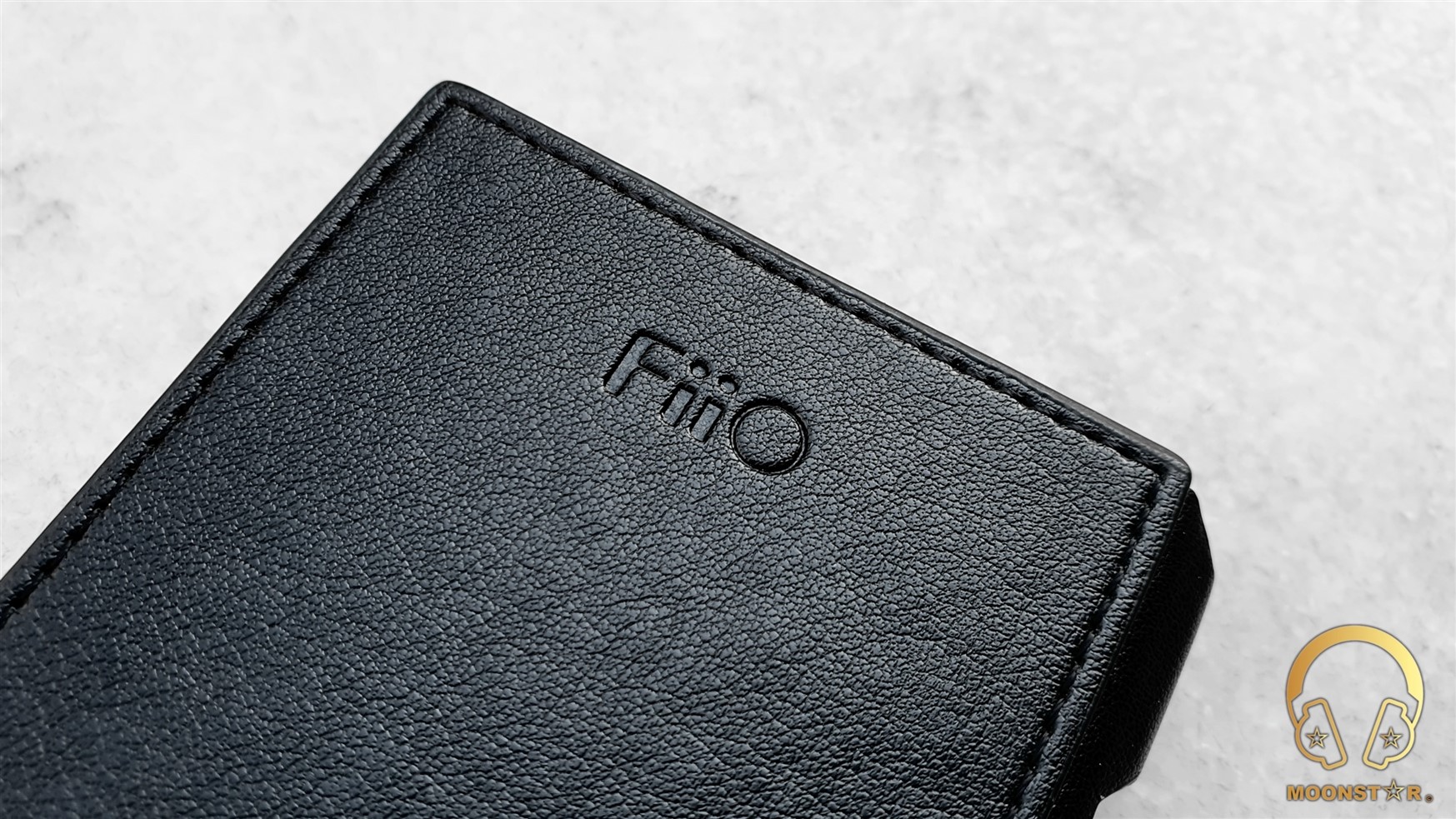
Treble:
The treble range of the FiiO M11 Plus shows a relative bright and energetic yet controlled response with good level of clarity and decent sense of airiness and sparkle. The general presentation of this region is quite detailed and crisp, while it is also pretty comfortable to listen to, especially hen I do pair it with IEM’s like the FiiO FD7, Kinera URD and Meze Rai Penta that do show a great synergy.
The transitions from the upper midrange that is pretty energetic, towards the lower treble region are in general controlled when instruments such like electro guitars are played with high level of distortion.
Instruments like Hi-hats do sound fairly pronounced and it was quite easy to count the hits, when I have listened to the FiiO FH9 or Moondrop Variations in complex passages. Crash and ride cymbals on the other hand are fast, pretty controlled and do are reproduced with a good grade extension. There is no interference when the piano is accelerating in Jazz songs; the hits are clear and pronounced.
The level of airiness in the treble range is pretty high, while the intensity decreases from the lower treble region towards the upper treble area in a fairly controlled manner. All in all, the overall treble performance of the FiiO M11 Plus fulfills my expatiations from a Digital Audio Player at this price level.

Soundstage & Imaging:
The FiiO M11 Plus offers a pretty realistic and expansive soundstage atmosphere, and a decent performance in terms of separation and positioning of instruments and vocals, thanks to the pretty wide and airy soundstage. The neutral air between the instruments and the clean/black background of the M11 Plus creates ideal conditions to listen to songs with lots of instruments and complex passages.
Some Comparisons:
FiiO M11 Plus versus FiiO M11 Pro:
The FiiO M11 Pro was one of my favorite DAP’s when it came out with its fast UI, good battery life, stabile connection and decent sound performance for its price. However, the new M11 Plus outperforms the M11 Pro in almost any area.
The M11 Plus offers a more mature sound profile that is more natural and versatile compared to those of the M11 Pro, which shows a higher grade of coloration. The M11 Plus is with no doubt superior in terms of technicality, overall resolution and naturalness.
The subbass region of the M11 Pro is slightly more pronounced, while it is missing the authority and clarity that the M11 Plus now offers. Both DAP’s are successful when it comes to the depth and impact of the midbass region. However, the M11 Plus sounds slightly natural and detailed in this area with better sense of layering and separation.
The FiiO M11 Pro has a slightly warmer midrange tonality that sounds also a bit more recessed in this area compared to the M11 Plus, which offers a better sense of transparency, airiness and dynamism, especially in the upper midrange register.
The lower midrange of the M11 Pro is lightly more highlighted but less transparent compared to the M11 Plus when I do listen to male vocals or to instruments like acoustic guitars or violas. The upper midrange of the M11 Plus is more pronounced, energetic and detail, which was pretty audible when I do listen to female voices or pianos, flutes or trumpets.
Both the FiiO M11 Pro and the M11 Plus do sound quite similar in the treble region. However, the M11 Plus has the upper hand in terms of micro detail retrieval, extension of instruments and general authority in this area, especially in the upper treble register.
The M11 Plus offers a more natural and out of the head soundstage atmosphere with better sense of airiness and separation. The soundstage of the M11 Plus shows a higher level of wideness, while the depth of both devices is fairly similar.
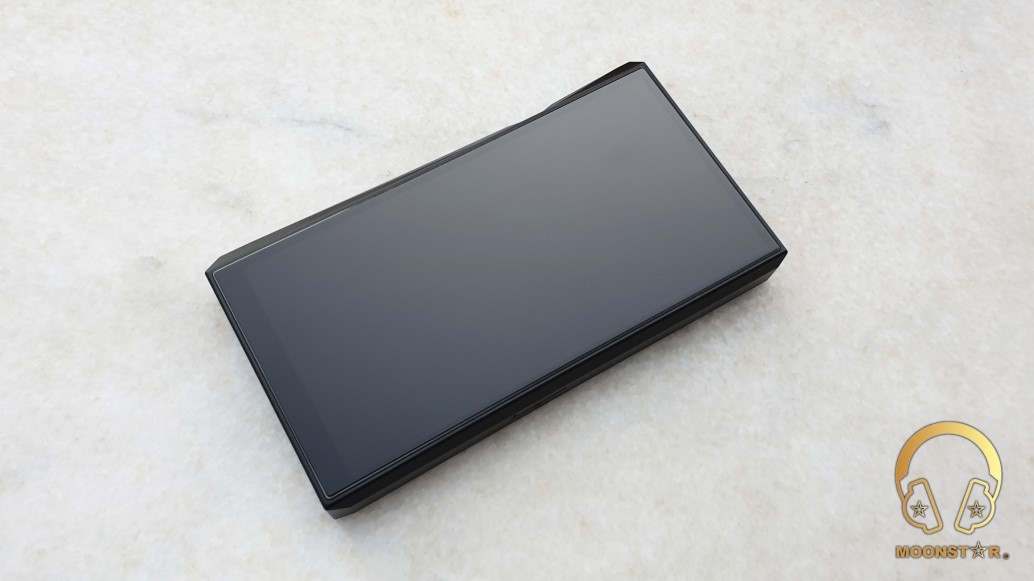
FiiO M11 Plus versus Sony WM1A (No Software Mode):
The Sony WM1A is another decent sounding Digital Audio Player that still very popular in the audiophile community especially after some thirty part software modes. It reflects Sony’s warmish and musical sound signature that is highly praised.
The WM1A has a warmer and smoother tonality and sounds in general a bit fuller compared too the M11 Plus that offers a more neutral tonality and energetic presentation towards the upper midrange region.
The subbass region of the WM1A is a tad deeper in response and shows a bit more rumble compared to the M11 Plu. The M11 Plus on the other hand stands out in terms of decay and clarity in this area, while both devices are pretty equal when it comes to the resolution. The midbass region of WM1A is slightly more highlighted and impactful, while it is missing the resolution and authority that the M11 Plus offers, when I do listen to strings like violas and bass guitars.
The midrange of the FiiO M11 Plus shows closer to neutral tonality and has a more transparent and airy presentation that shows a higher grade of dynamism towards the upper midrange register. The lower midrange of the Sony WM1A shows slightly more depth and body than those of the FiiO M11 Plus, which gives it the slightly edge when I do listen to male voices and instruments like trumpets, acoustic guitars or cellos. When it comes to the upper midrange, I can say that the M11 Plus is the DAP with the better level of dynamism, clarity and resolution, which was especially audible when I have listen to both female voices and instruments such like a piano, mandolin or side flute.
The treble range of both of devices shows an efficient level of clarity and resolution, while the FiiO M11 Plus has stands out in terms of overall airiness, extension and authority in this area especially when I do listen to soprano voices or to treble intensive instruments like cymbals, hi-hats or snare drums.
The soundstage of both devices is suitable for a precise placement and separation of instruments and vocals. The main difference is that the soundstage of the FiiO M11 Plus is slightly wider and a bit more airy compared to those of the Sony WM1A, while both are pretty similar in terms of soundstage depth.
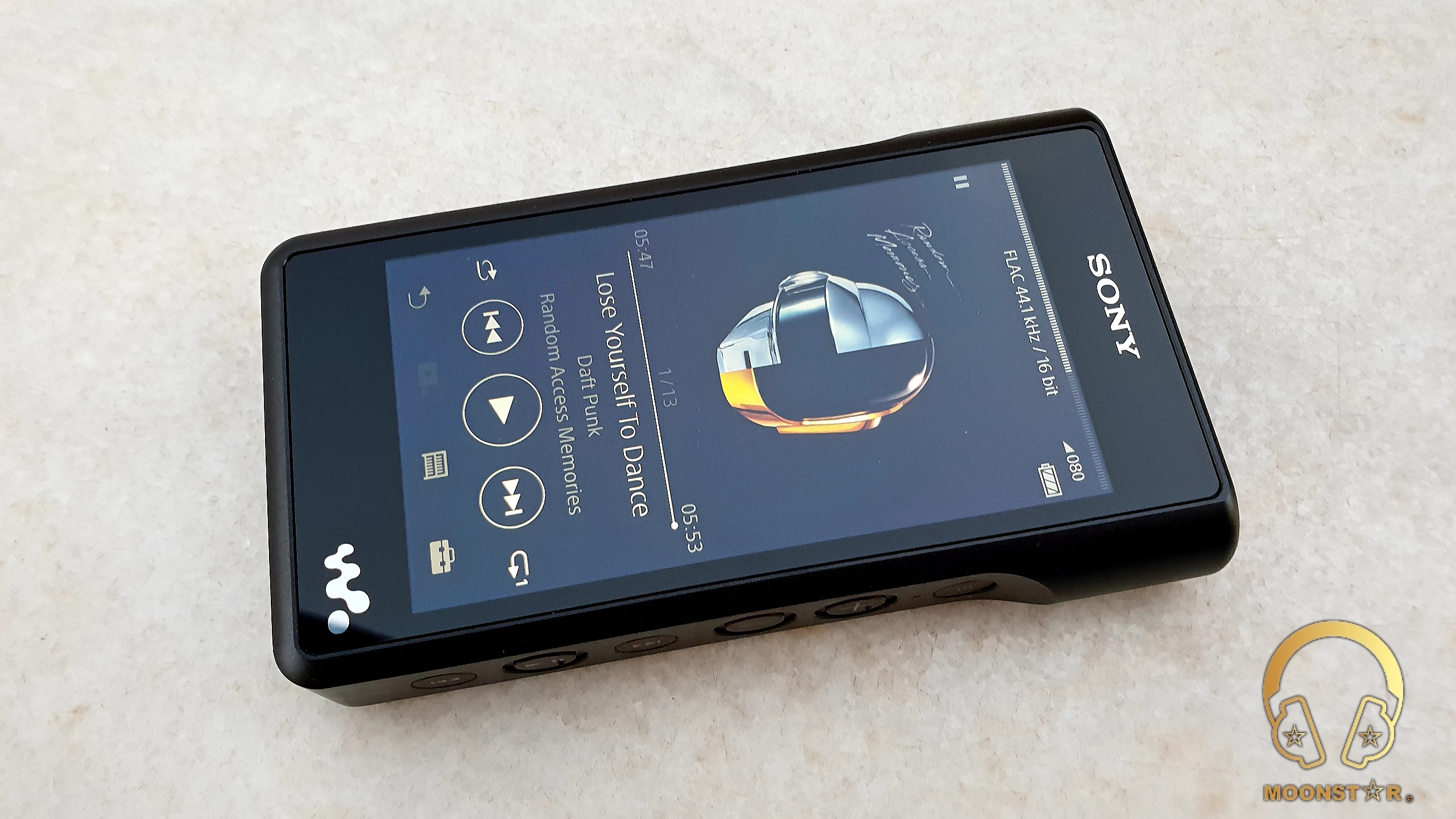
Conclusion:
The M11 Plus is definitely an upgrade over the highly successful M11 Pro that offers many improvements in terms of sound, software and hardware specs. What I really like about the sound of the M11 Plus is its versatile character that shows a decent sense of transparency, resolution and dynamics from the lows to up to the highs. Moreover, it has a very stylish industrial design and high build quality, while it offers tons of impressive features, such like a Dual ES9068AS DAC, a fast Snapdragon 660 Octa-Core SoC, a powerful THX AAA-78 Amp Module, an Intelligent Volume System, a gorgeous looking 5.5” bezel-less touch screen and almost any type of digital and analog in- & outputs, which should be in a modern device at this level.
Thank you for the Read!
Moonstar
@glennkresge Thank you!
Apom
Awesome, thanks. Have they fixed the issue to enable Apple Music to work on this model, unlike the M11 Pro?
Moonstar
100+ Head-Fier
Pros: Nice balanced sound signature,
Good detail level for the price,
Comfortable fit,
Build quality,
Good detail level for the price,
Comfortable fit,
Build quality,
Cons: No detectable cable
Lypertek MEVI; Good Sound for Small Price
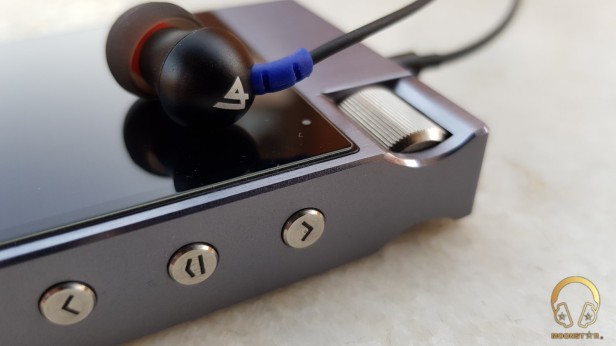
1. Disclaimer:
The Lypertek Mevi was provided to me by the Lypertek via Penon Audio for free of charge as a review sample. I am not affiliated with Lypertek or Penon Audiobeyond this review and these words reflect my true, unaltered, opinions about the product.
2. Introduction:
Lypertek is a relative new audio gear company located in China. The Lypertek Mevi is the first In-Ear Monitor (IEM) of the company in the Hi-Fi audio market. Lypertek decided to join in to the market with a 7mm single dynamic driver IEM.
3. Price:
The MSRP price for the Lypertek Mevi is 29.90 USD.
Product Page : https://www.lypertek.com/mevi
Purchase Link : https://penonaudio.com/lypertek-mevi.html
4. Package and Accessories:
The Lypertek Mevi comes in a very small white card box.
This box includes the following contents;

1 x Lypertek Mevi
1 x Cable clip
1 x Hard Carrying Case
1 pair per size S, M, L Silicone Tips
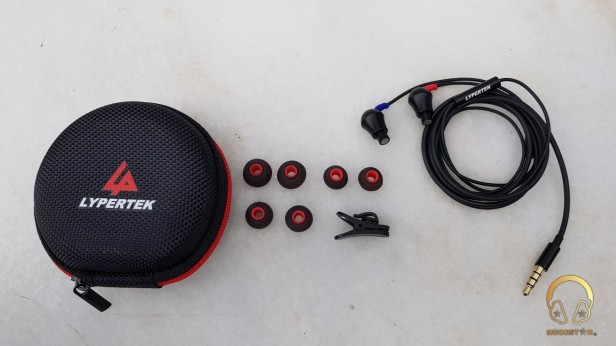
The hard case that is included in the box is small but well made. They are 3 pairs of silicone ear tips that are quite soft and comfortable. There is also a shirt clip that is a nice addition.
5. Specifications:
6. Design, Fit and Build Quality:
The Lypertek Mevi has very small and well crafted aluminum housing available in black & red colors. The housing of the Mevi has a compact design, is lightweight and comfortable to wear. There is a Lypertek logo on the back of the monitor housing and two vents on the bottom. The strain relief is red color for the right and blue for the left monitor.
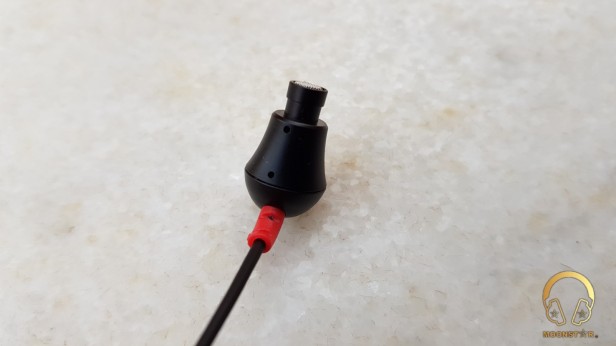
The isolation in loud environments is mediocre, but in an acceptable level for such a small In-Ear Monitor.
The TPU-coated cable is not changeable but looks sturdy. It has a straight 3.5mm headphone jack with built-in microphone that has several functions, which are shown below.
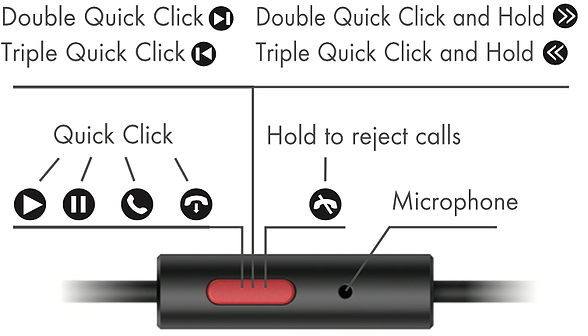
The clarity of the voice transmission is above average. The Y Splitter is made of metal but there is no chin slider.
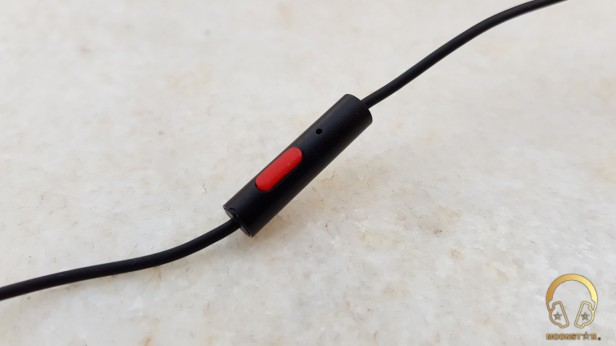 –
–
7. Albums & tracks used for this review:
8. Sources used for this review:
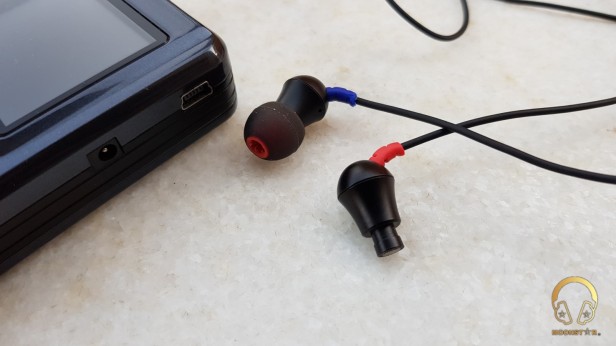
9. The Sound:
This review is written after a burn-in process of apprx. 100-110 hours and I have used the stock silicone ear tips.
Please note that this is a entry level IEM and all my comments about the sound quality are in consideration of this price range.
a. Tonality:
The Lypertek Mevi is an IEM with a quite neutral tonality, a linear / flat bass response and a treble structure that expands well and doesn’t bother.
b. Frequencies:
Lypertek Mevi has a well balanced and tight bass reproduction with a relative fast response.
The Lypertek Mevi’s sub-bass depth is at average levels and can’t reach very deep. It doesn’t have the bass rumble type that a basshead would love.
But some good things happening; the sub-bass control of the Mevi is in a very good level for such a budget IEM. The bass response is accurate, fast and natural, which is a good benefit for genres with real instrumental like classic or acoustic tracks.
The mid-bass of the Lypertek Mevi are very controlled and don’t mess into the mids. This makes the Lypertek Mevi to a good choice for metal music that need speed and control for drum performances.
The midrange of the Lypertek Mevi has a flat / smooth character and neutral tonality. The midrange has the same positioning as the other frequencies.
The Lypertek Mevi has also a clean, crisp and energetic midrange, which is a rarely found feature, is this price category.
Both female and male vocals have the same success with a clean and transparent presentation. I did not observe any overshadowing of the midrange, that is quite spacious, airy and very pleasant to listen to.
The midrange doesn’t sound thin or very full, there is a nice balance with a pretty musical presentation.
The Lypertek Mevi doesn’t sound dry or cold; On the contrary, it has an alive, dynamic and energetic presentation.
The Lypertek Mevi performs very well with instruments such as acoustic guitar, percussion instruments and viola. The instrument representation is pretty good in terms of the nature, clarity and separation of each note.
The Lypertek Mevi has a treble texture that extends well for its price, without to be sibilant or harsh. Instruments like cymbals, bells, etc. don’t sounding metallic or unnatural and the overall treble presentation is well controlled.
The upper treble range is missing some definition, but we should note that this is an IEM under 30 USD.
c. Soundstage:
The Lypertek Mevi has an average soundstage presentation that is not very wide, but vocal positioning and instrument placements sounding quite natural. There is nothing special about the soundstage depth, but we should remember that this is a entry level IEM.
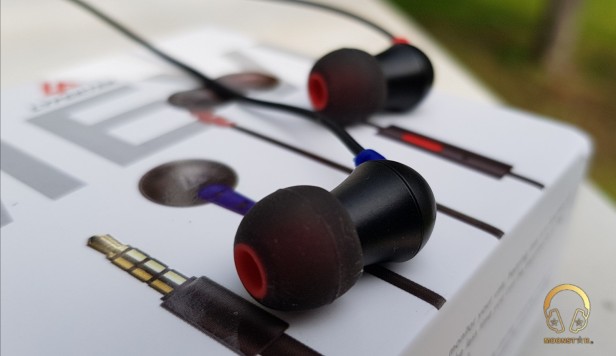
10. Comparison:
Vs. Dunu DN12:
Dn12 has more bass quantities and sub-bass depth than the Lypertek Mevi. But bass performance of the Dunu DN12 is behind the Mevi in terms of speed, tightness and balance
Dunu DN12 has a more forward midrange presentation. The midrange of the Lypertek Mevi on the other hand, sounds more natural and has relative flat presentation.
The Lypertek Mavi sound transparent and smooth compared to the grainier and overshadowed sounding Dunu DN12.
The Lypertek Mevi has also the better performance for instrument representation.
The midrange of the Dunu DN12 is loosing the control very faster in higher volume levels and starts to shine, that makes the sound uncomfortable, while the Lypertek Mevi has the better control in same volume levels.
The Lypertek Mevi has a more forward treble presentation with a better extension and overall resolution. The treble presentation of the DN12 is not fast enough for genres that need a fast treble response, such as metal music etc.
The Lypertek Mevi has the wider and deeper soundstage presentation. The difference is not marginal but noticeable. There is also more air and space between instruments compared to the presentation of the DN12.
Vs. Xiaomi Hybrid Pro HD
The first noticeable difference is the lower frequency region. The Hybrid Pro HD has more sub-bass and bass quantity then the Mevi. But the bass of the Mevi is tighter and has the better overall control. The bass speed of both IEM’s is nearly the same but the Mevi has a touch more micro detail.
The midrange of the Hybrid Pro HD sounds more recessed compared to the more balanced tuned Lypertek Mevi. The Hybrid Pro HD sounds smoother and brighter in the midrange, but the Lypertek Mevi has more the upper hand for definition.
The Hybrid Pro HD sounds a bit brighter in the treble range and is more prone to sibilance then Lypertek Mevi, especially with instrument like cymbals or bells.
The Lypertek Mevi sounds more balanced at the upper treble register and has additional control, but less micro detail in comparison to the Hybrid Pro HD.
Both IEMs have nearly the same soundstage performance but the Hybrid Pro HD has a little more depth, while both have nearly identical soundstage wideness.
11. Conclusion:
The Lypertek Mevi is a nice sounding entry level IEM with a quite balanced sound signature, a pretty good fit that is packed in small but solid housing.
12. Summary (plus and minus):
+ Nice balanced sound signature
+ Good detail level for the price
+ Comfortable fit
+ Build quality
– No detectable cable
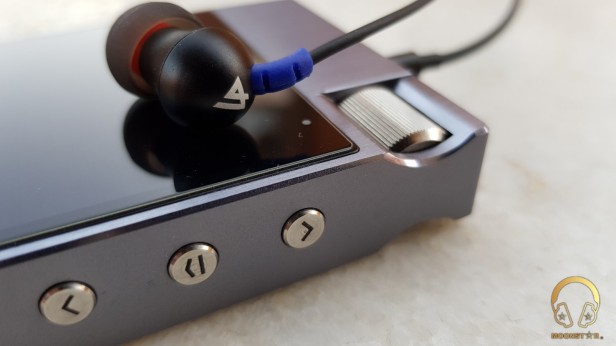
This review was originally posted on my Review Blog "Moonstar Reviews" :
www.moonstarreviews.net

1. Disclaimer:
The Lypertek Mevi was provided to me by the Lypertek via Penon Audio for free of charge as a review sample. I am not affiliated with Lypertek or Penon Audiobeyond this review and these words reflect my true, unaltered, opinions about the product.
2. Introduction:
Lypertek is a relative new audio gear company located in China. The Lypertek Mevi is the first In-Ear Monitor (IEM) of the company in the Hi-Fi audio market. Lypertek decided to join in to the market with a 7mm single dynamic driver IEM.
3. Price:
The MSRP price for the Lypertek Mevi is 29.90 USD.
Product Page : https://www.lypertek.com/mevi
Purchase Link : https://penonaudio.com/lypertek-mevi.html
4. Package and Accessories:
The Lypertek Mevi comes in a very small white card box.
This box includes the following contents;

1 x Lypertek Mevi
1 x Cable clip
1 x Hard Carrying Case
1 pair per size S, M, L Silicone Tips

The hard case that is included in the box is small but well made. They are 3 pairs of silicone ear tips that are quite soft and comfortable. There is also a shirt clip that is a nice addition.
5. Specifications:
- Driver : 7.0mm Dynamic
- Impedance : 32 Ohm
- Frequency Response : 20~20KHz
- Sensitivity : 95dB
- Plug : 3.5mm Stereo
- Cable : 1.2m
6. Design, Fit and Build Quality:
The Lypertek Mevi has very small and well crafted aluminum housing available in black & red colors. The housing of the Mevi has a compact design, is lightweight and comfortable to wear. There is a Lypertek logo on the back of the monitor housing and two vents on the bottom. The strain relief is red color for the right and blue for the left monitor.

The isolation in loud environments is mediocre, but in an acceptable level for such a small In-Ear Monitor.
The TPU-coated cable is not changeable but looks sturdy. It has a straight 3.5mm headphone jack with built-in microphone that has several functions, which are shown below.

The clarity of the voice transmission is above average. The Y Splitter is made of metal but there is no chin slider.

7. Albums & tracks used for this review:
- Opeth – Damnation (Tidal Hi-Fi)
- Megadeth – Sweating Bullets (Flac 16bit/44kHz)
- Saskia Bruin – The Look of Love (DSF)
- George Michael – Older Album (Apple Music)
- LP (Laura Pergolizzi) – Lost On You “Live at Harvard and Stone” (Tidal Hi-Fi)
- Dire Straits – Money For Nothing (DSF)
- Mile Davis – Kind of Blue Album (Tidal Hi-fi)
- Emmanuel Pahud (Claude Debussy) – Syrinx (Apple Music)
- Aretha Franklin – I Say a Little Prayer (Apple Music)
- Diana Krall – So Wonderful (DSF)
- Otto Liebert & Luna Negra – Up Close “Album” (DSF) – Binaural Recording
- Alboran Trio’s – Cinque Lunghissimi Minuti (Tidal Hi-Fi)
- Daft Punk – Get Lucky (Flac 24bit/192kHz)
- Michael Jackson – Billie Jean (DSF)
8. Sources used for this review:
- IEM : Lypertek Mevi, Dunu DN12, Xiaomi Hybrid Pro HD
- DAP/DAC : Cayin N5II, Aune M2Pro, Chord Mojo, Zishan Z2

9. The Sound:
This review is written after a burn-in process of apprx. 100-110 hours and I have used the stock silicone ear tips.
Please note that this is a entry level IEM and all my comments about the sound quality are in consideration of this price range.
a. Tonality:
The Lypertek Mevi is an IEM with a quite neutral tonality, a linear / flat bass response and a treble structure that expands well and doesn’t bother.
b. Frequencies:
Lypertek Mevi has a well balanced and tight bass reproduction with a relative fast response.
The Lypertek Mevi’s sub-bass depth is at average levels and can’t reach very deep. It doesn’t have the bass rumble type that a basshead would love.
But some good things happening; the sub-bass control of the Mevi is in a very good level for such a budget IEM. The bass response is accurate, fast and natural, which is a good benefit for genres with real instrumental like classic or acoustic tracks.
The mid-bass of the Lypertek Mevi are very controlled and don’t mess into the mids. This makes the Lypertek Mevi to a good choice for metal music that need speed and control for drum performances.
The midrange of the Lypertek Mevi has a flat / smooth character and neutral tonality. The midrange has the same positioning as the other frequencies.
The Lypertek Mevi has also a clean, crisp and energetic midrange, which is a rarely found feature, is this price category.
Both female and male vocals have the same success with a clean and transparent presentation. I did not observe any overshadowing of the midrange, that is quite spacious, airy and very pleasant to listen to.
The midrange doesn’t sound thin or very full, there is a nice balance with a pretty musical presentation.
The Lypertek Mevi doesn’t sound dry or cold; On the contrary, it has an alive, dynamic and energetic presentation.
The Lypertek Mevi performs very well with instruments such as acoustic guitar, percussion instruments and viola. The instrument representation is pretty good in terms of the nature, clarity and separation of each note.
The Lypertek Mevi has a treble texture that extends well for its price, without to be sibilant or harsh. Instruments like cymbals, bells, etc. don’t sounding metallic or unnatural and the overall treble presentation is well controlled.
The upper treble range is missing some definition, but we should note that this is an IEM under 30 USD.
c. Soundstage:
The Lypertek Mevi has an average soundstage presentation that is not very wide, but vocal positioning and instrument placements sounding quite natural. There is nothing special about the soundstage depth, but we should remember that this is a entry level IEM.

10. Comparison:
Vs. Dunu DN12:
Dn12 has more bass quantities and sub-bass depth than the Lypertek Mevi. But bass performance of the Dunu DN12 is behind the Mevi in terms of speed, tightness and balance
Dunu DN12 has a more forward midrange presentation. The midrange of the Lypertek Mevi on the other hand, sounds more natural and has relative flat presentation.
The Lypertek Mavi sound transparent and smooth compared to the grainier and overshadowed sounding Dunu DN12.
The Lypertek Mevi has also the better performance for instrument representation.
The midrange of the Dunu DN12 is loosing the control very faster in higher volume levels and starts to shine, that makes the sound uncomfortable, while the Lypertek Mevi has the better control in same volume levels.
The Lypertek Mevi has a more forward treble presentation with a better extension and overall resolution. The treble presentation of the DN12 is not fast enough for genres that need a fast treble response, such as metal music etc.
The Lypertek Mevi has the wider and deeper soundstage presentation. The difference is not marginal but noticeable. There is also more air and space between instruments compared to the presentation of the DN12.
Vs. Xiaomi Hybrid Pro HD
The first noticeable difference is the lower frequency region. The Hybrid Pro HD has more sub-bass and bass quantity then the Mevi. But the bass of the Mevi is tighter and has the better overall control. The bass speed of both IEM’s is nearly the same but the Mevi has a touch more micro detail.
The midrange of the Hybrid Pro HD sounds more recessed compared to the more balanced tuned Lypertek Mevi. The Hybrid Pro HD sounds smoother and brighter in the midrange, but the Lypertek Mevi has more the upper hand for definition.
The Hybrid Pro HD sounds a bit brighter in the treble range and is more prone to sibilance then Lypertek Mevi, especially with instrument like cymbals or bells.
The Lypertek Mevi sounds more balanced at the upper treble register and has additional control, but less micro detail in comparison to the Hybrid Pro HD.
Both IEMs have nearly the same soundstage performance but the Hybrid Pro HD has a little more depth, while both have nearly identical soundstage wideness.
11. Conclusion:
The Lypertek Mevi is a nice sounding entry level IEM with a quite balanced sound signature, a pretty good fit that is packed in small but solid housing.
12. Summary (plus and minus):
+ Nice balanced sound signature
+ Good detail level for the price
+ Comfortable fit
+ Build quality
– No detectable cable

This review was originally posted on my Review Blog "Moonstar Reviews" :
www.moonstarreviews.net























